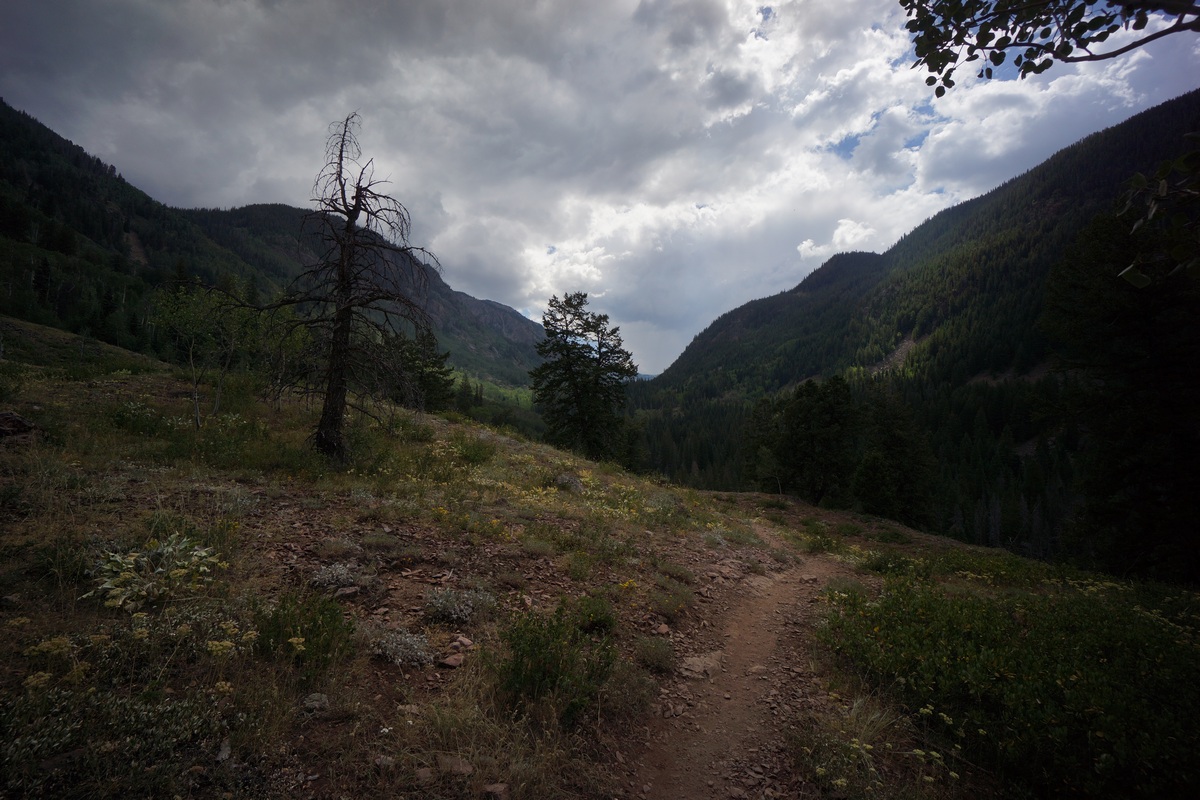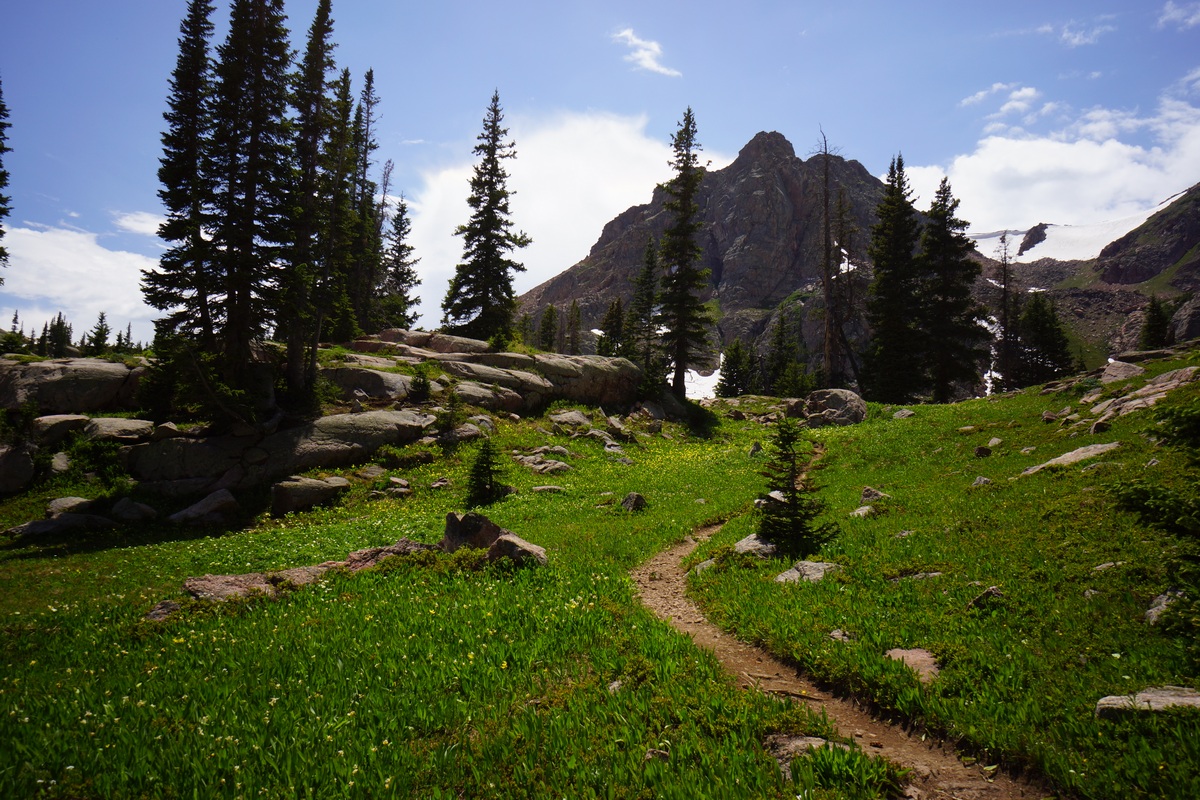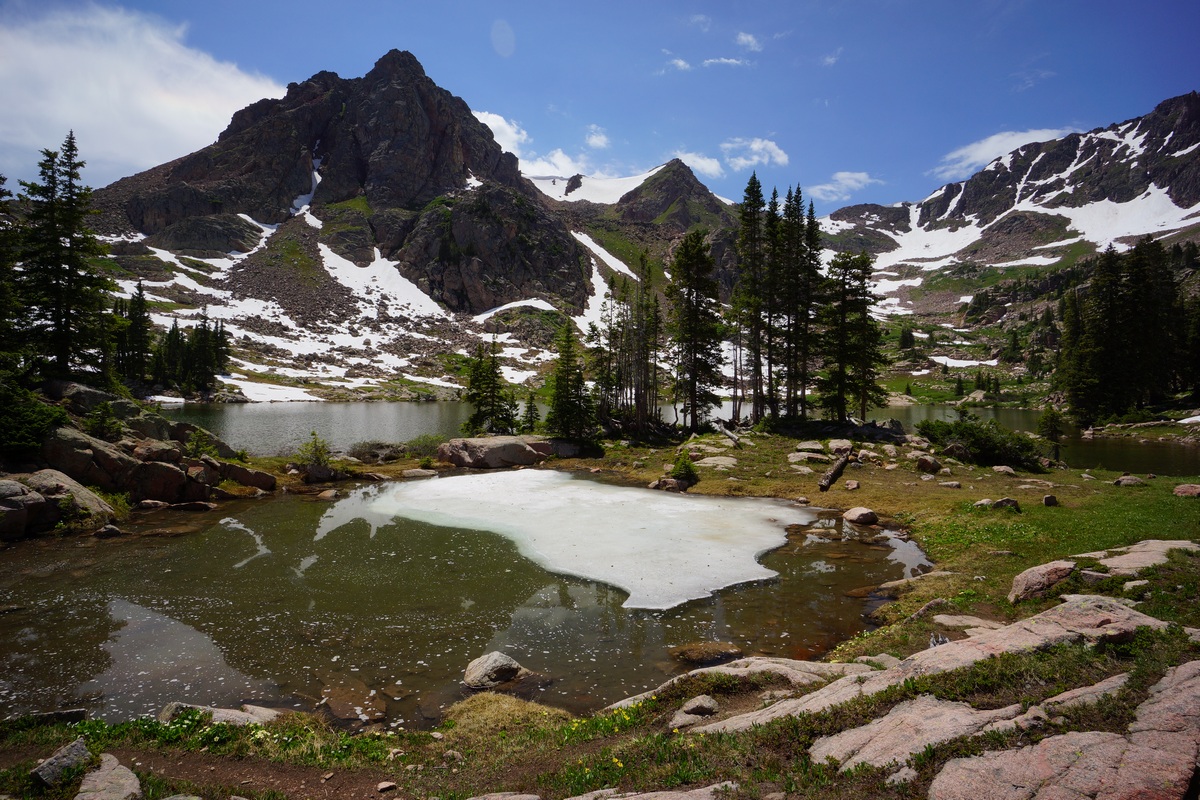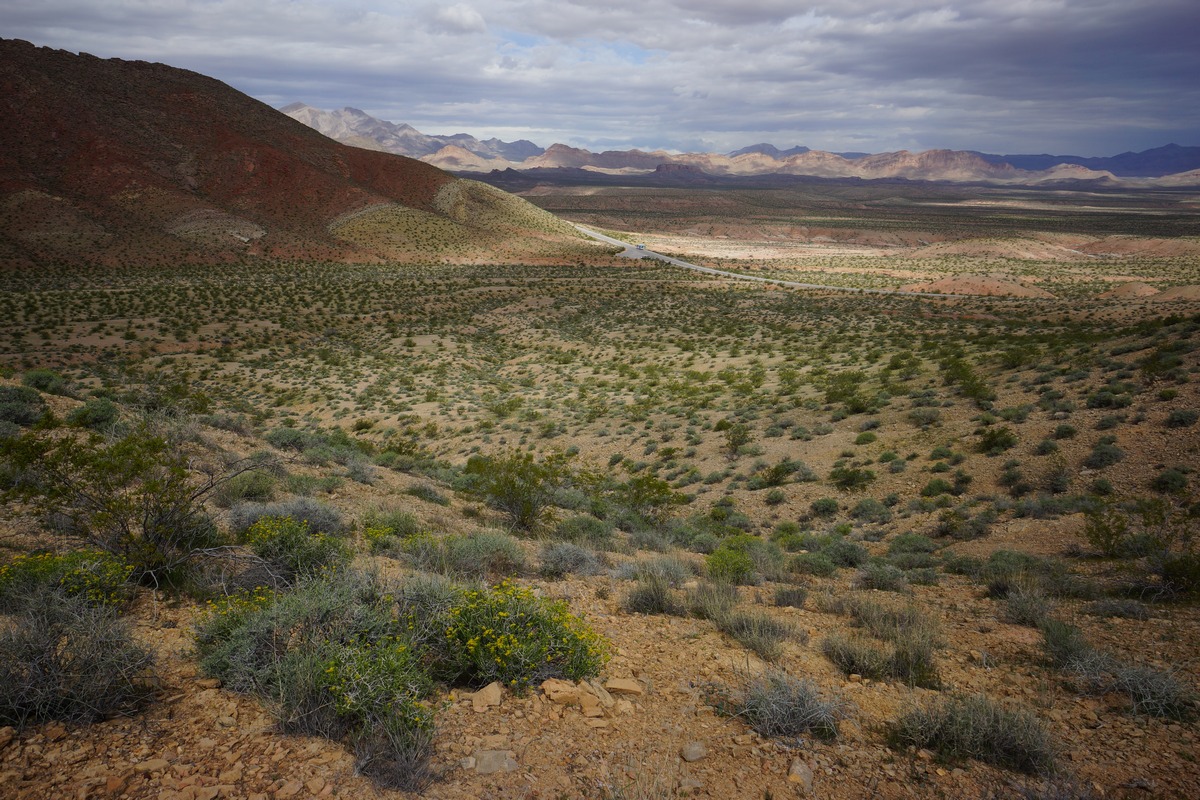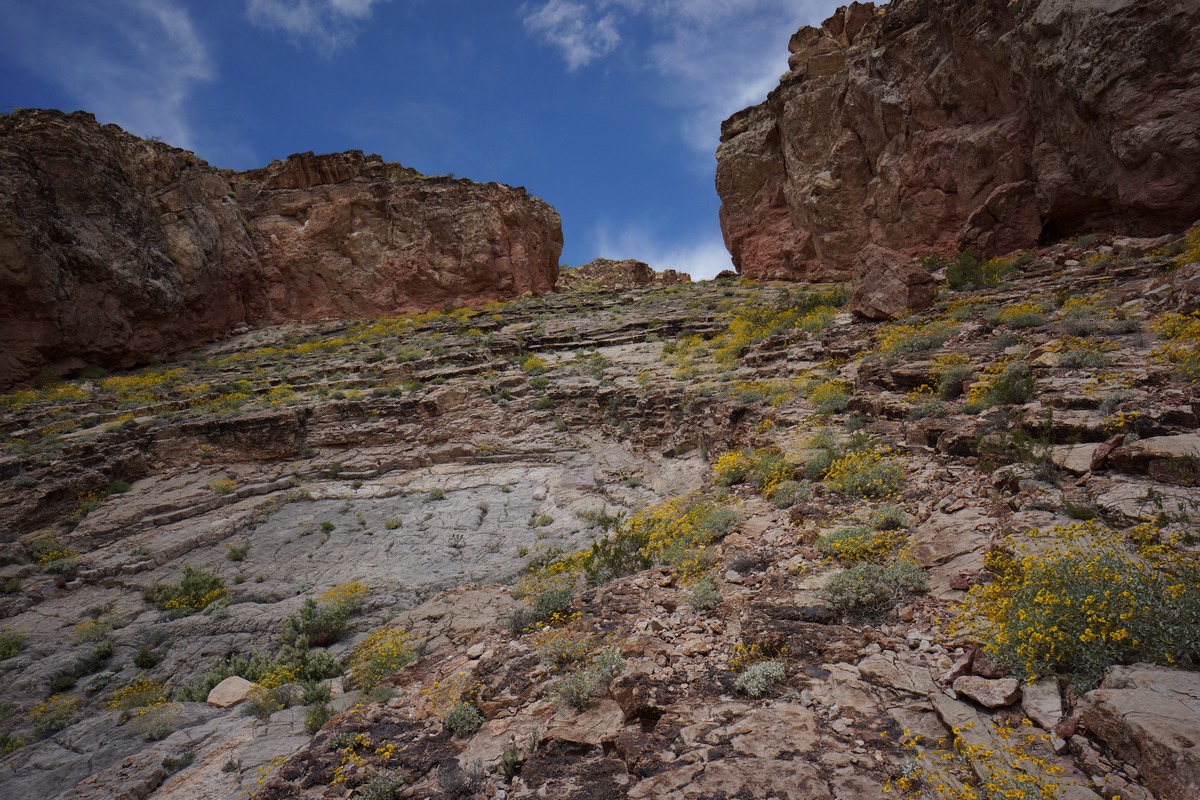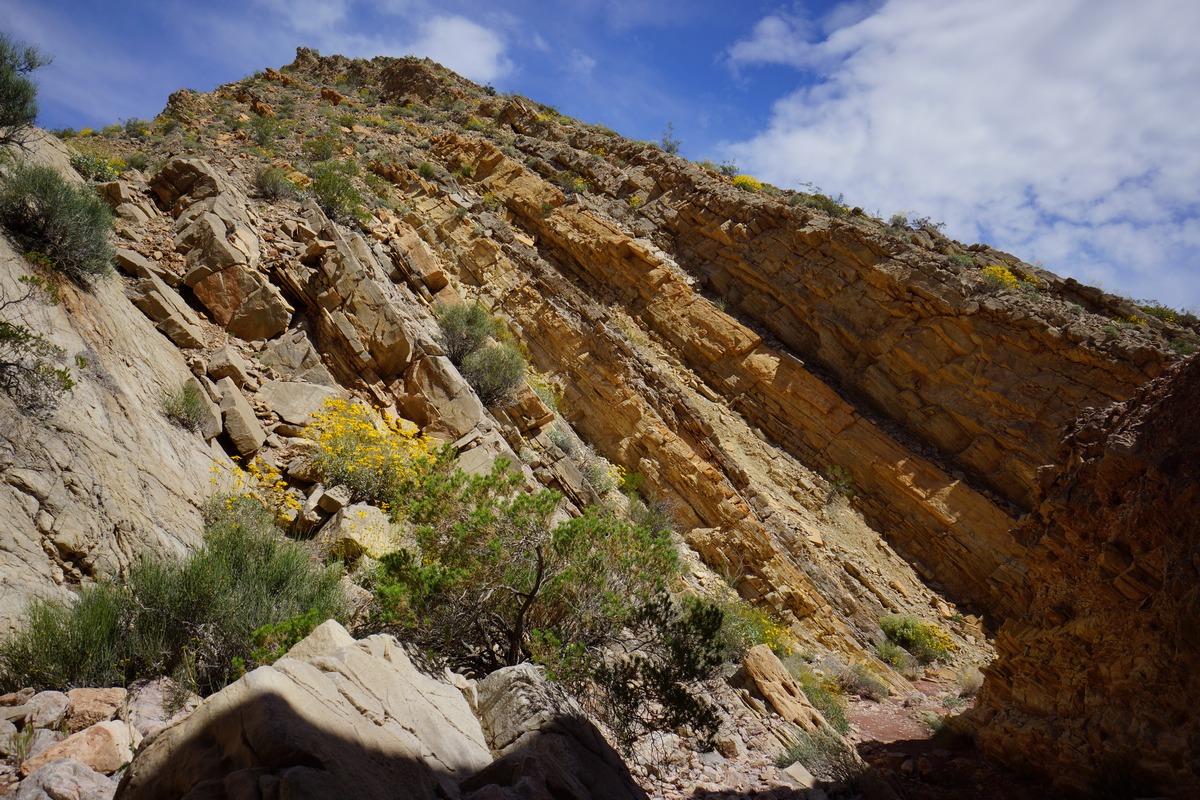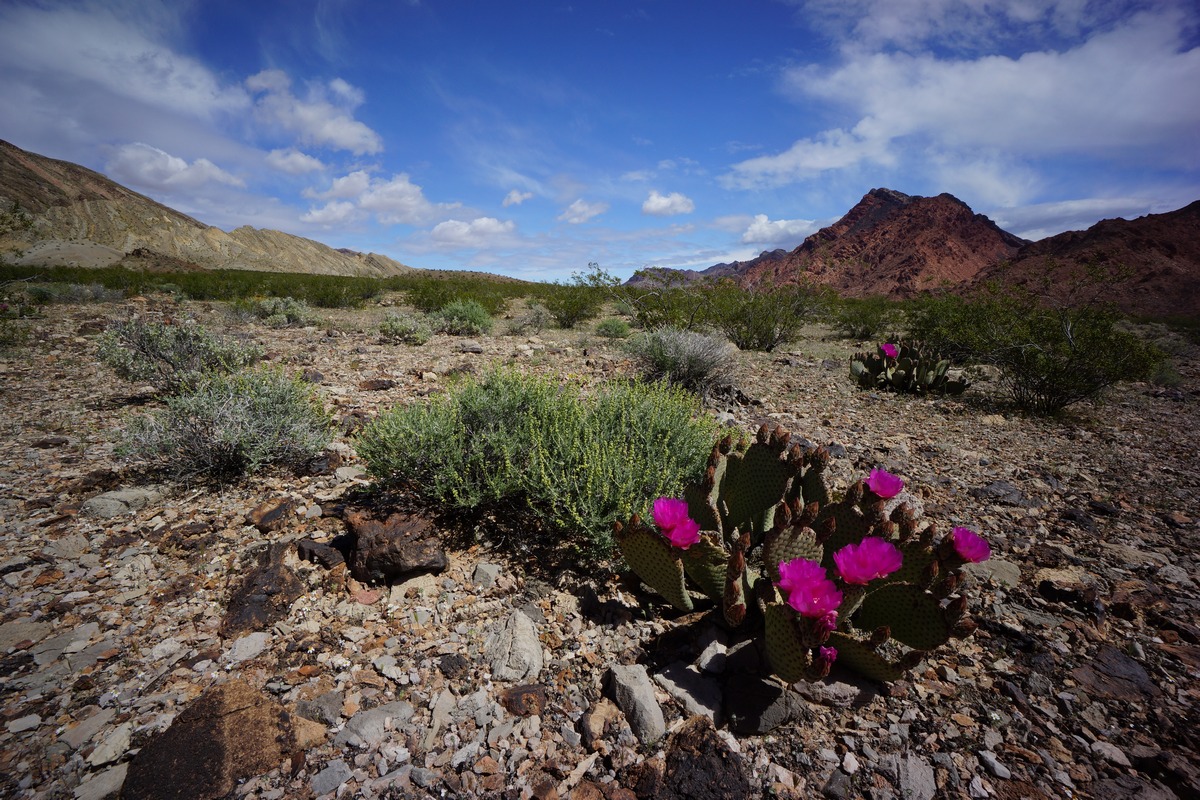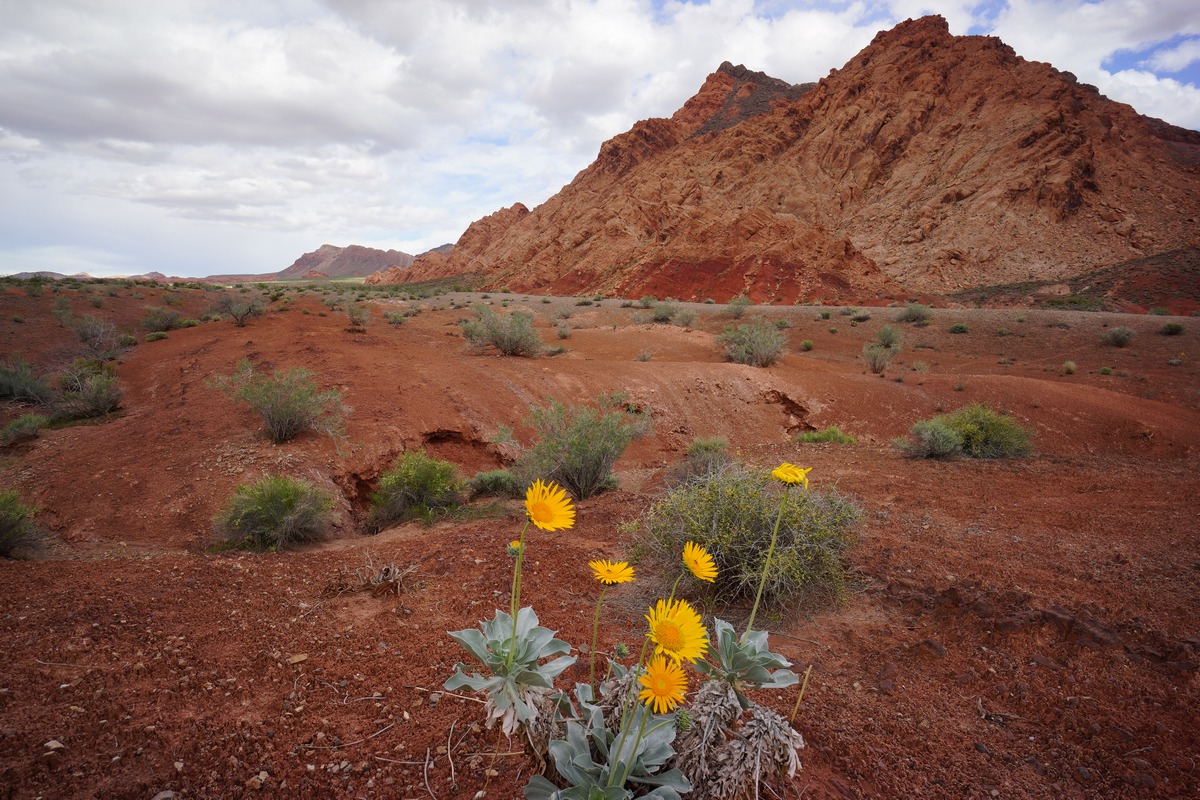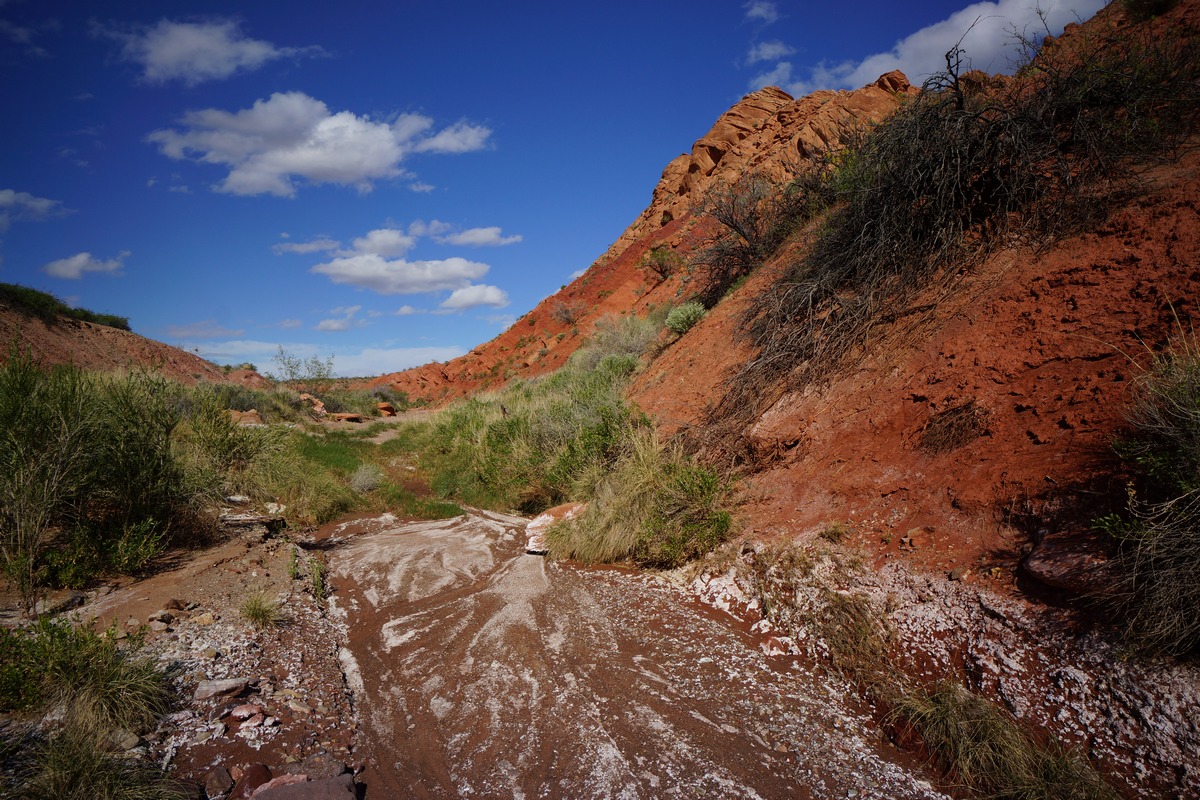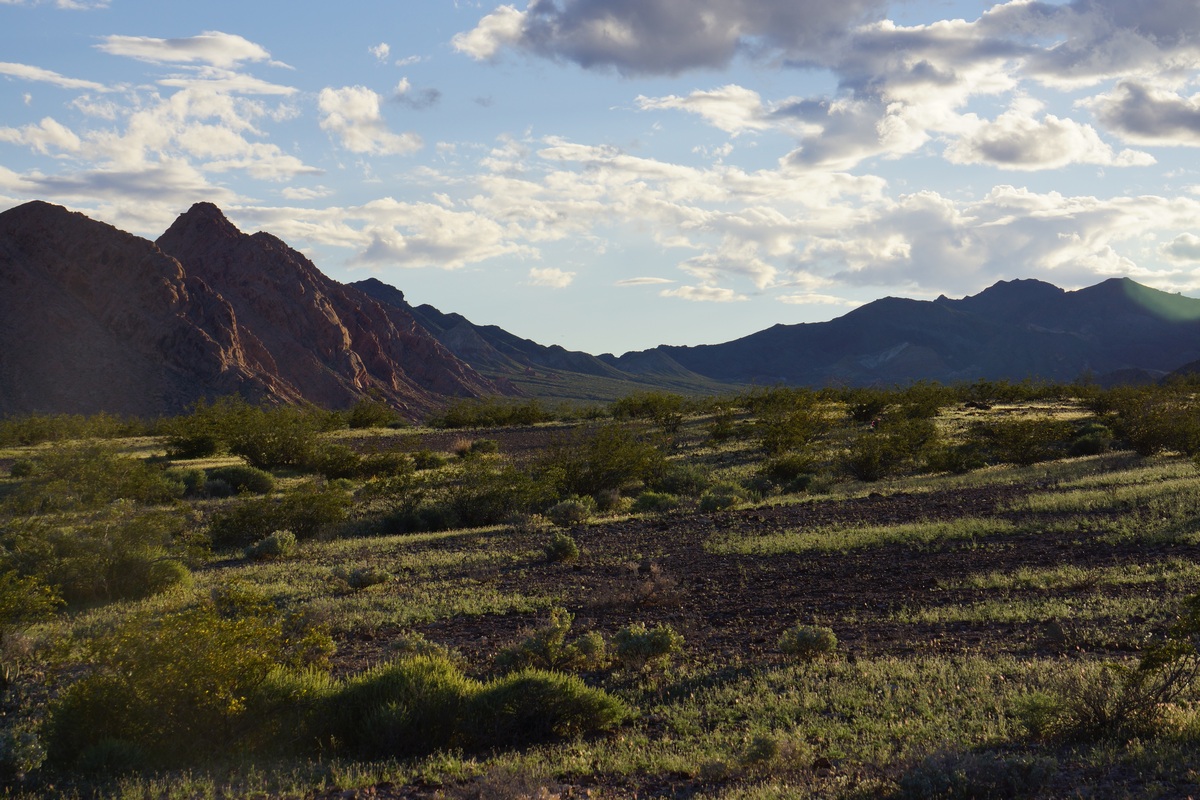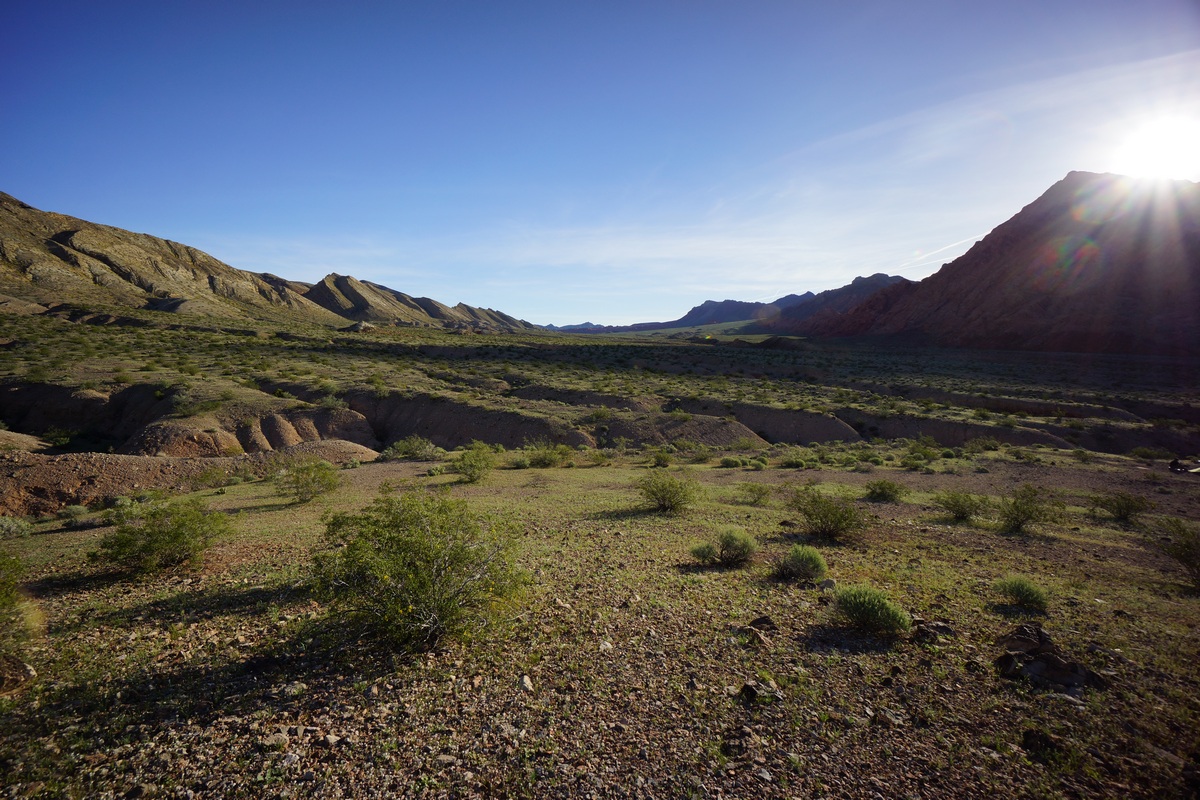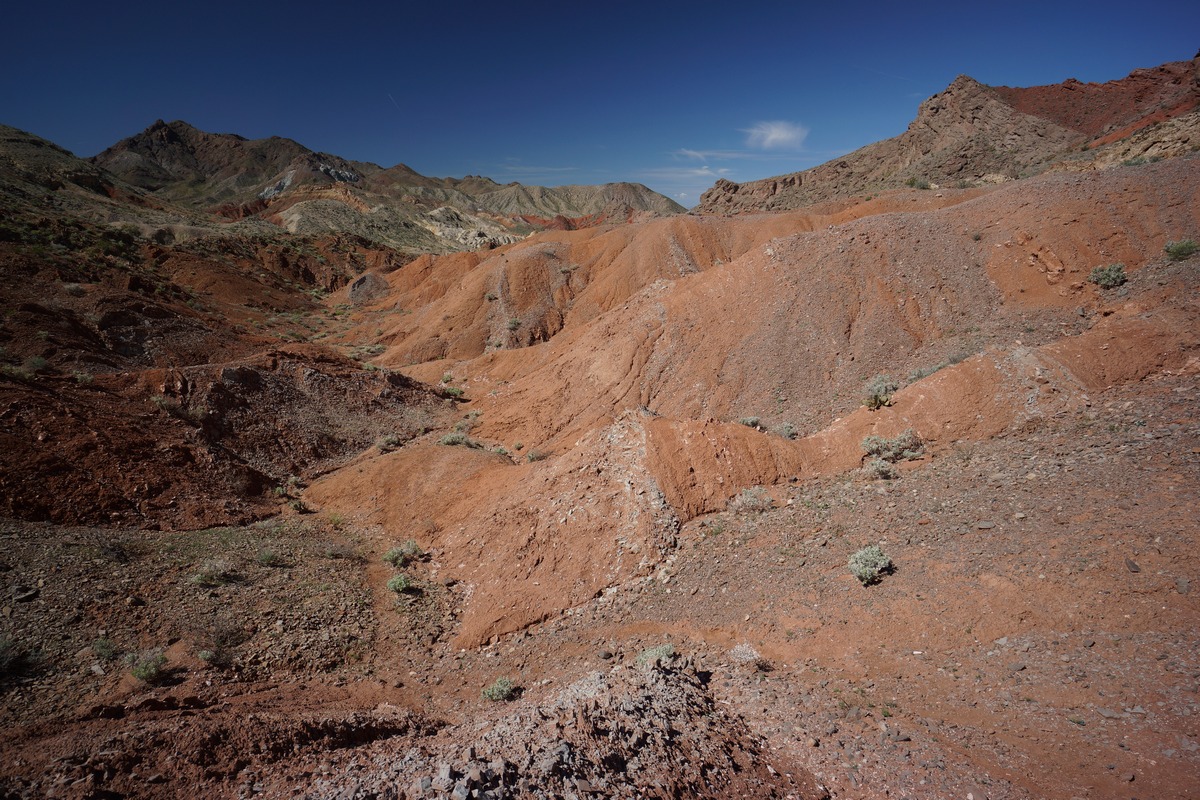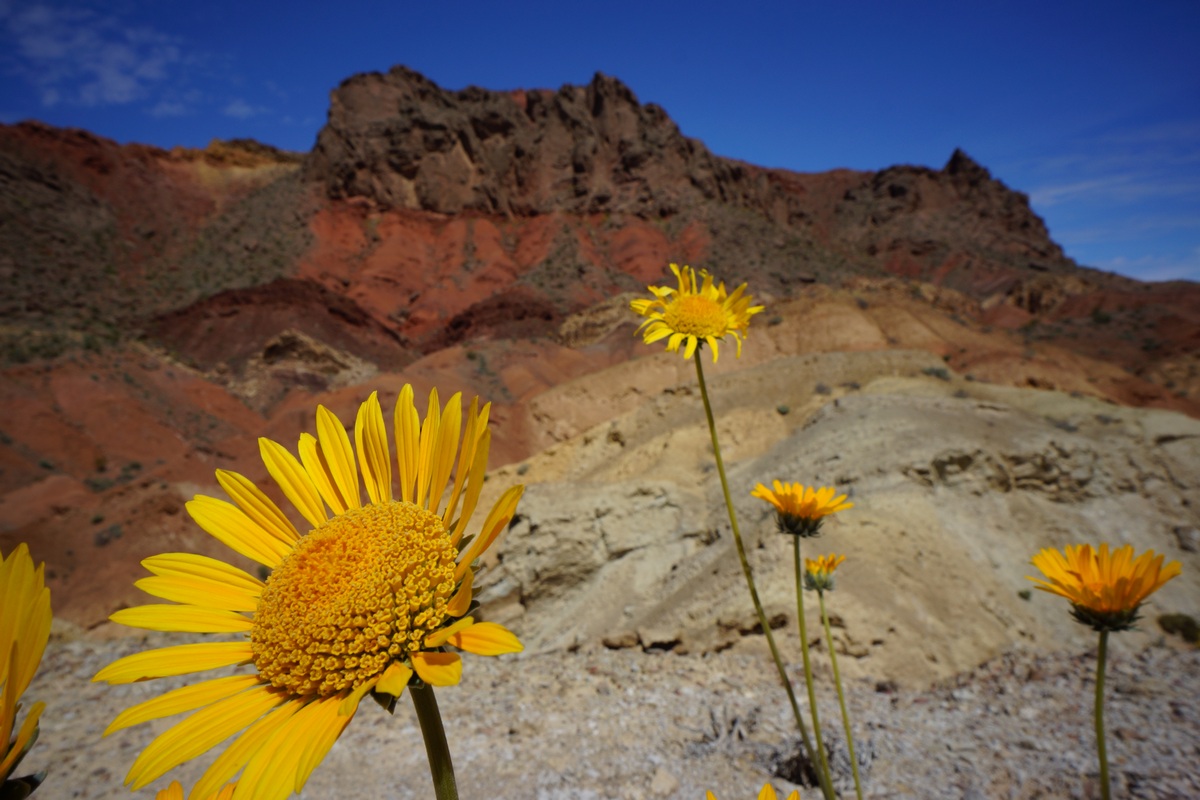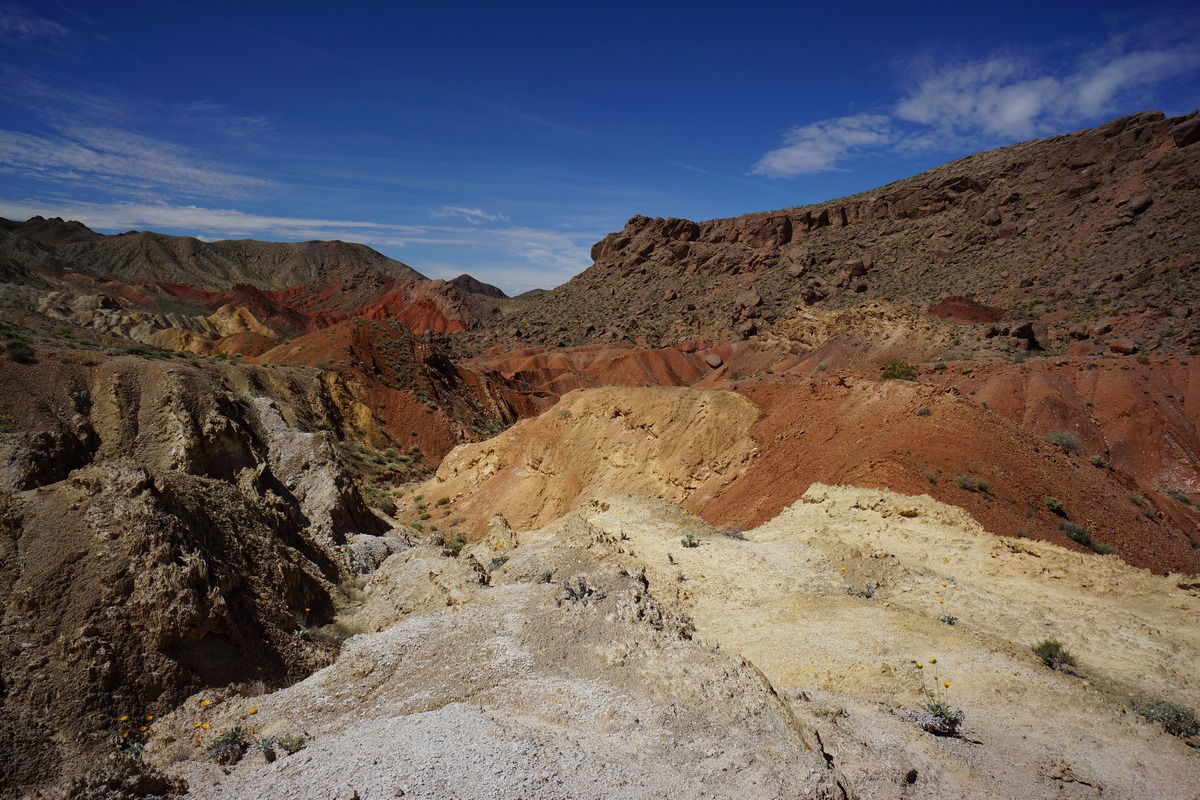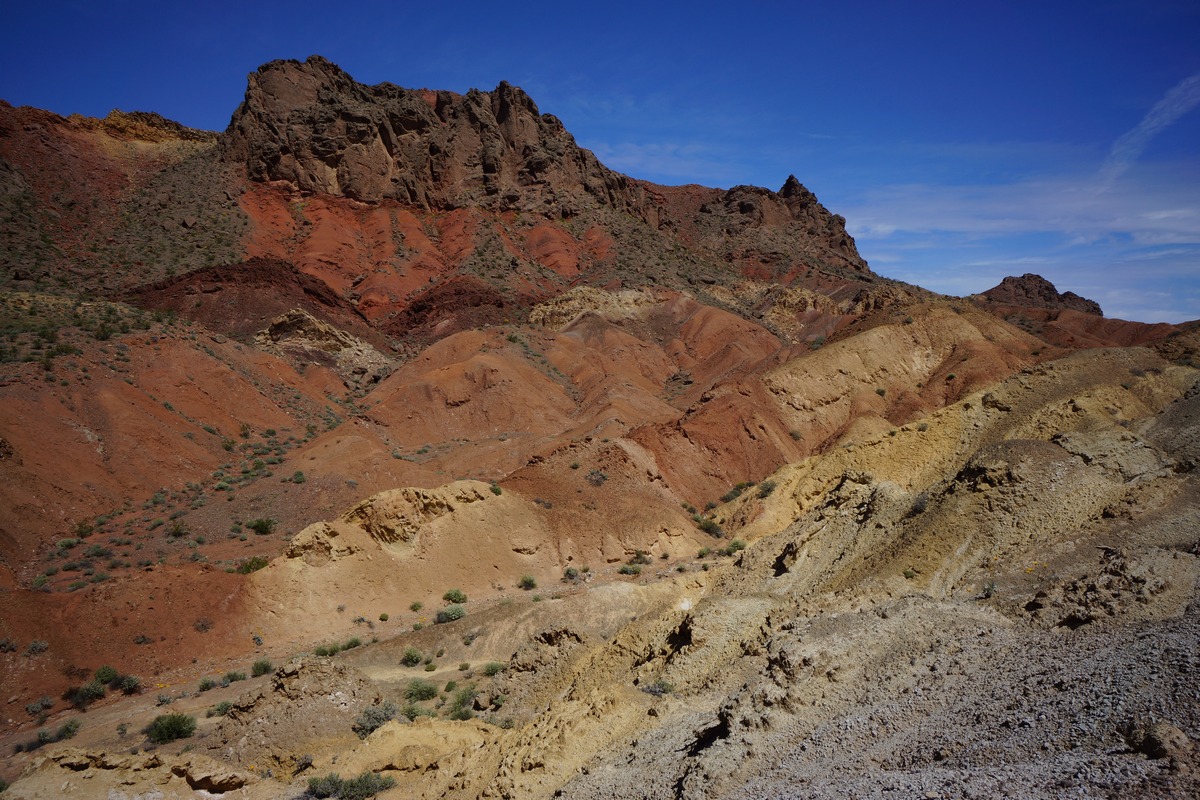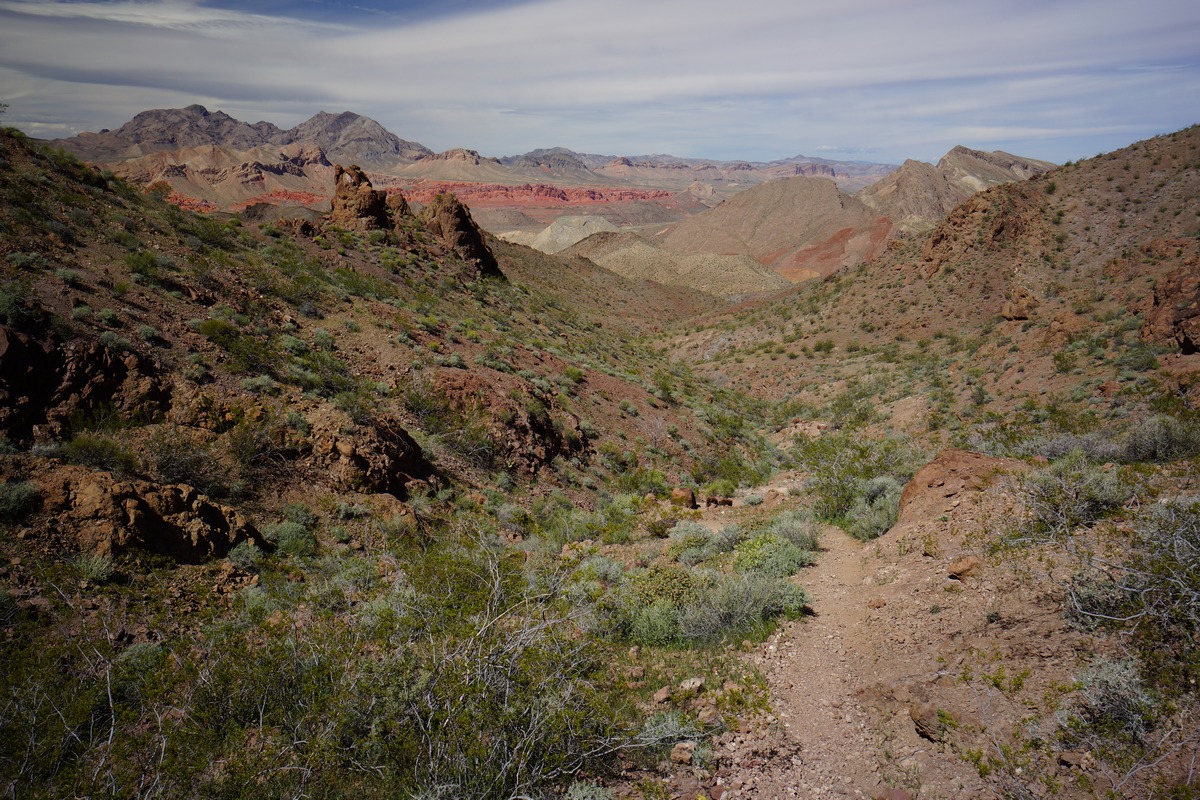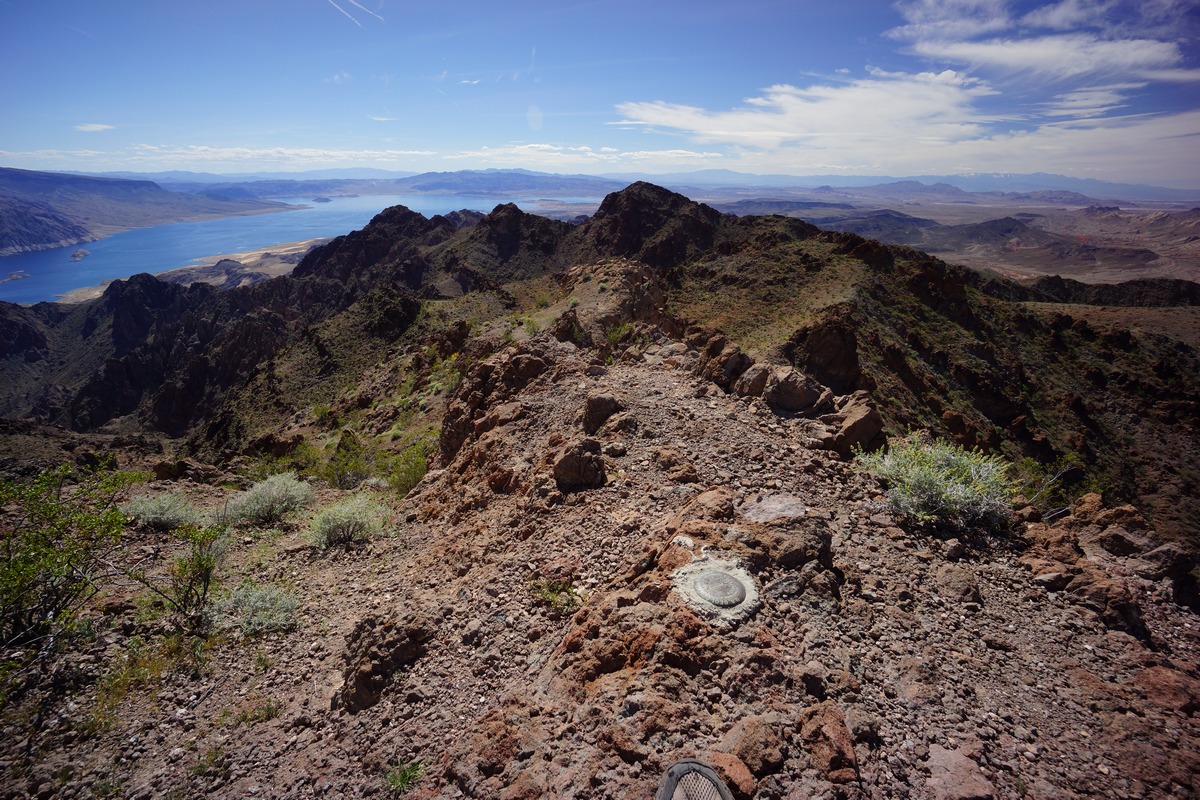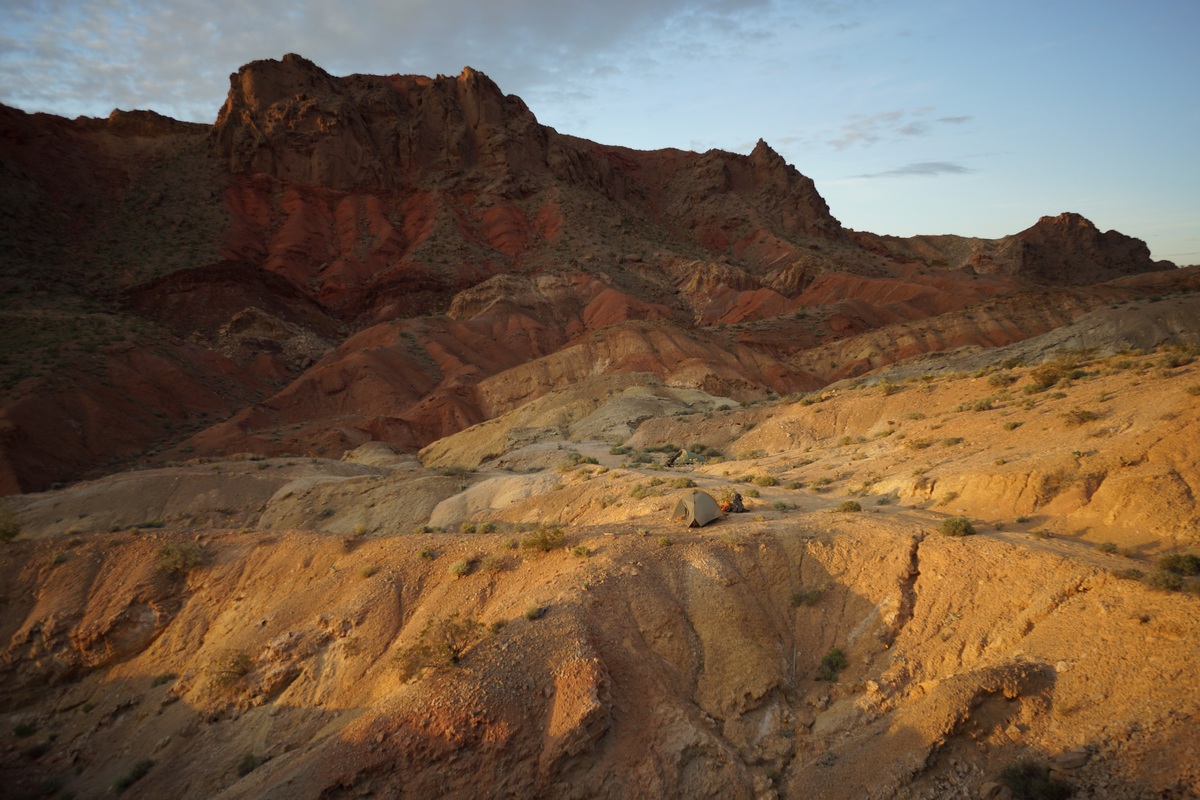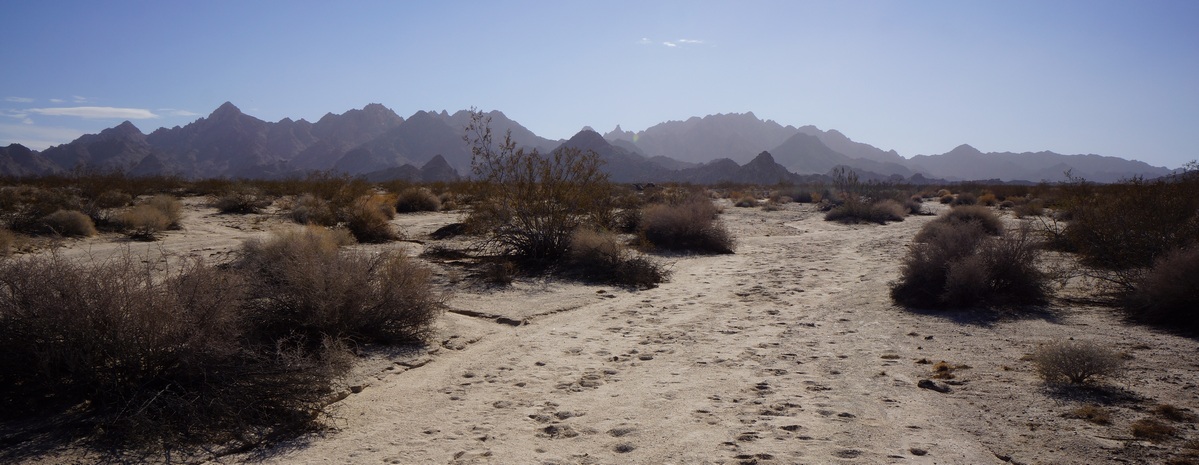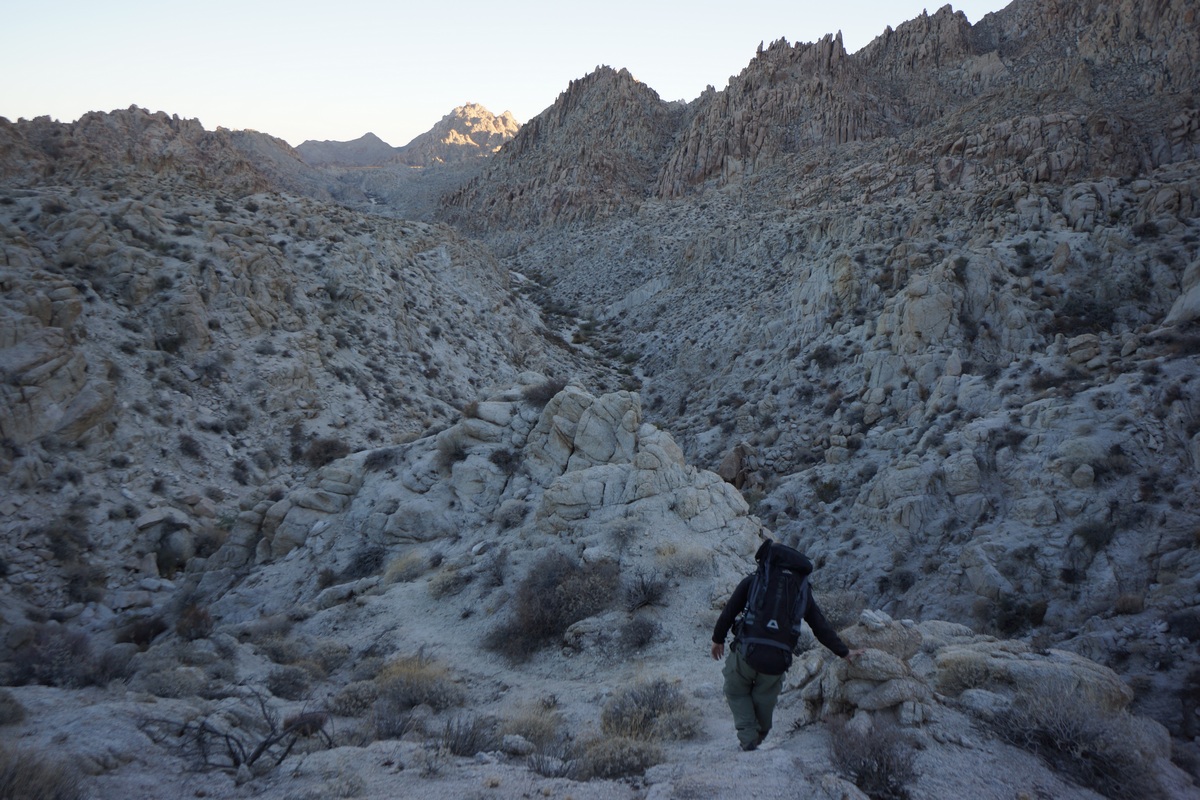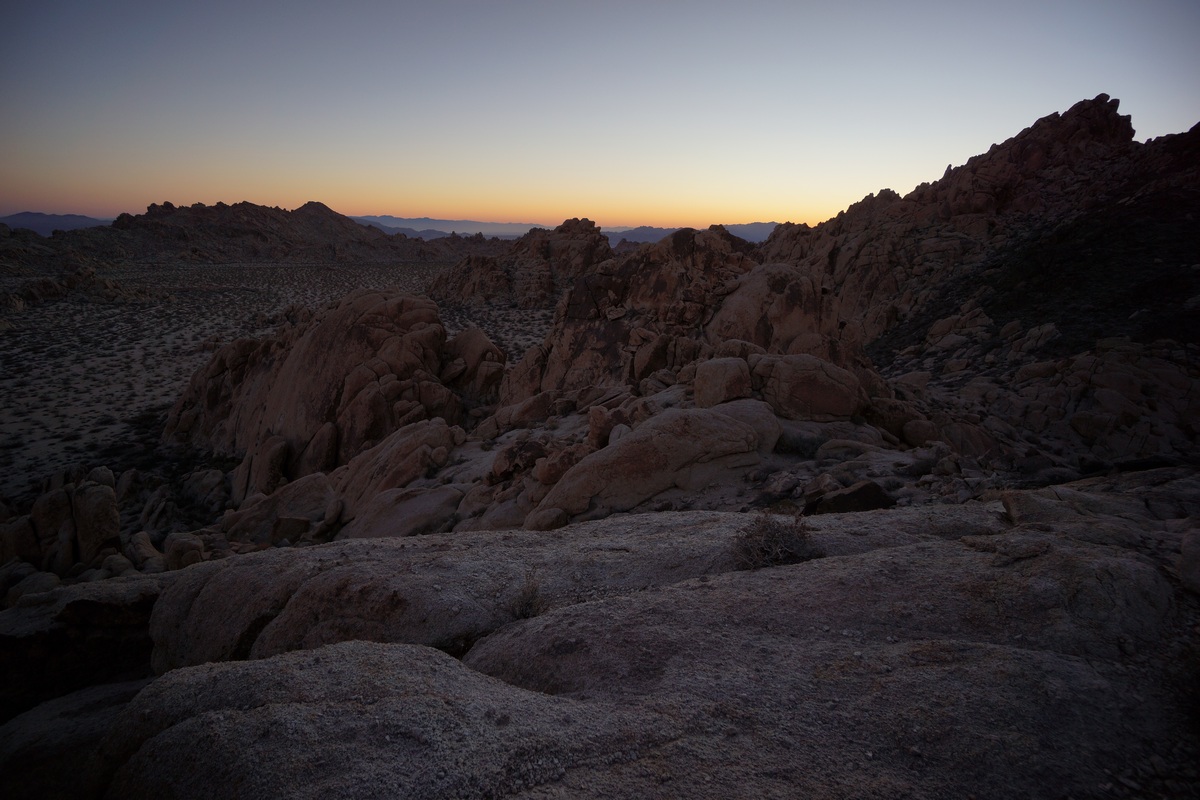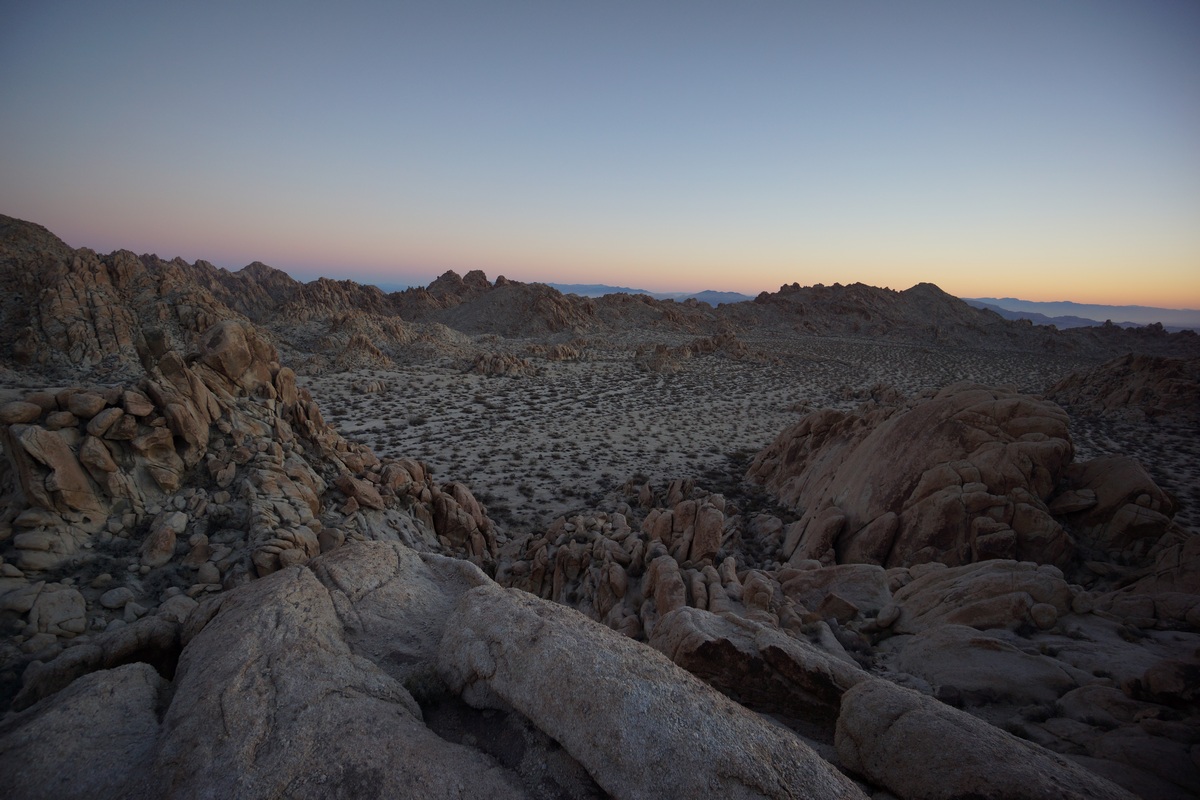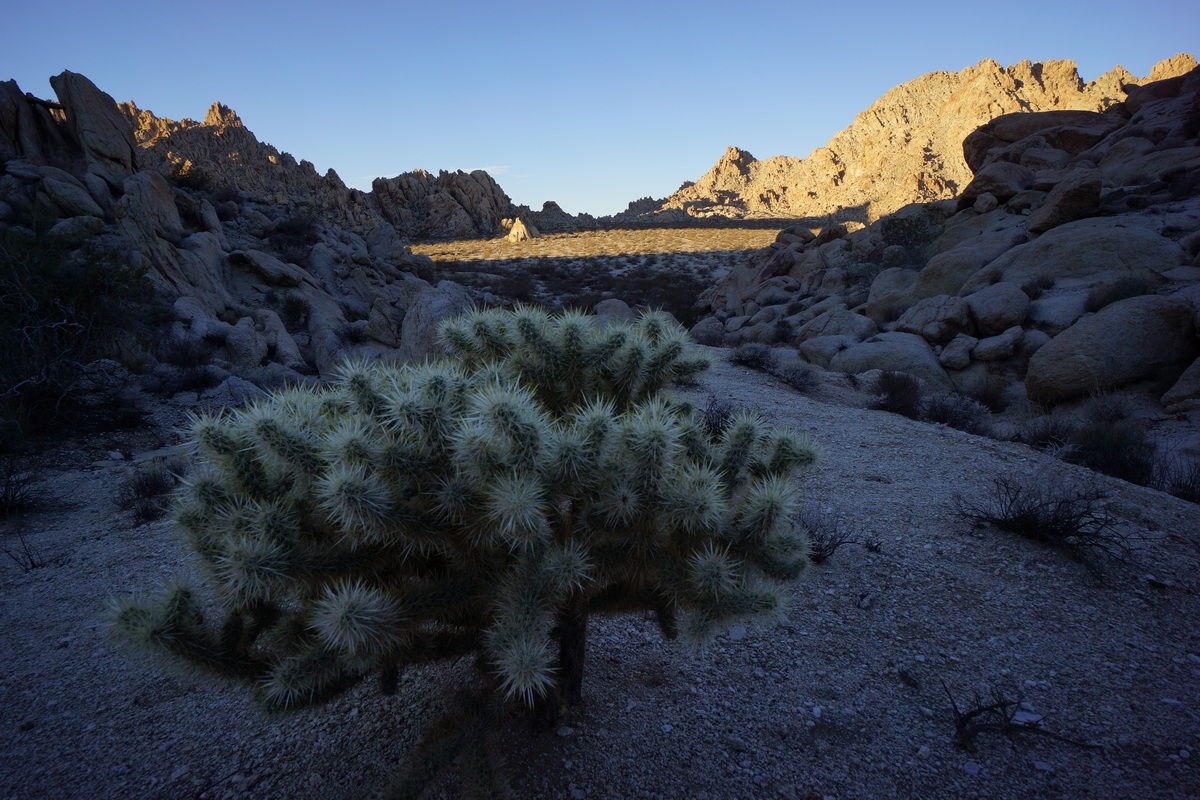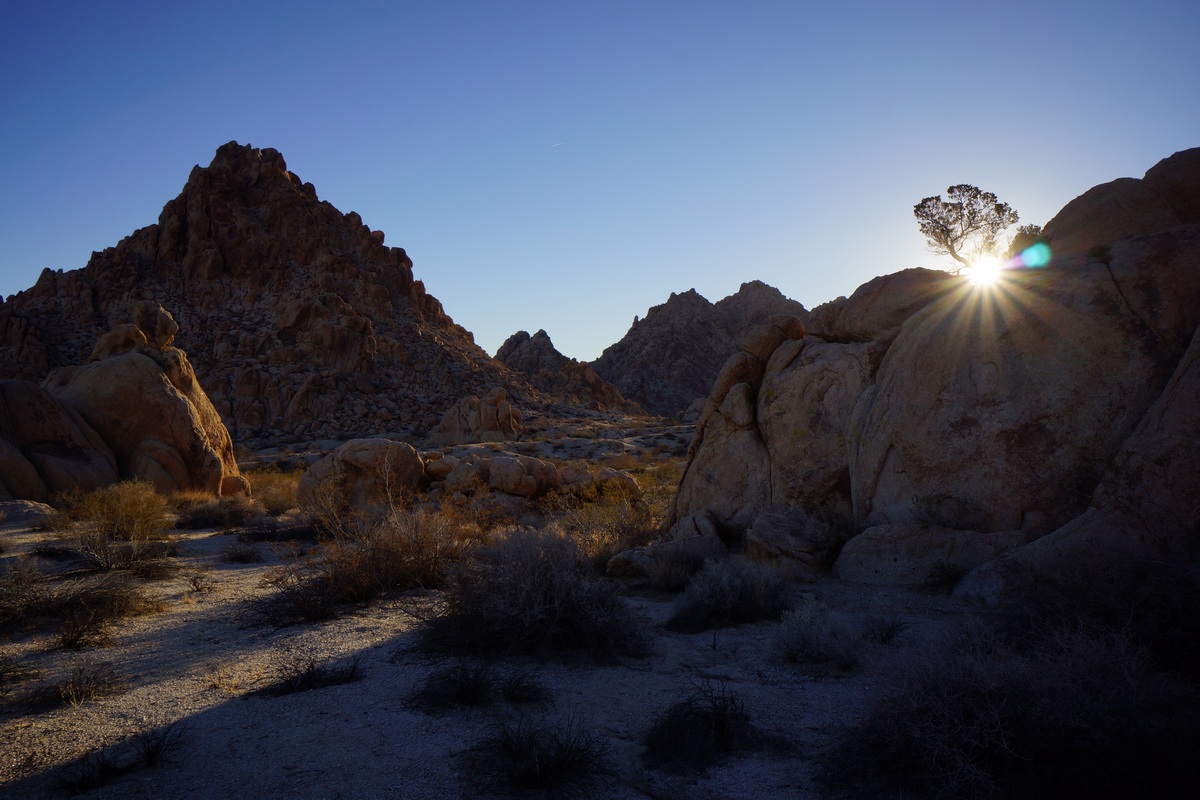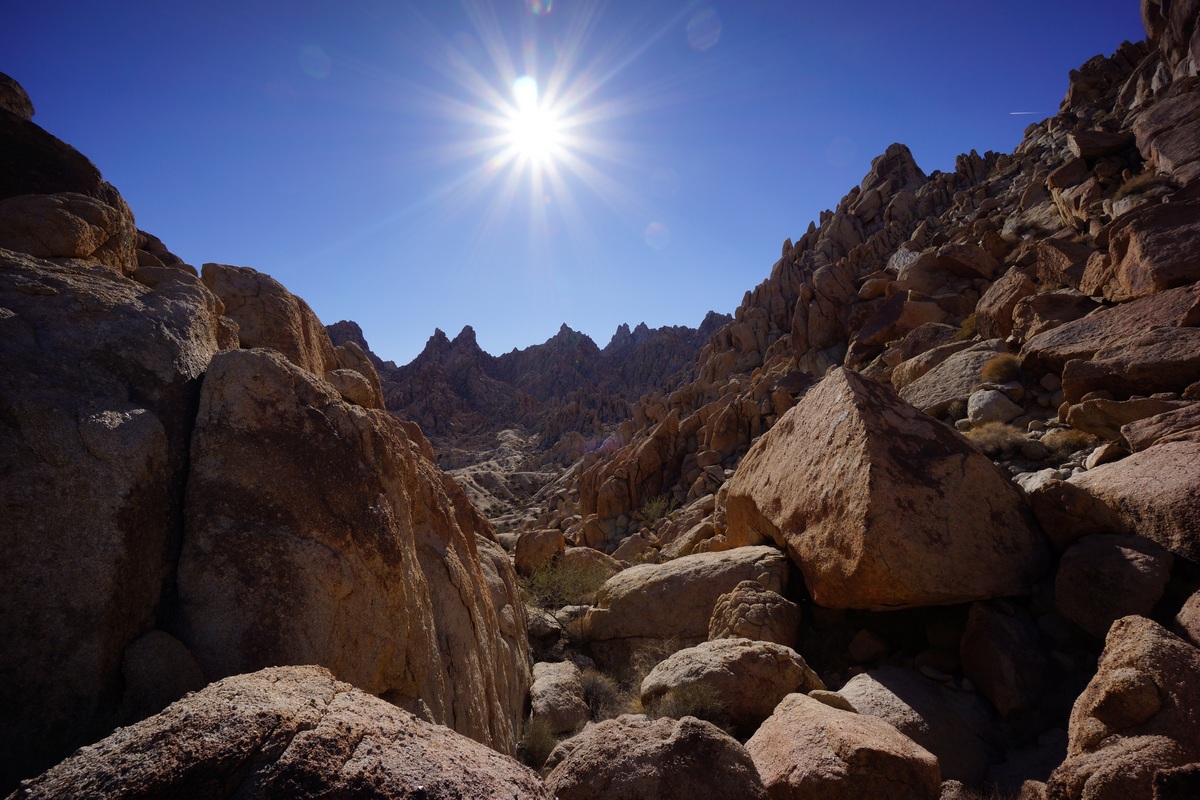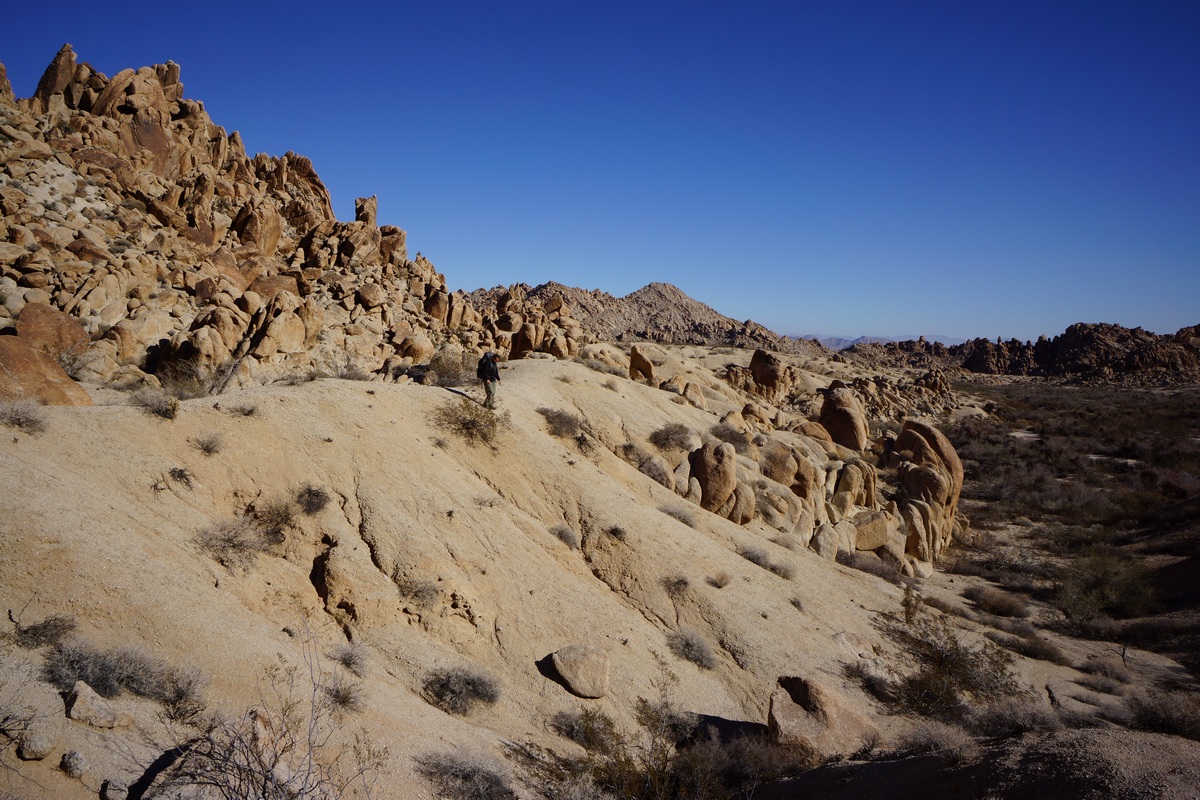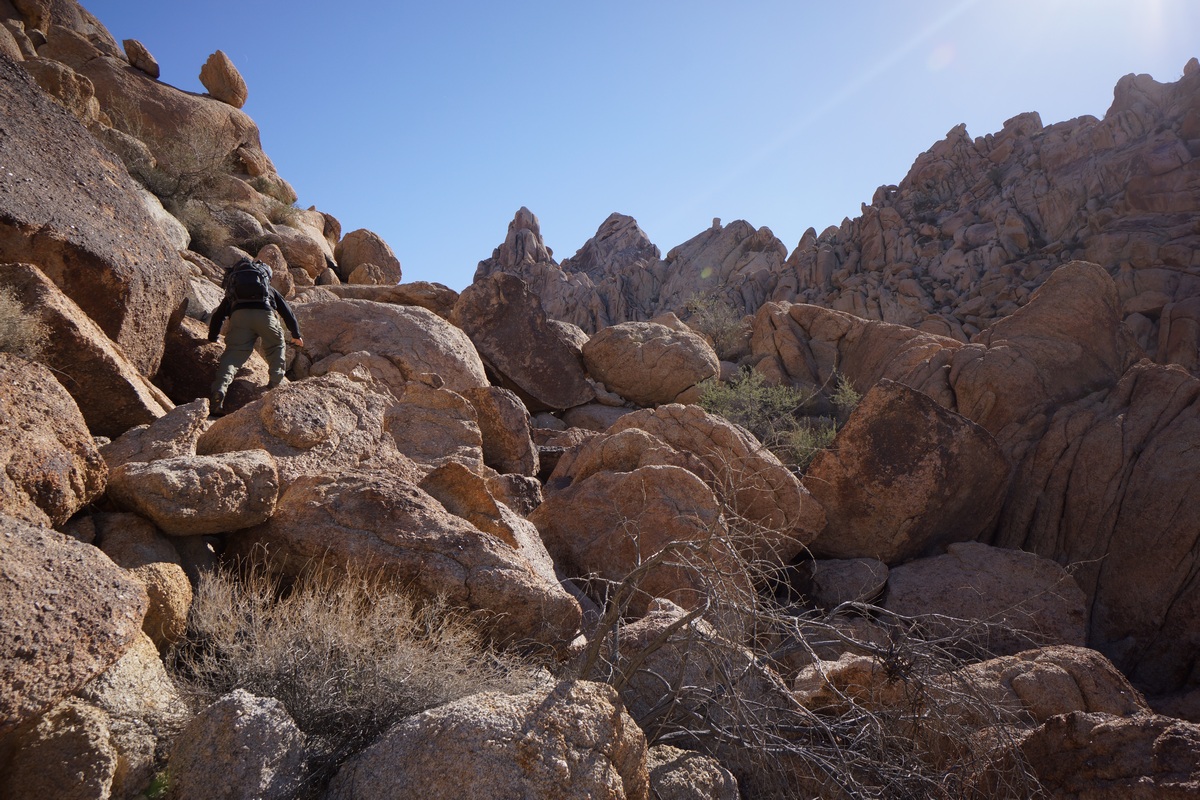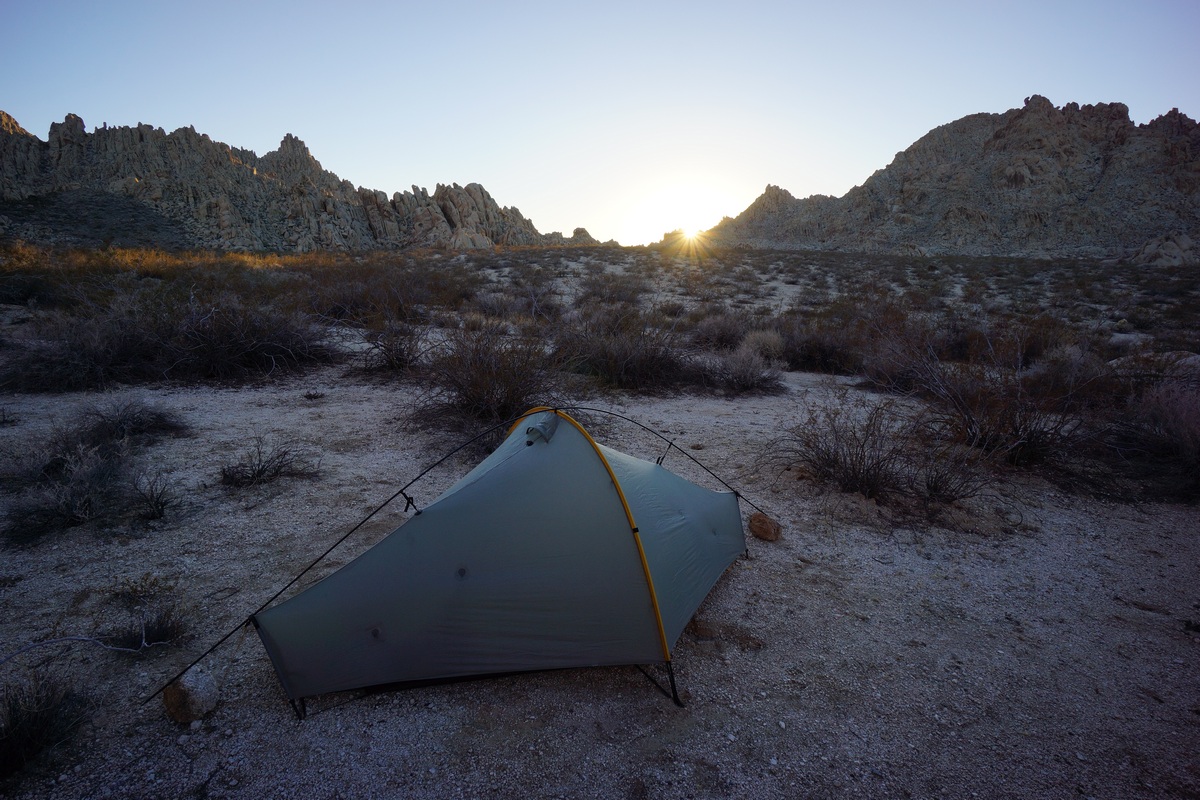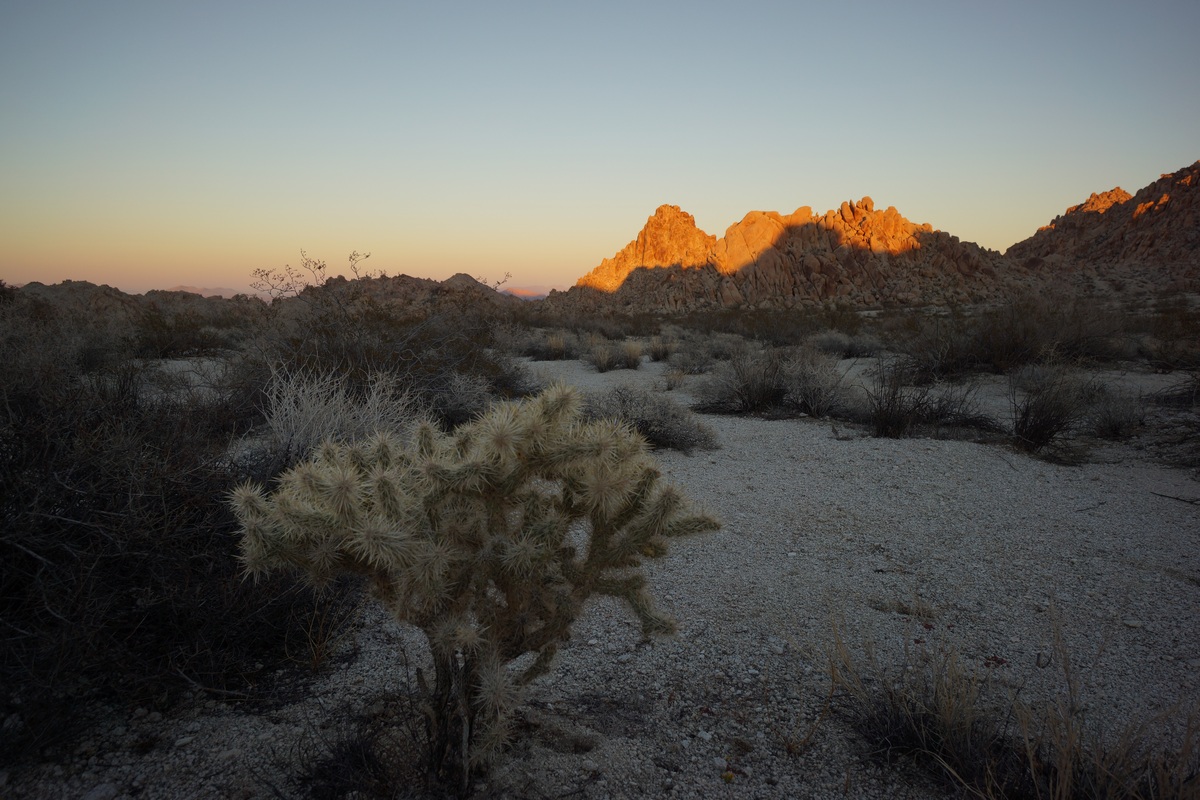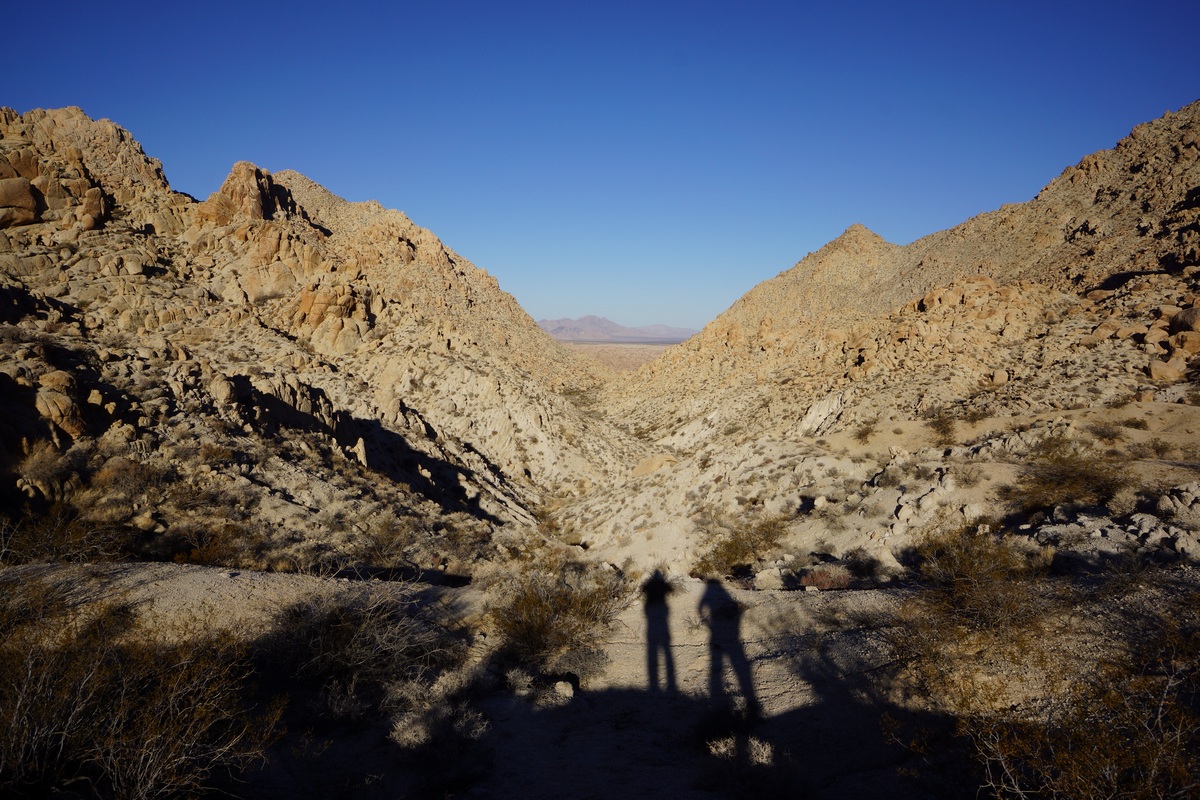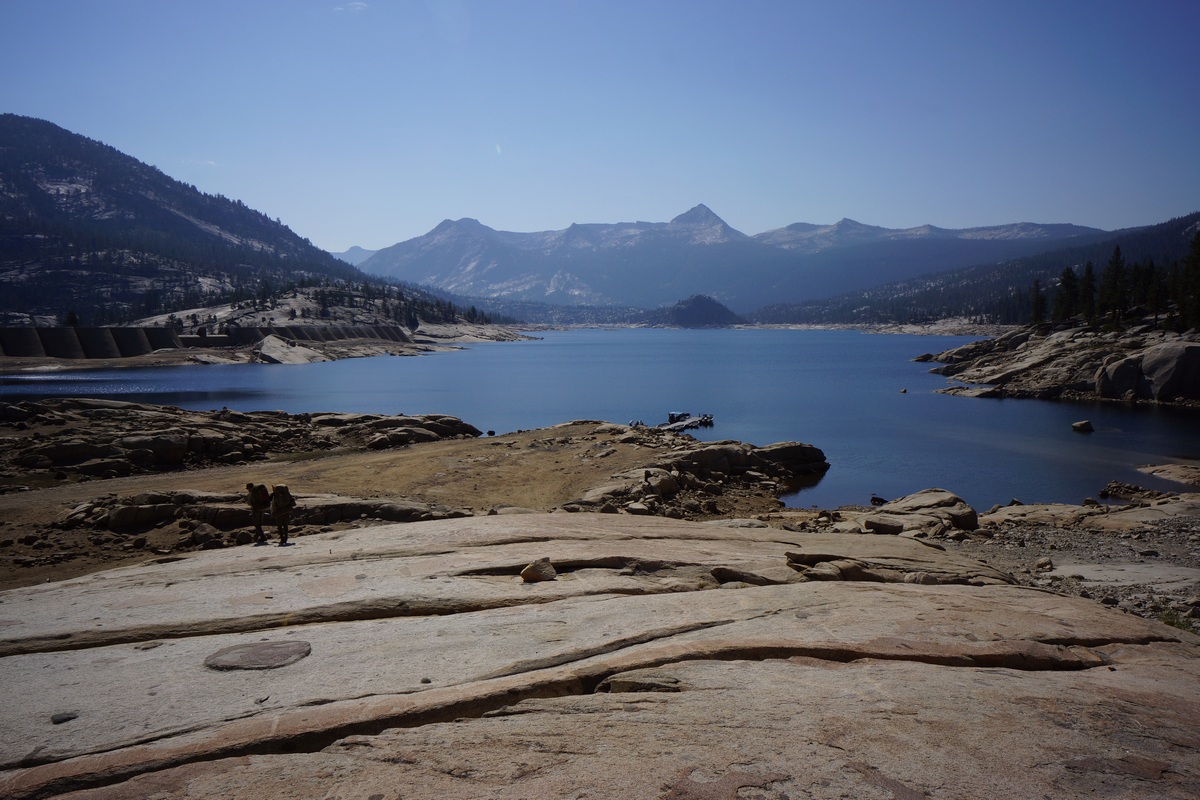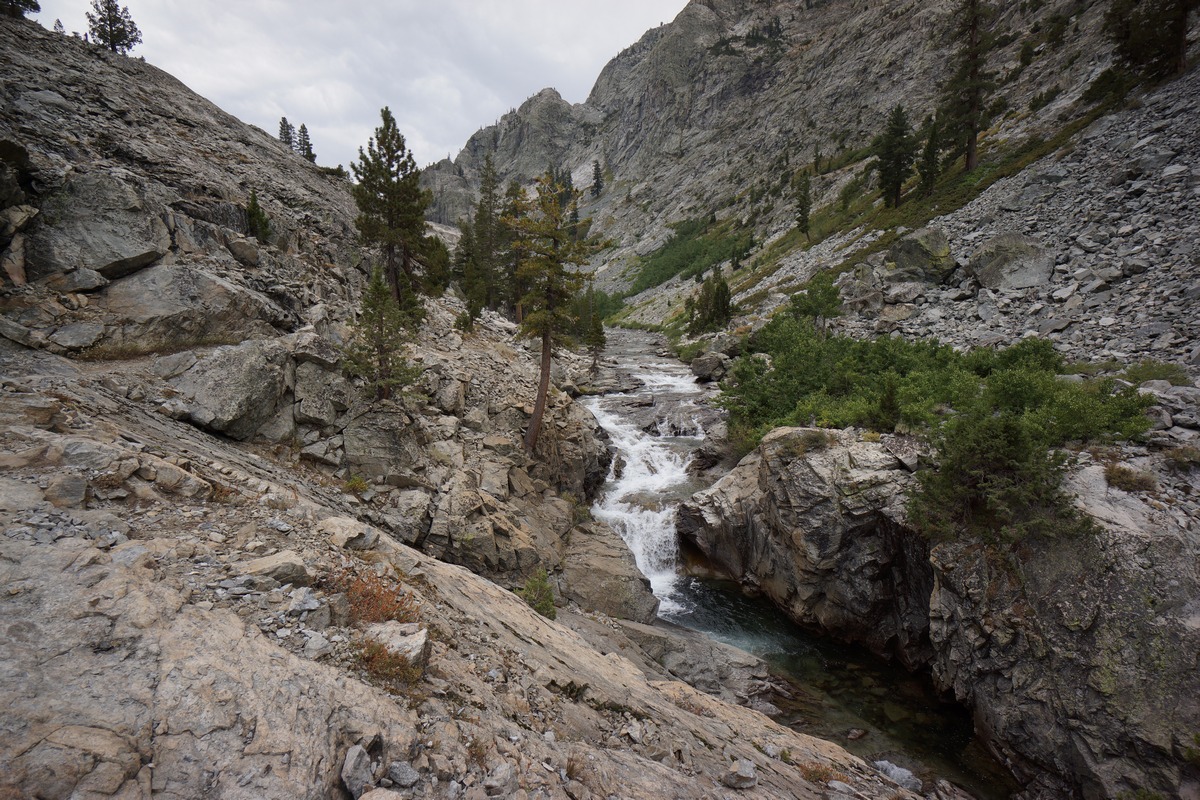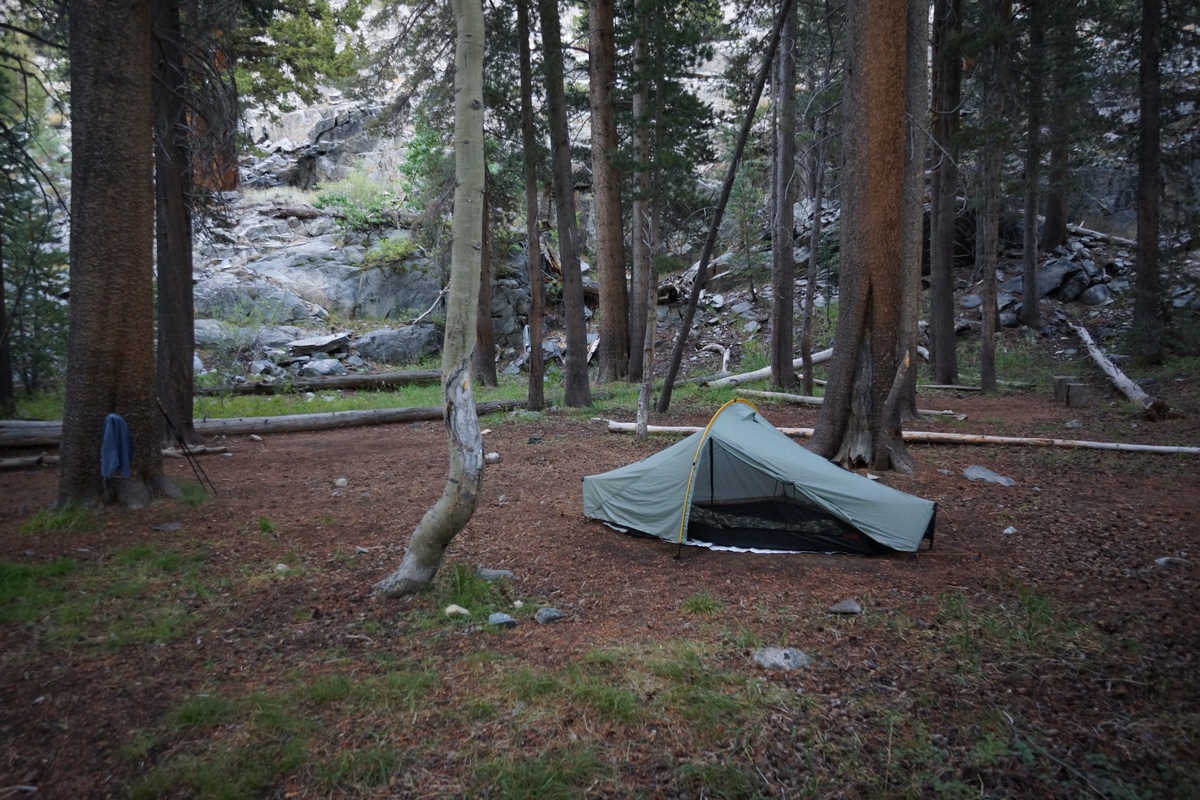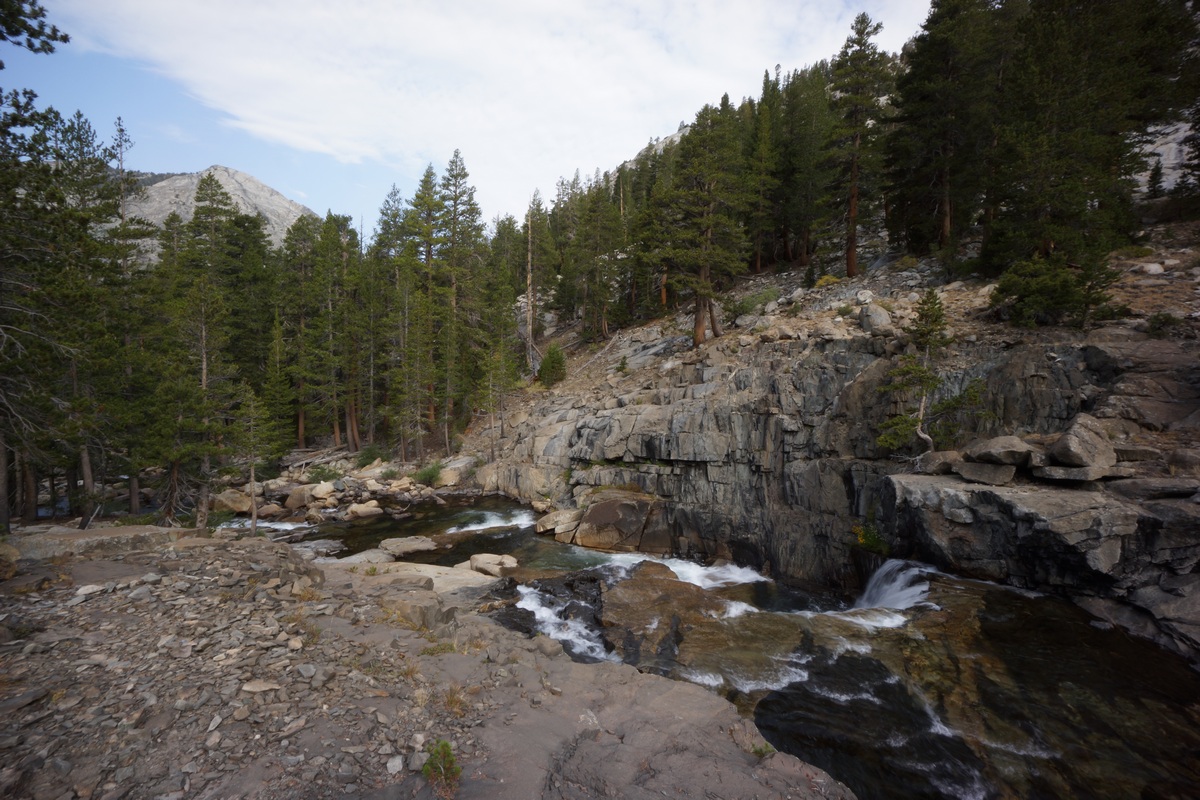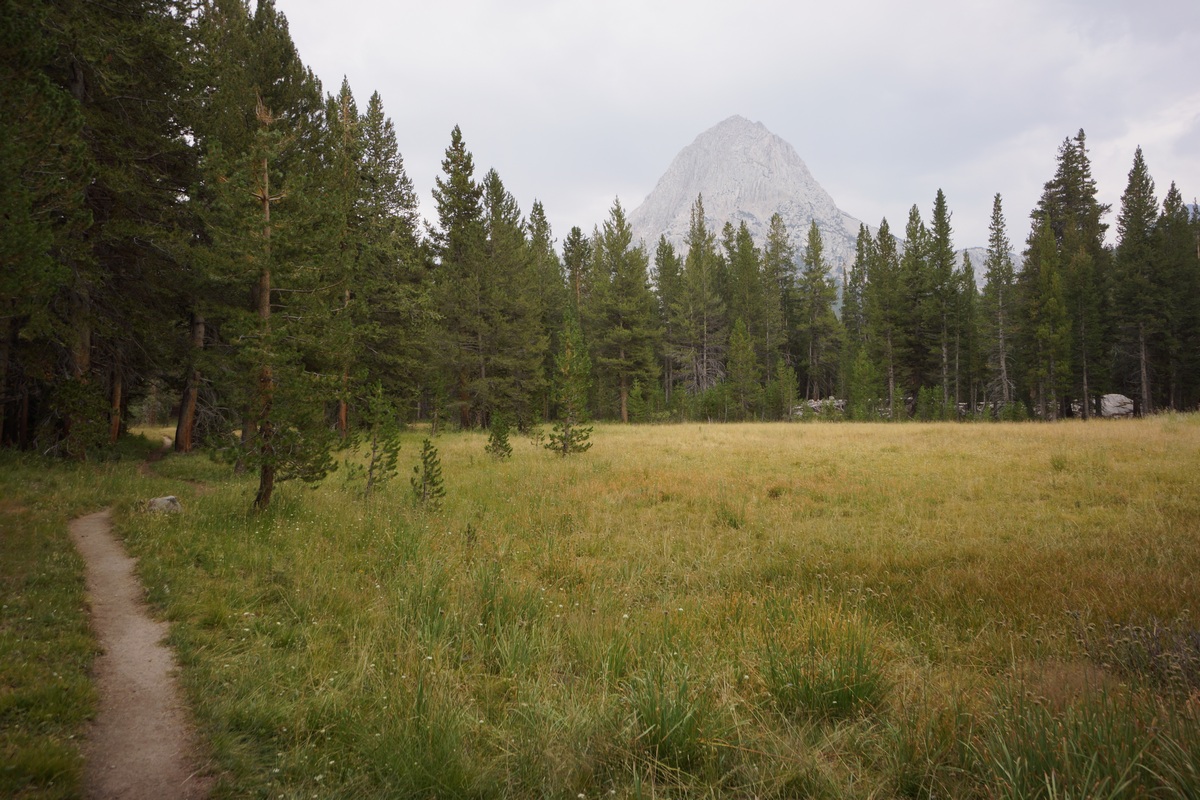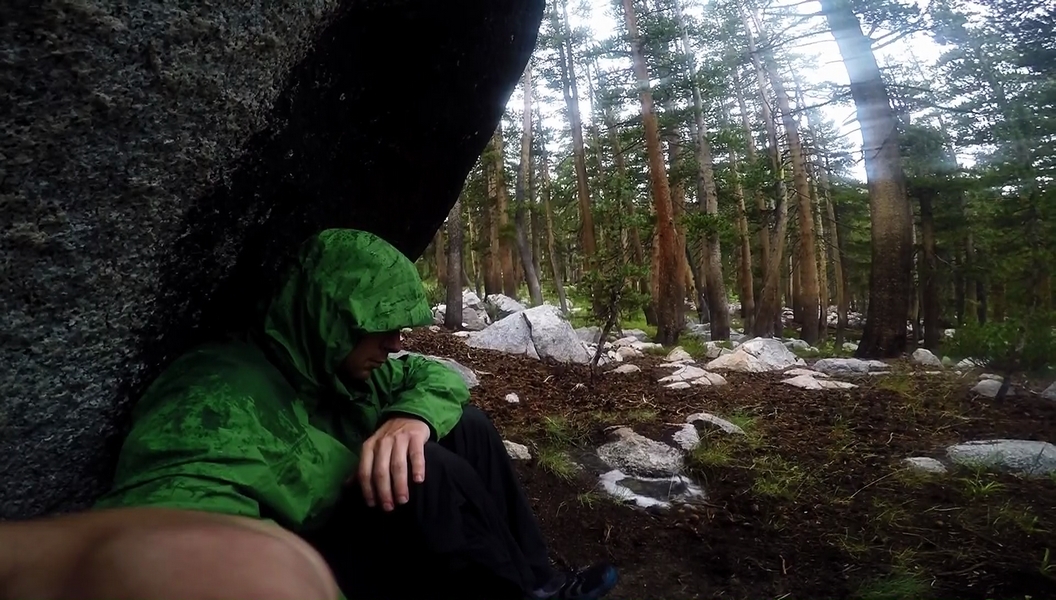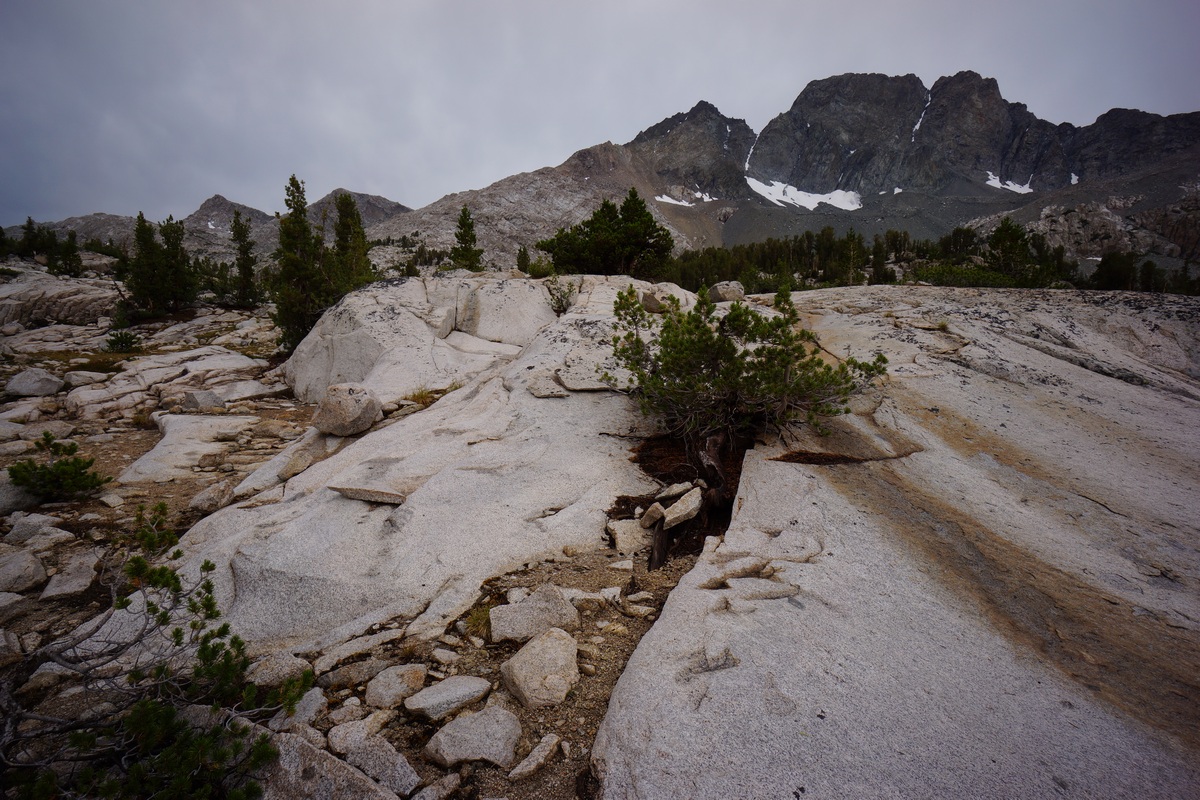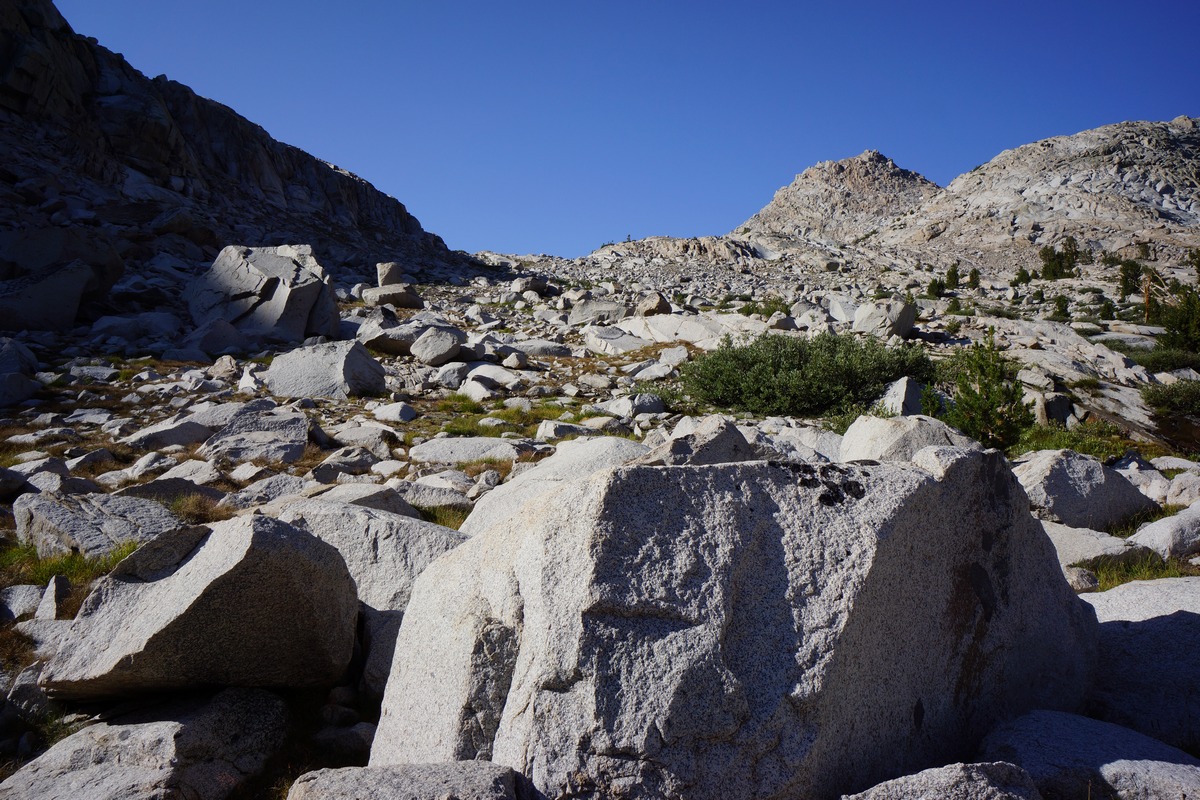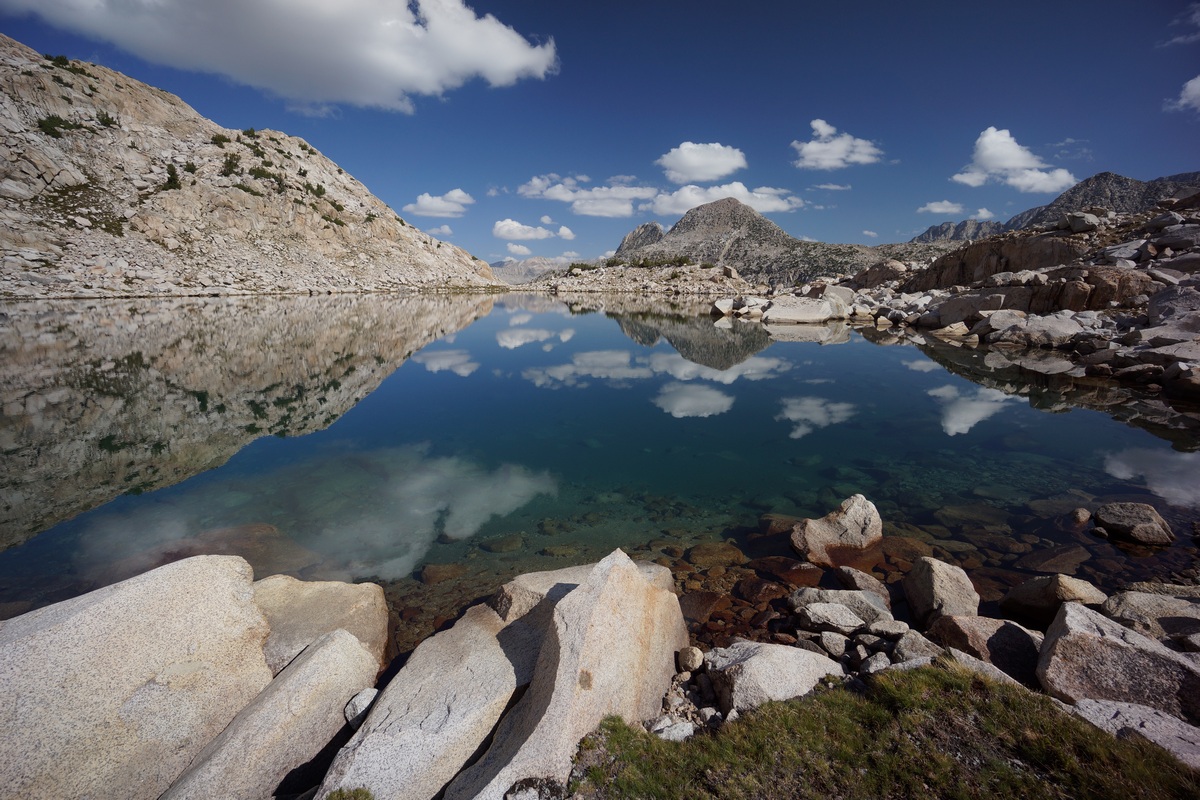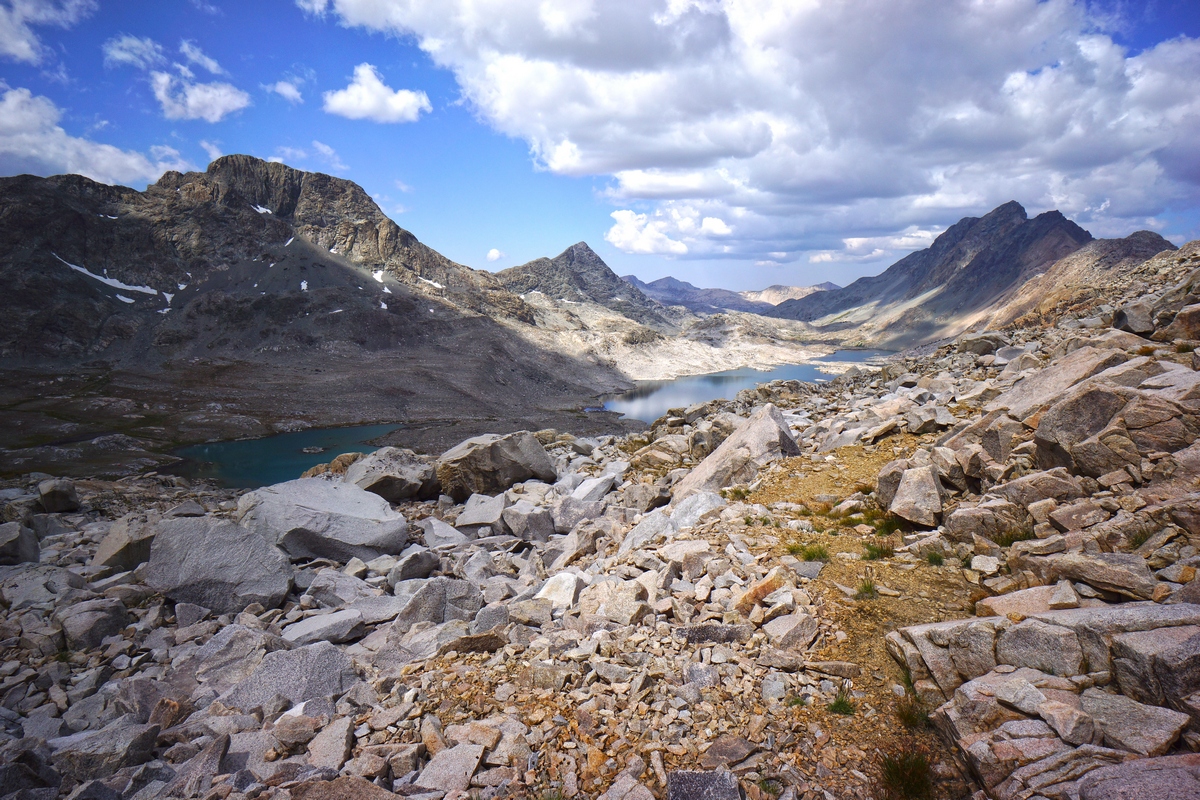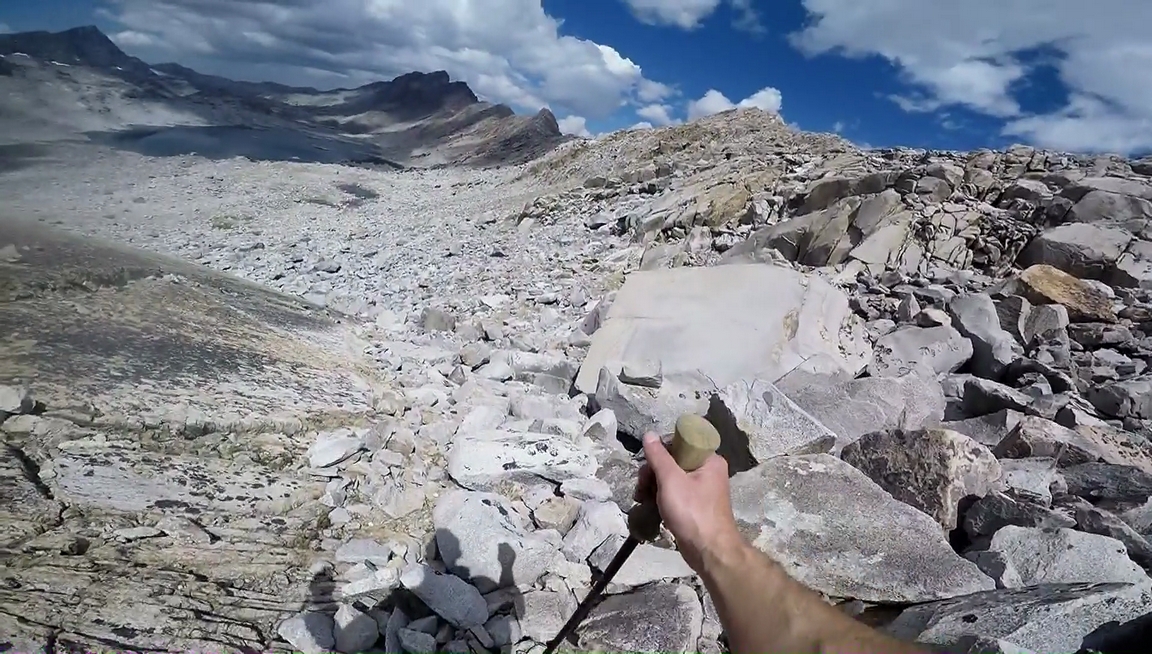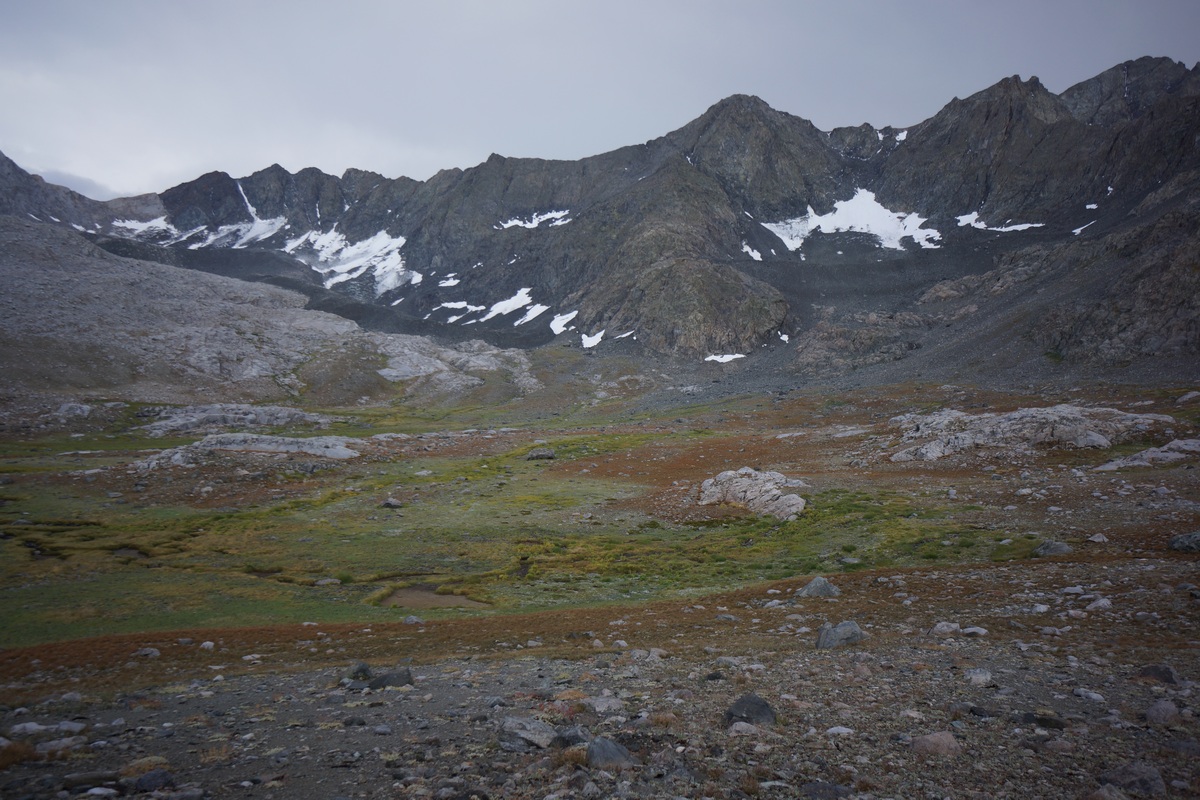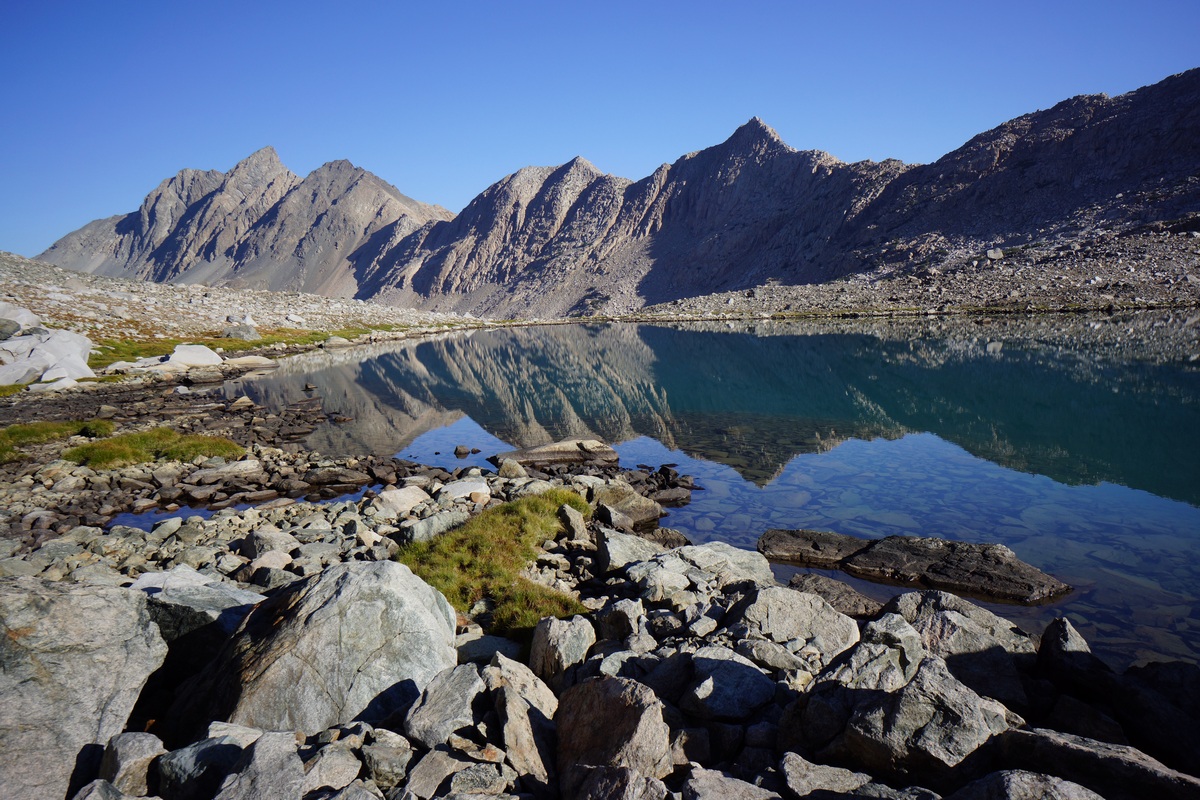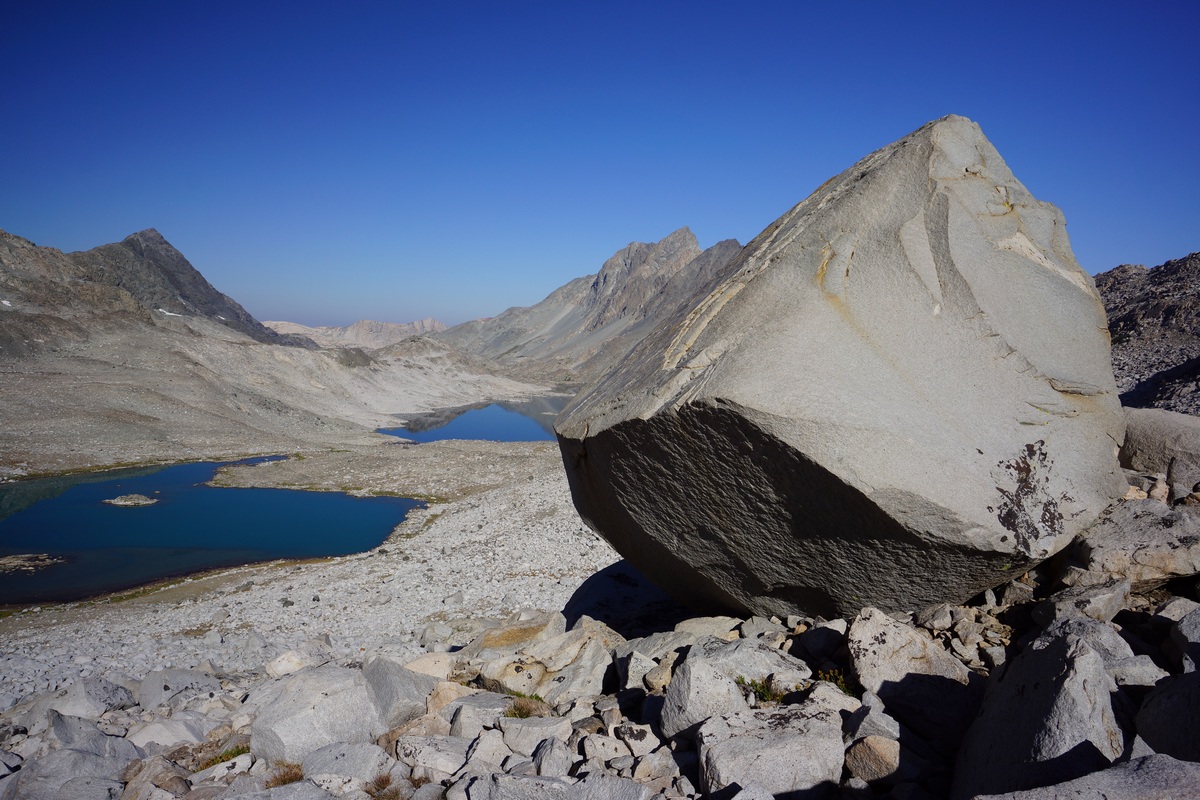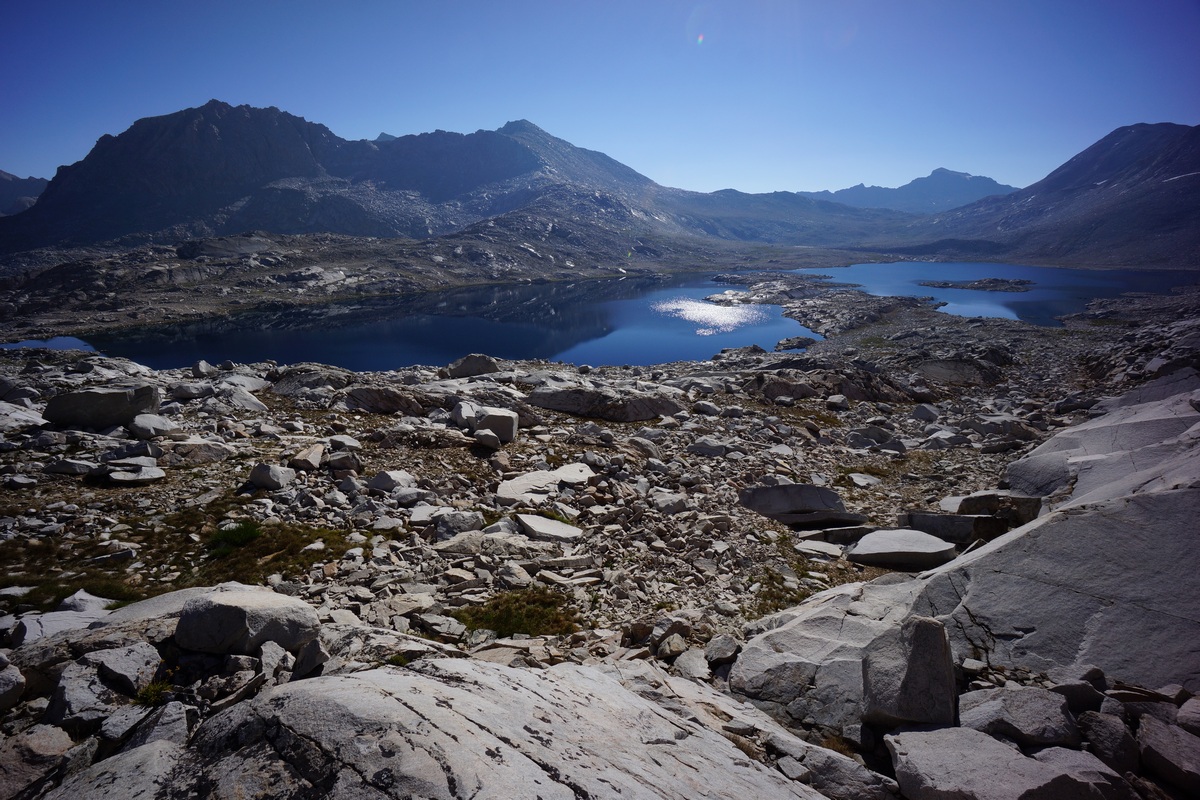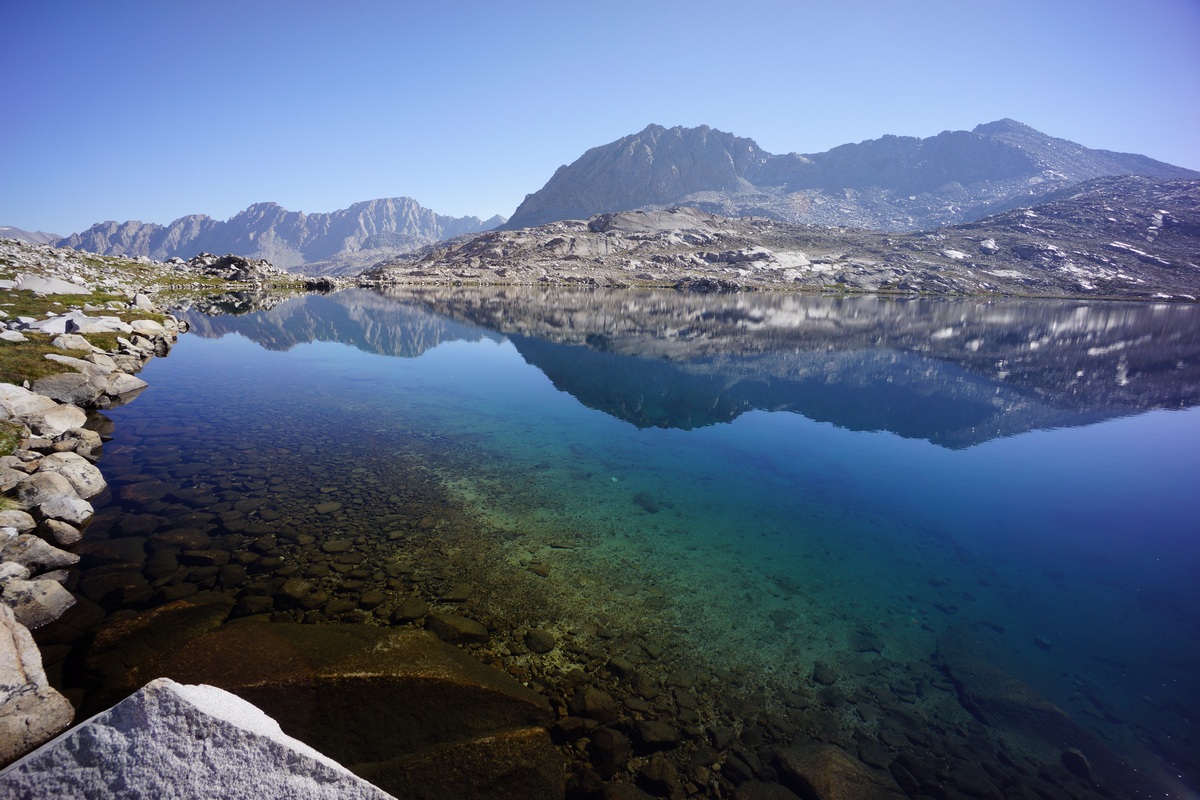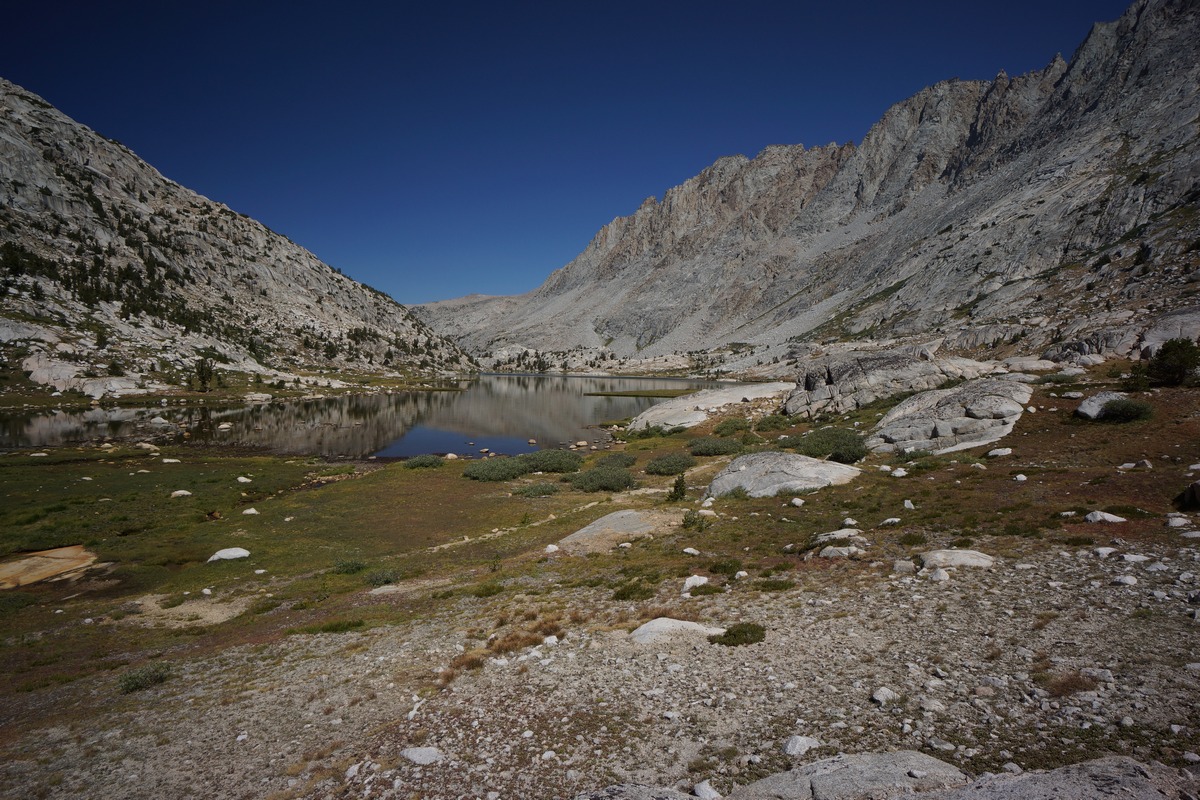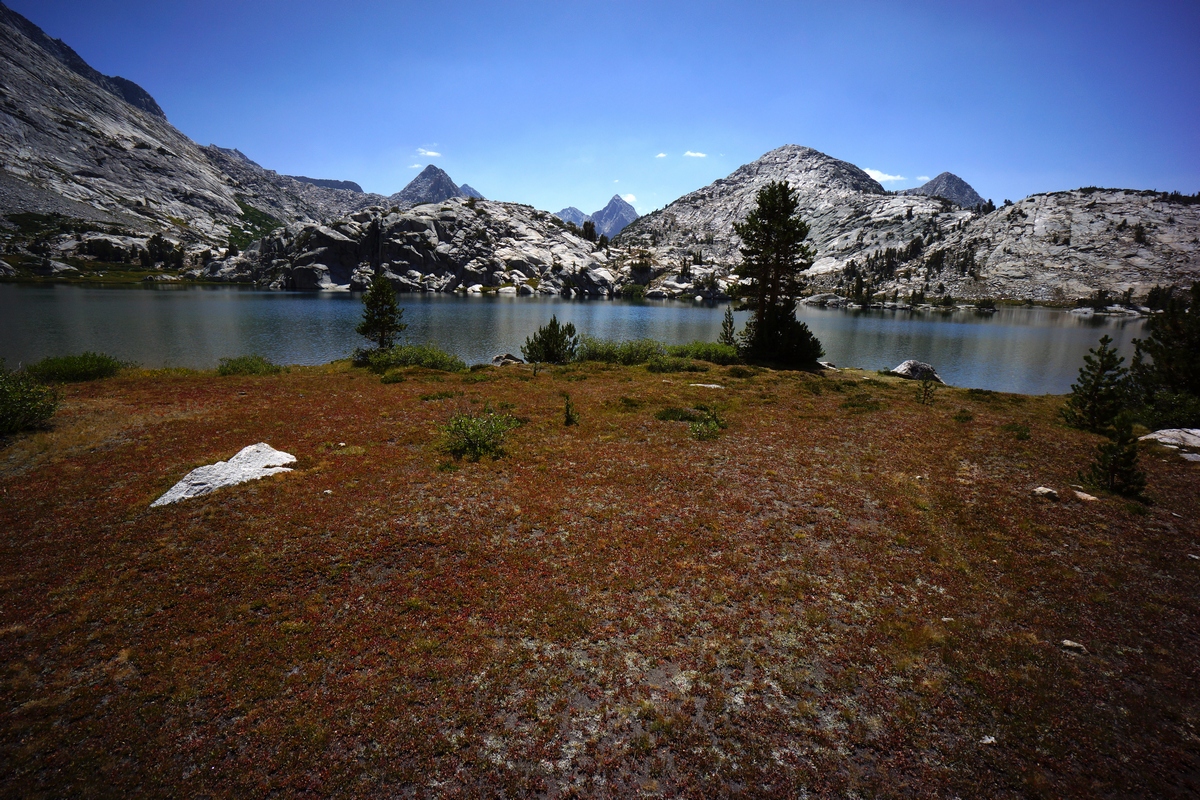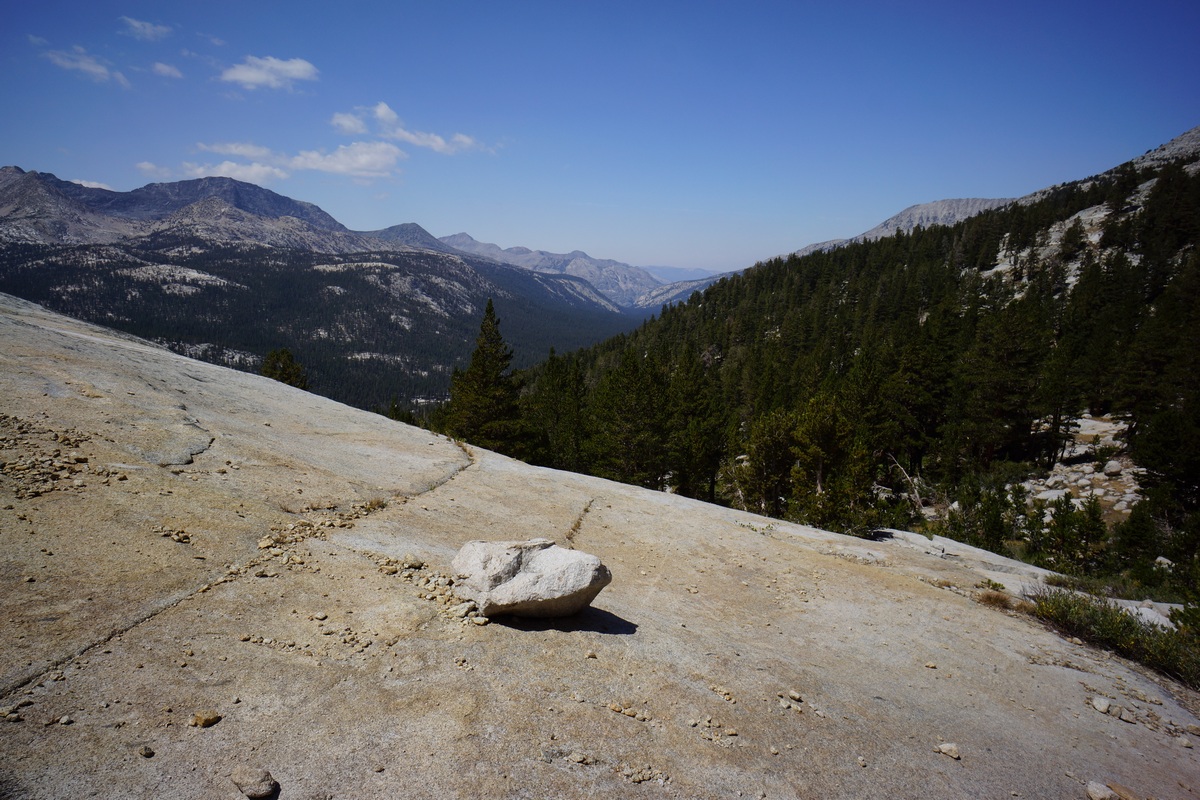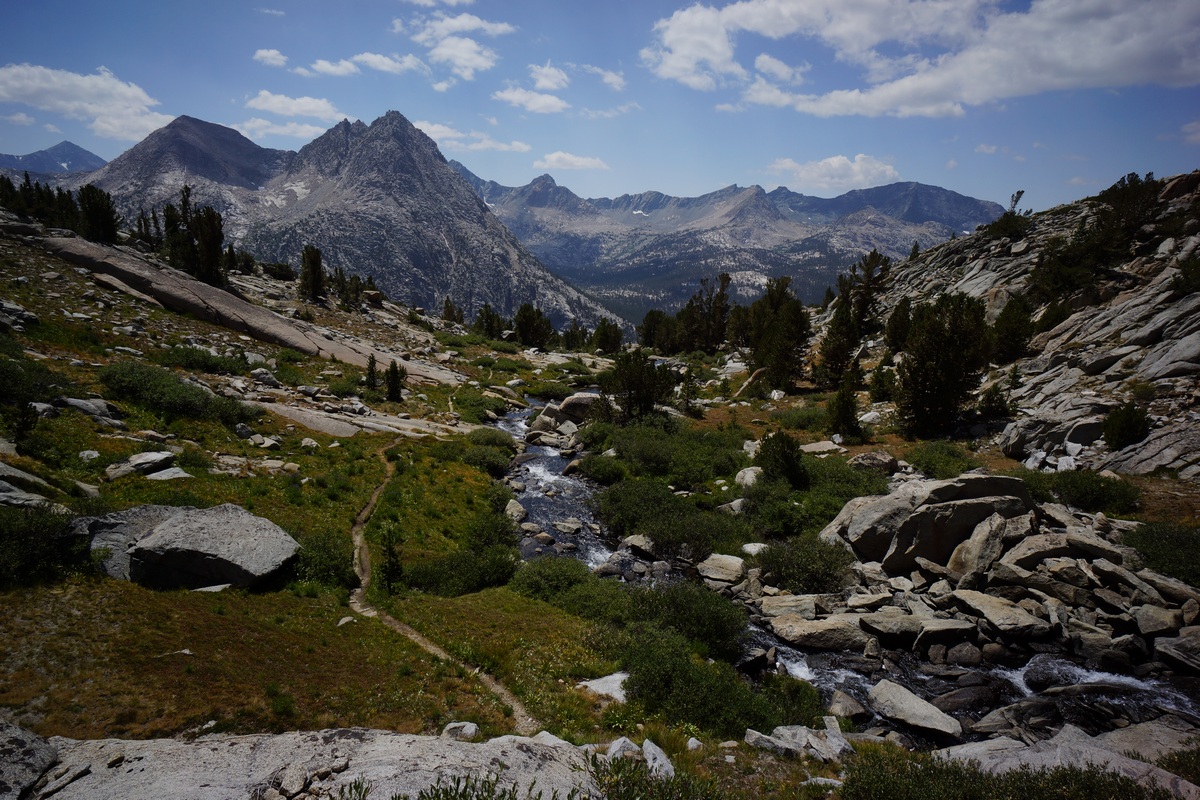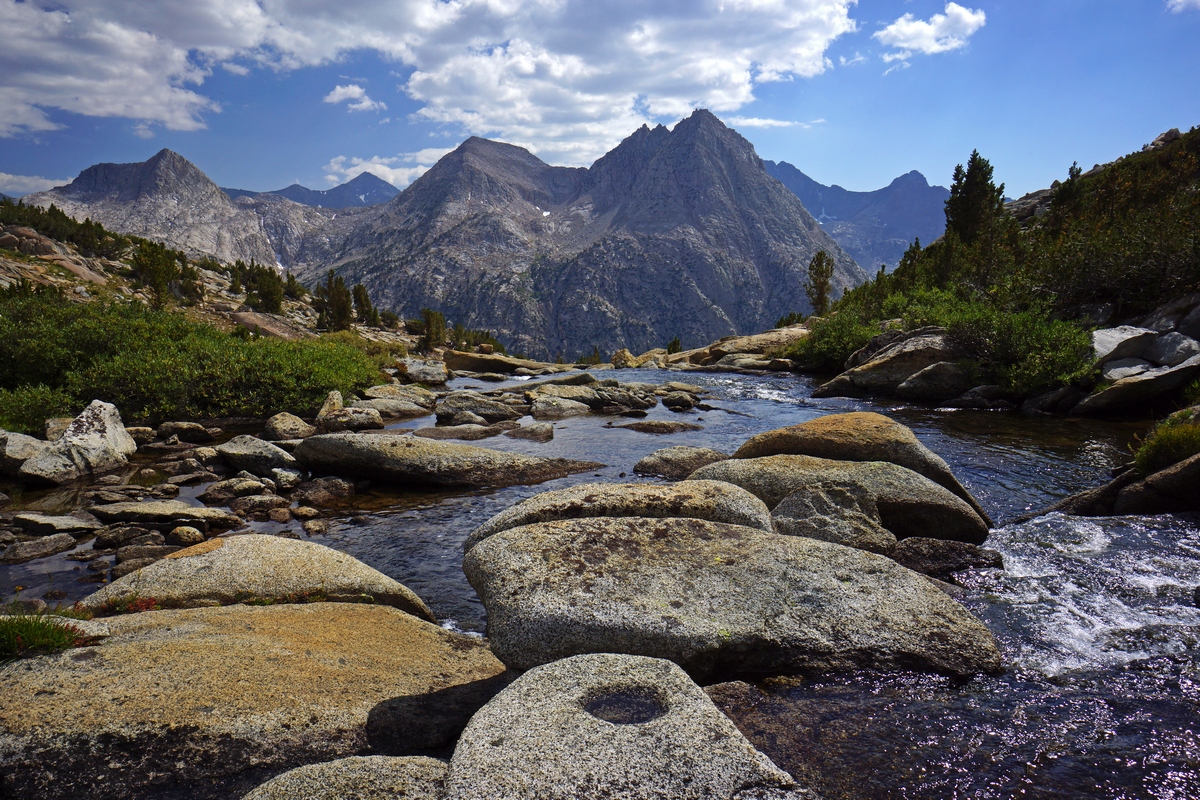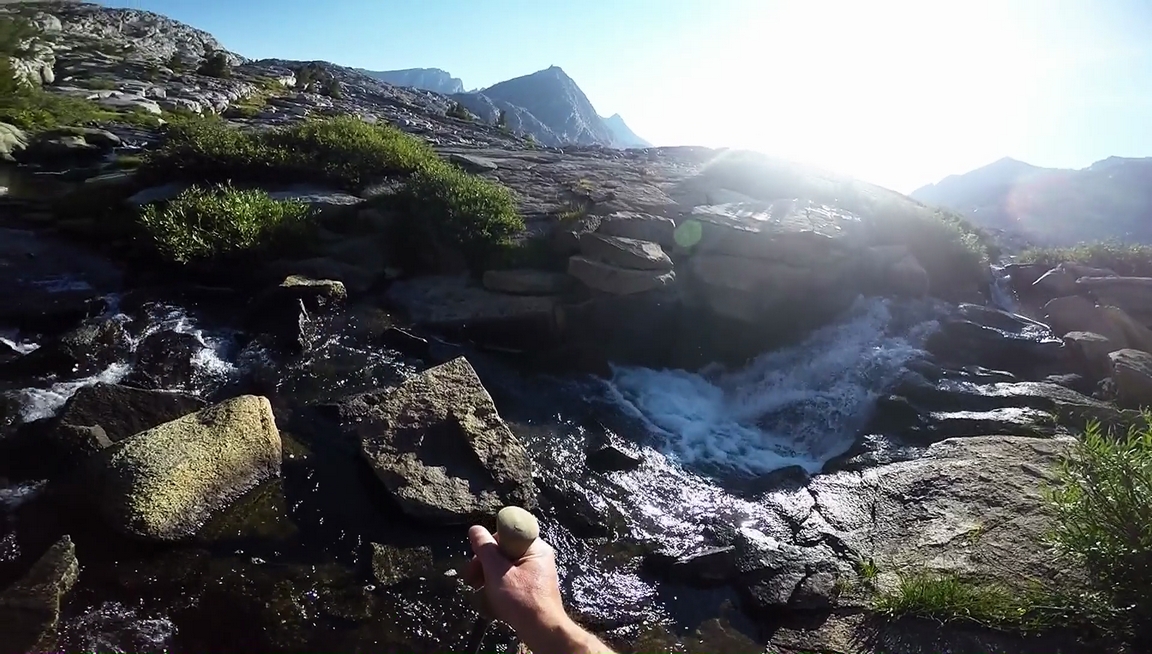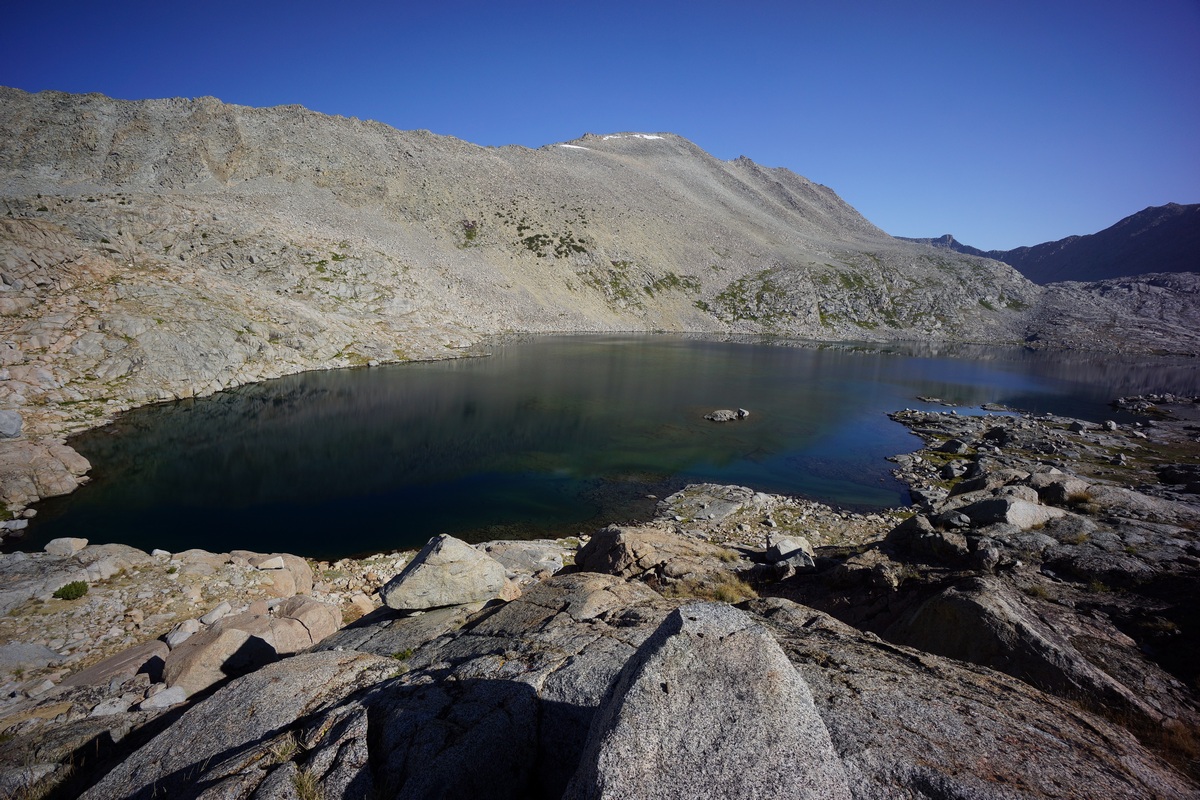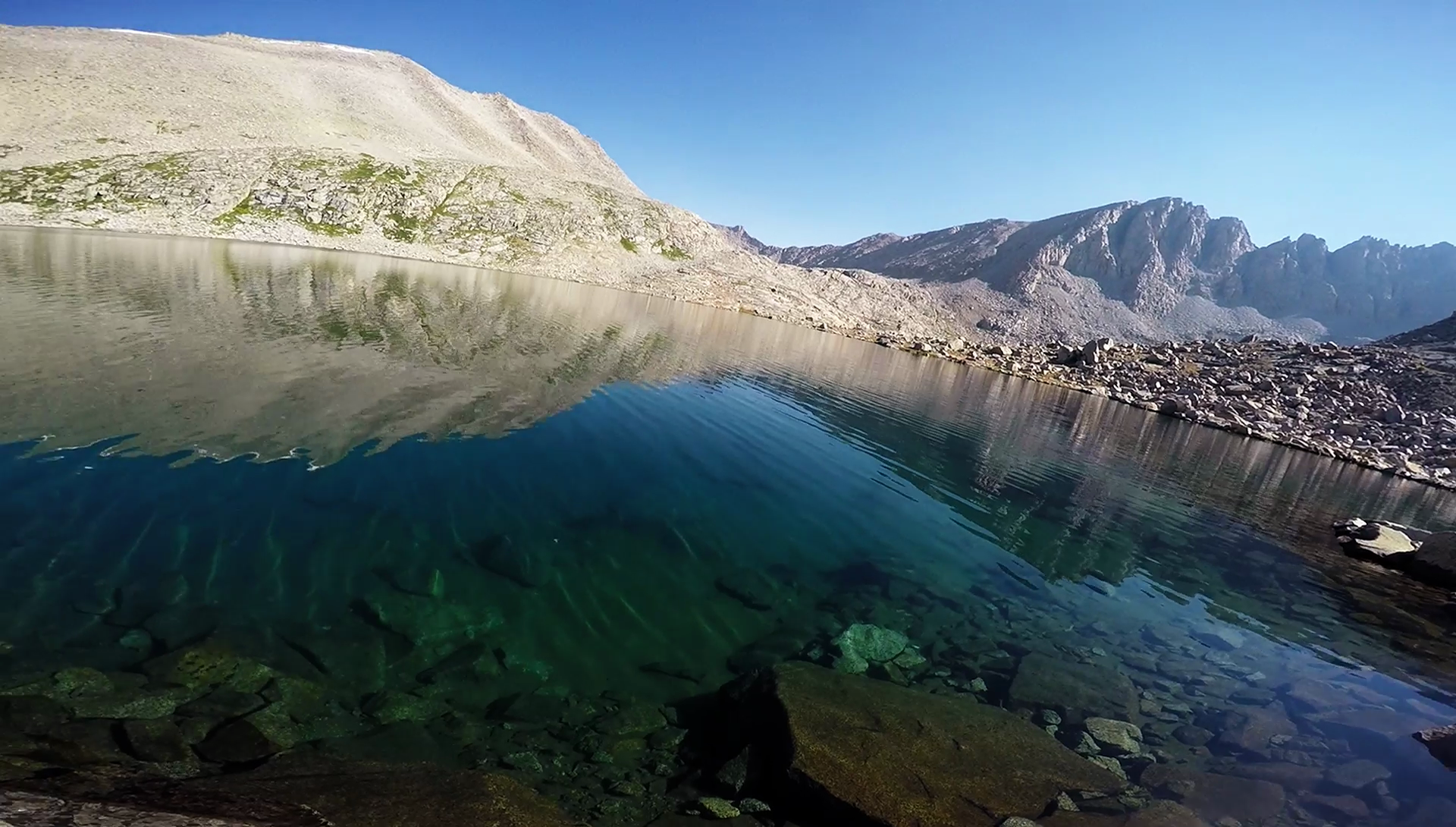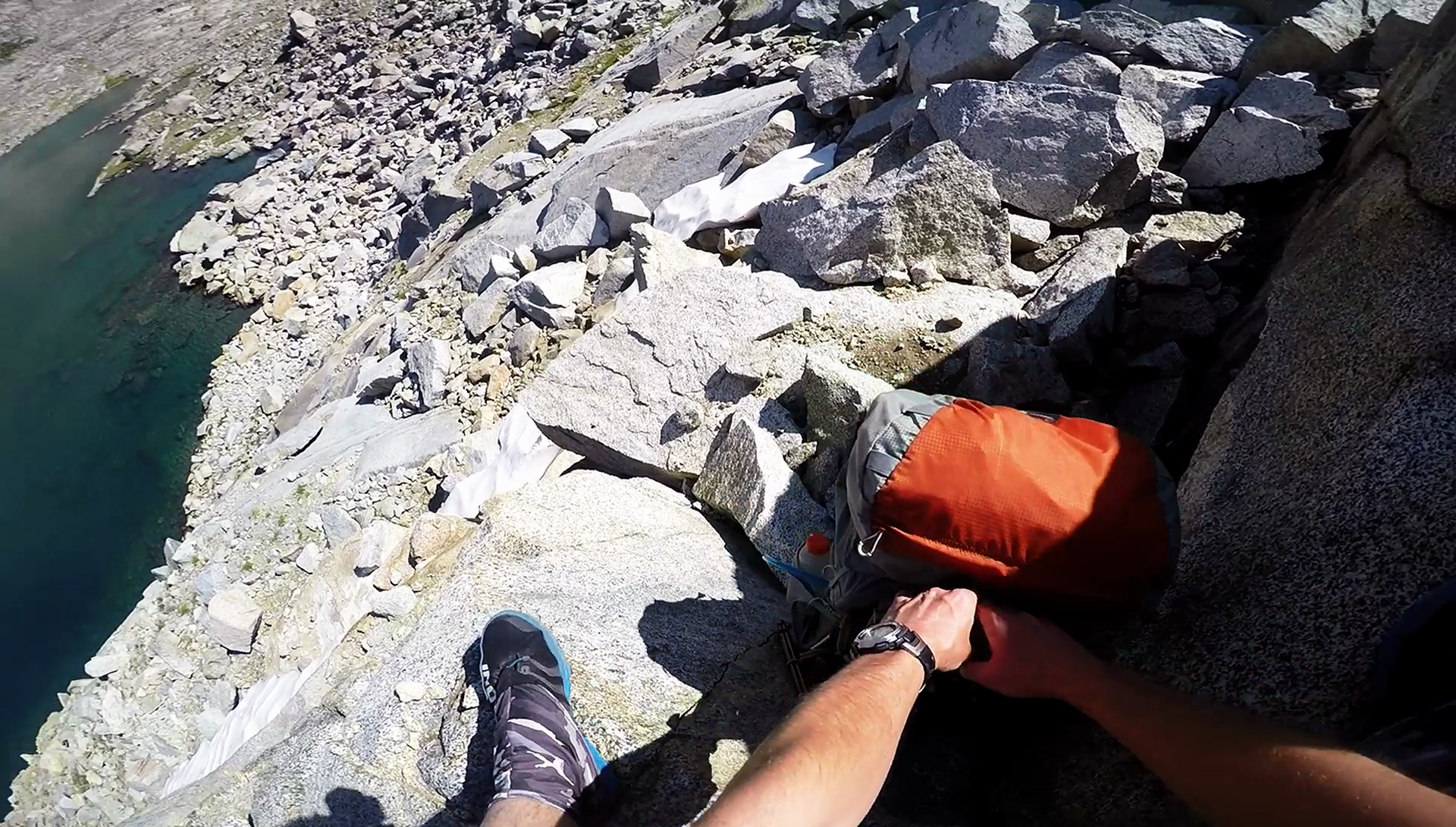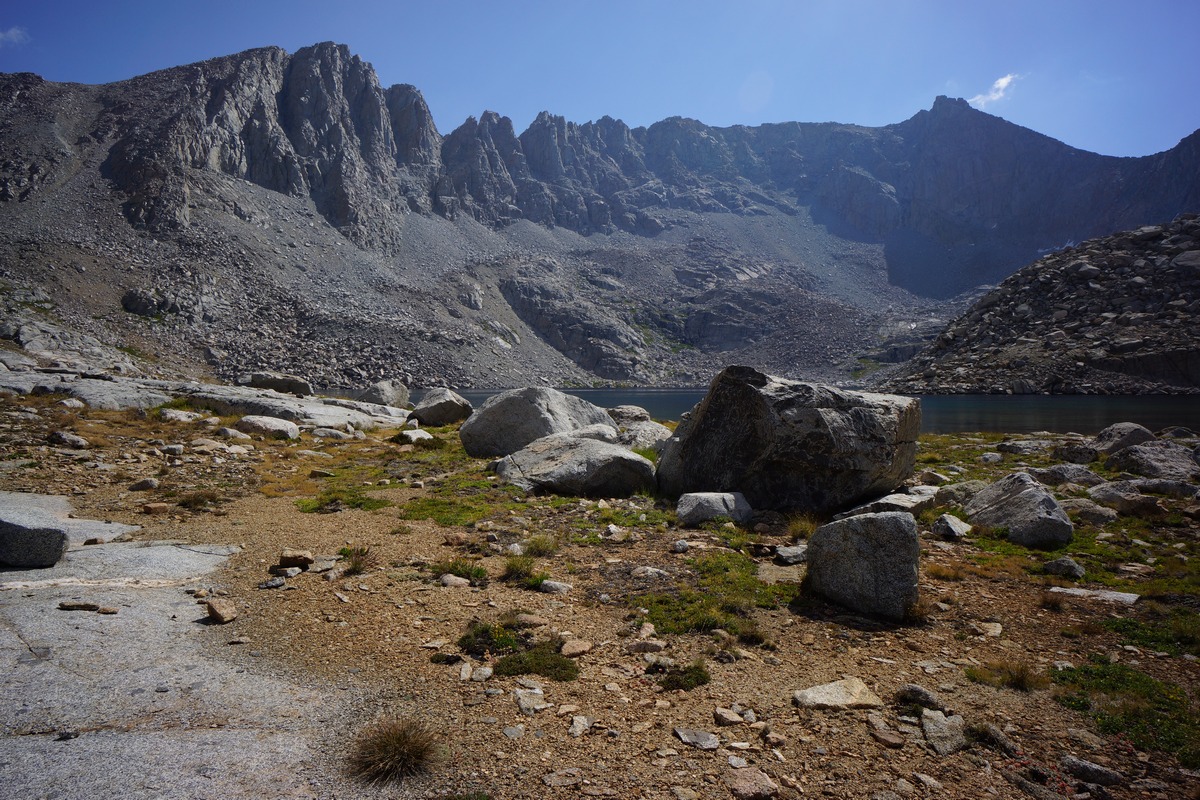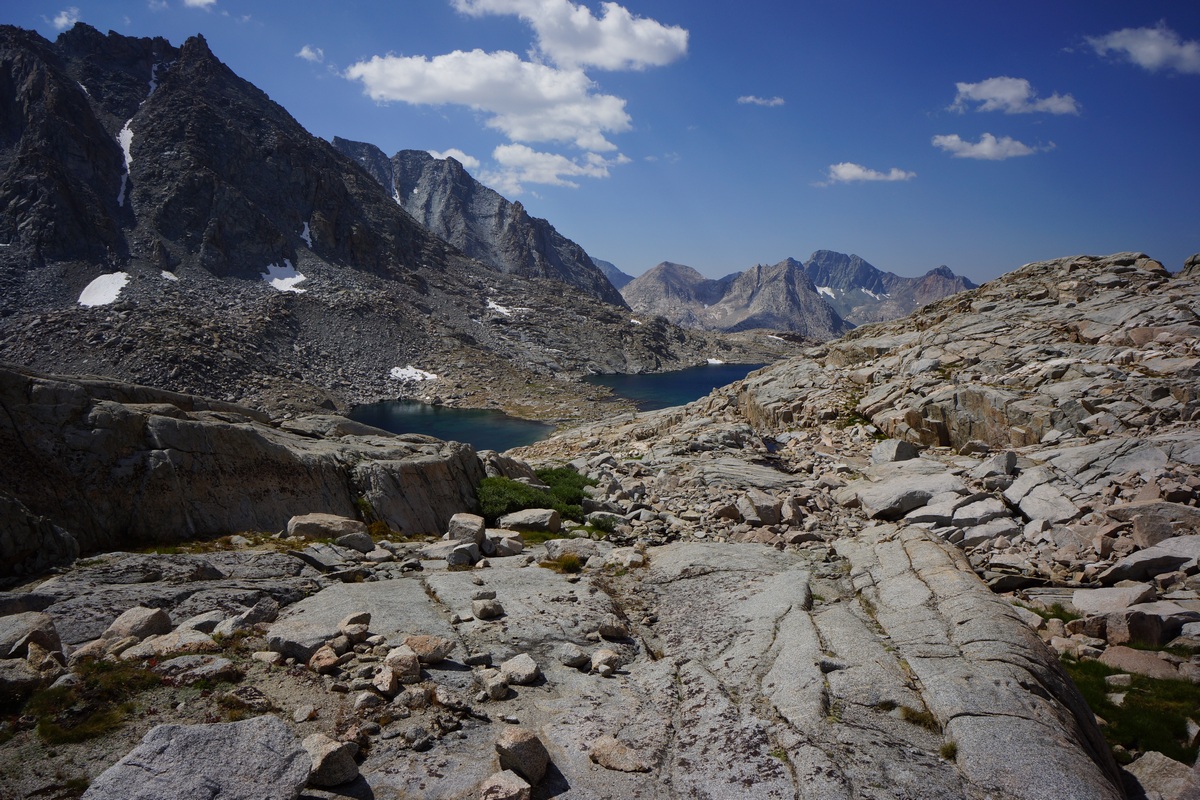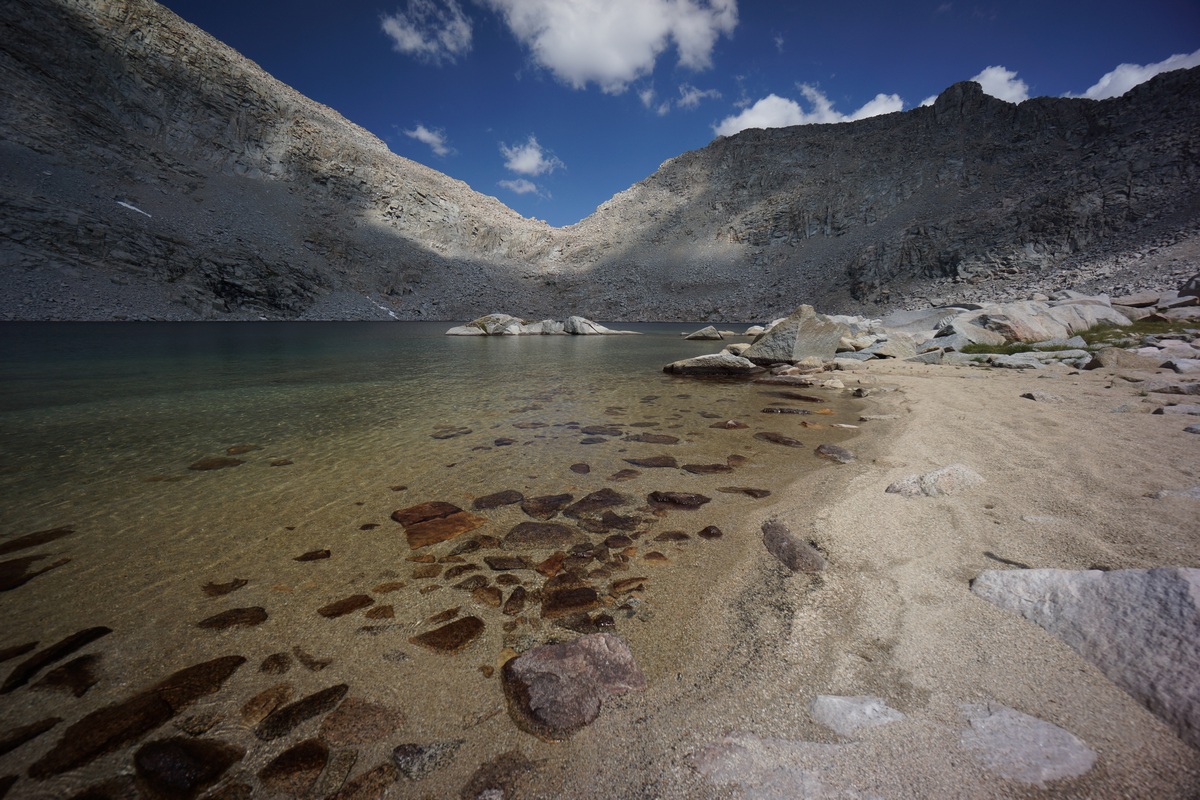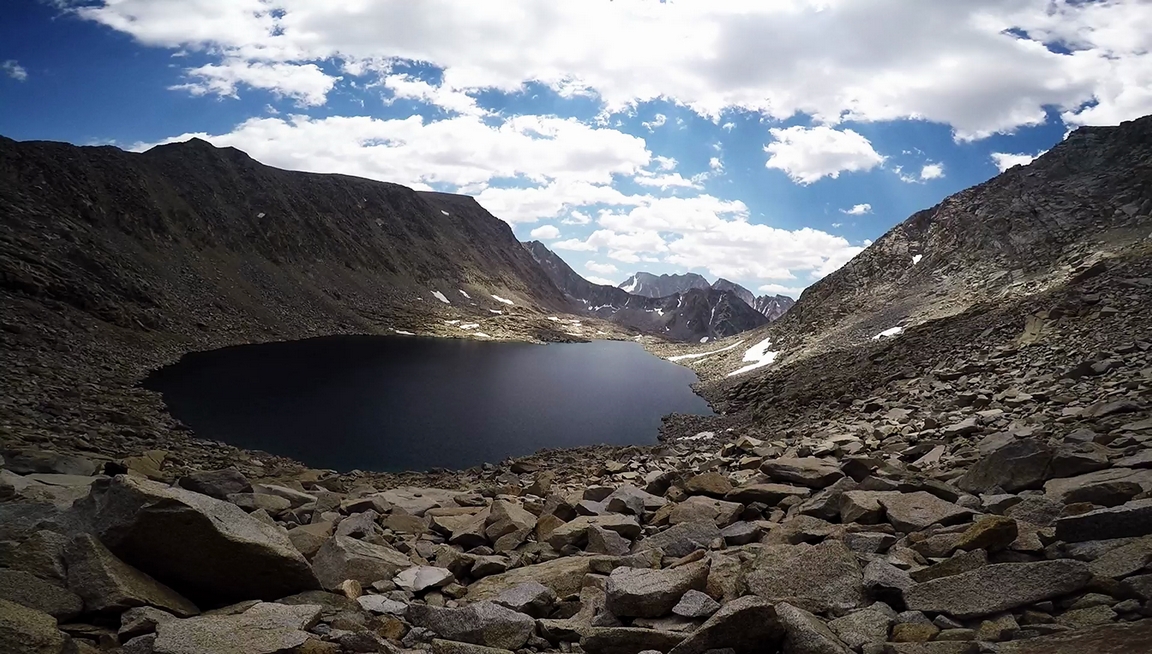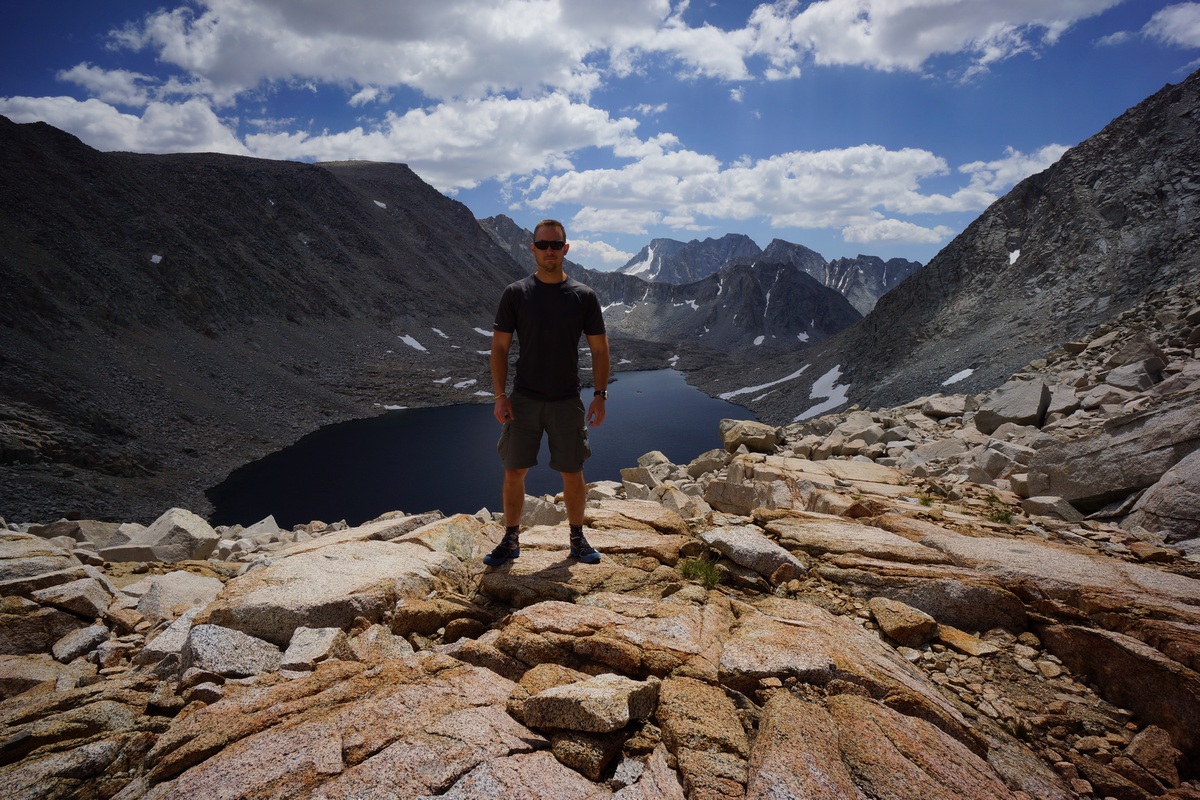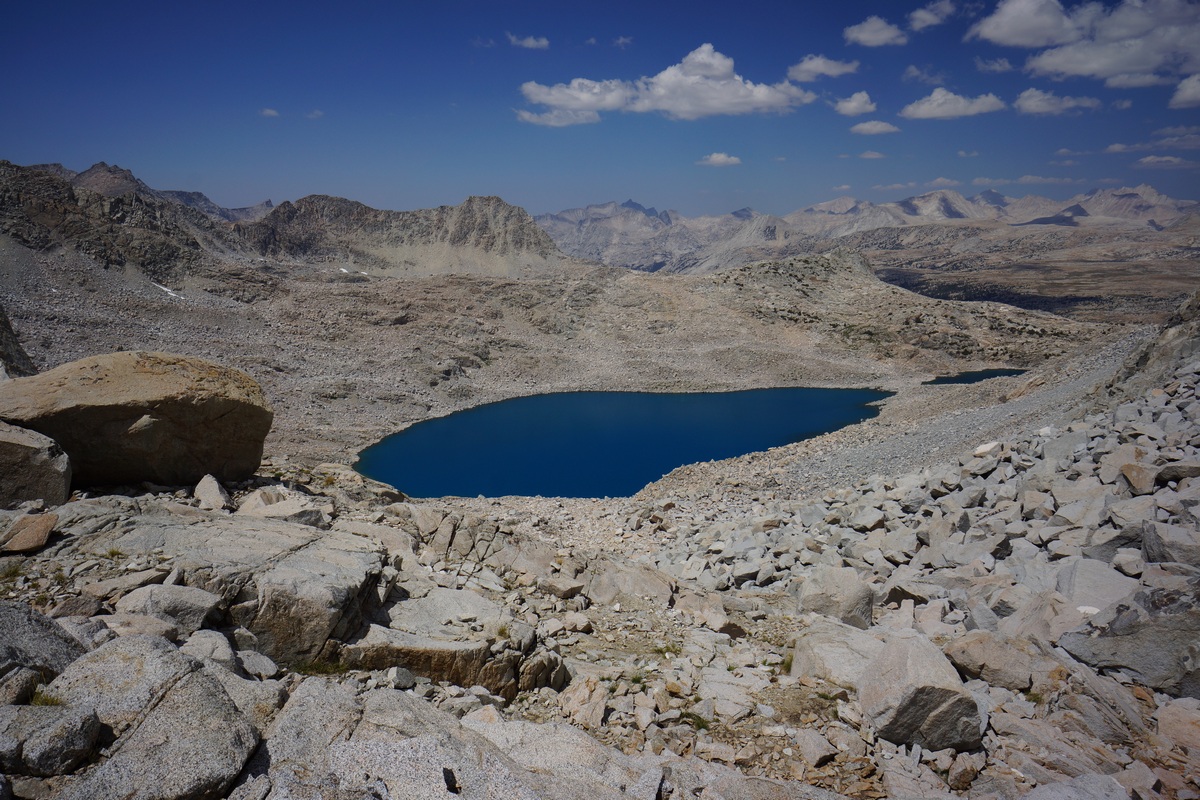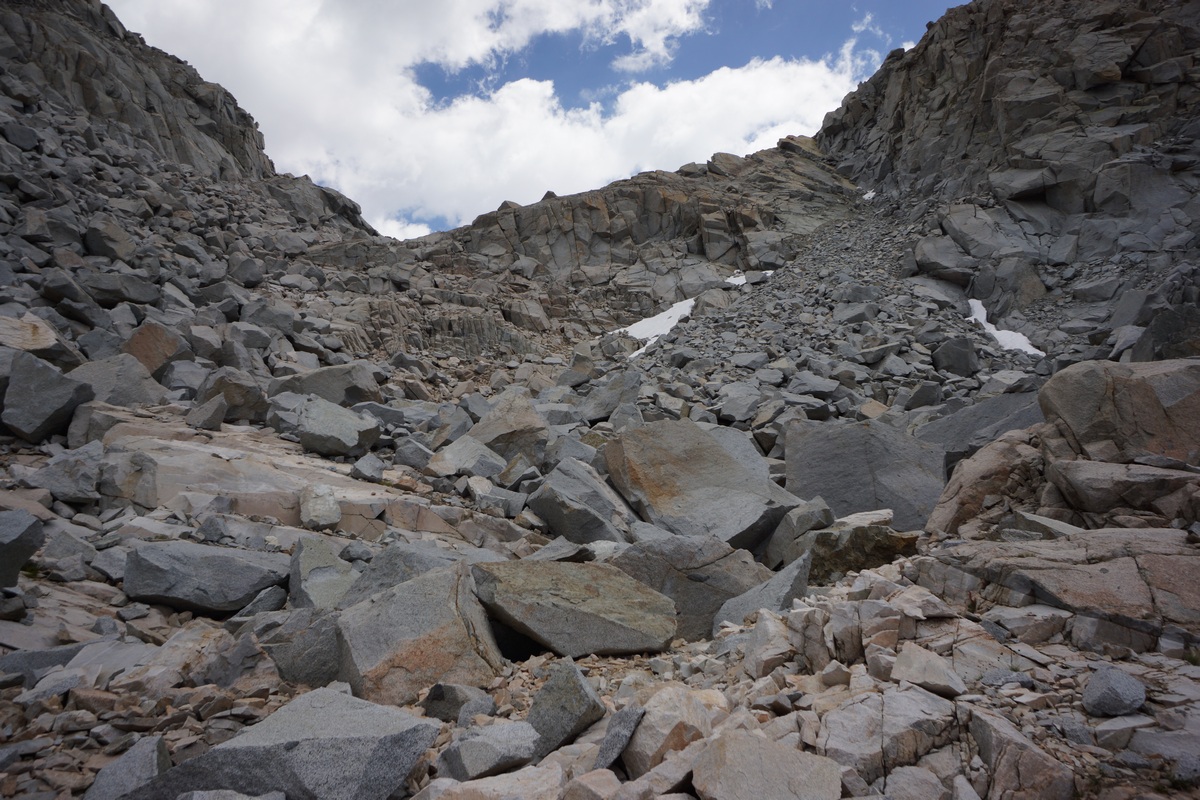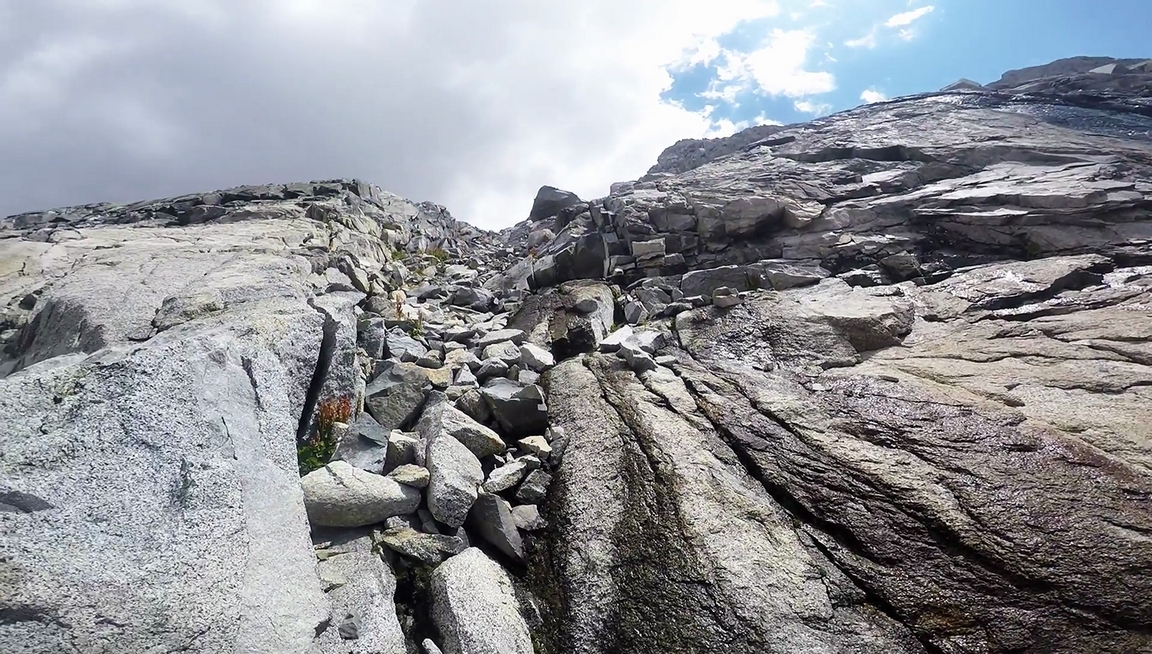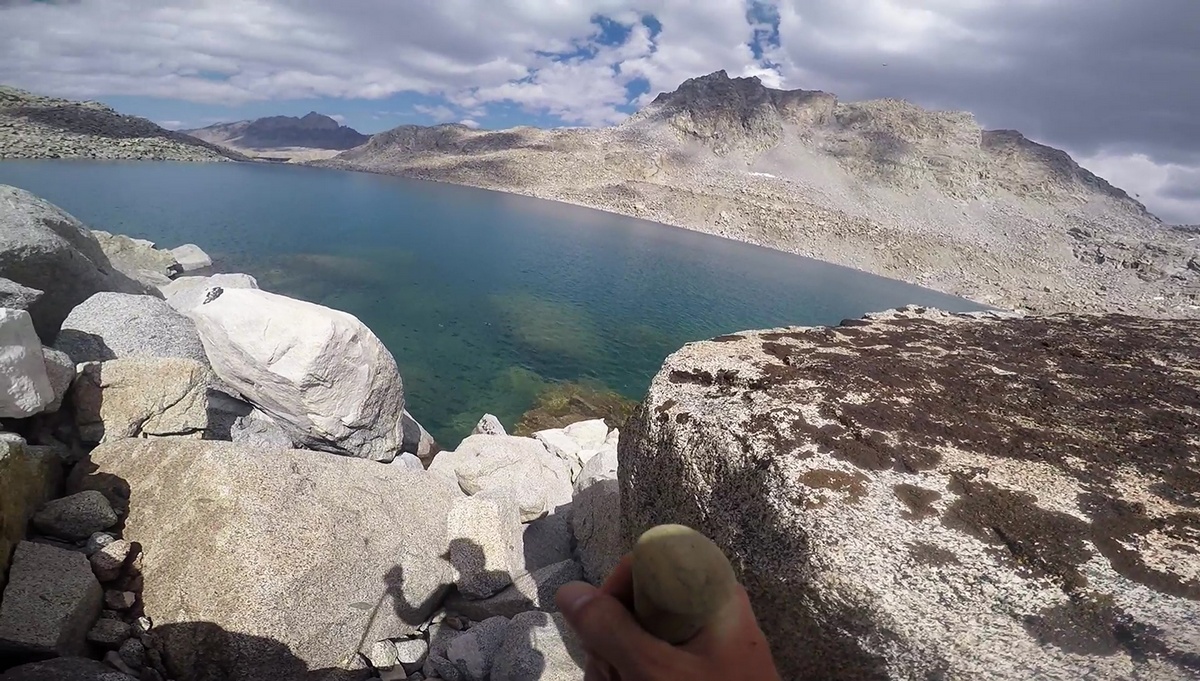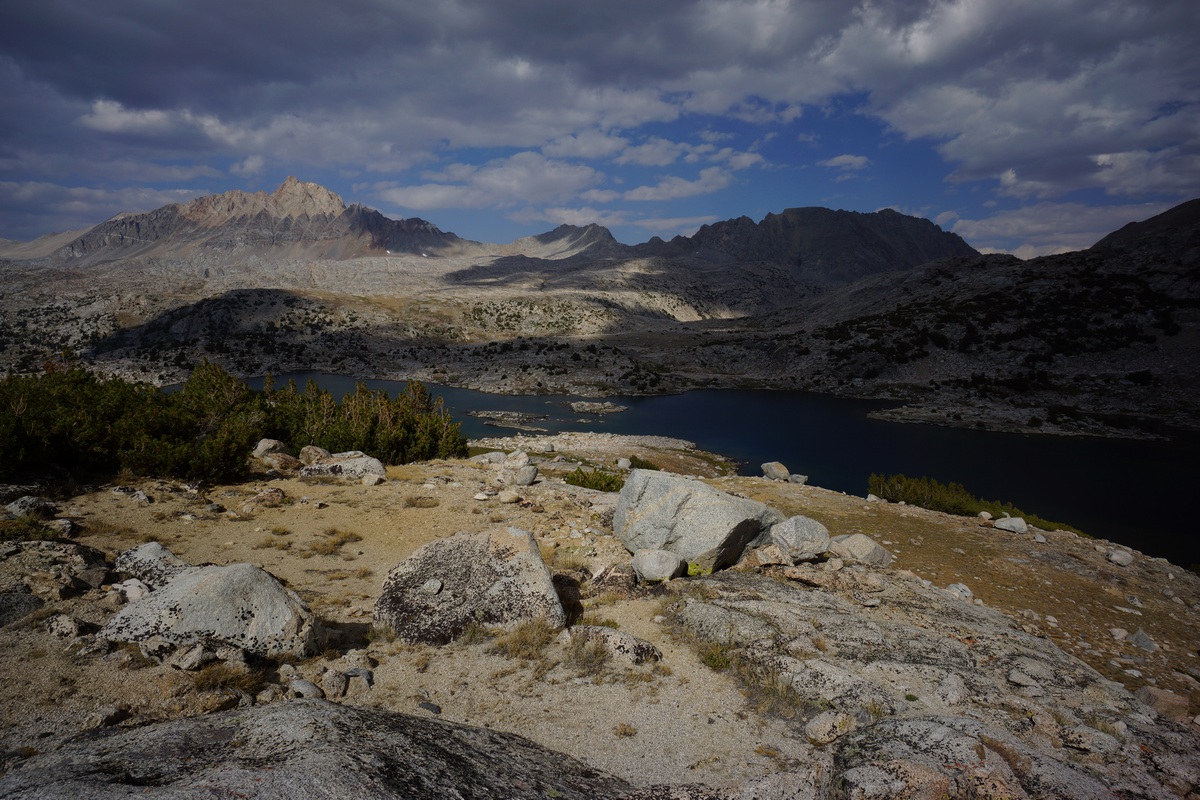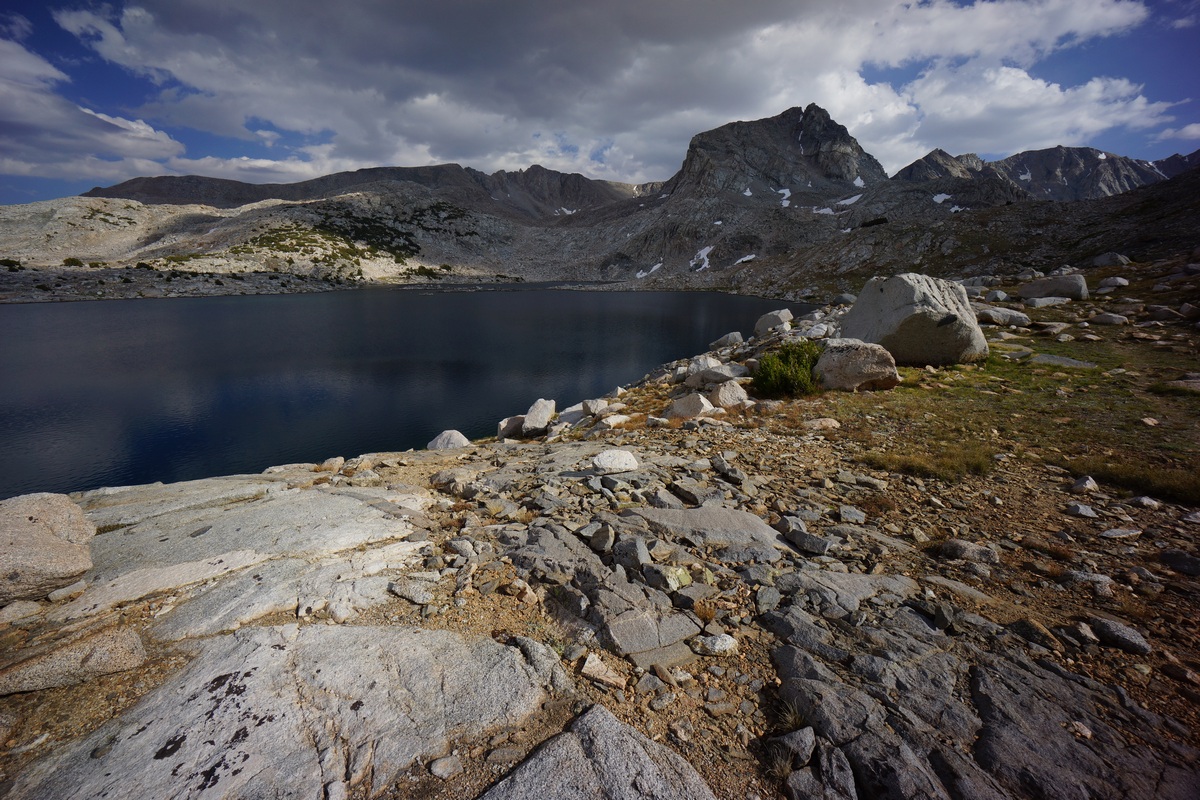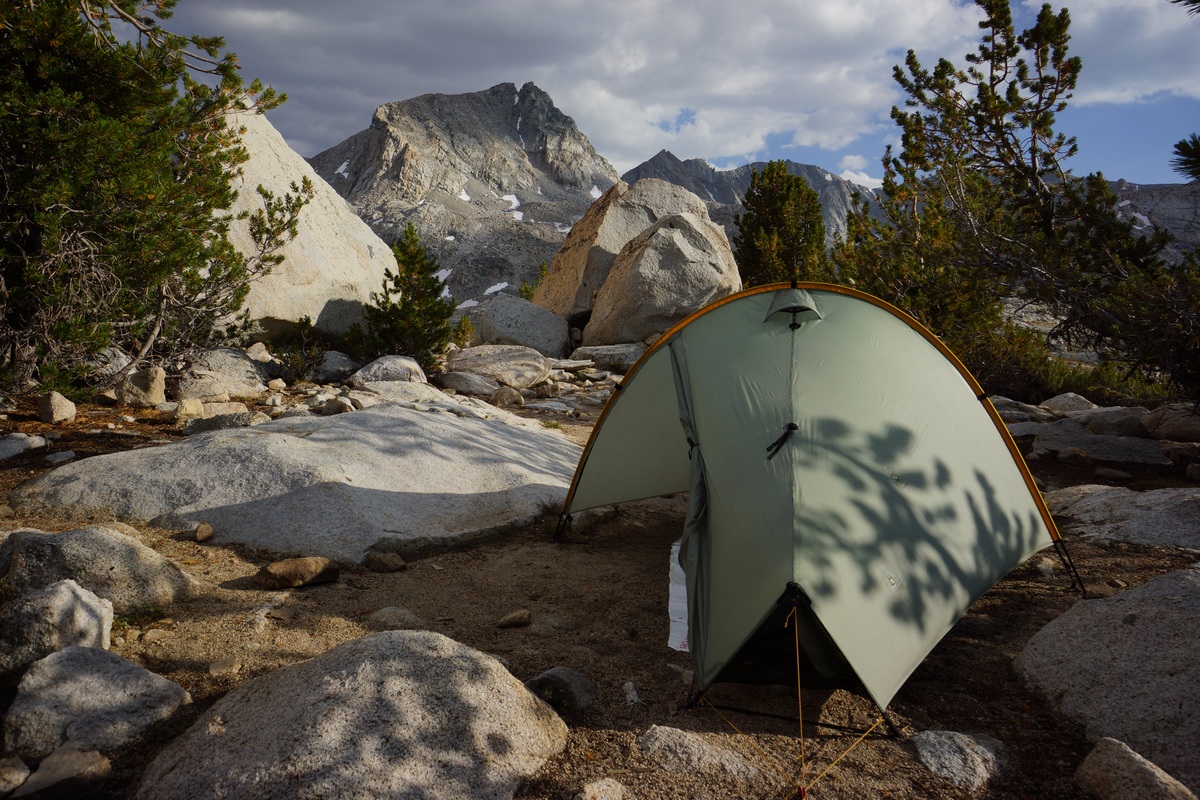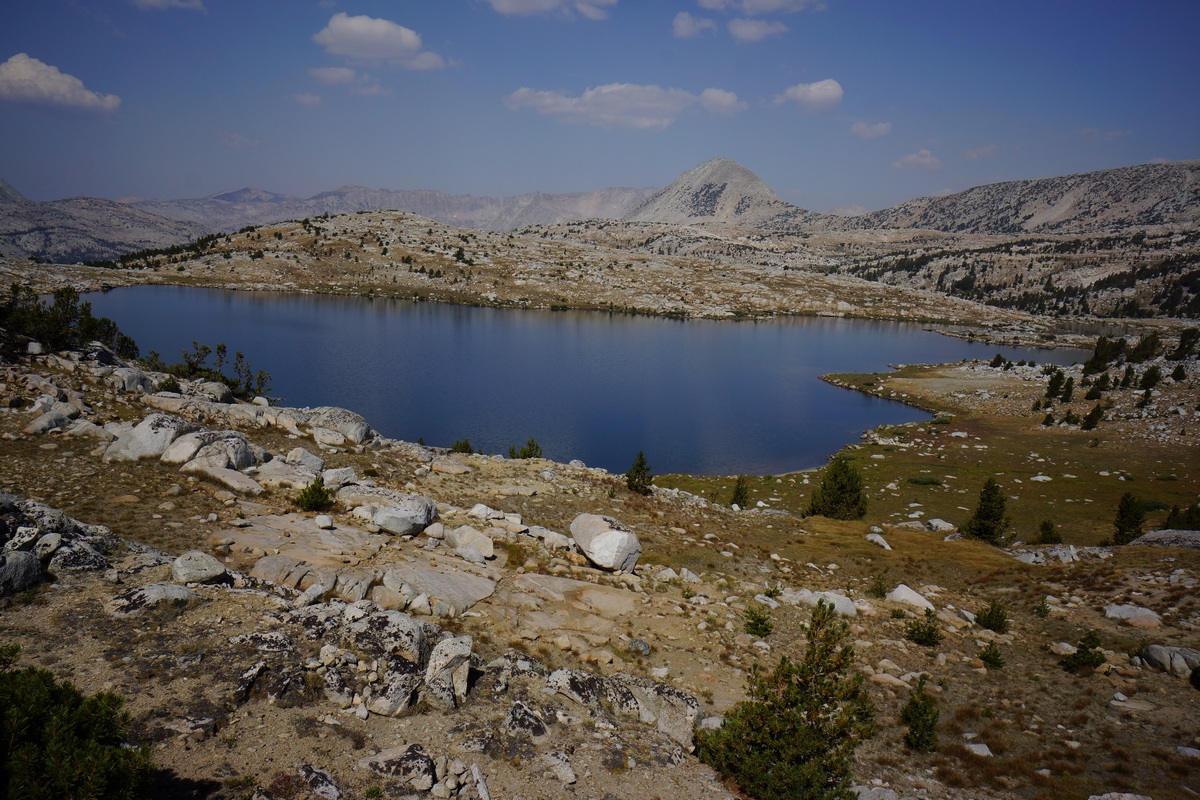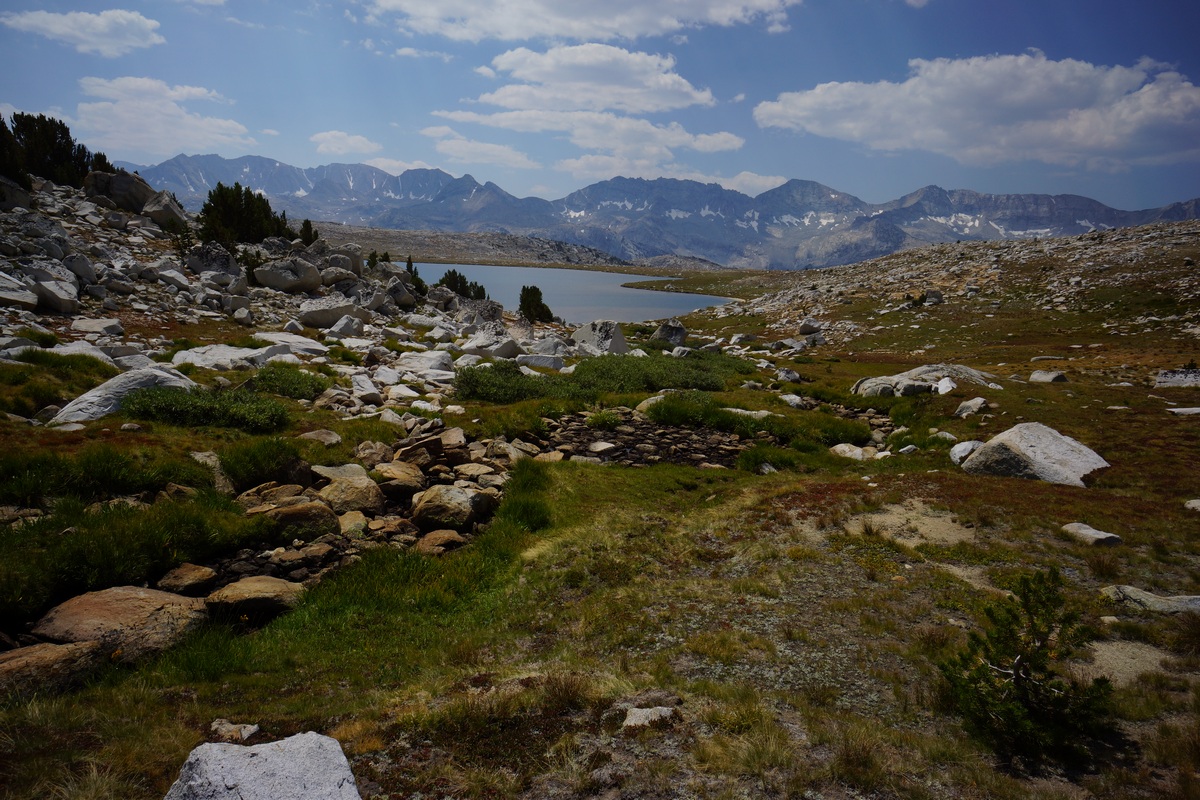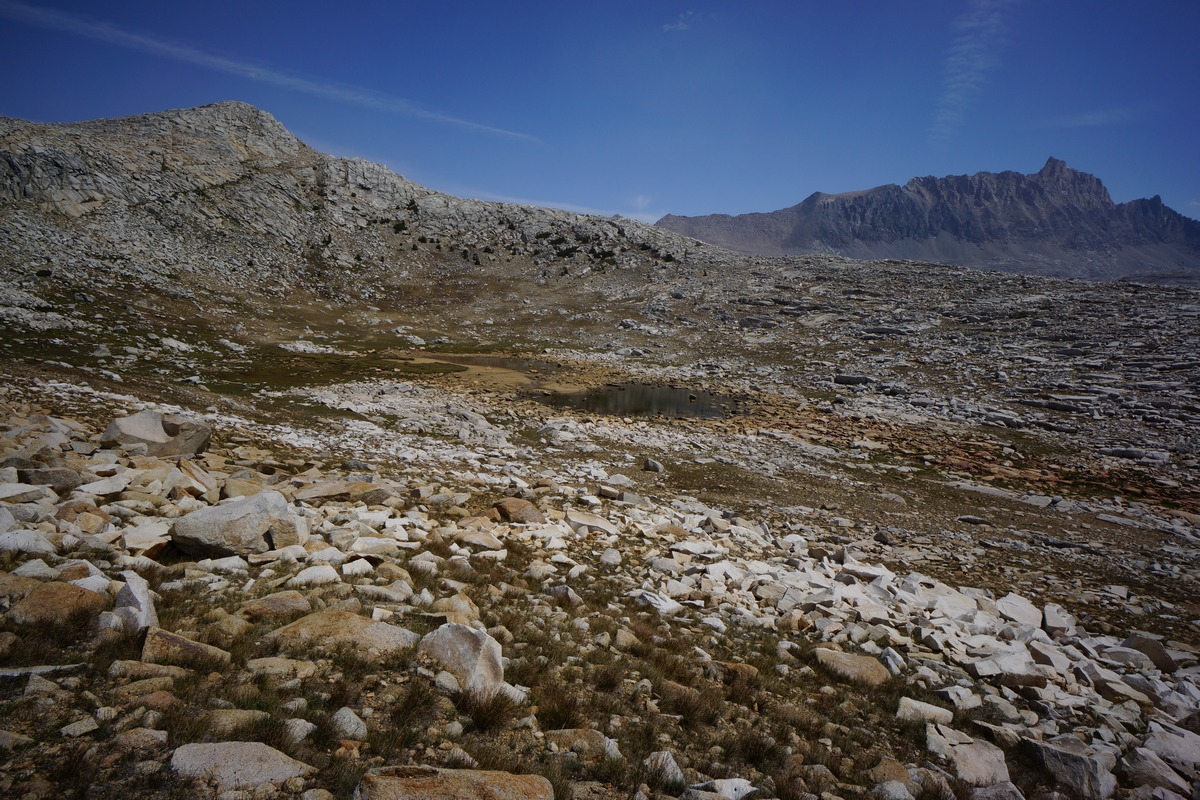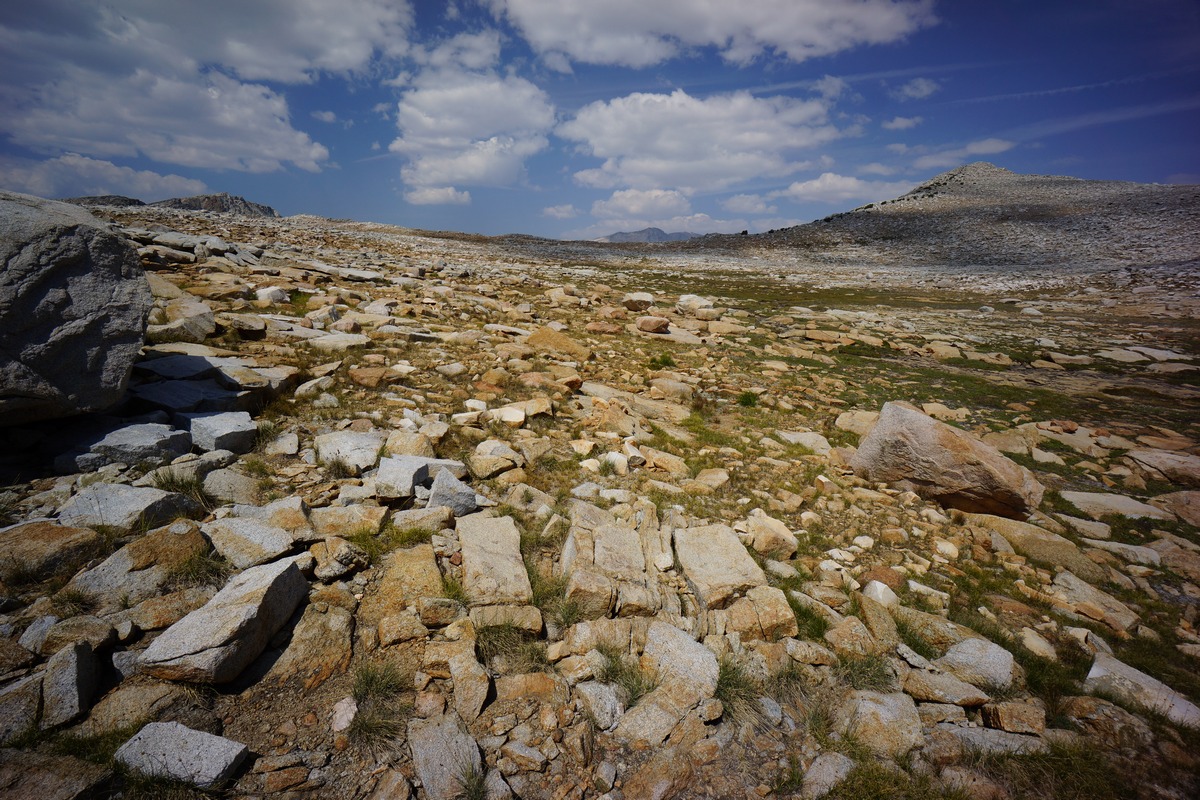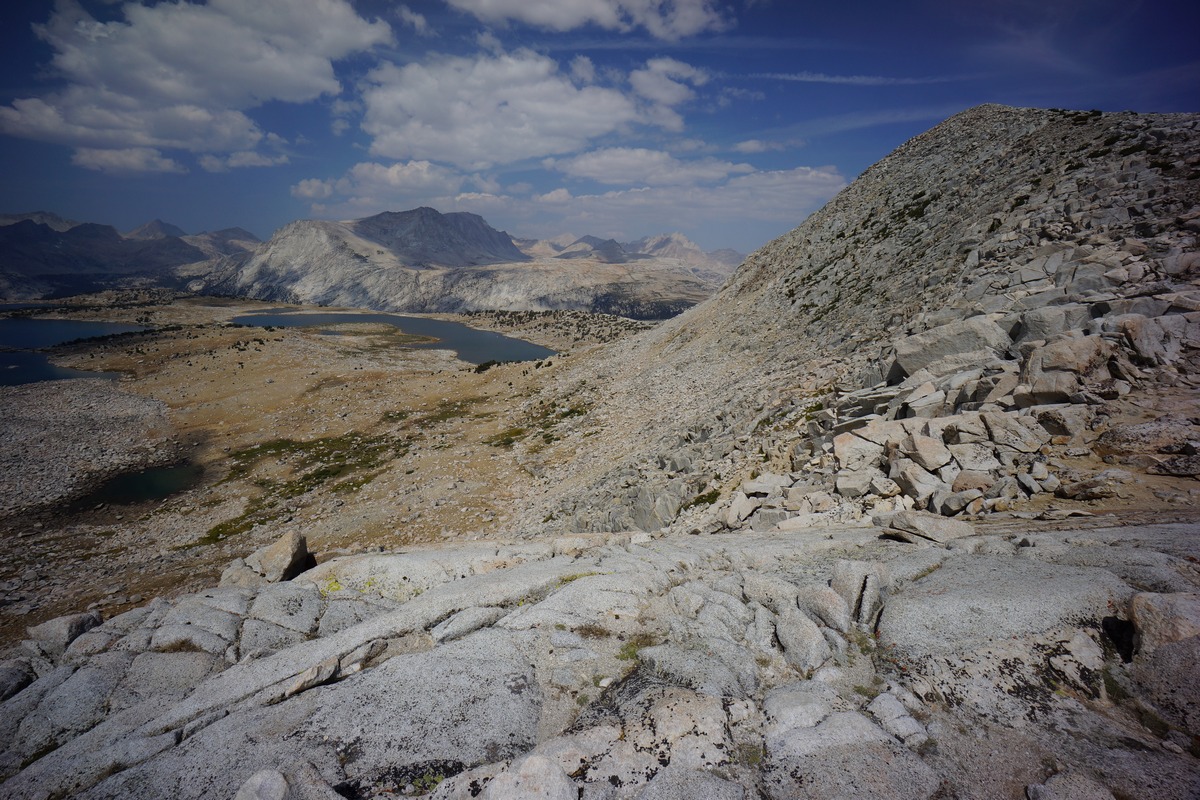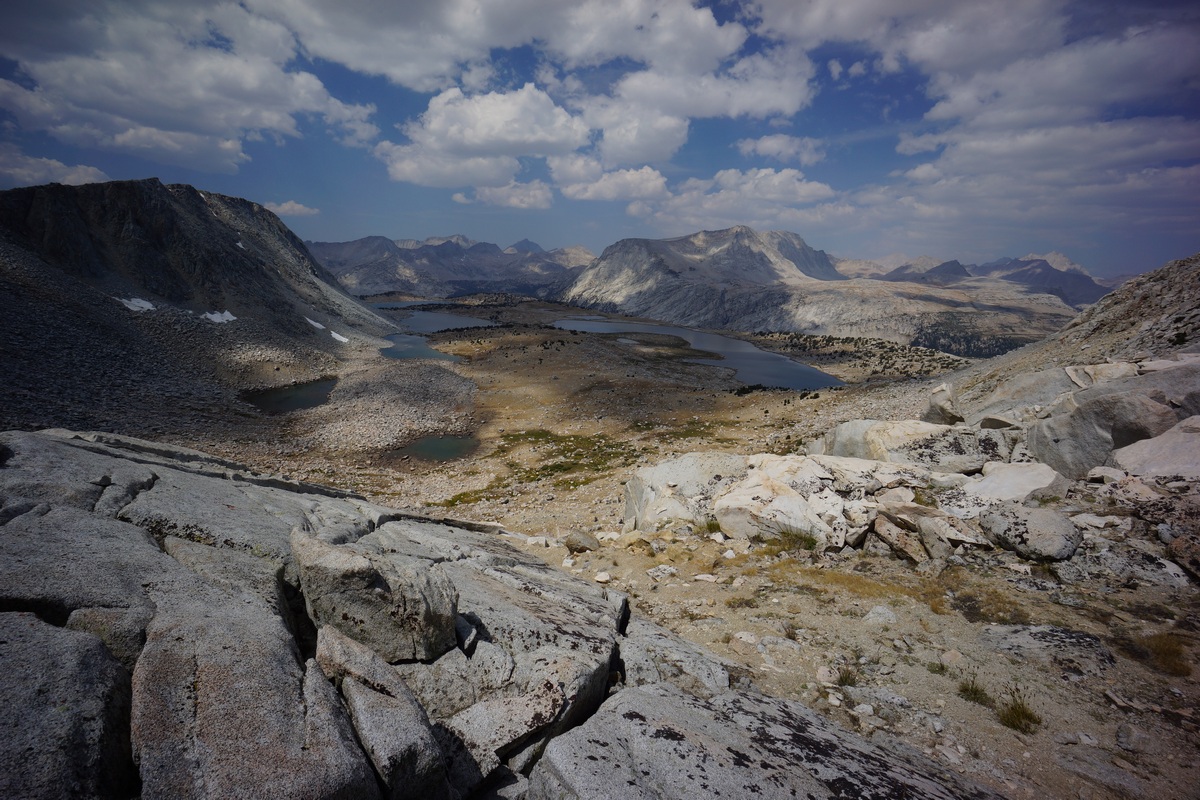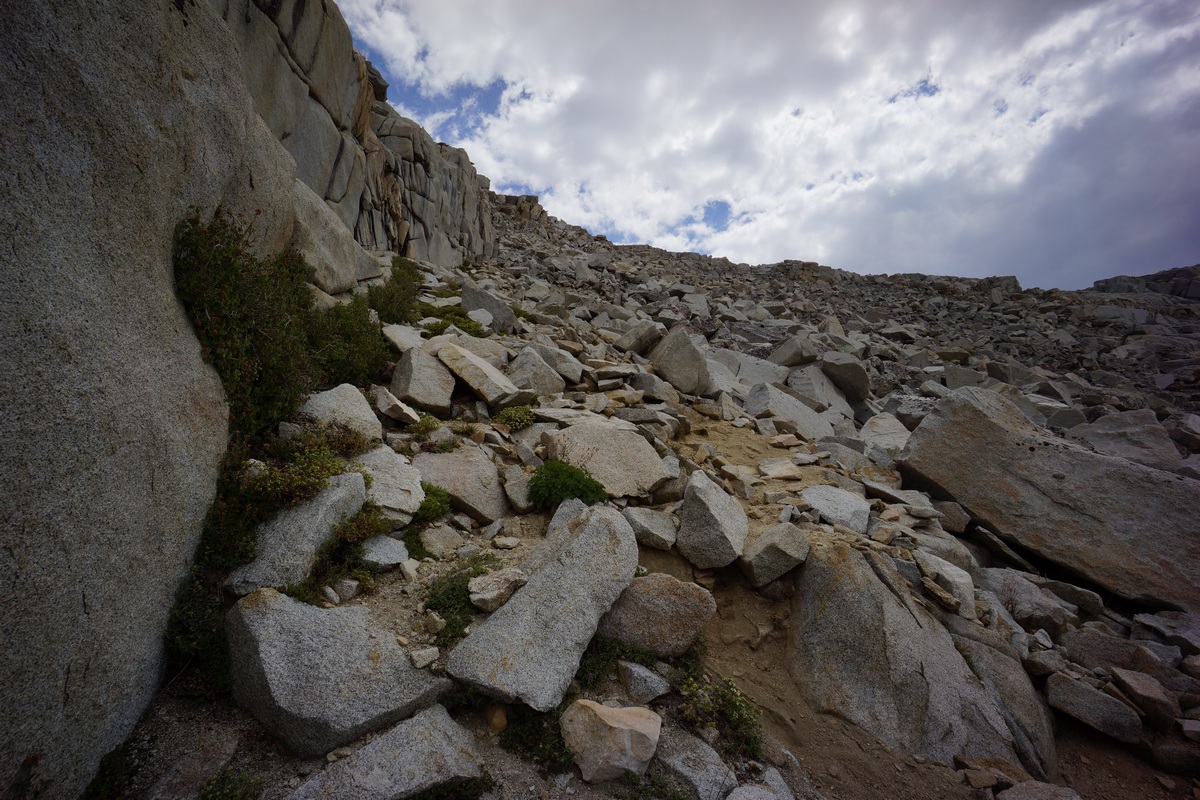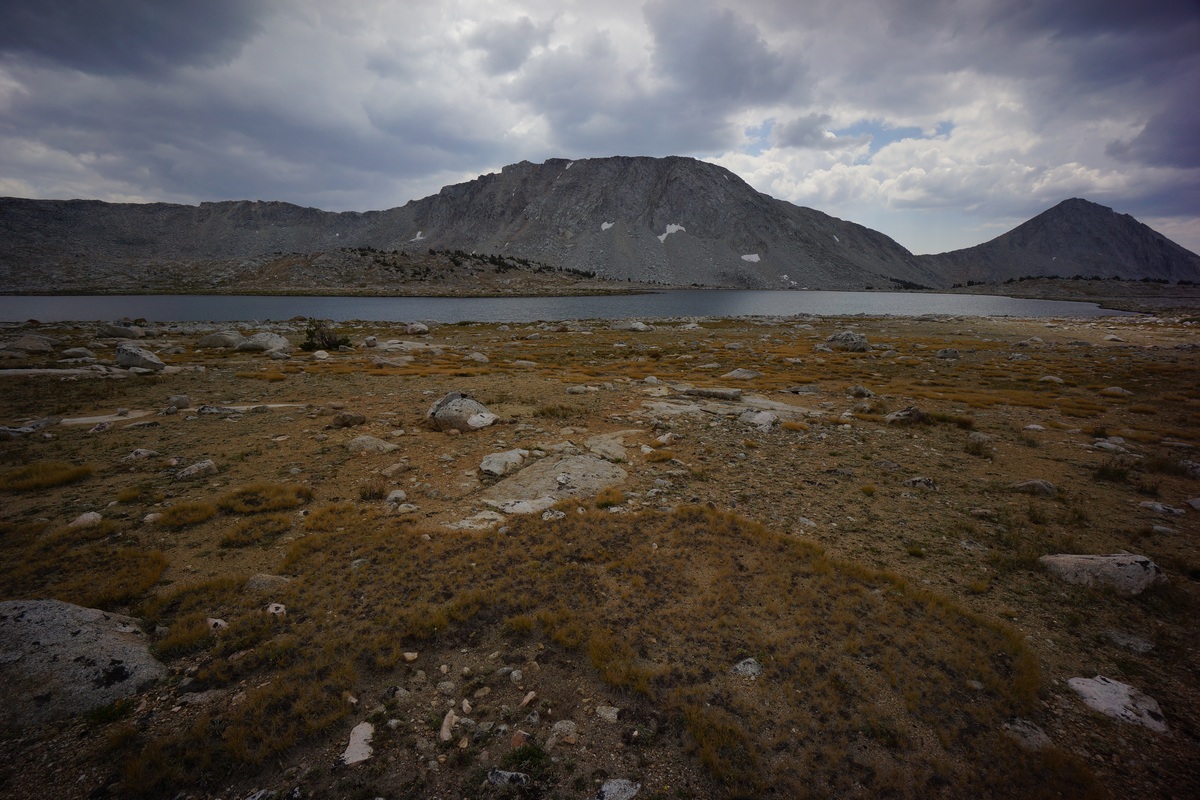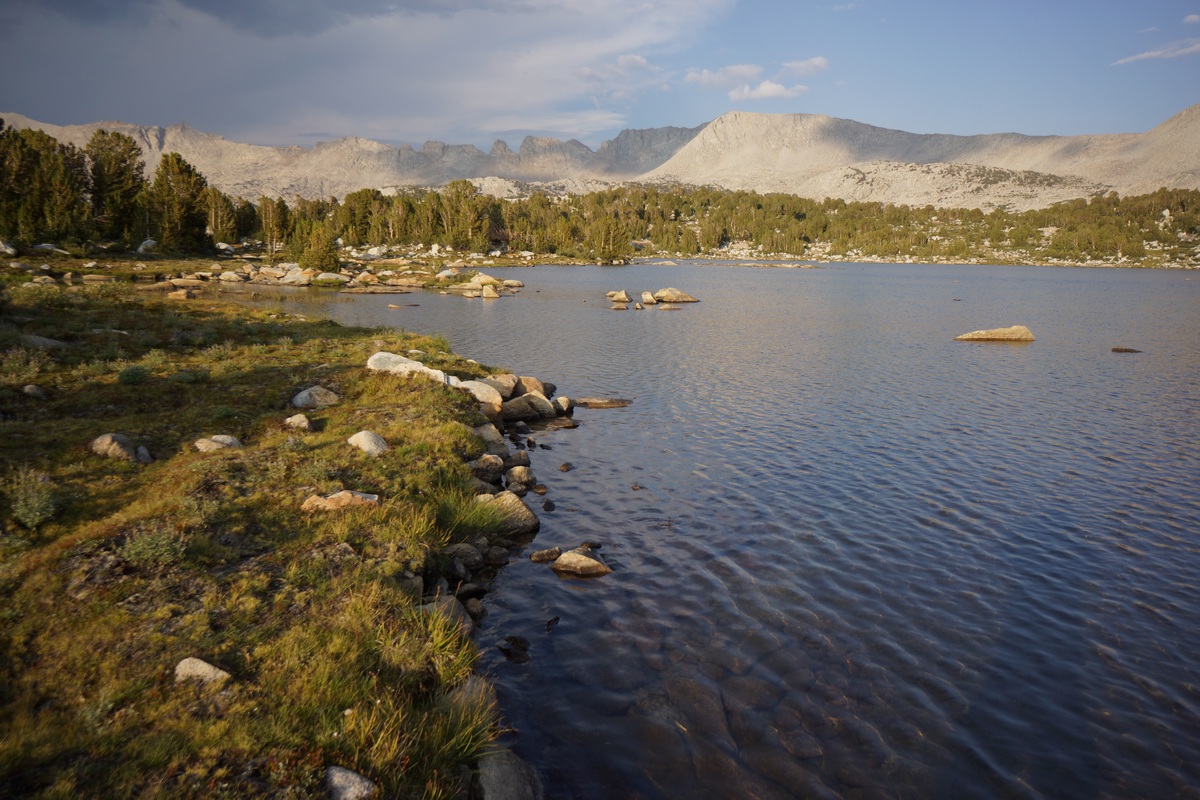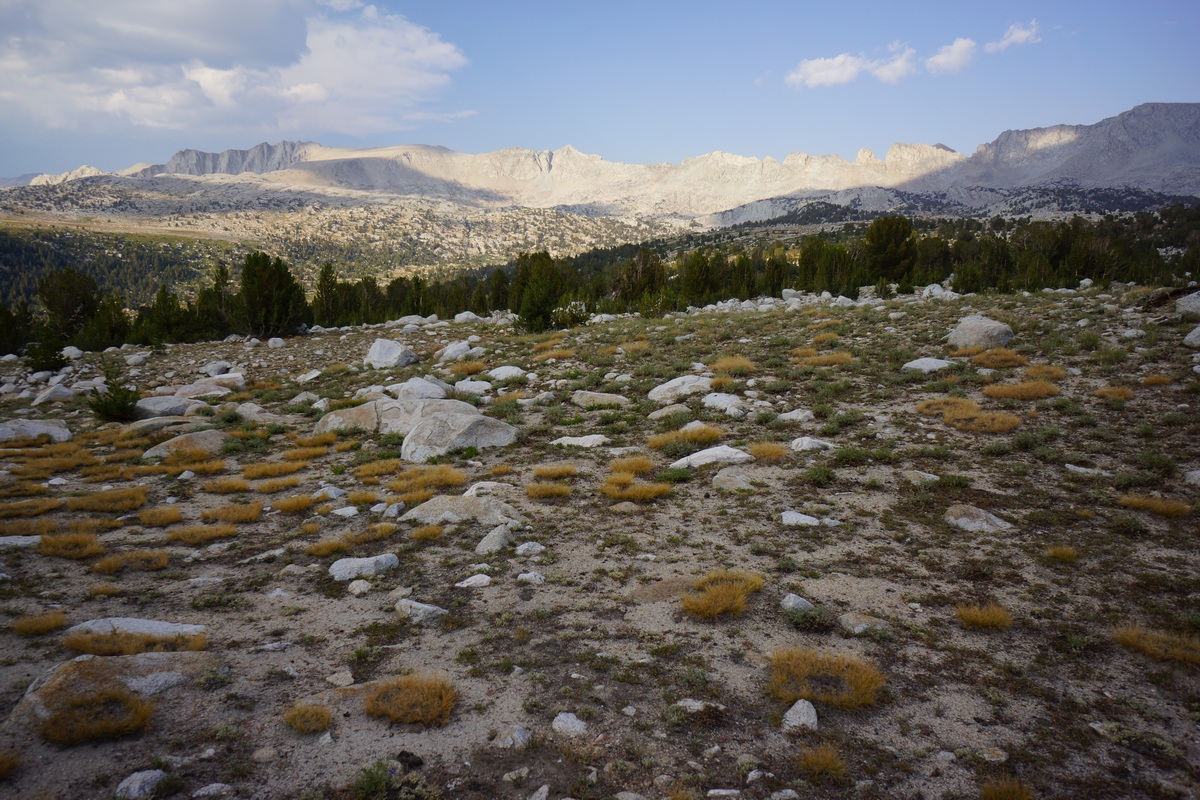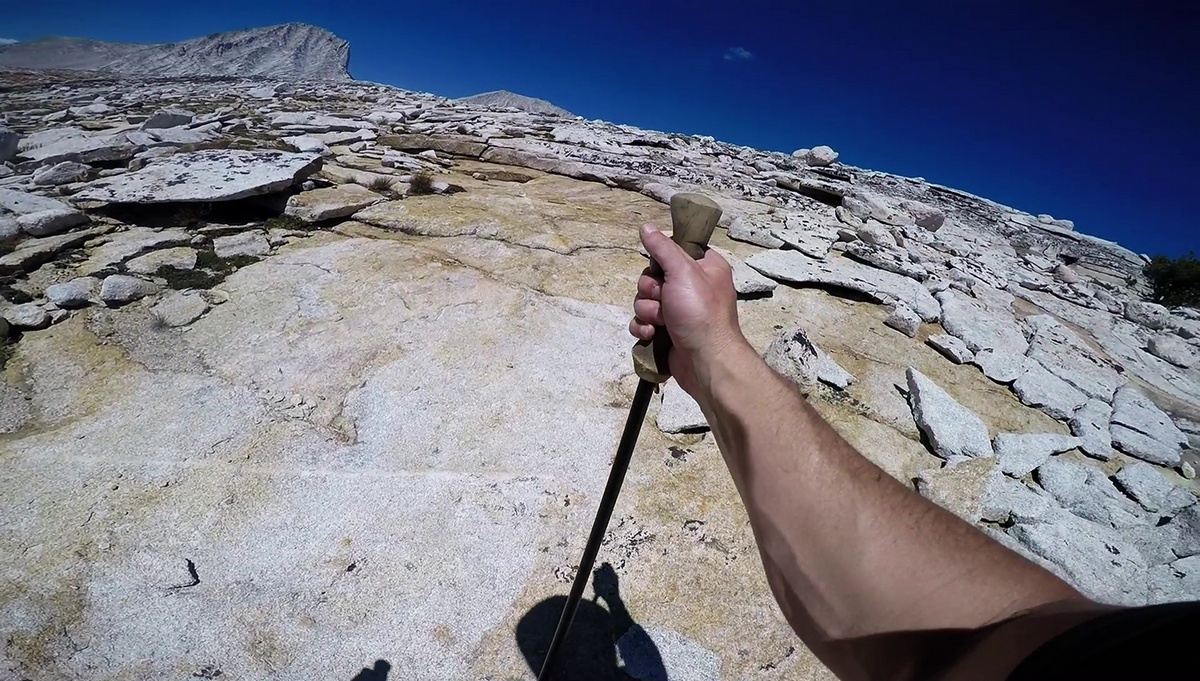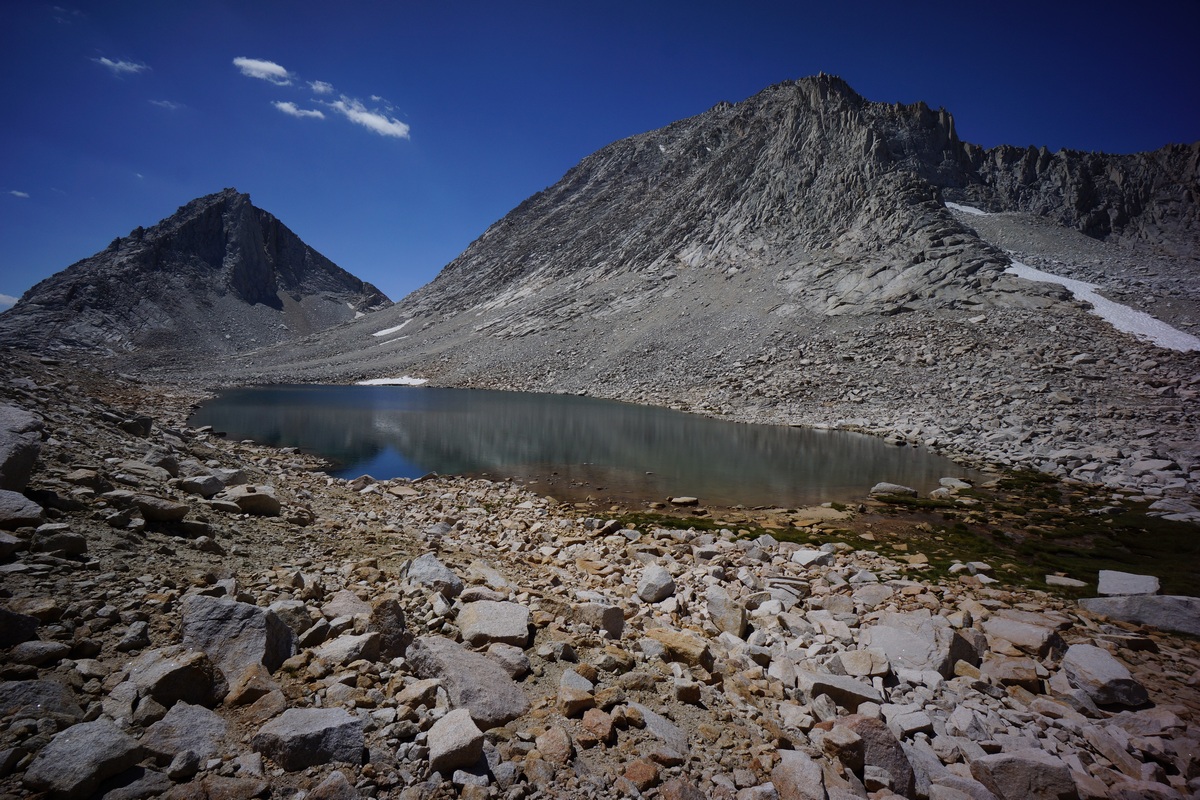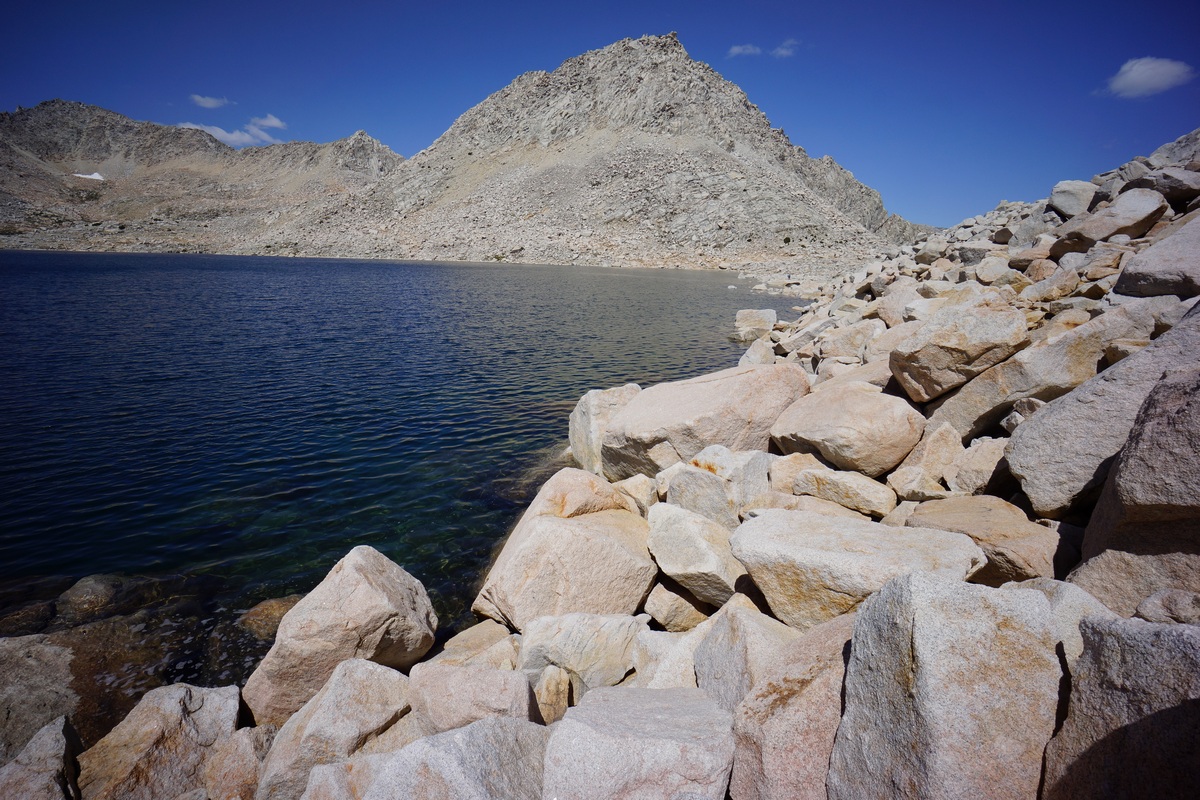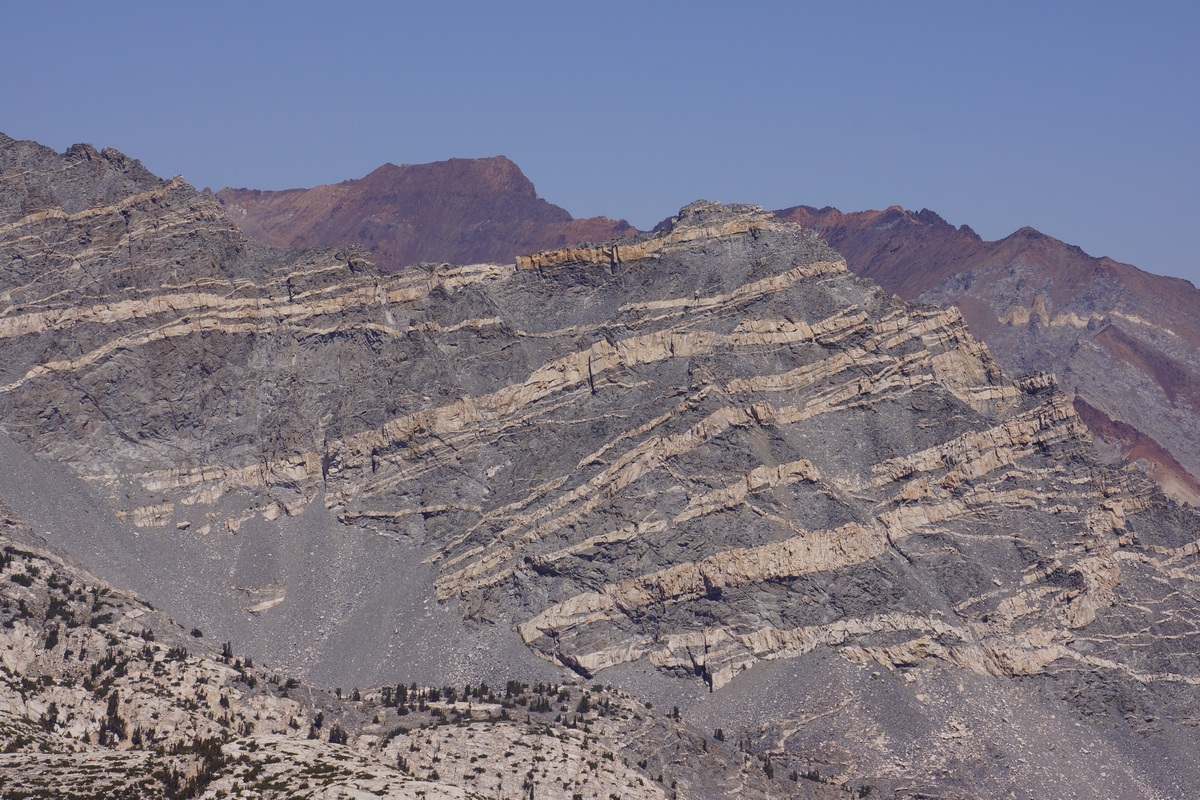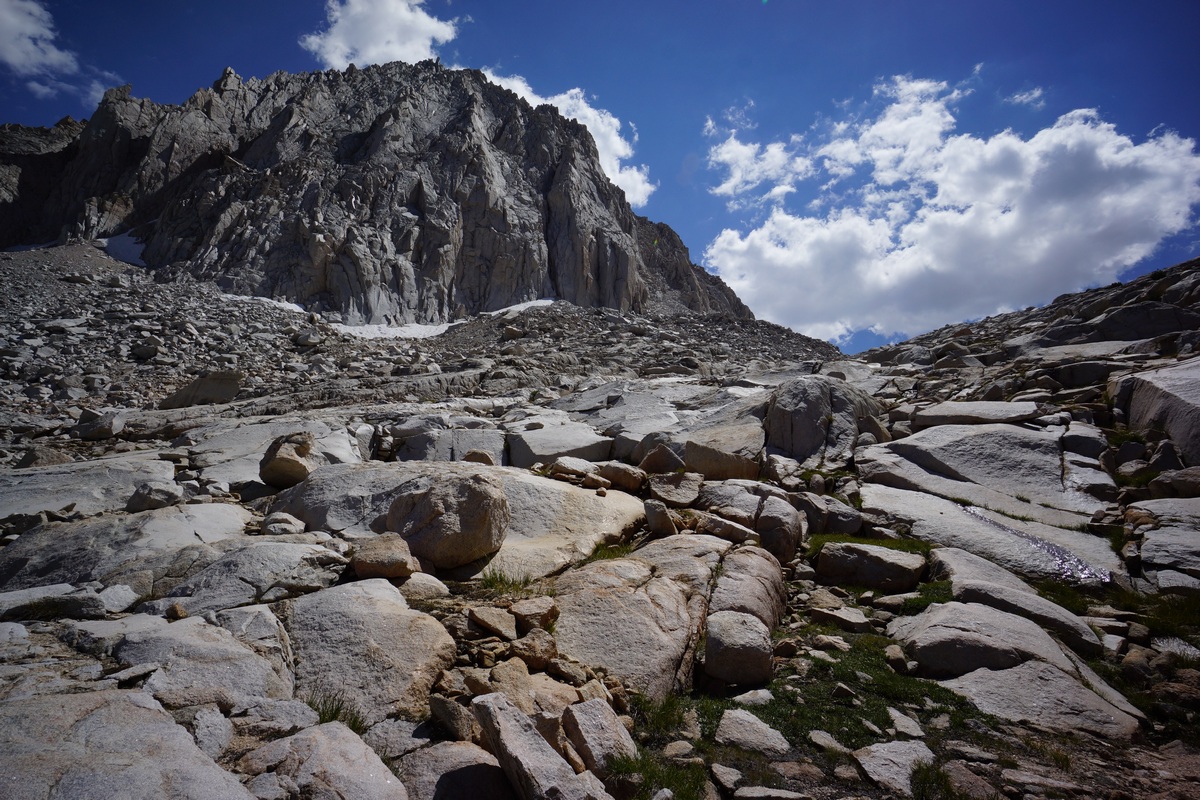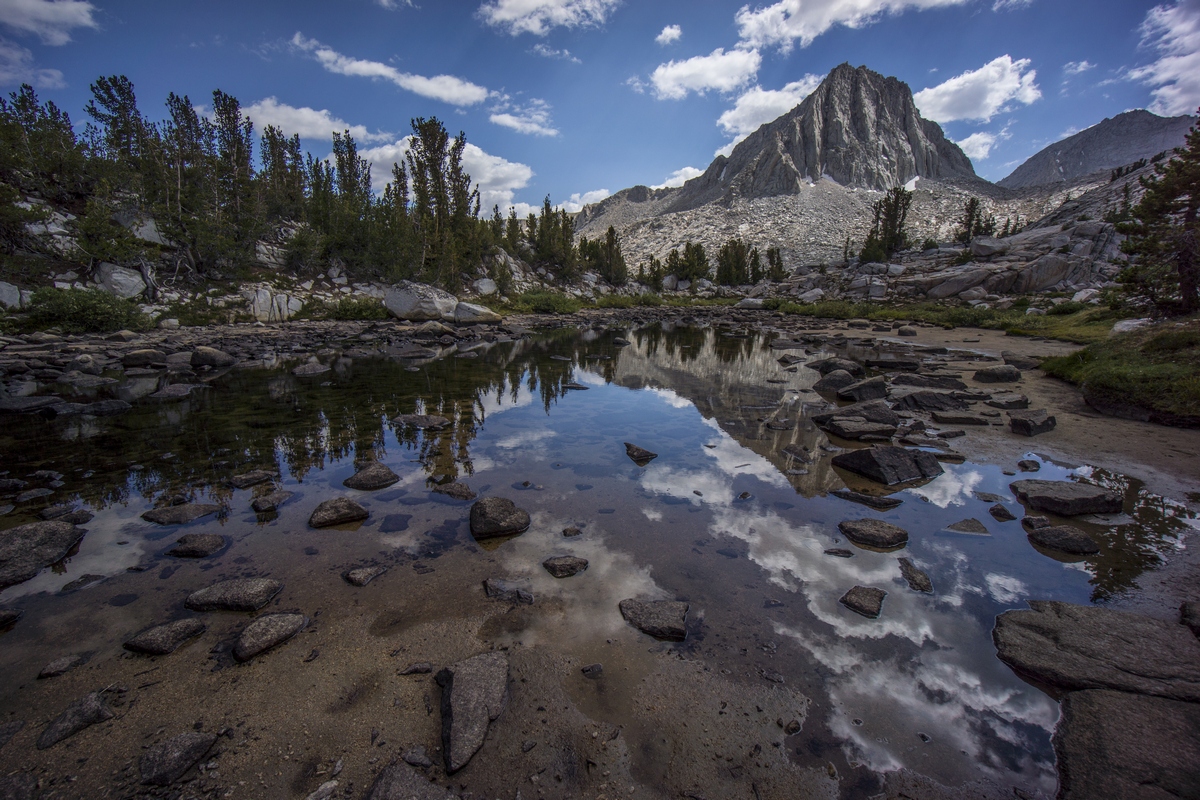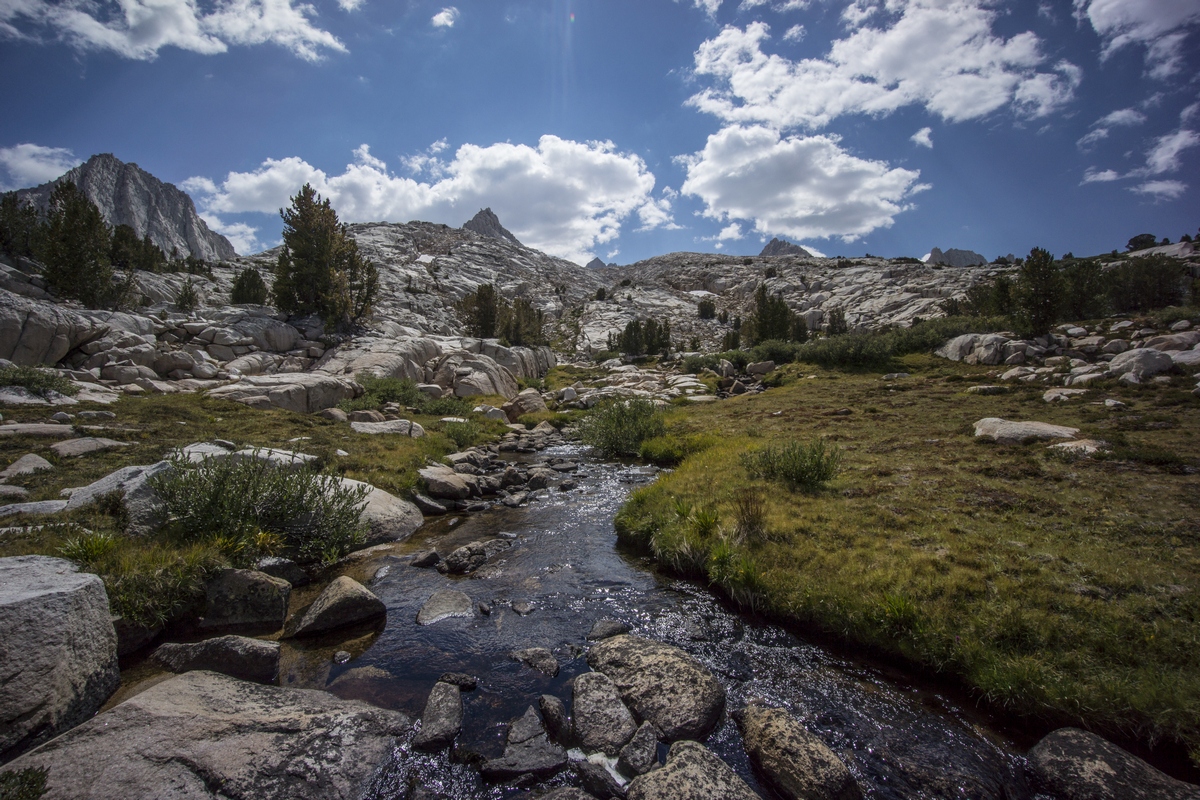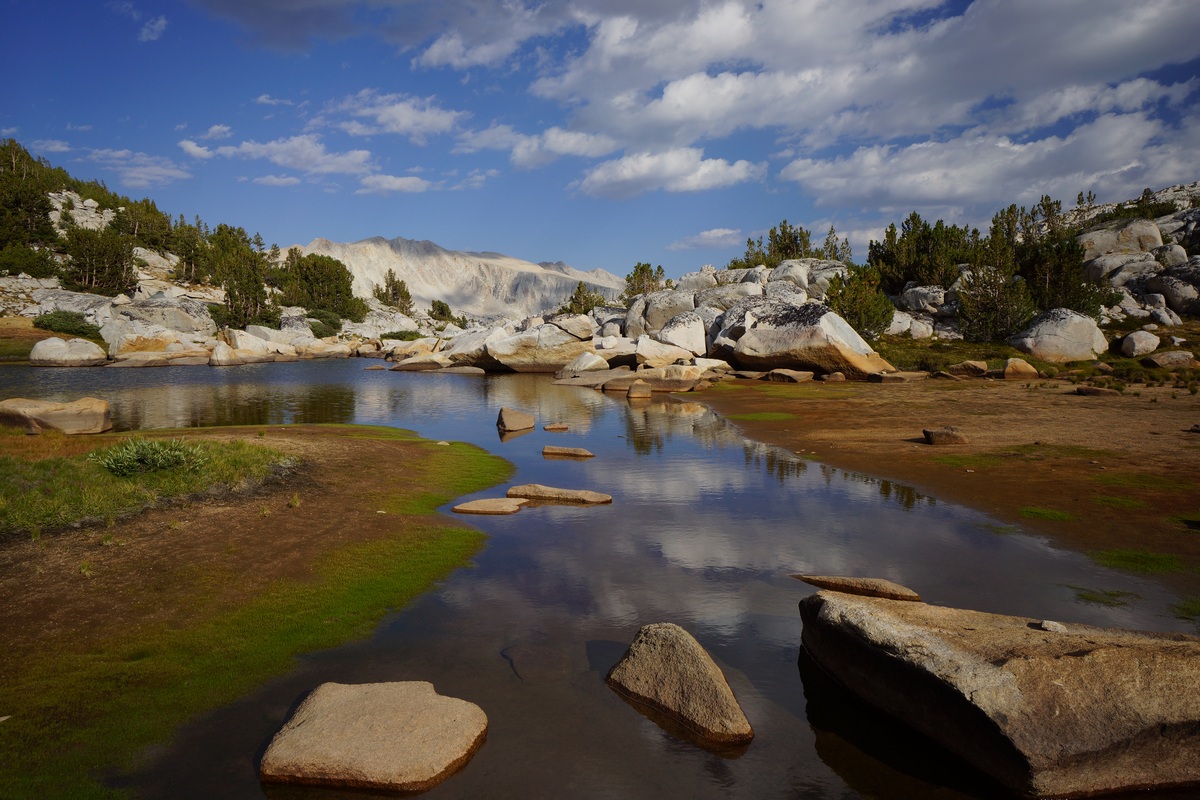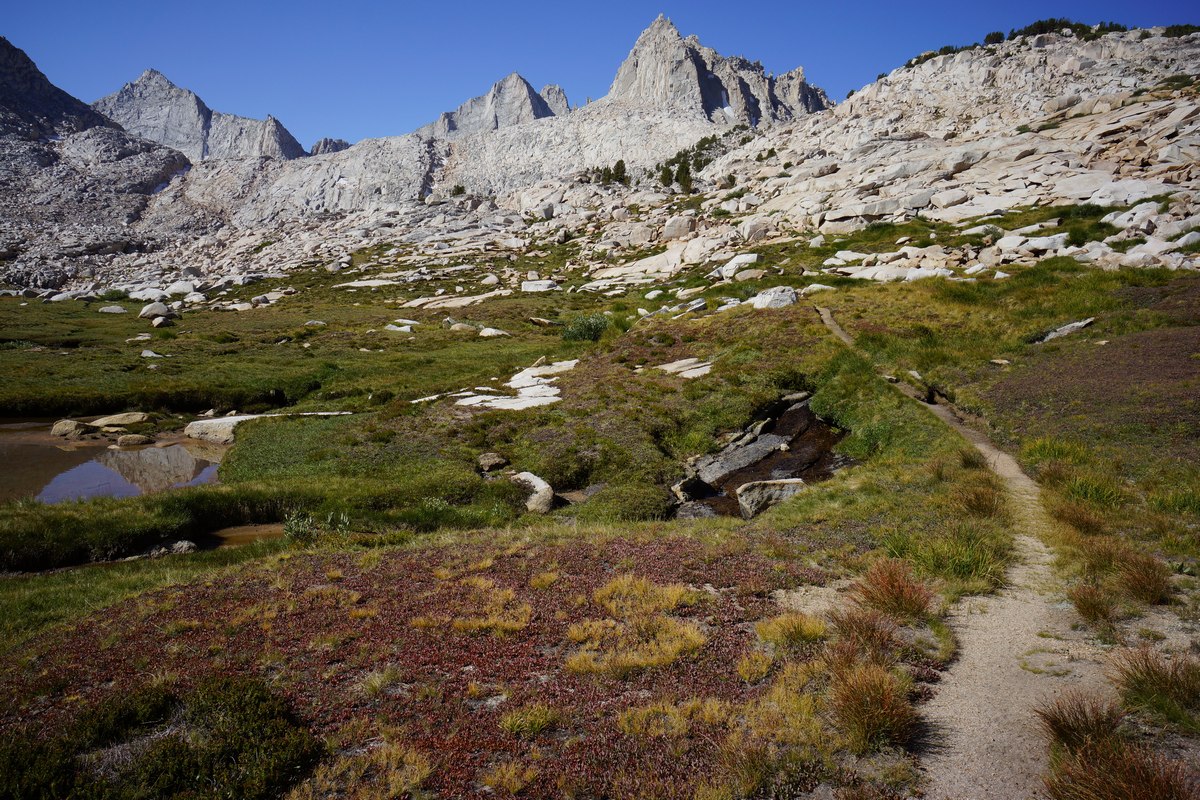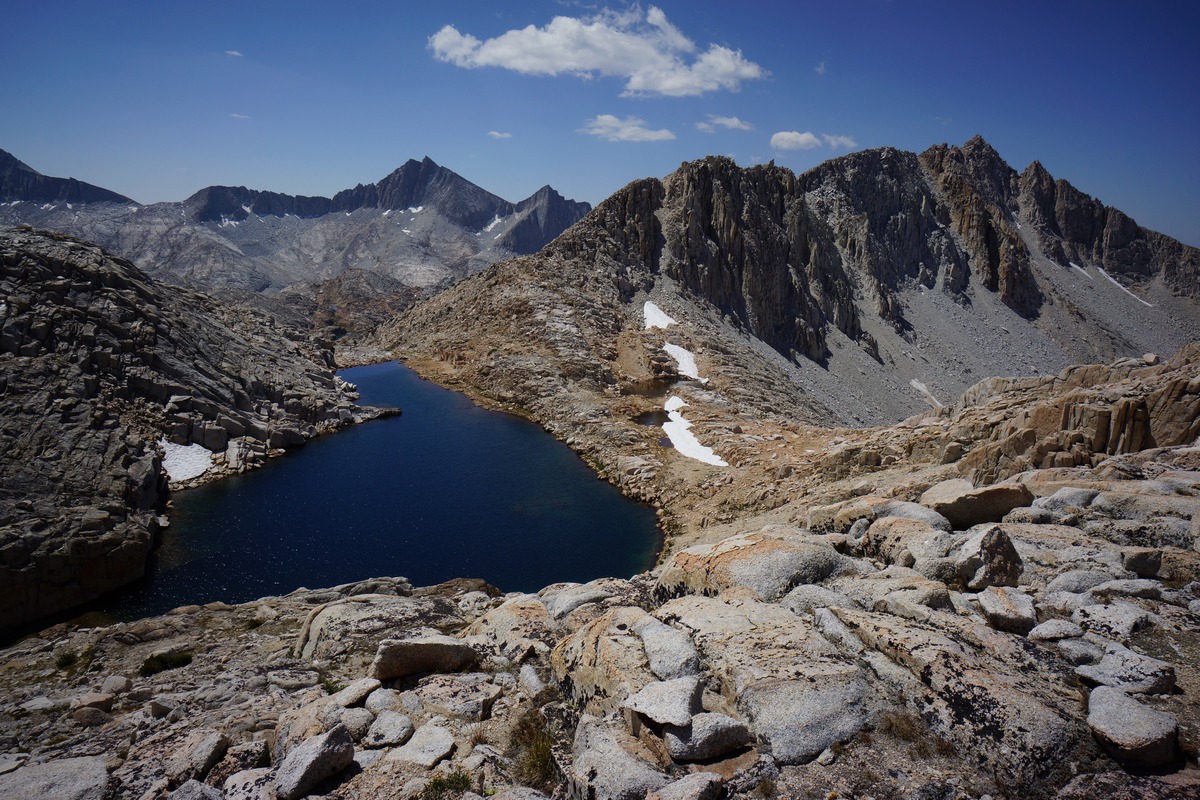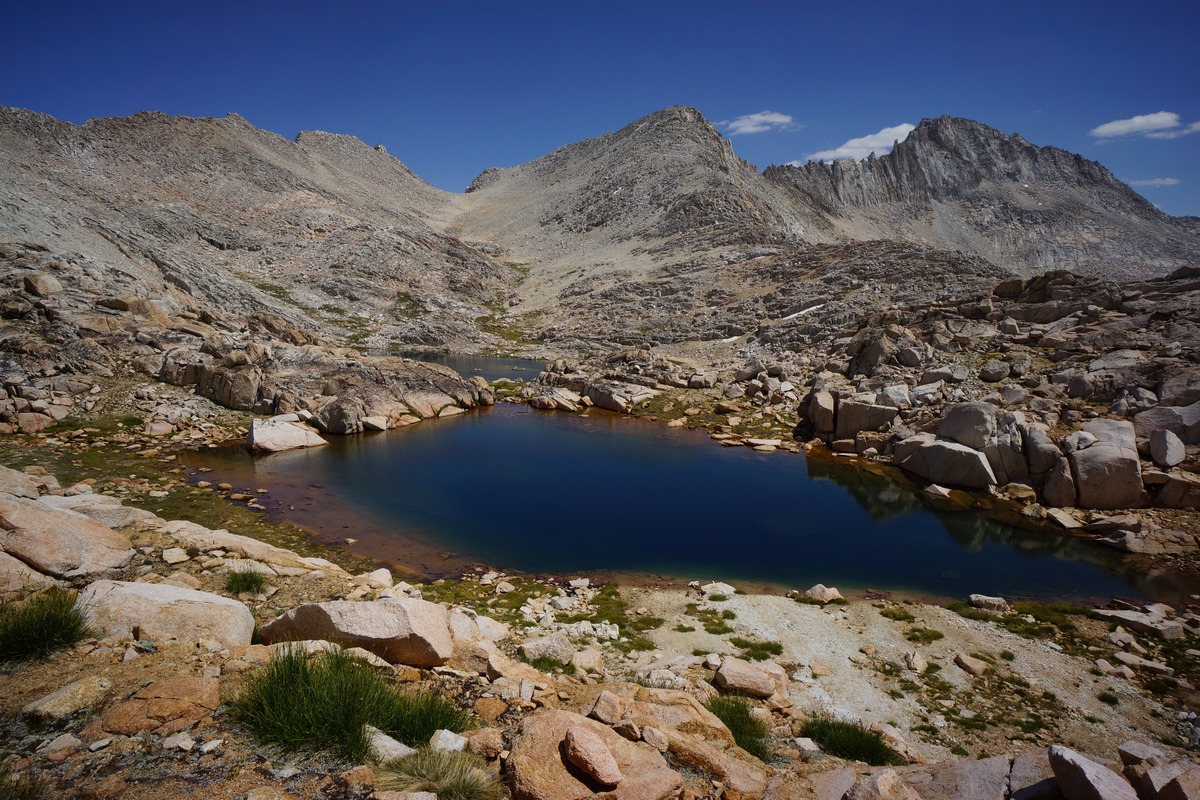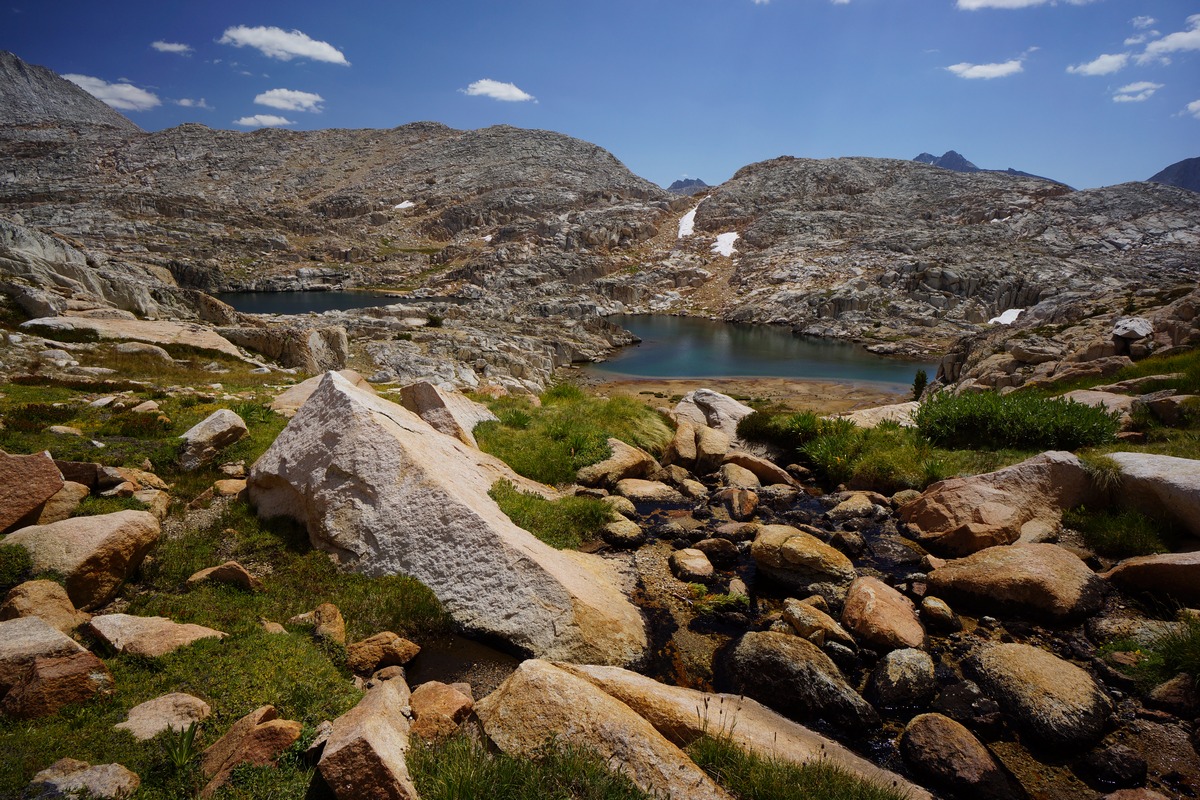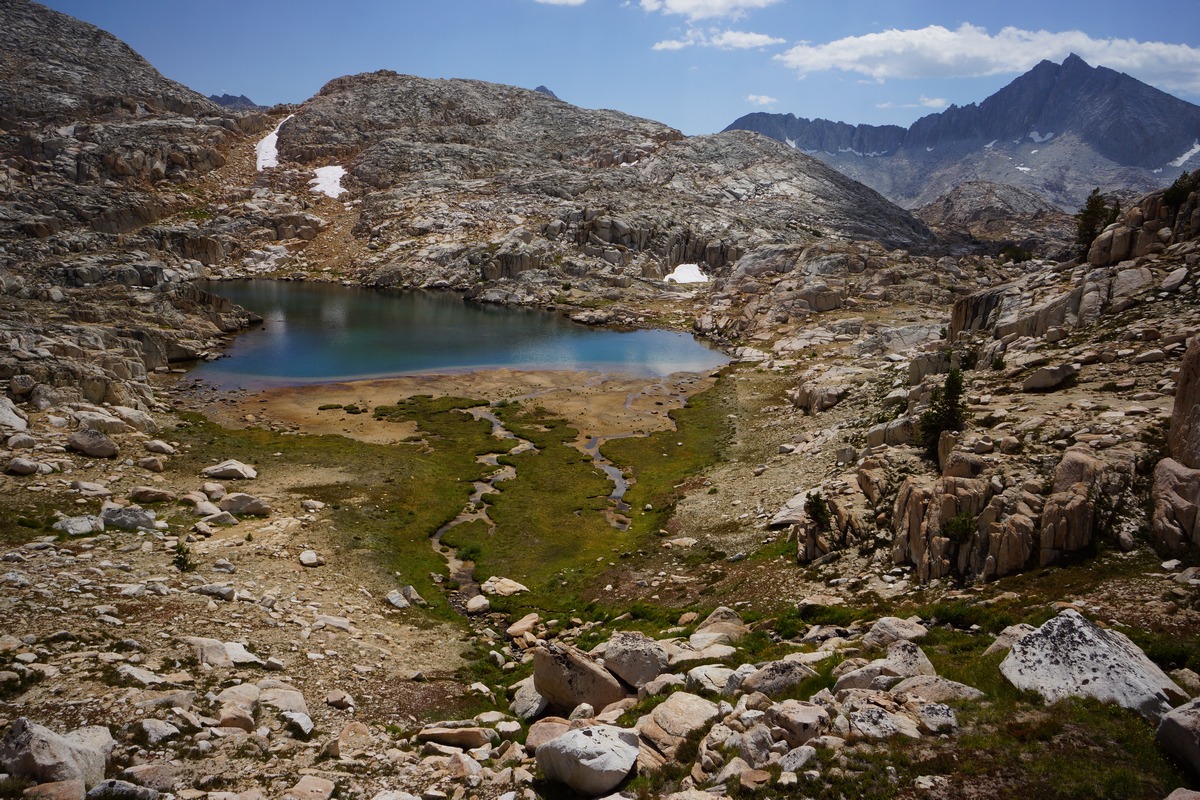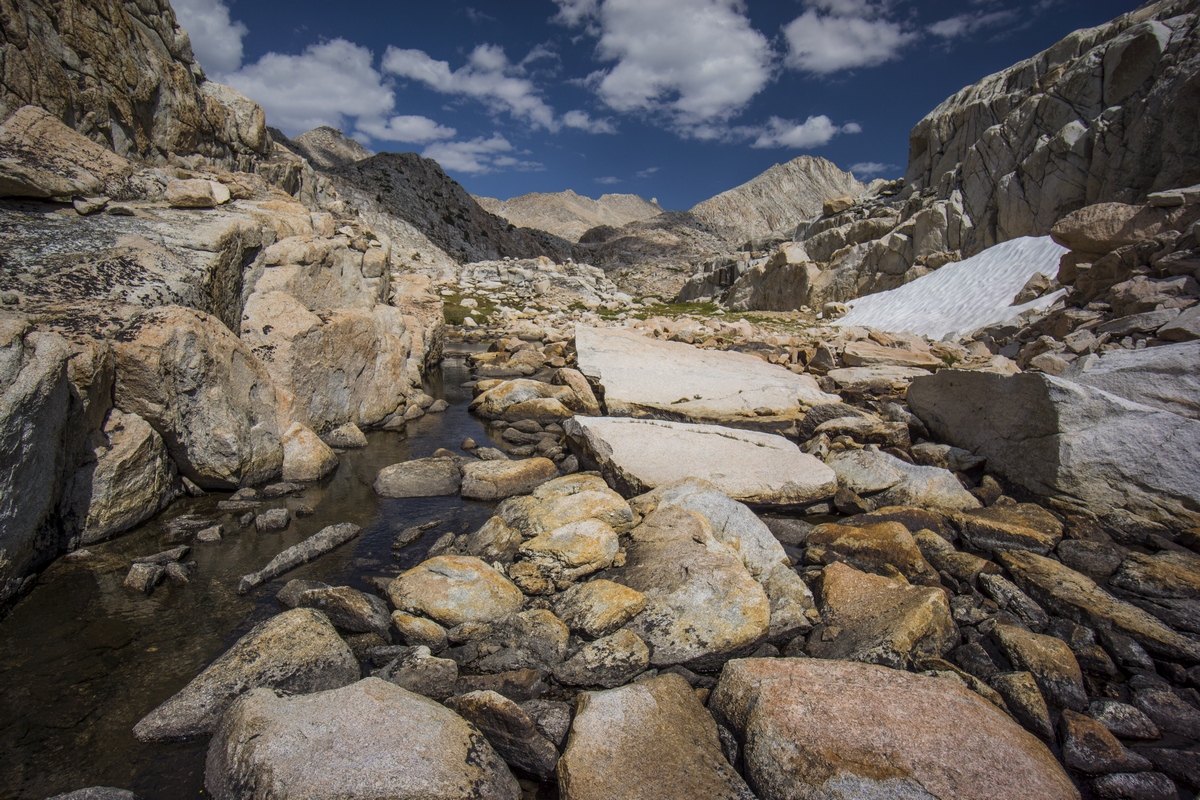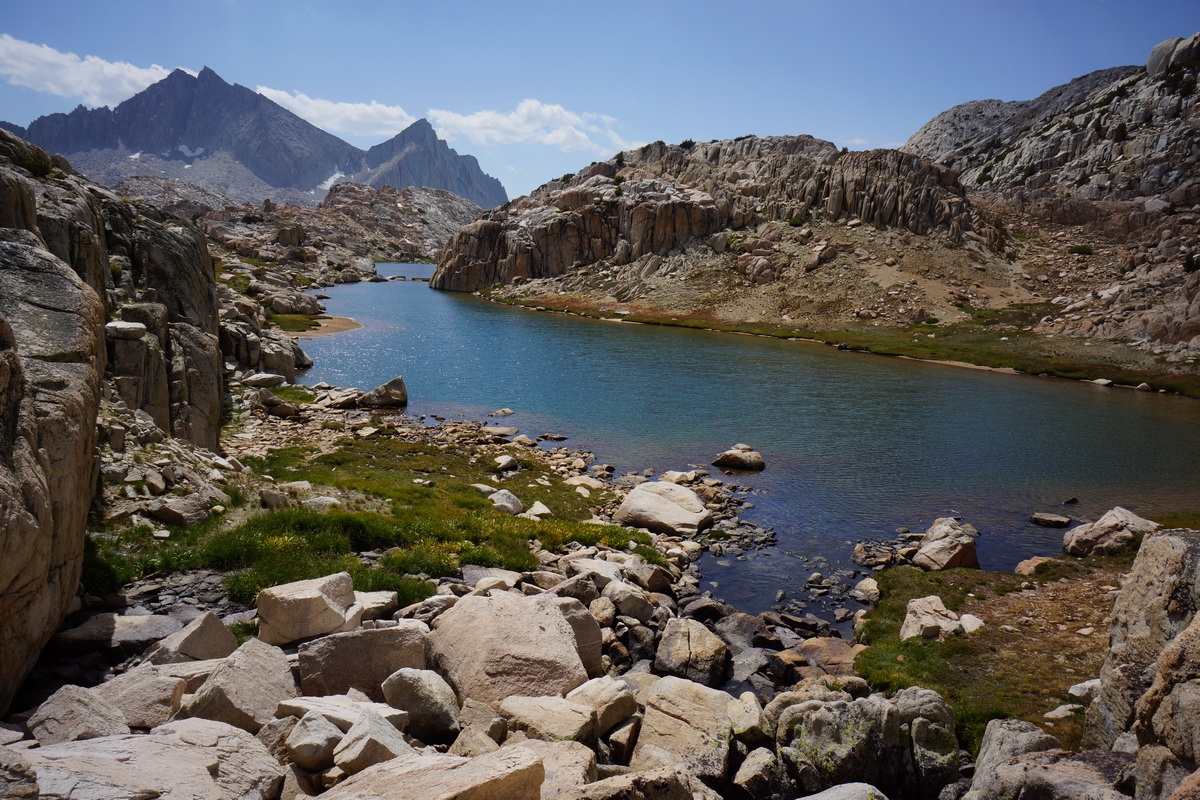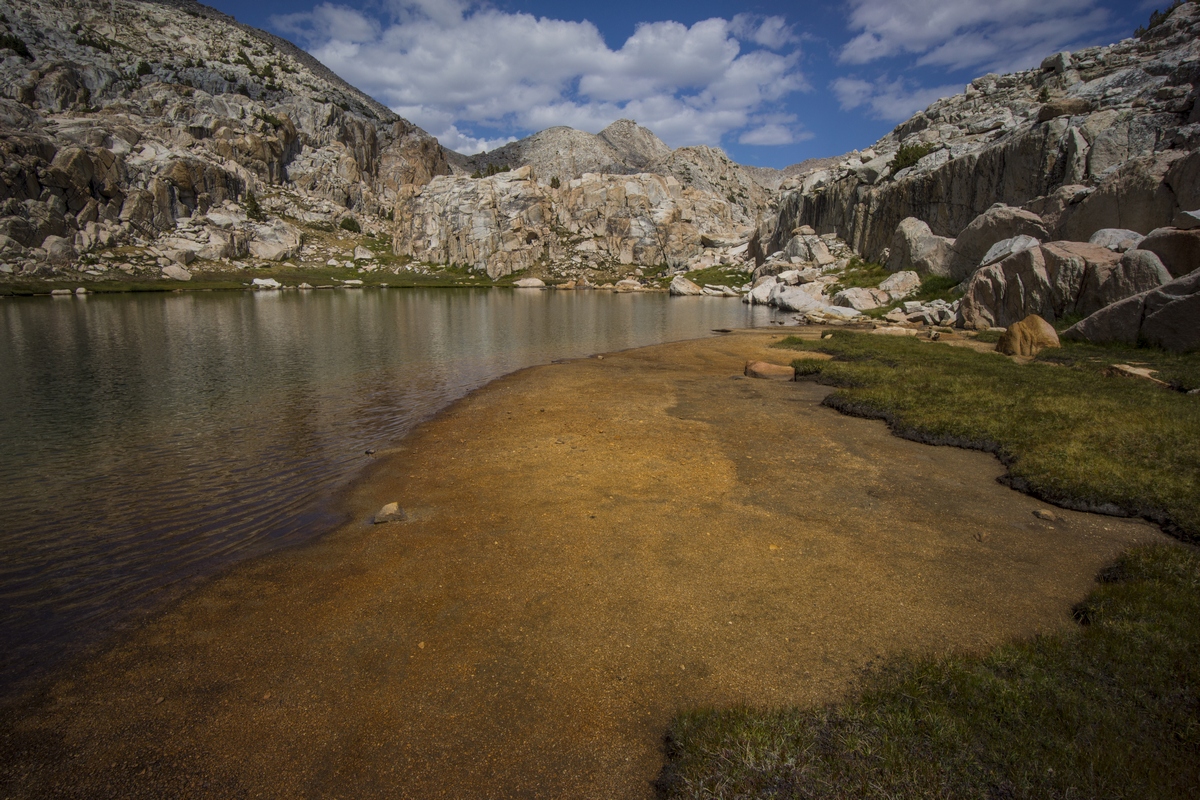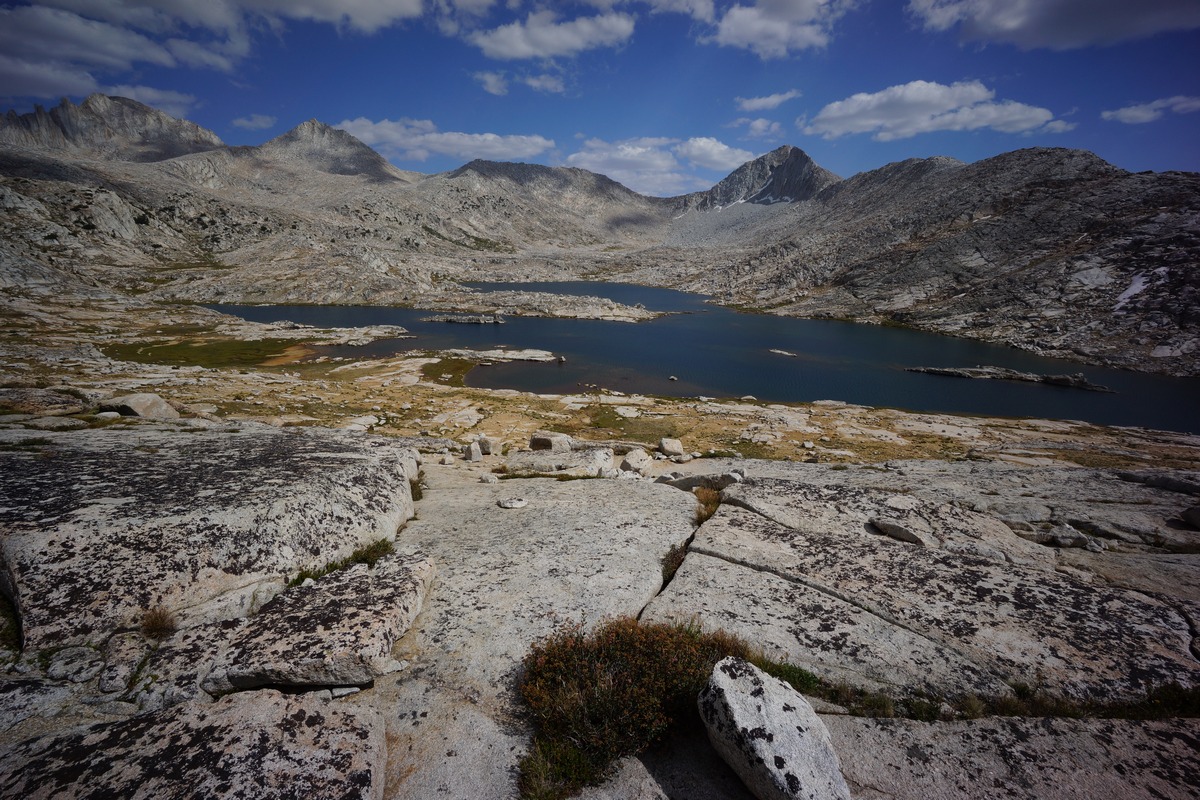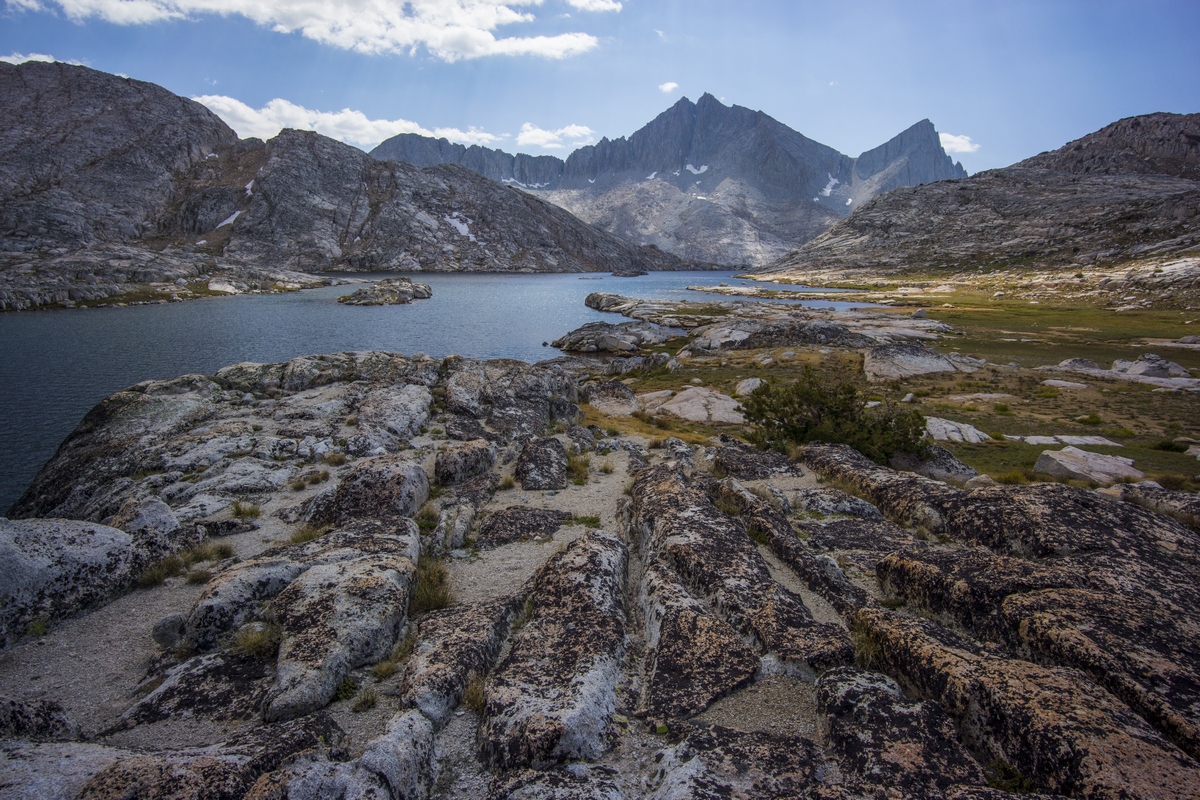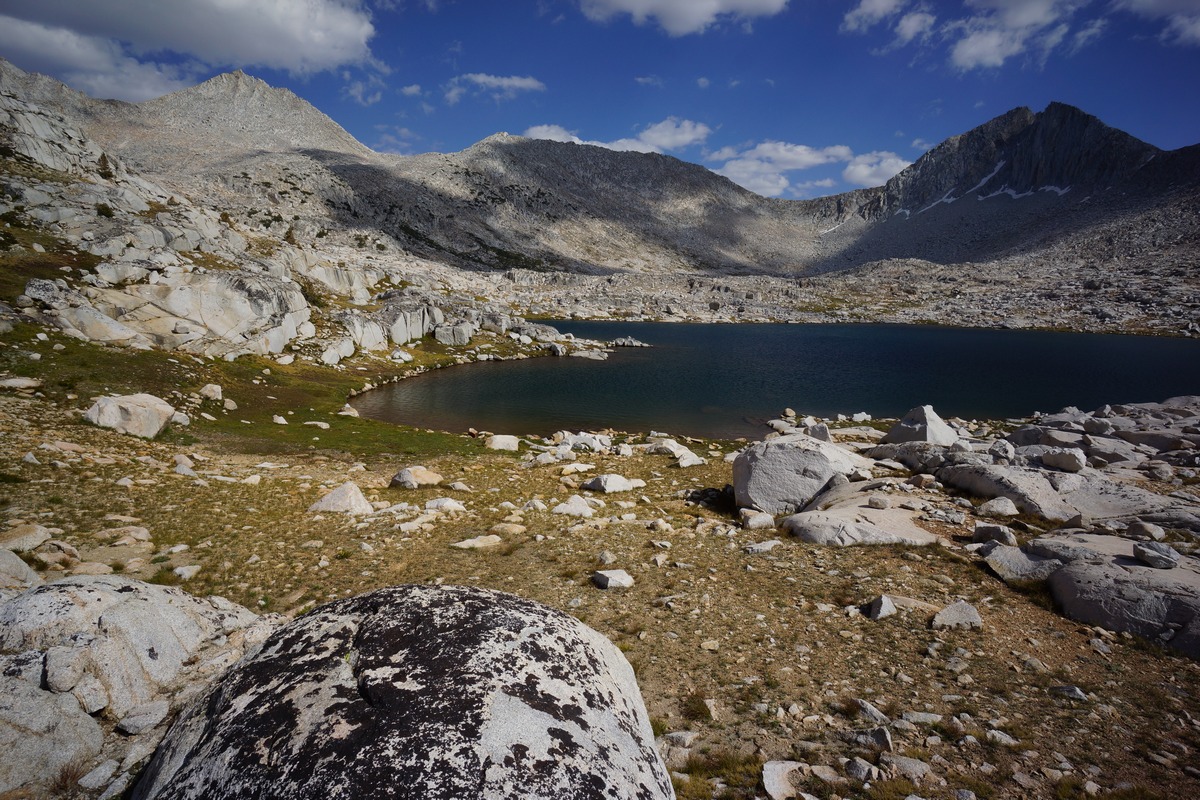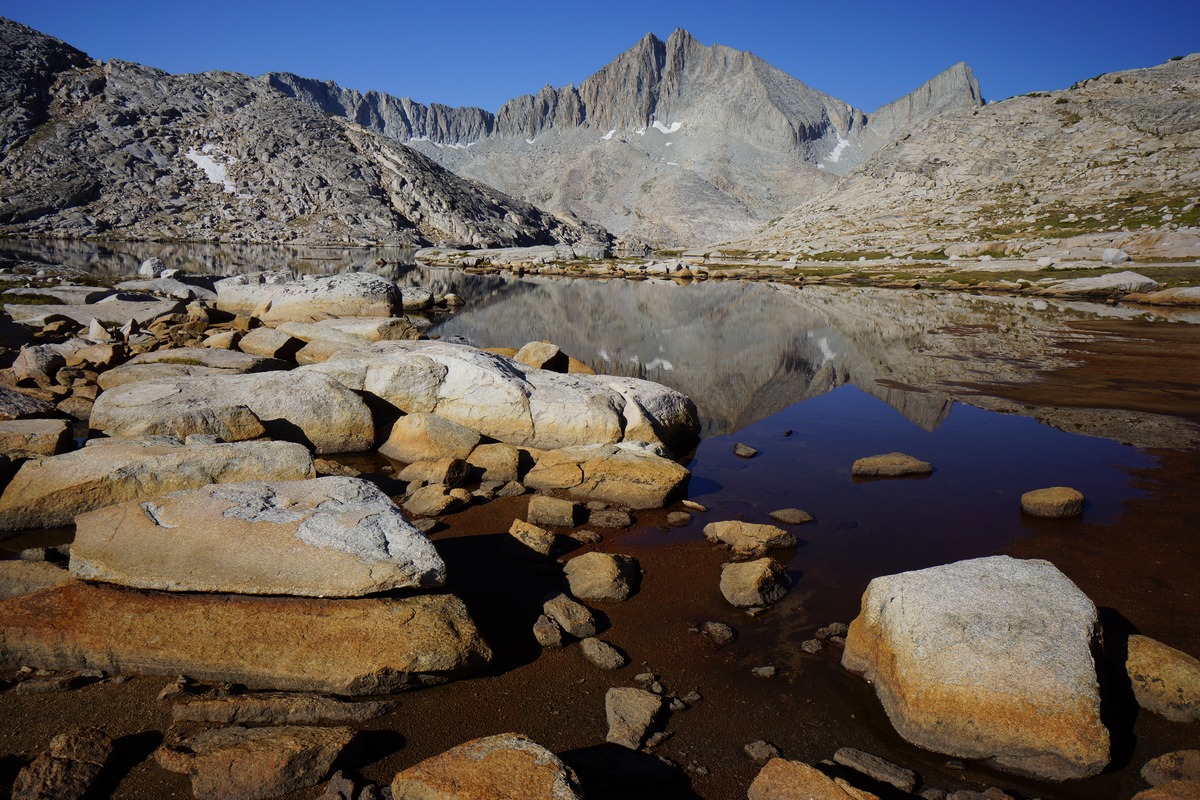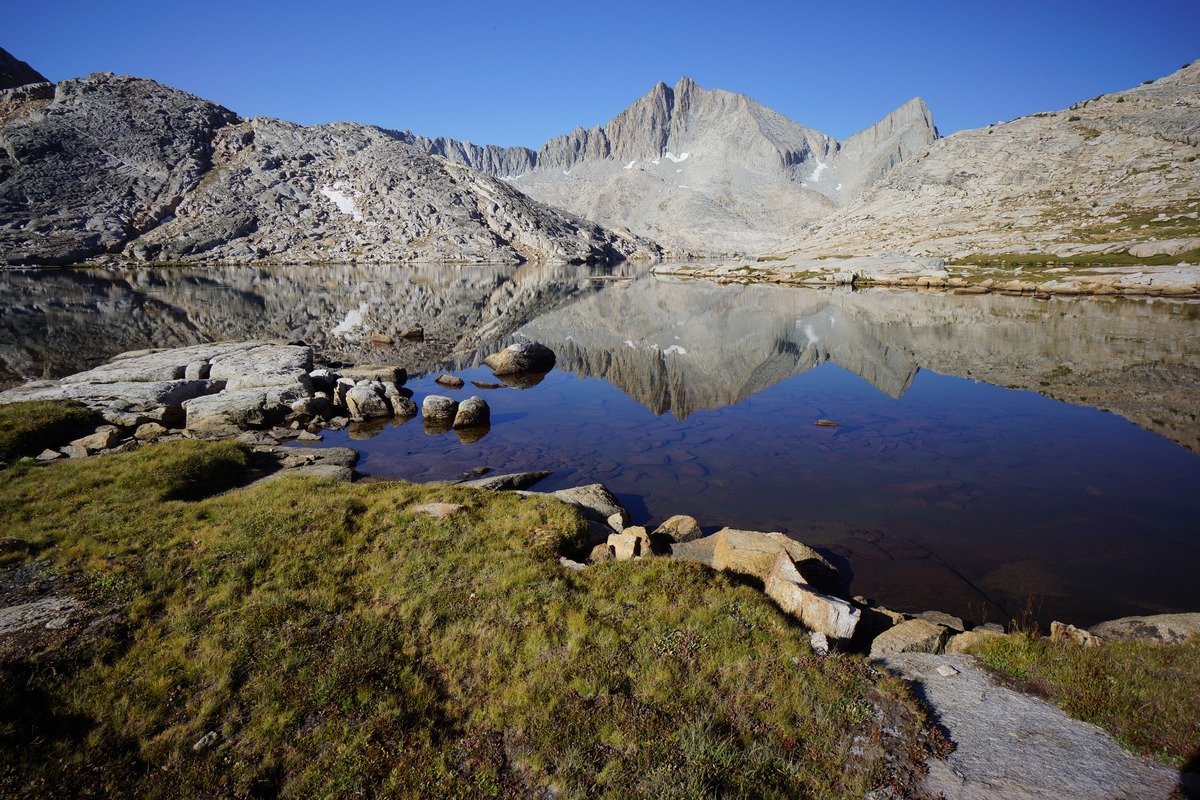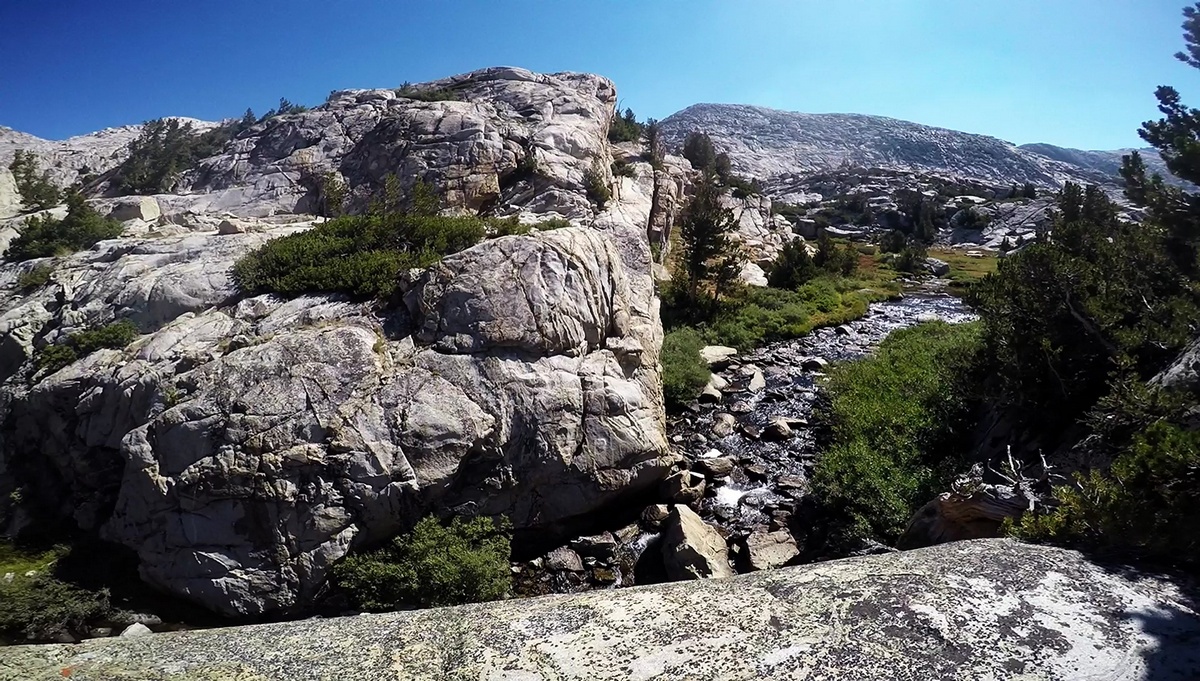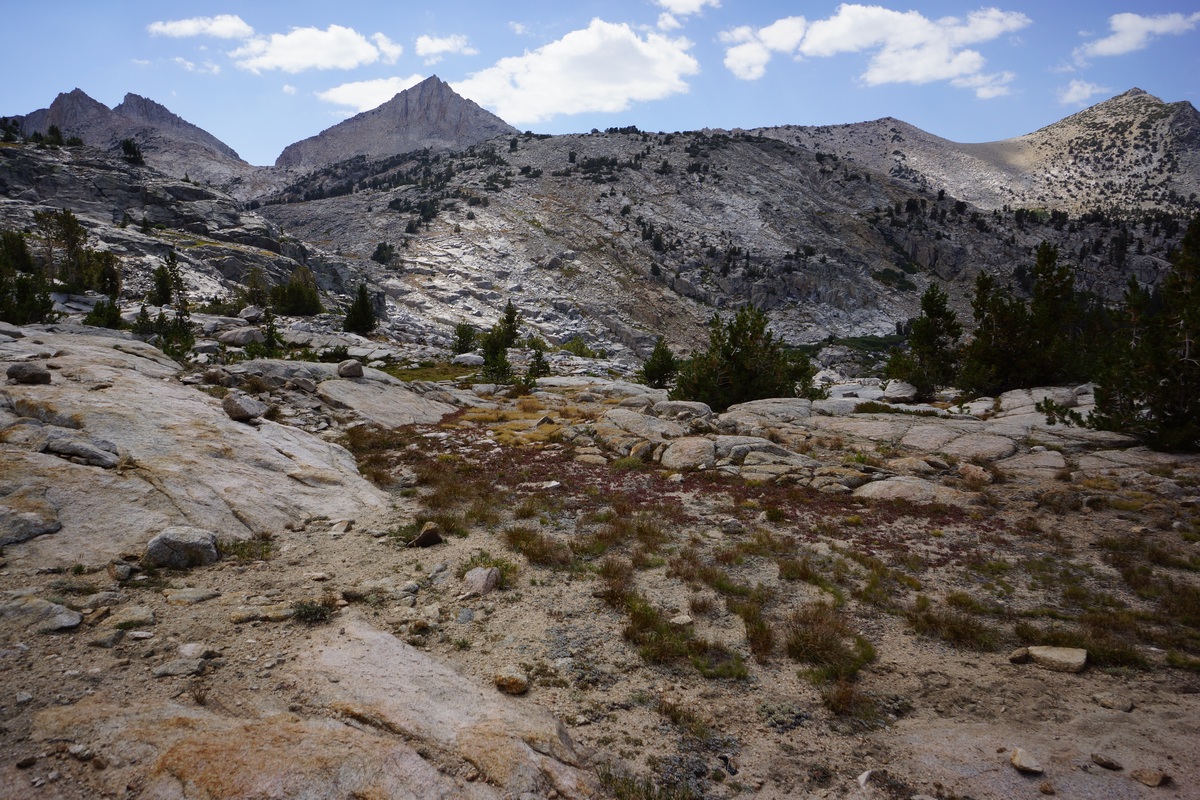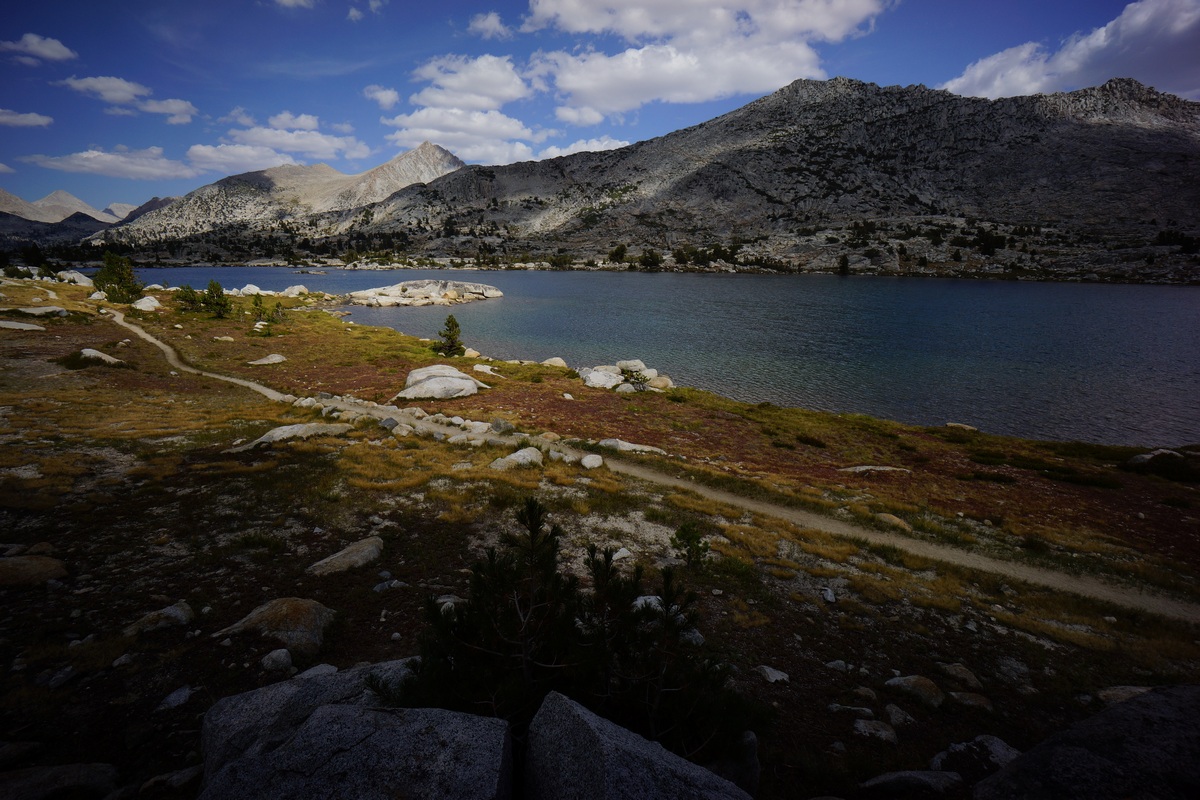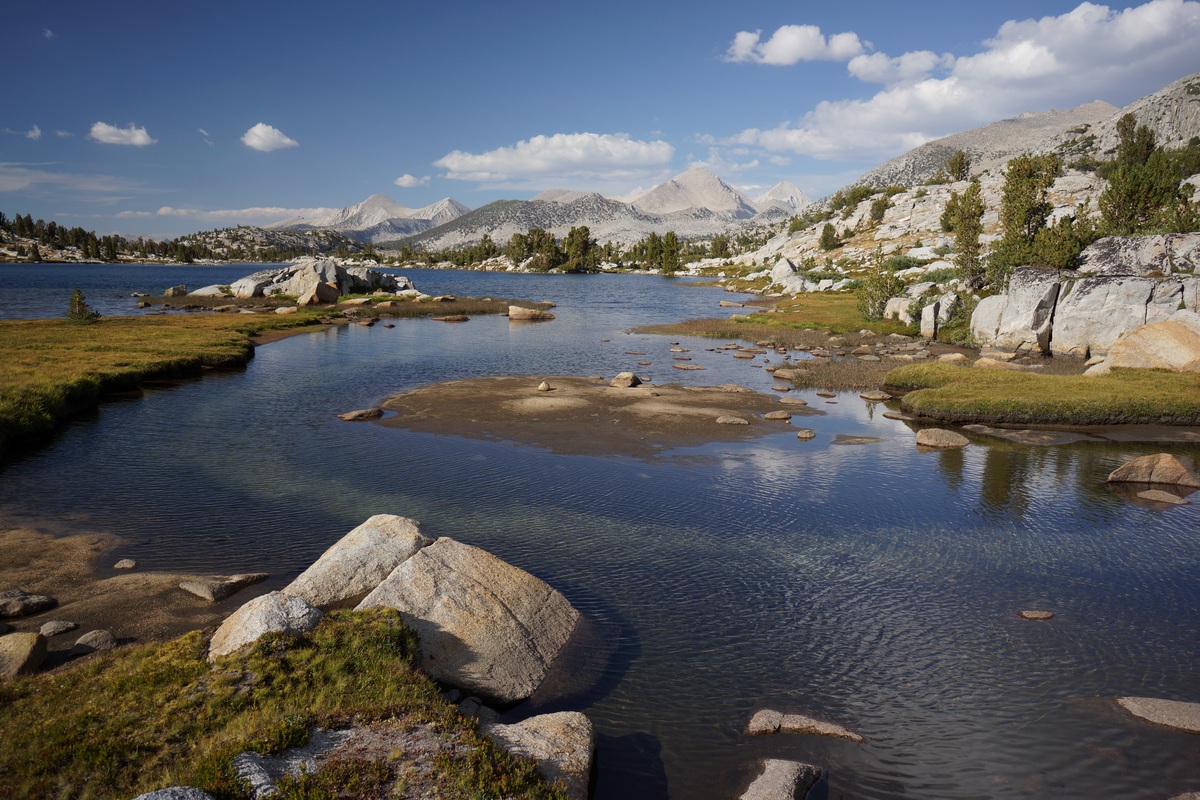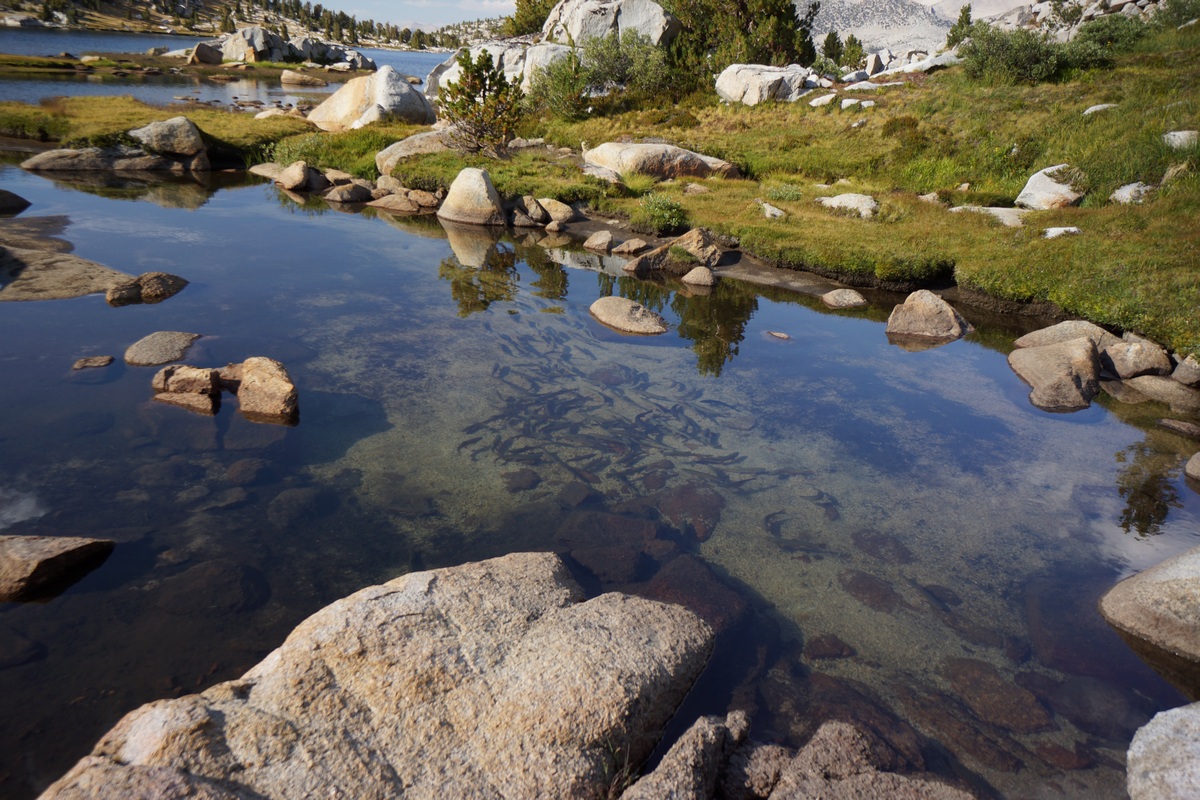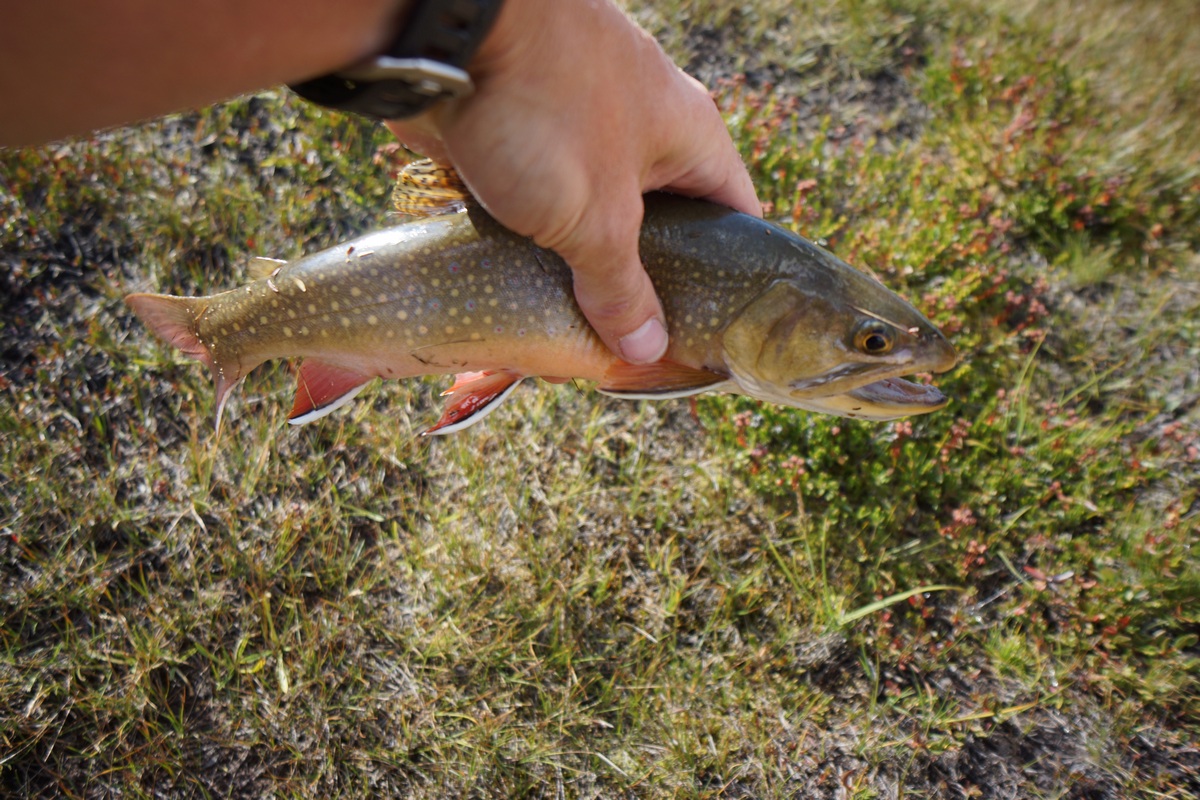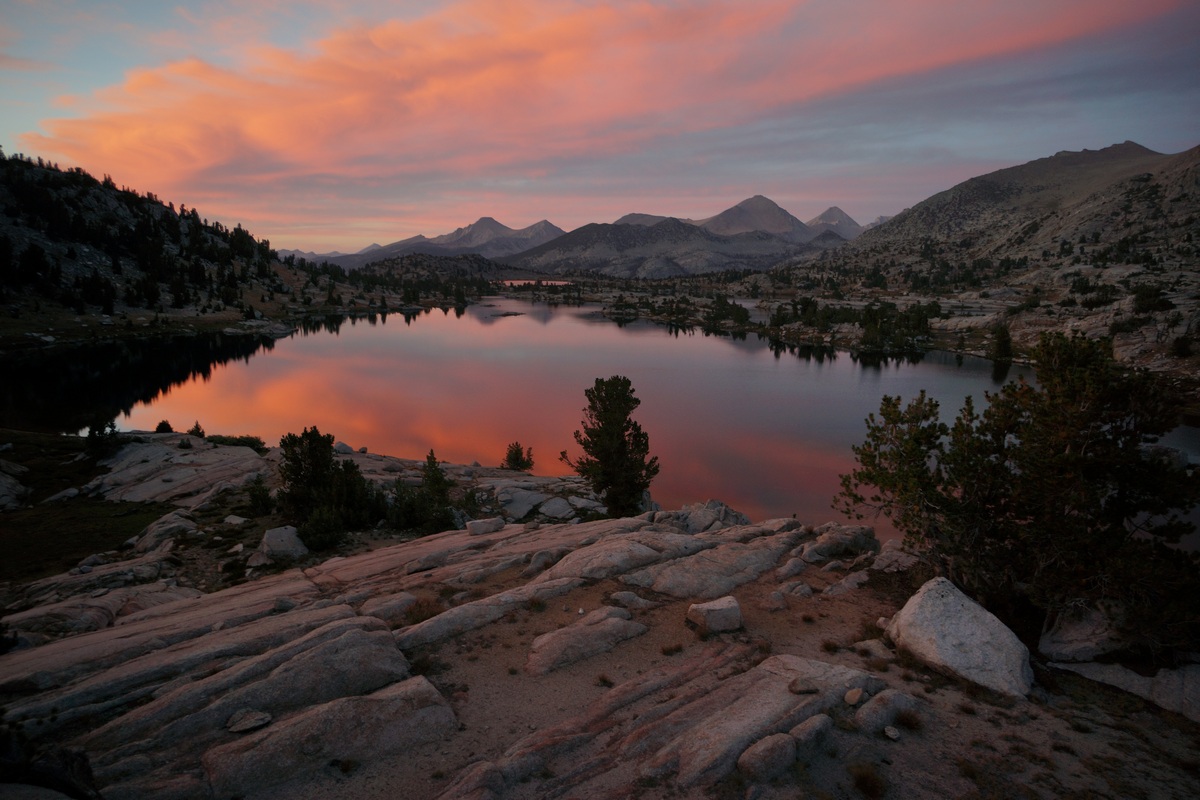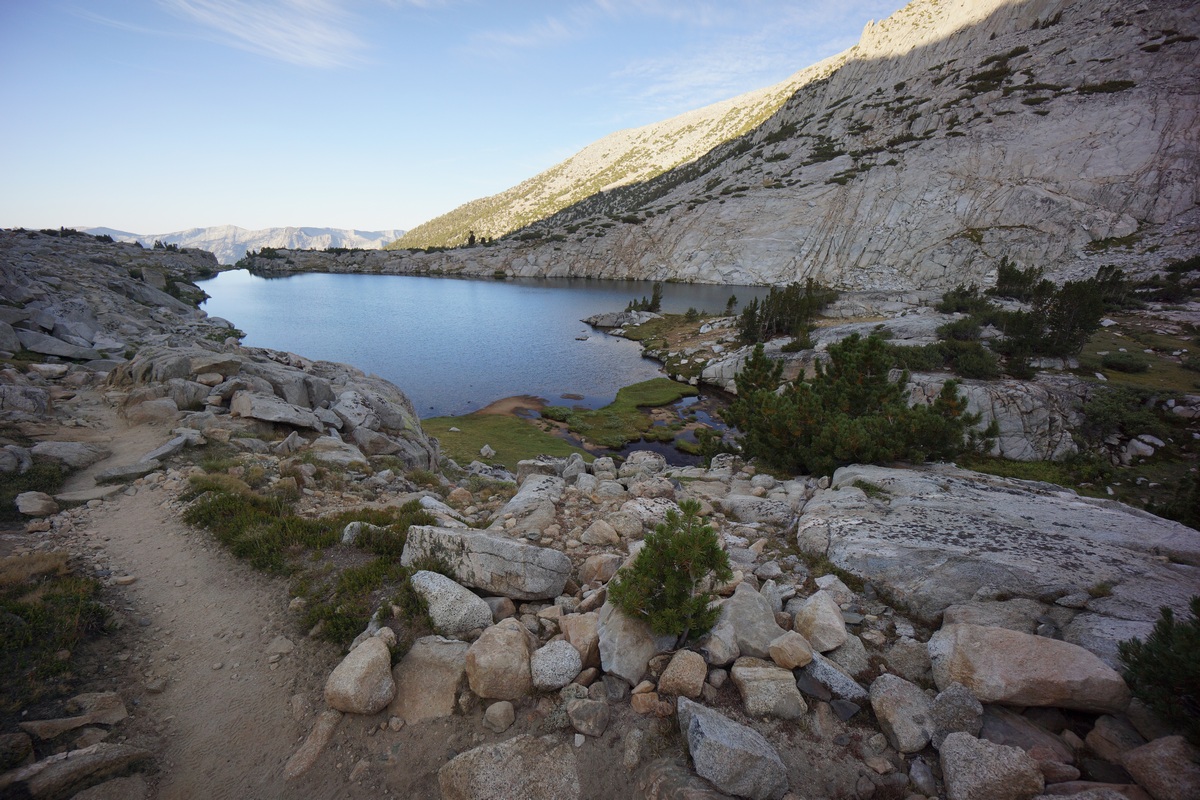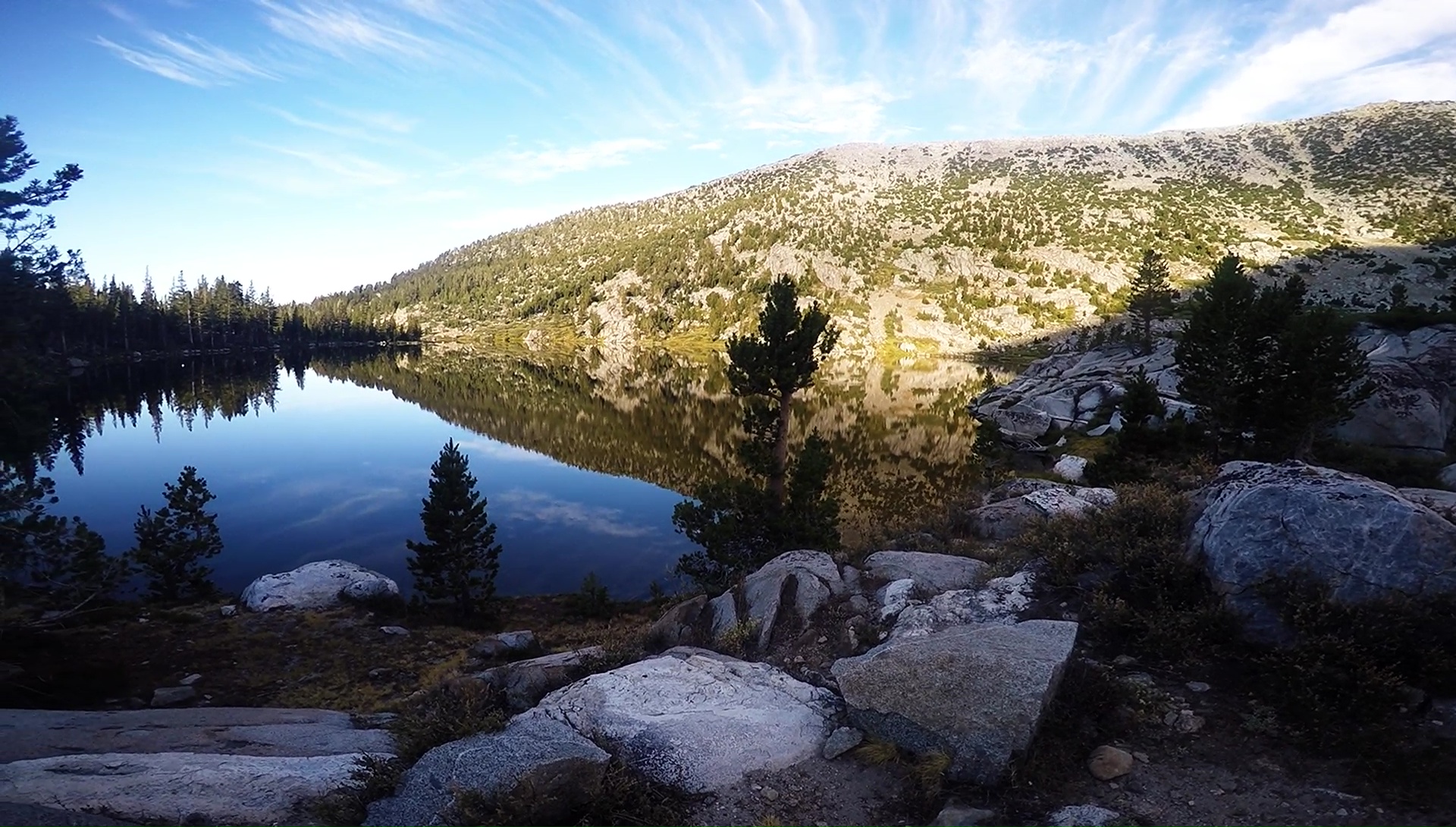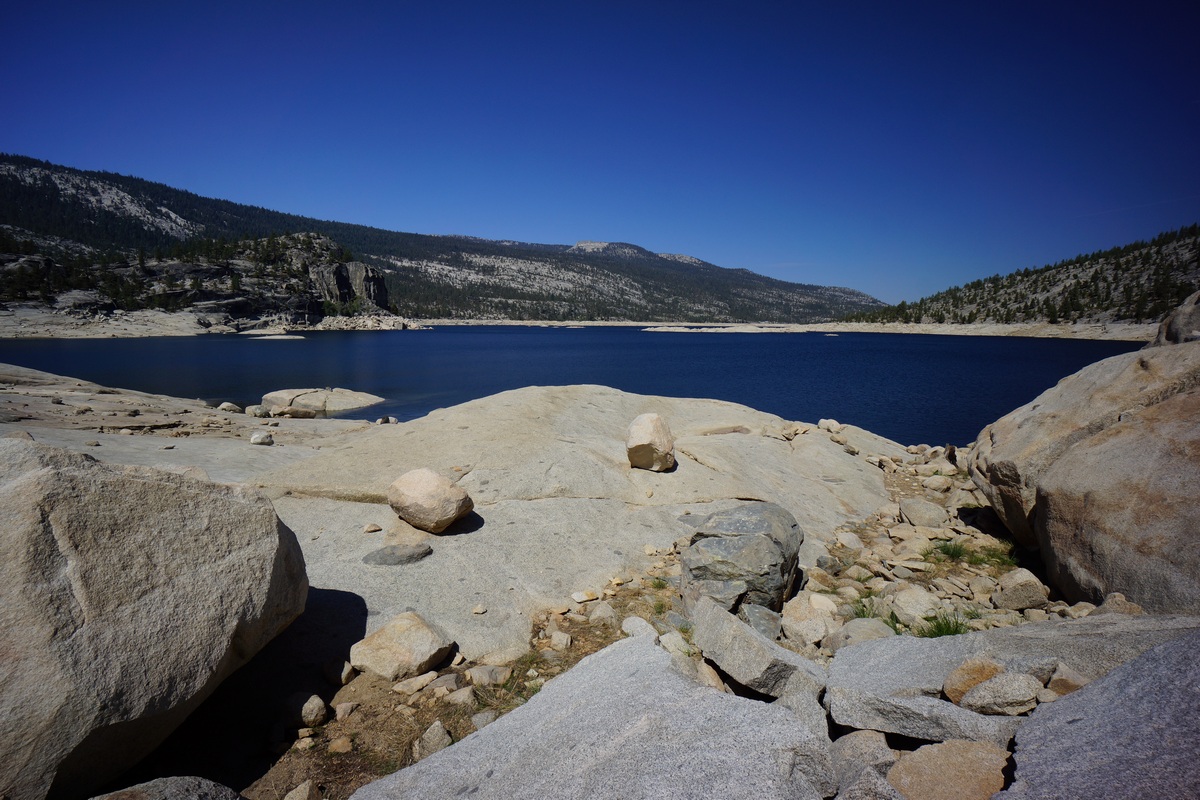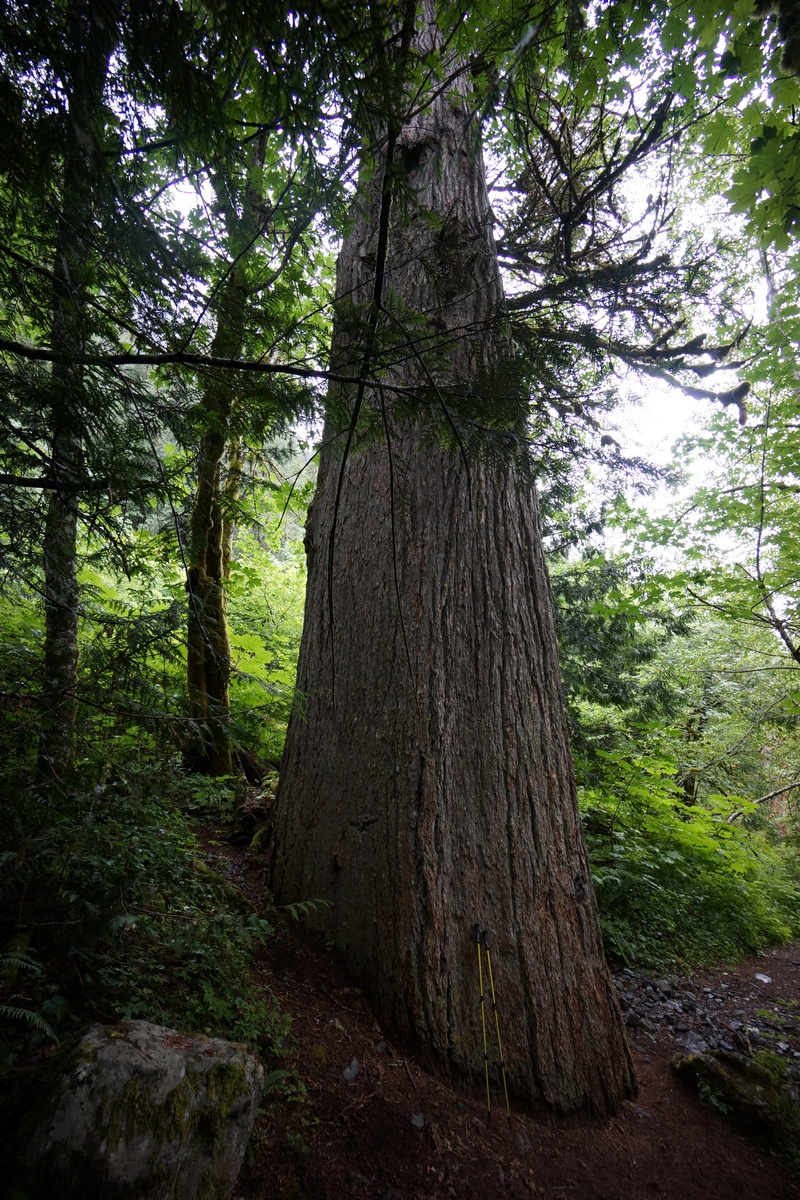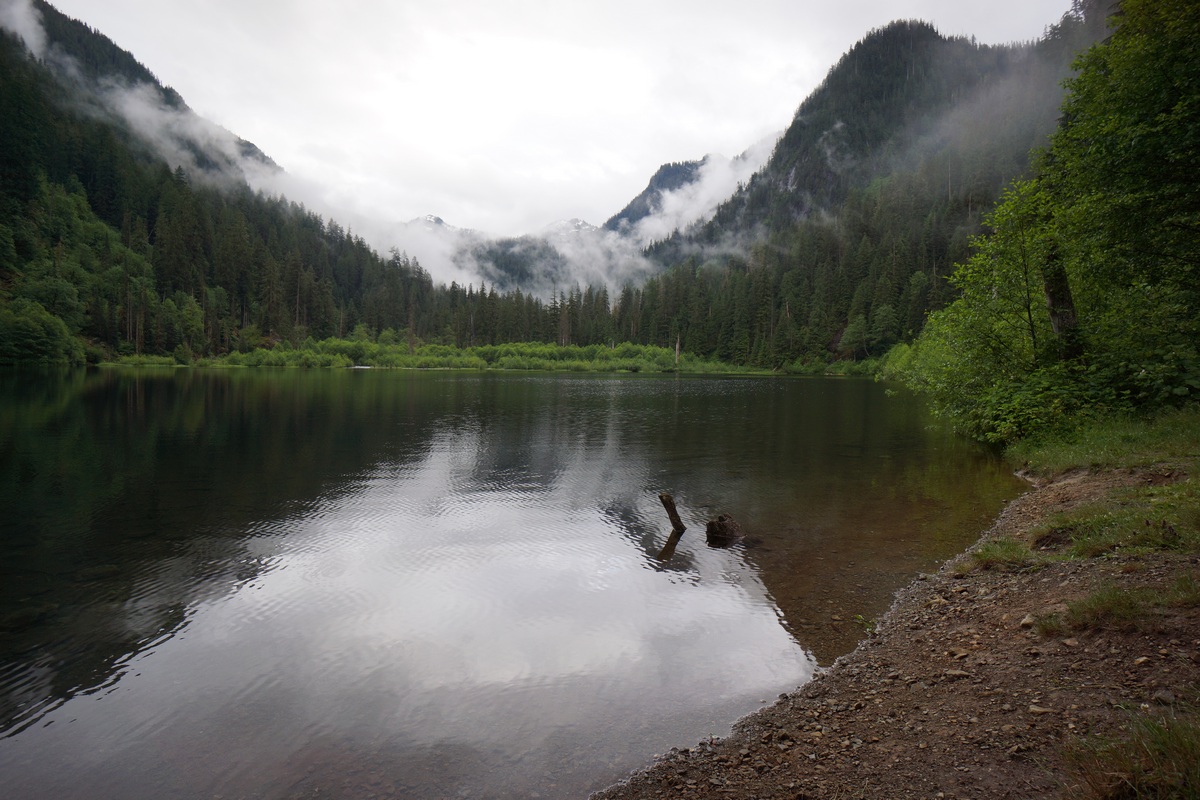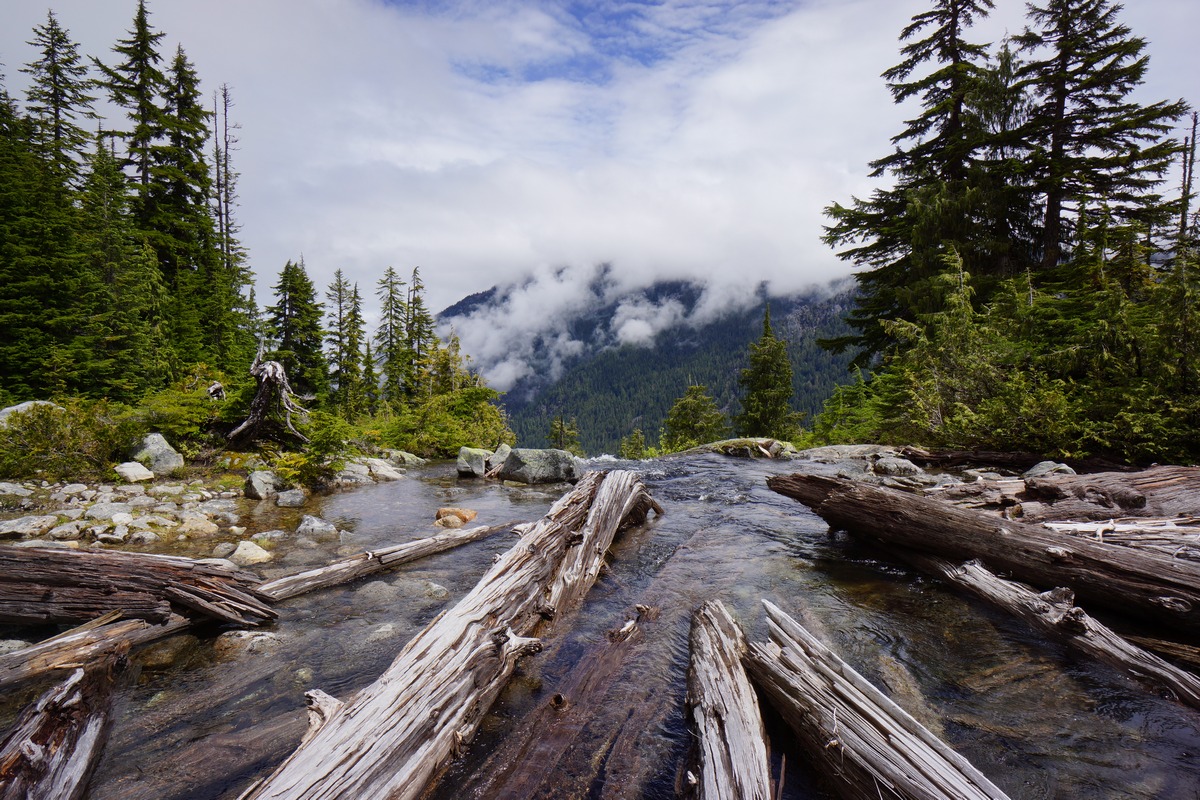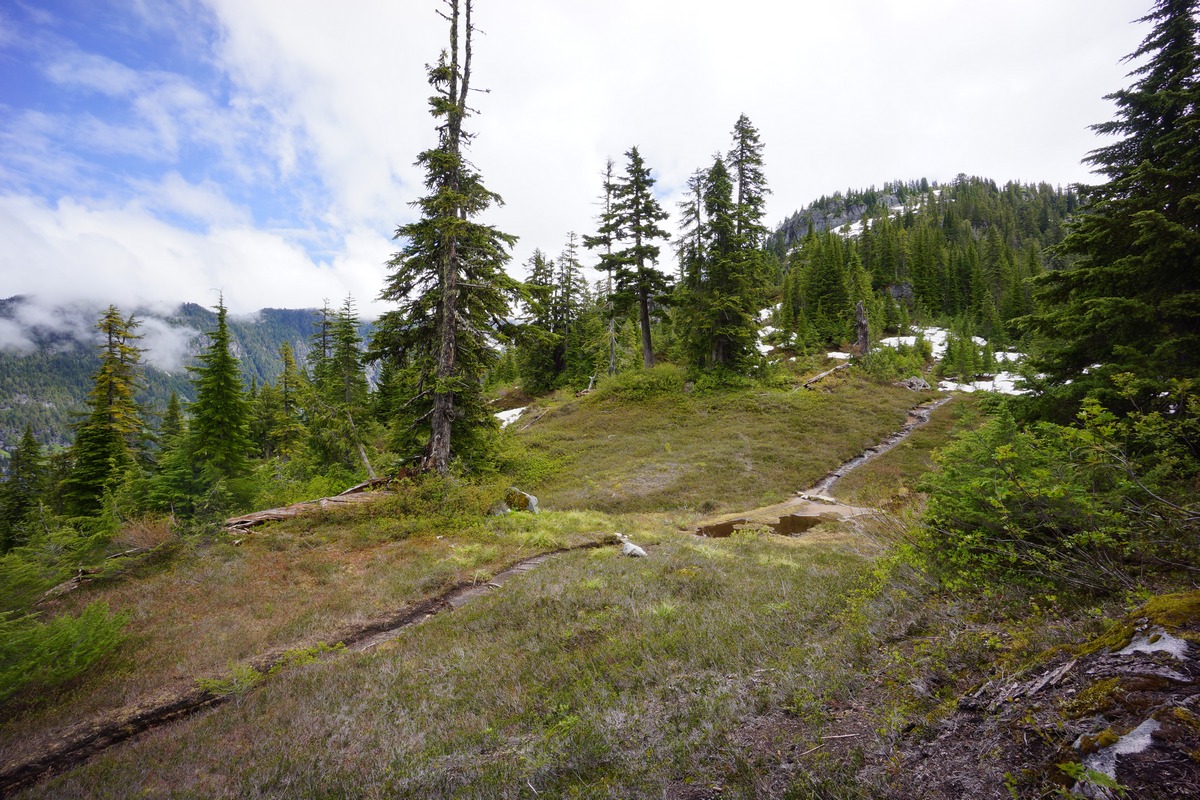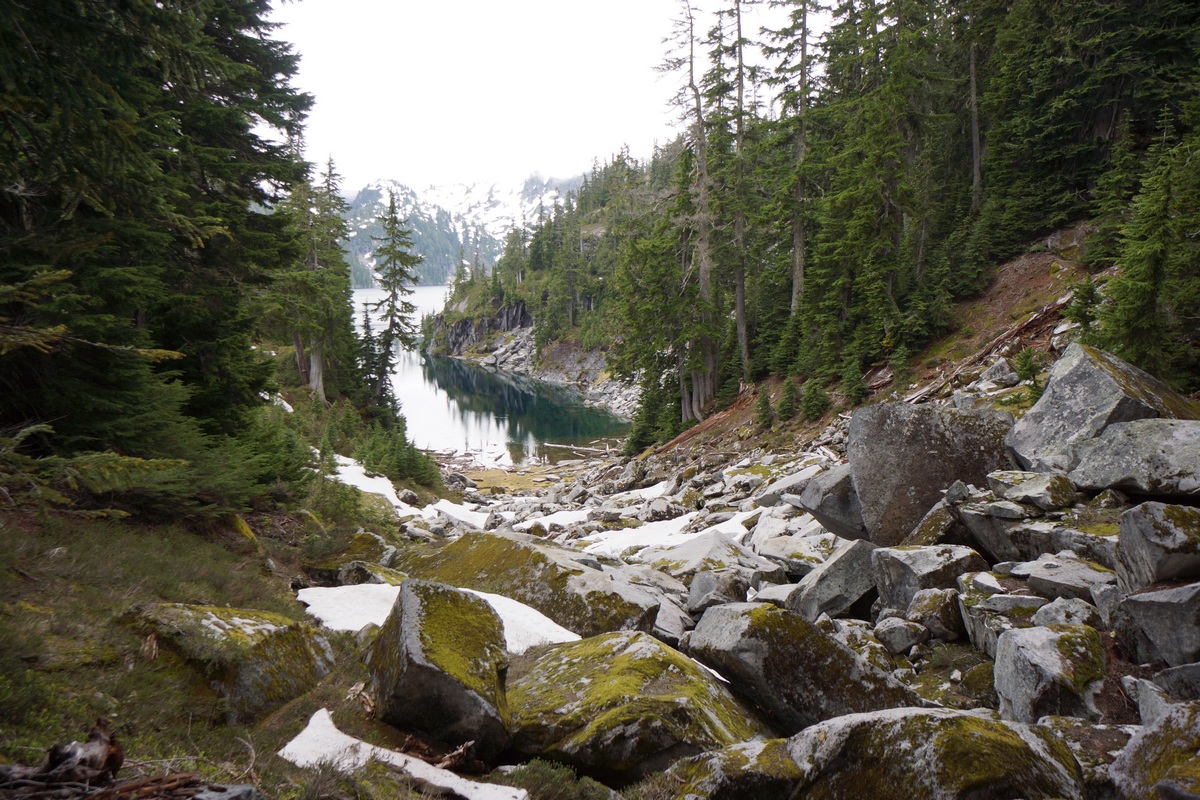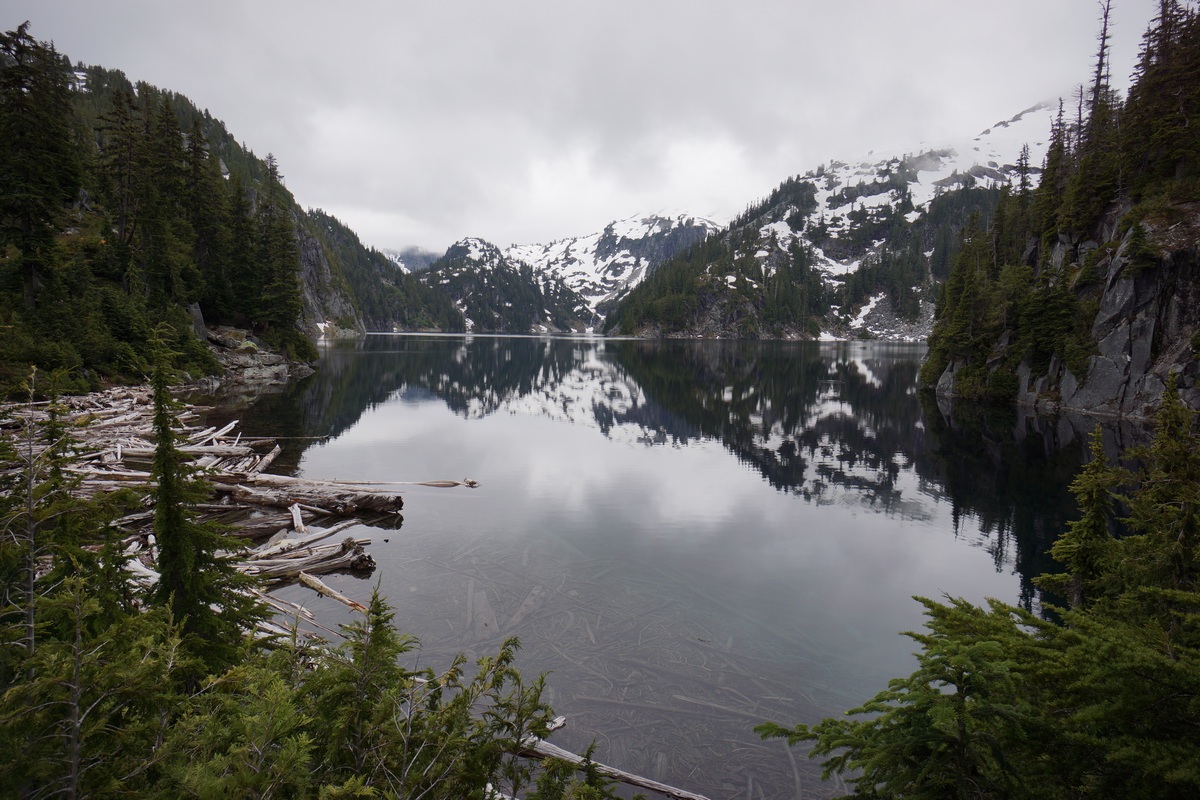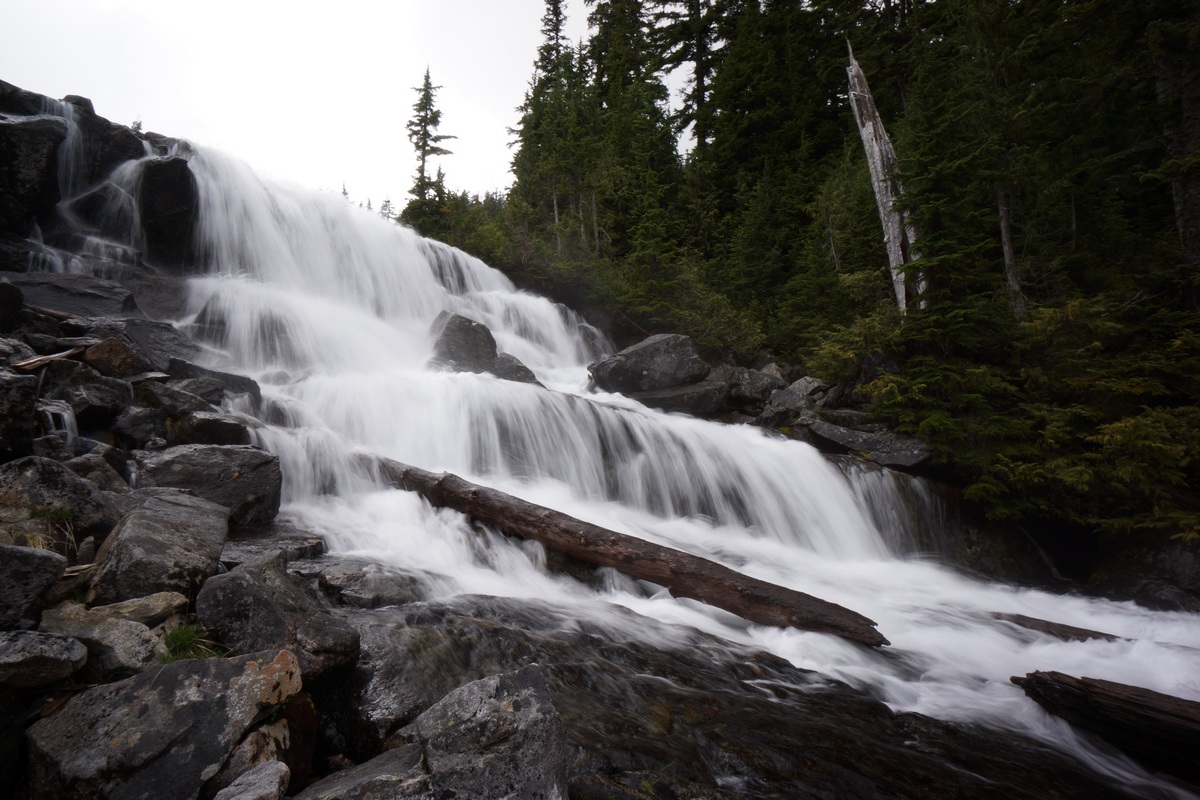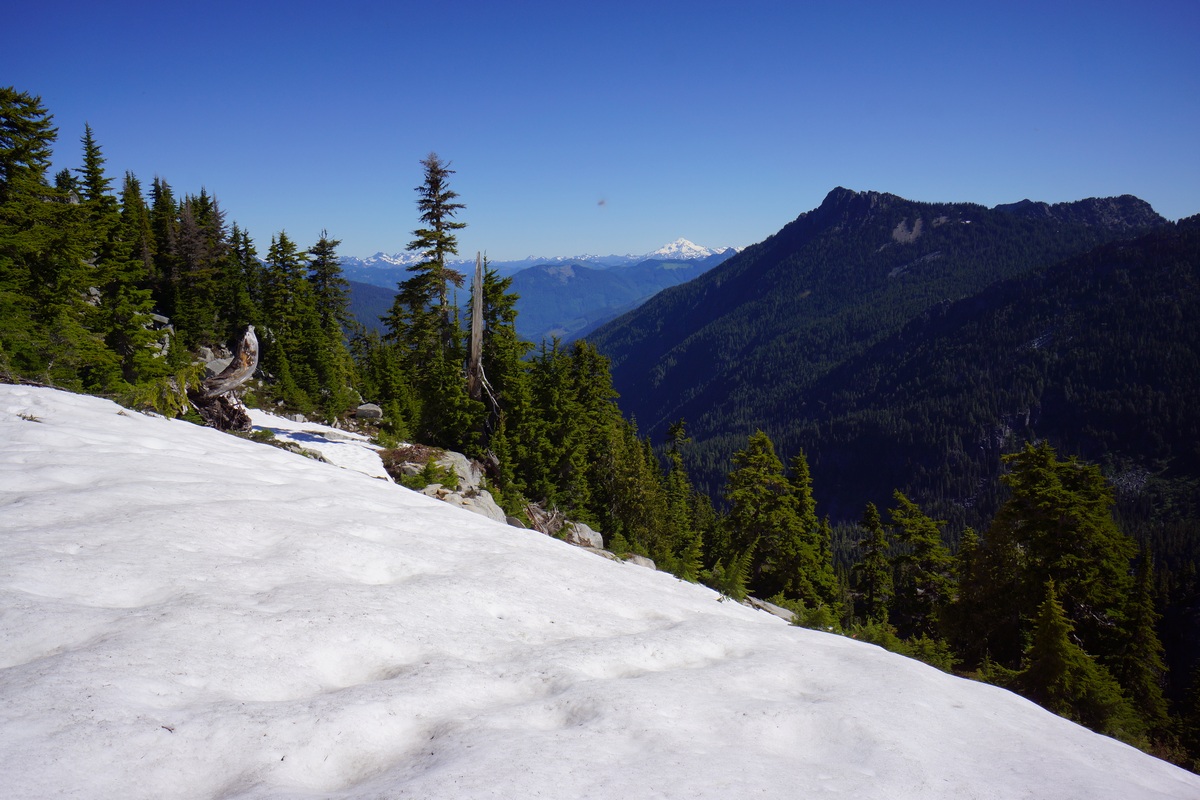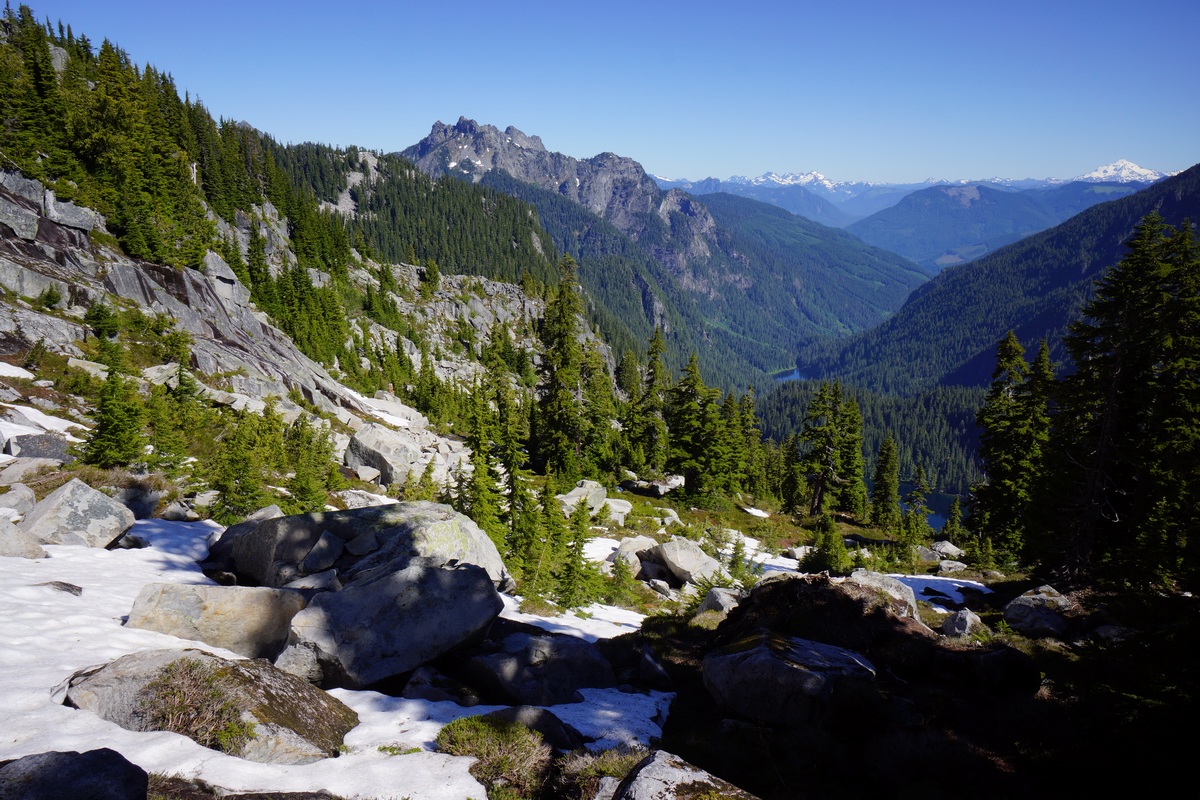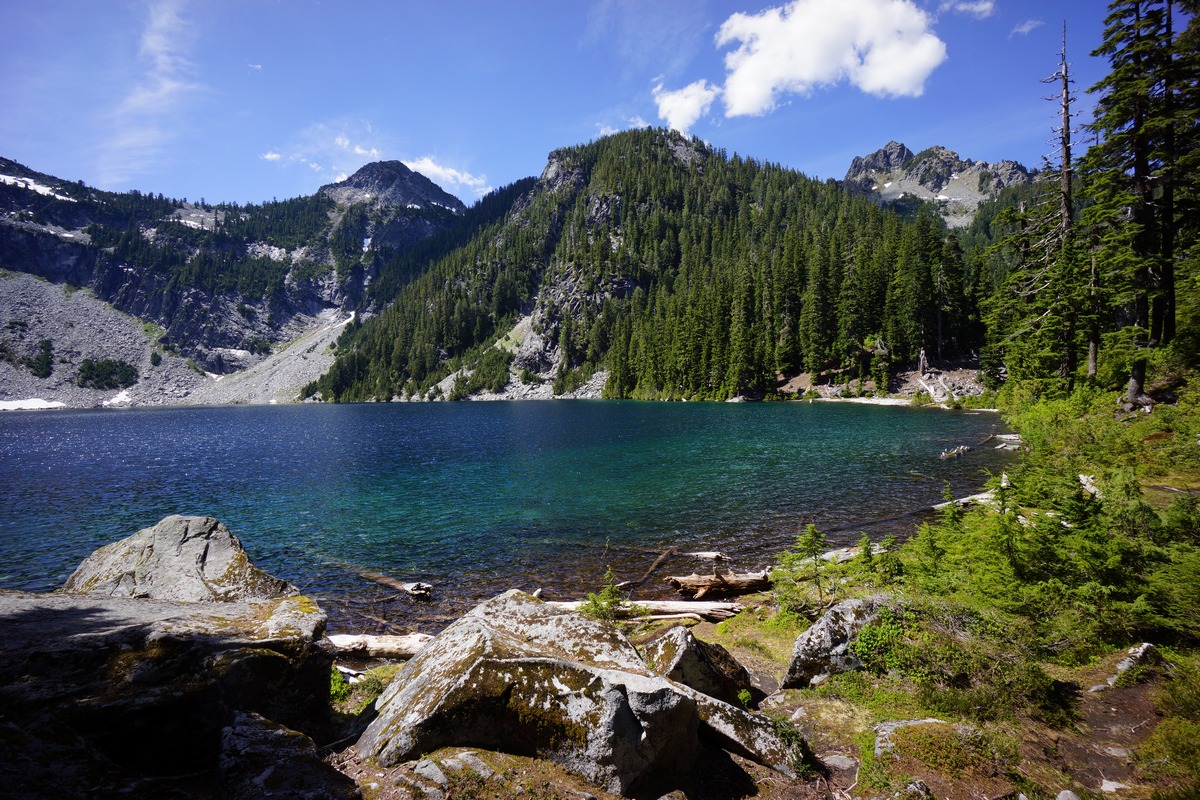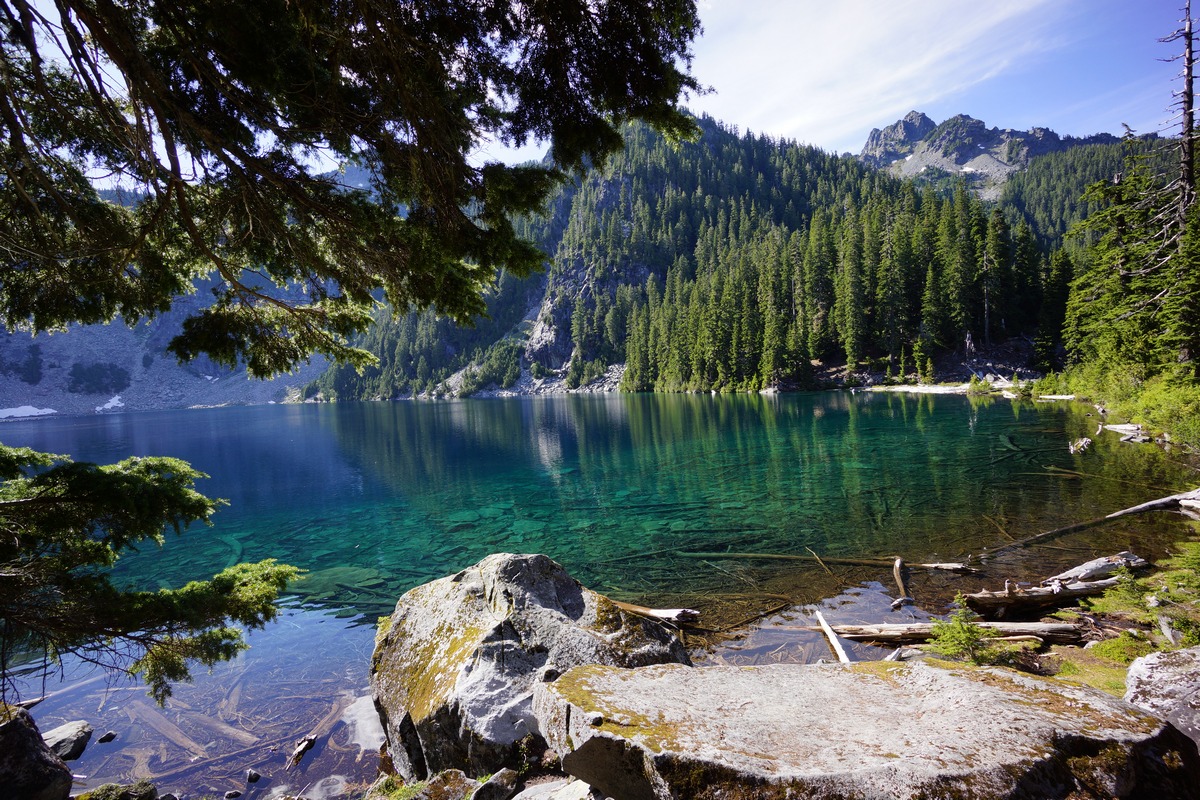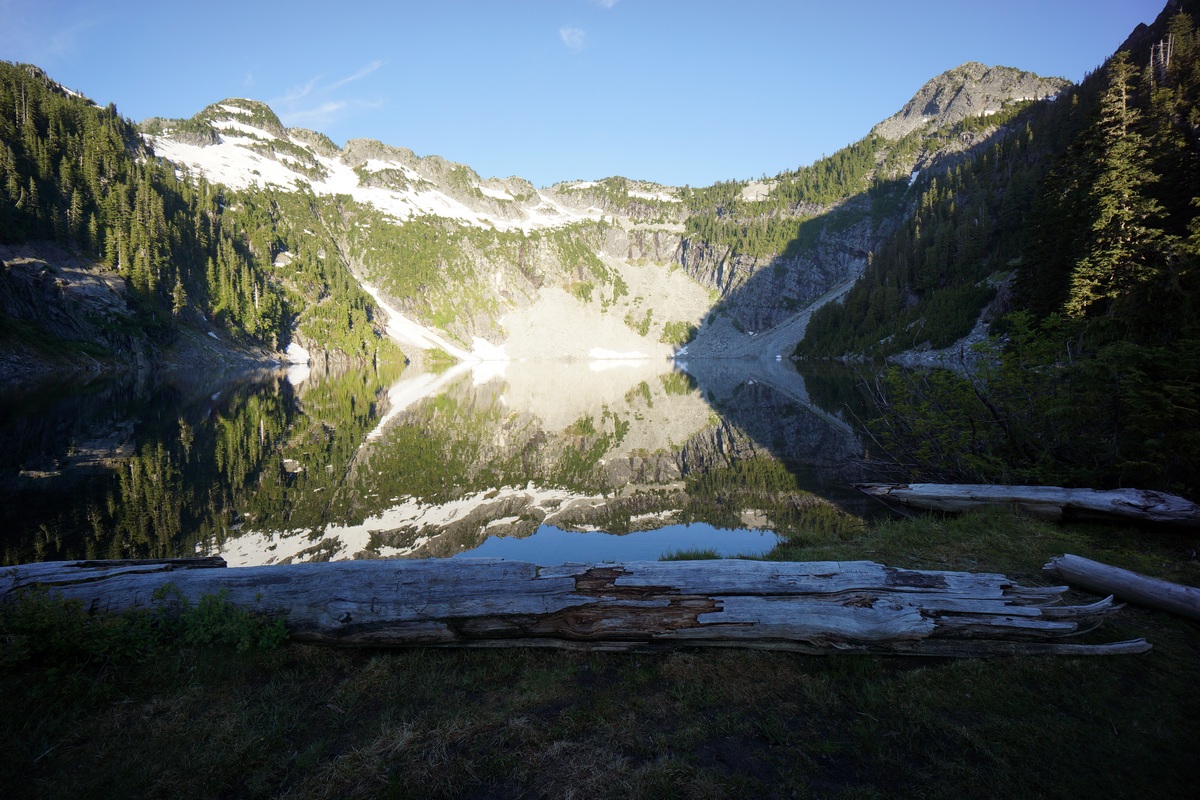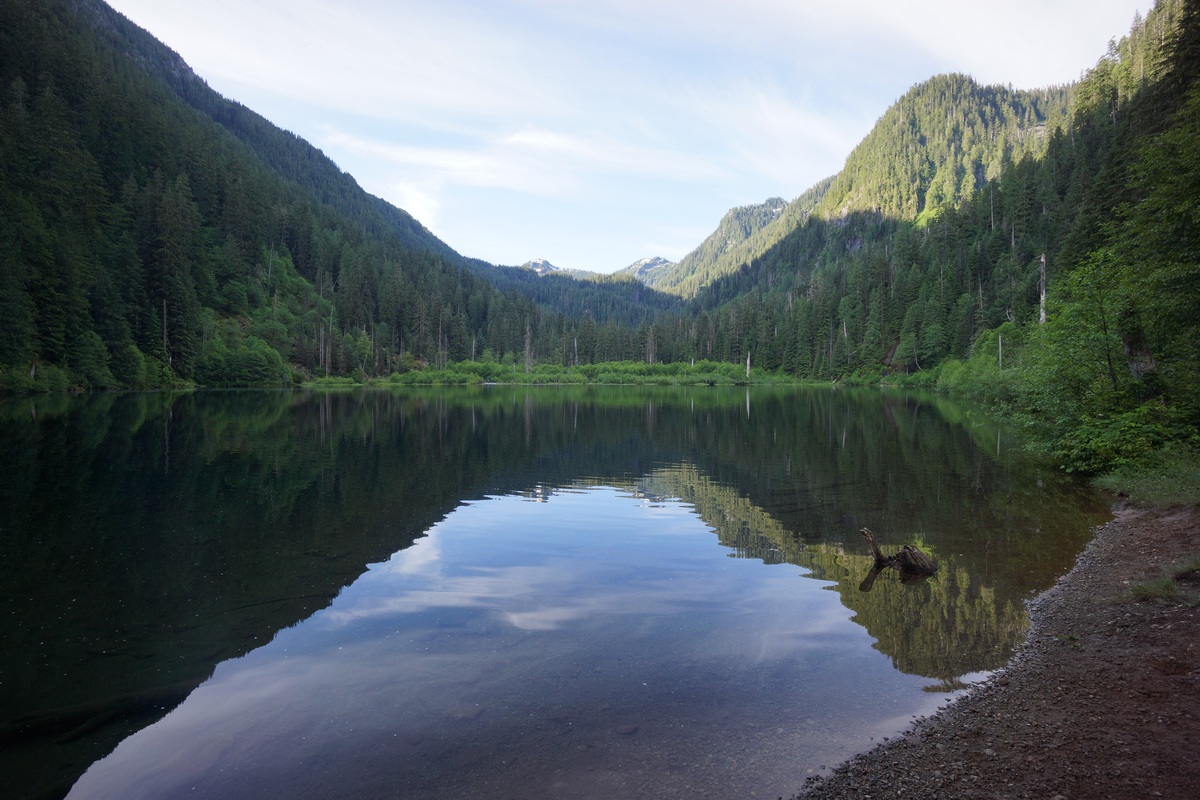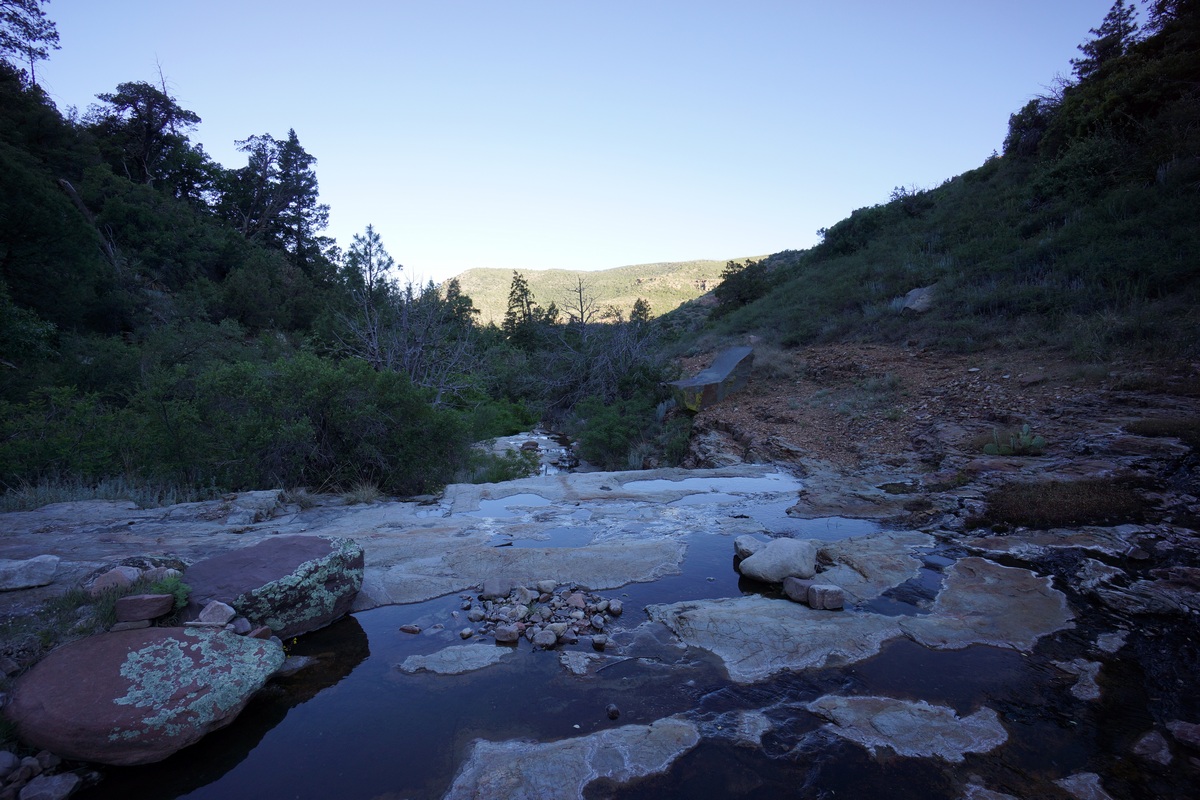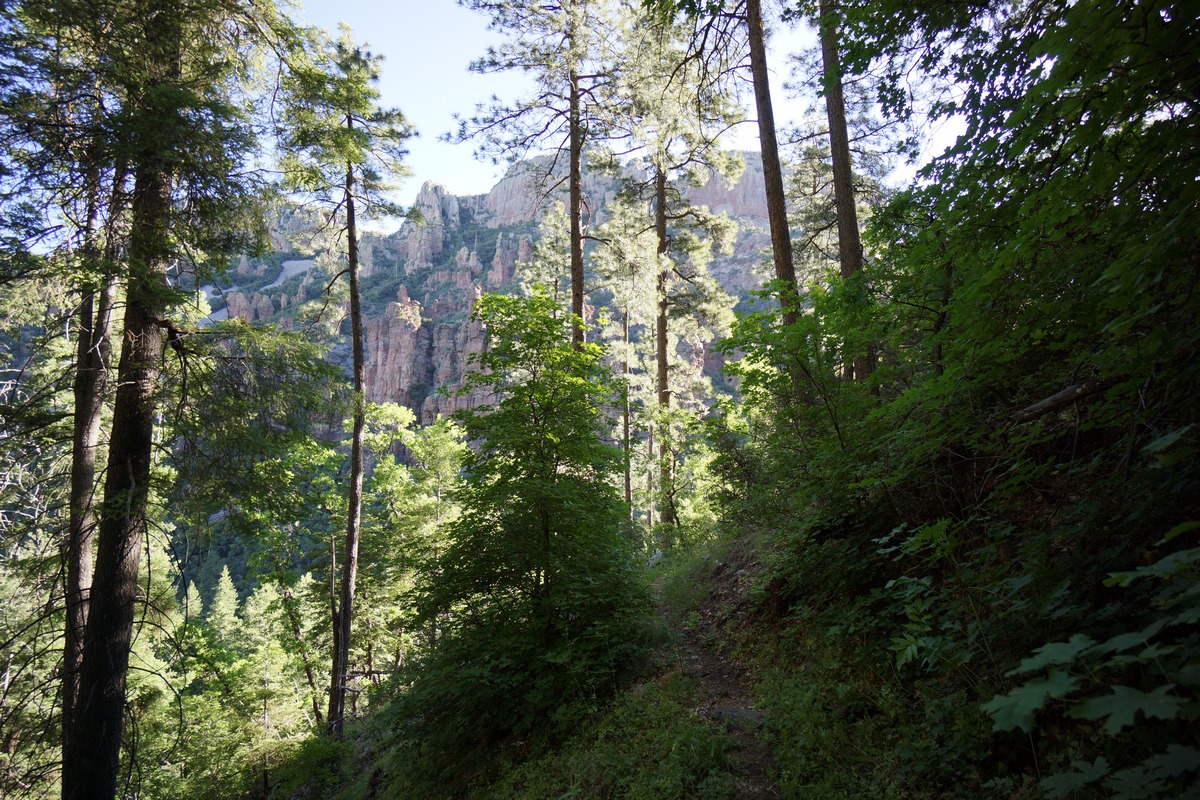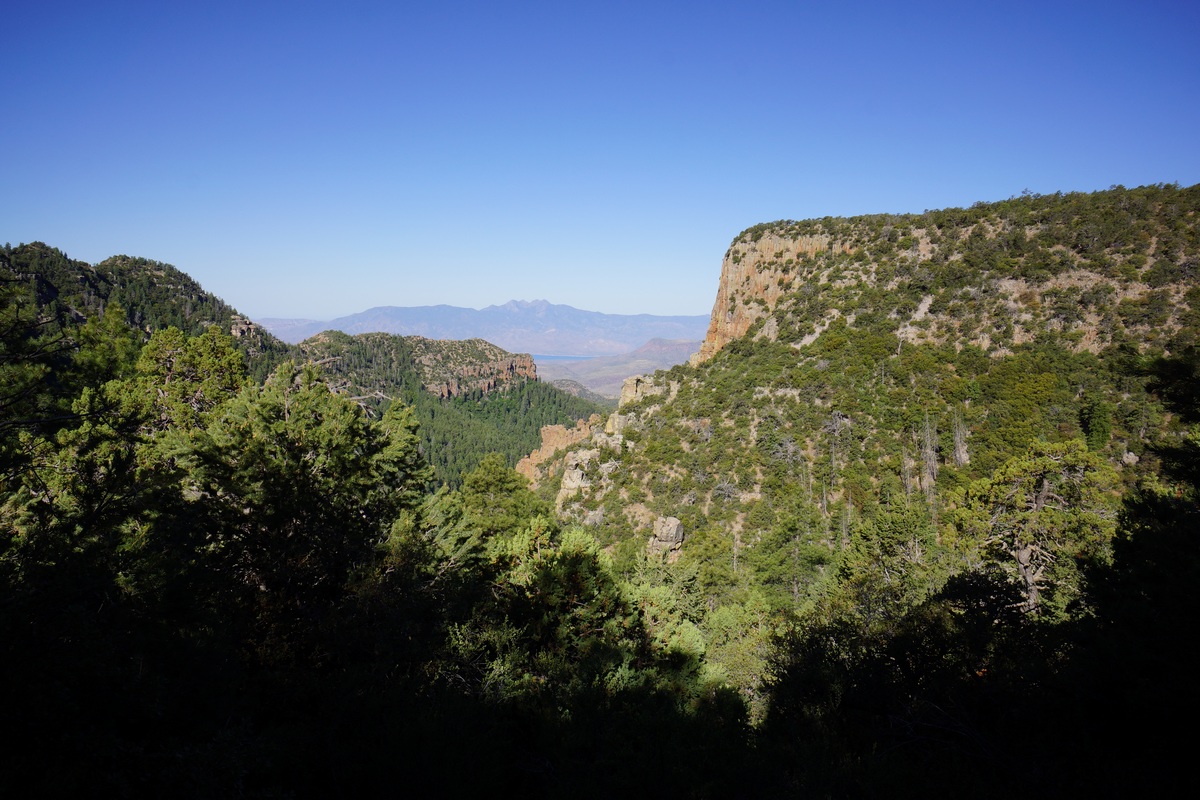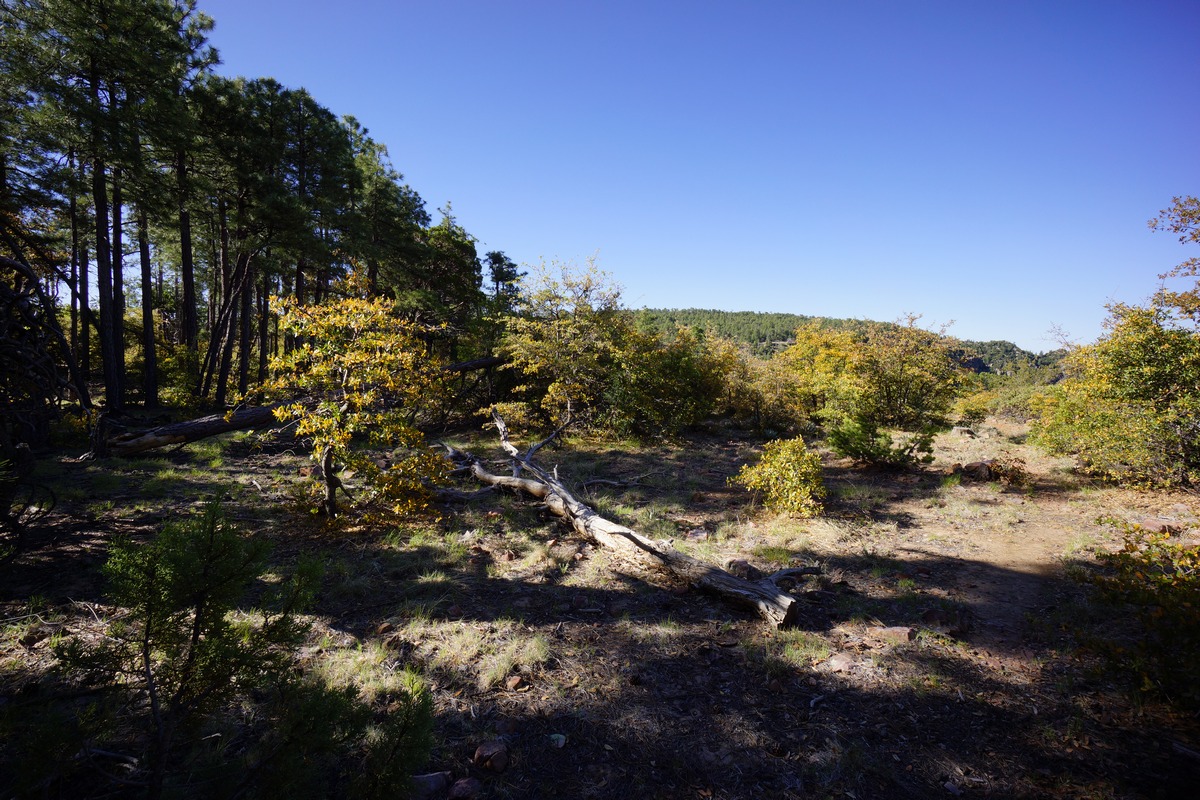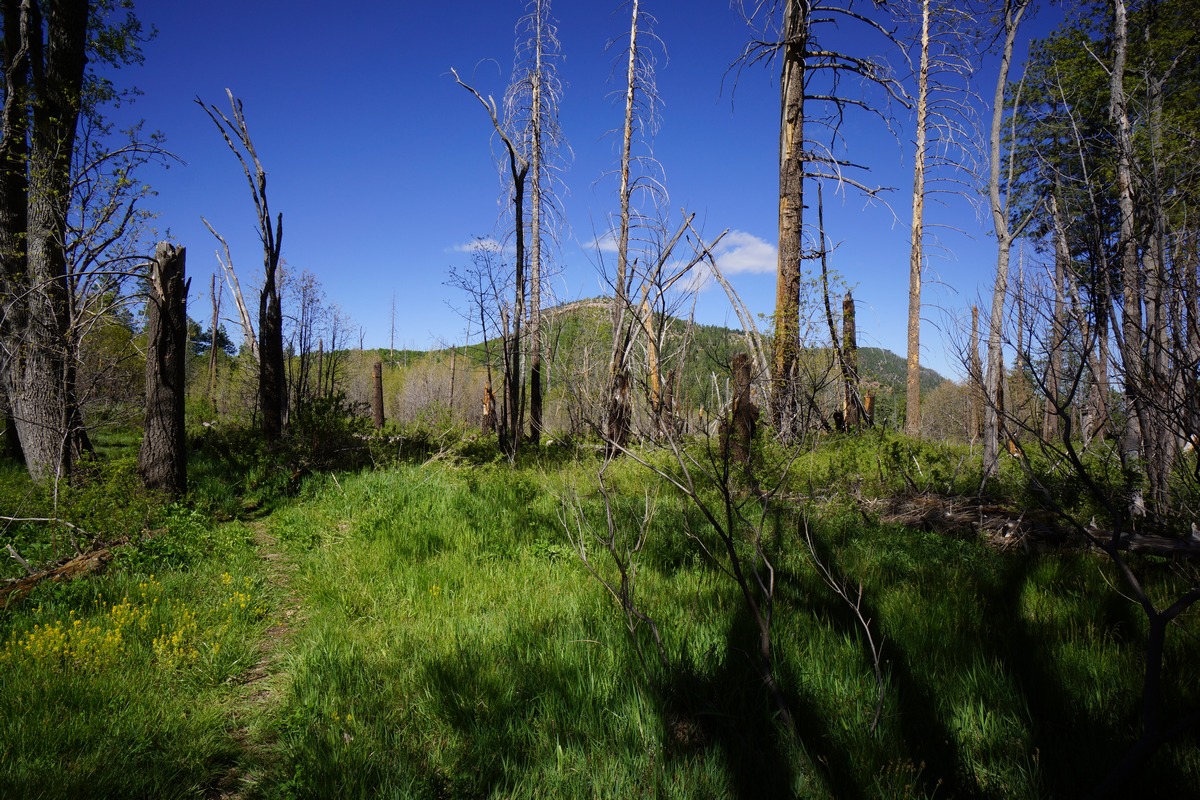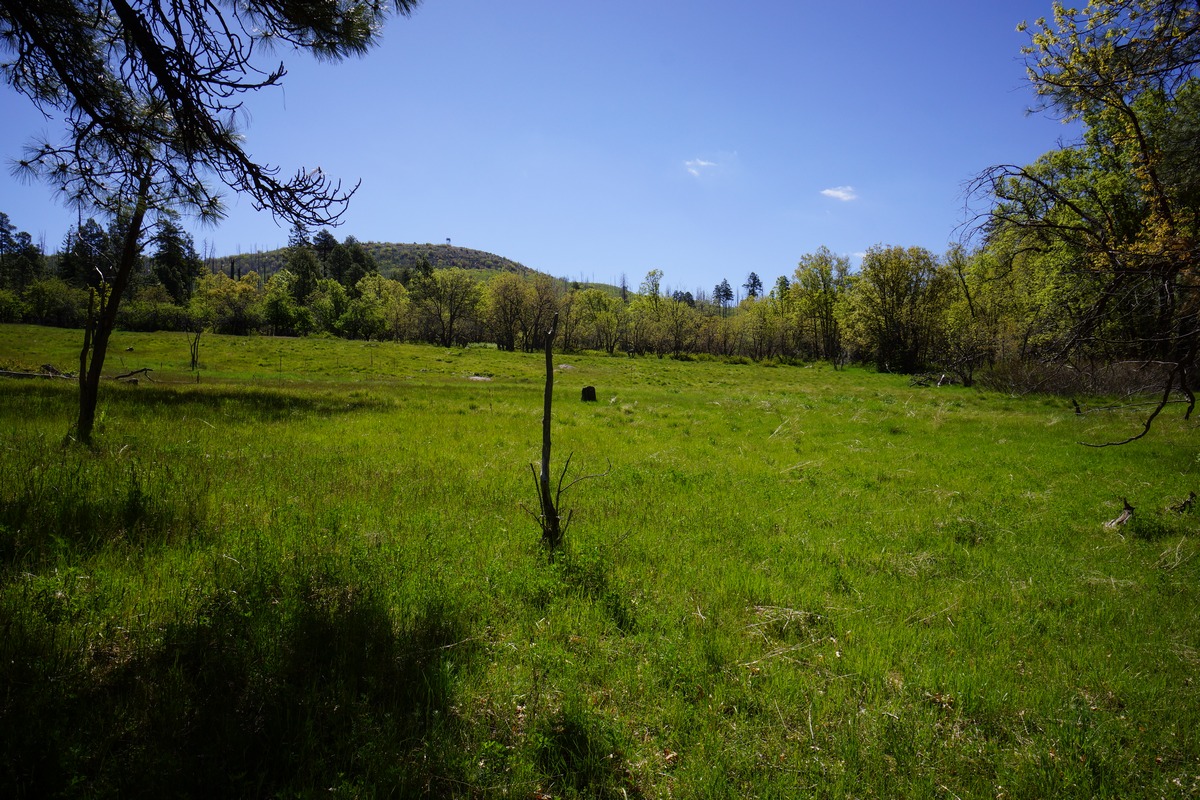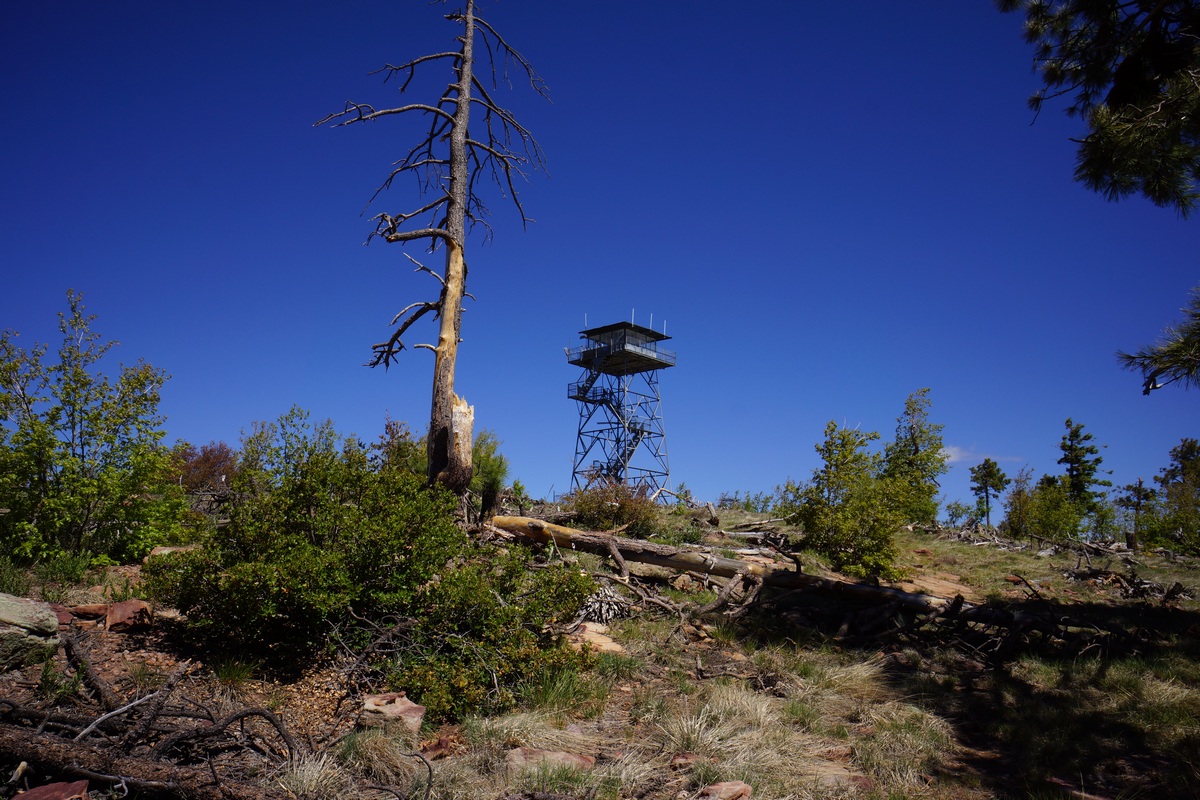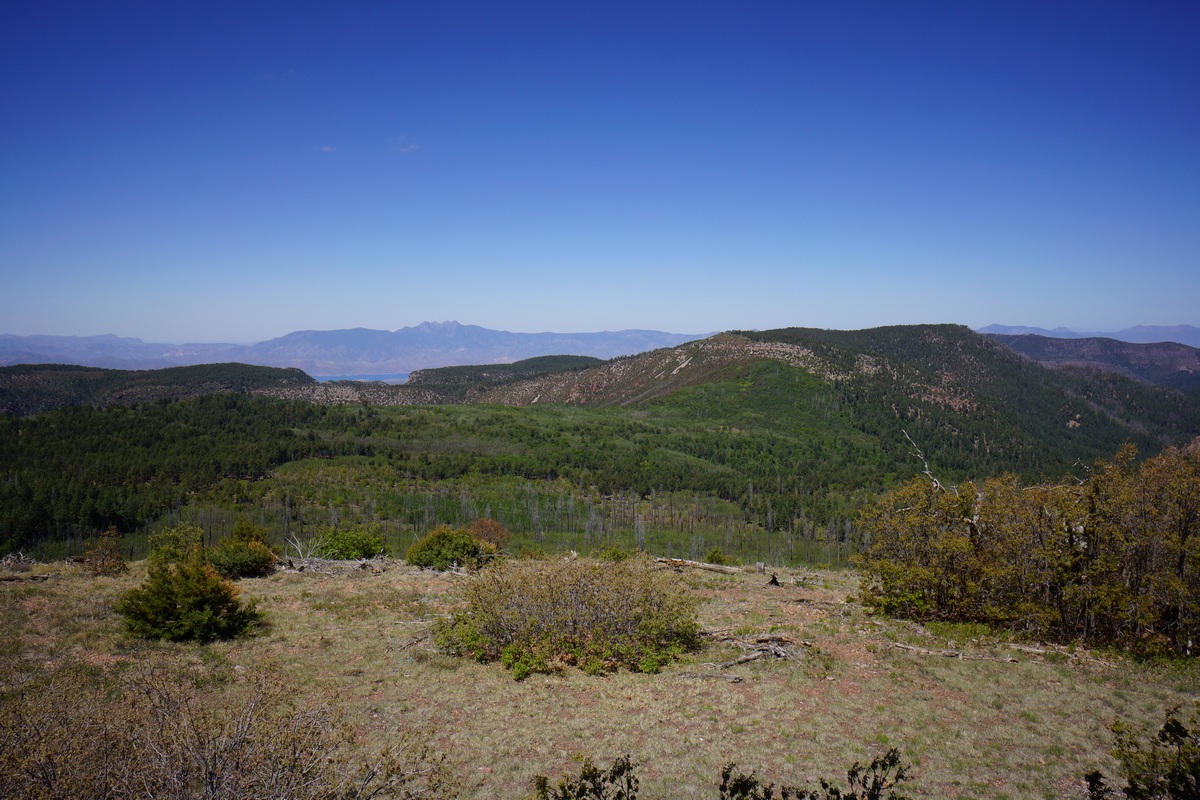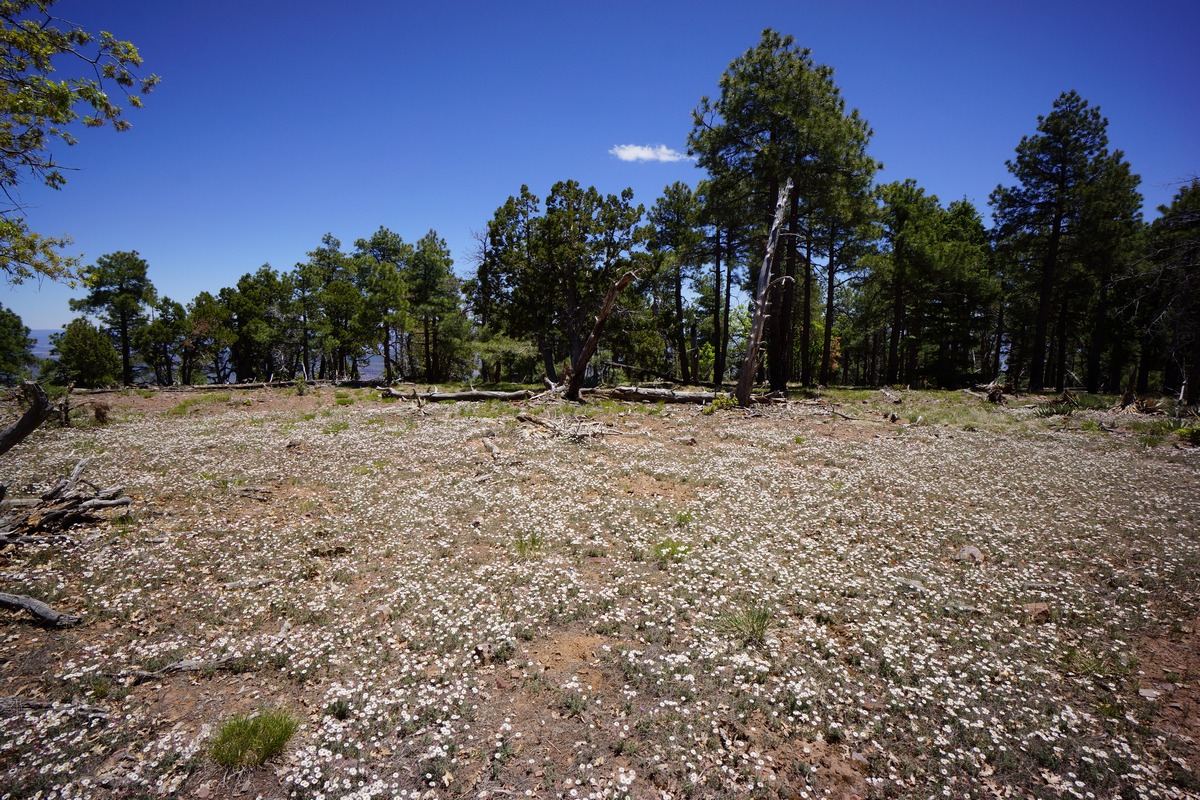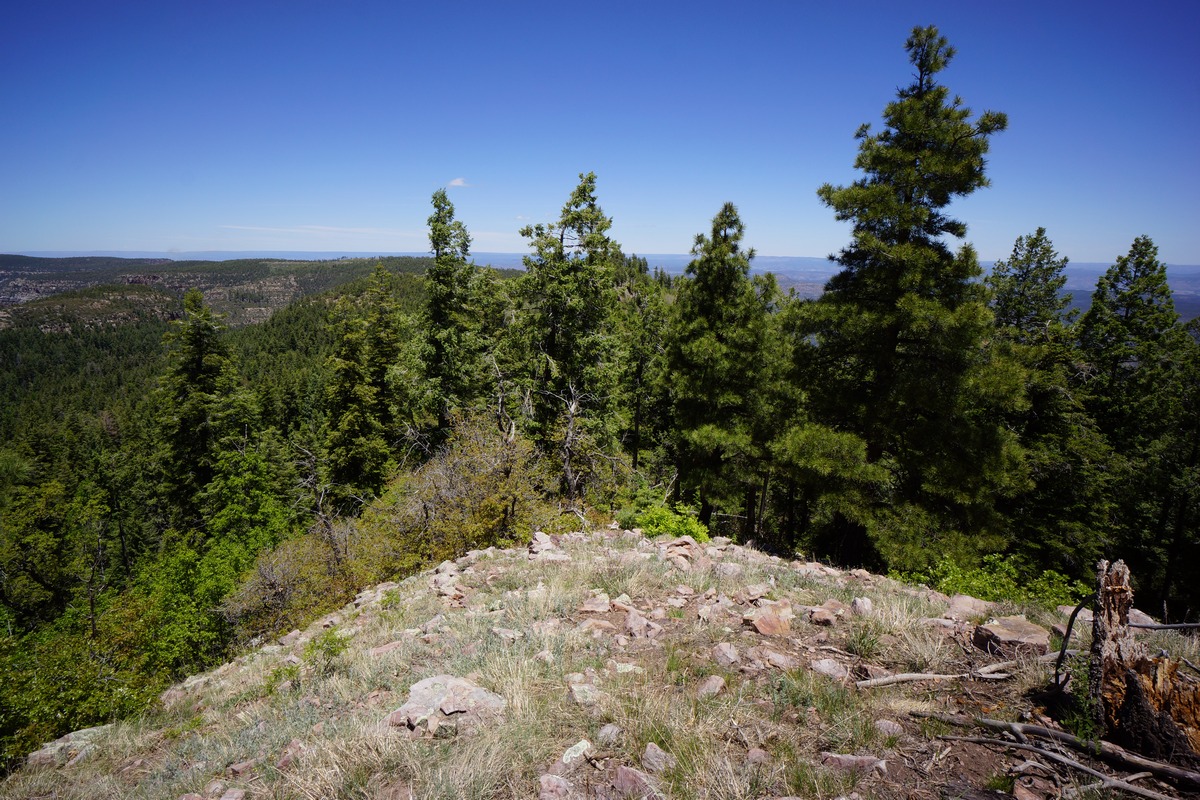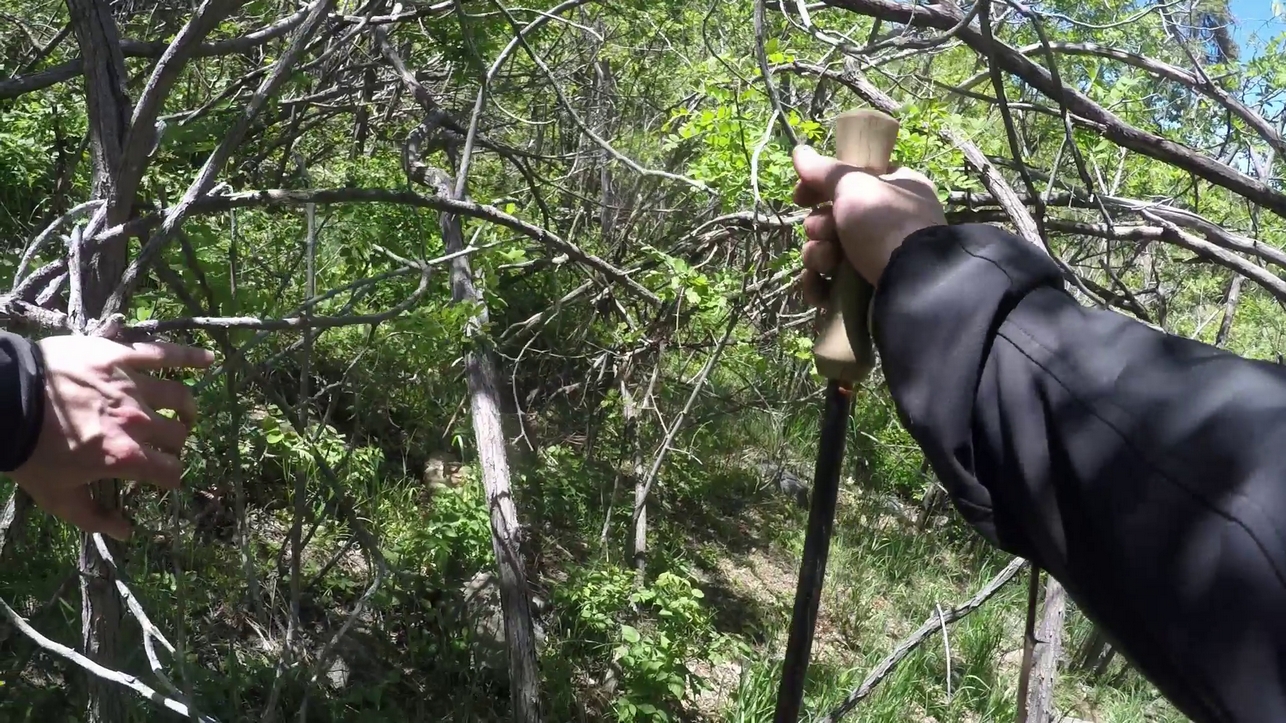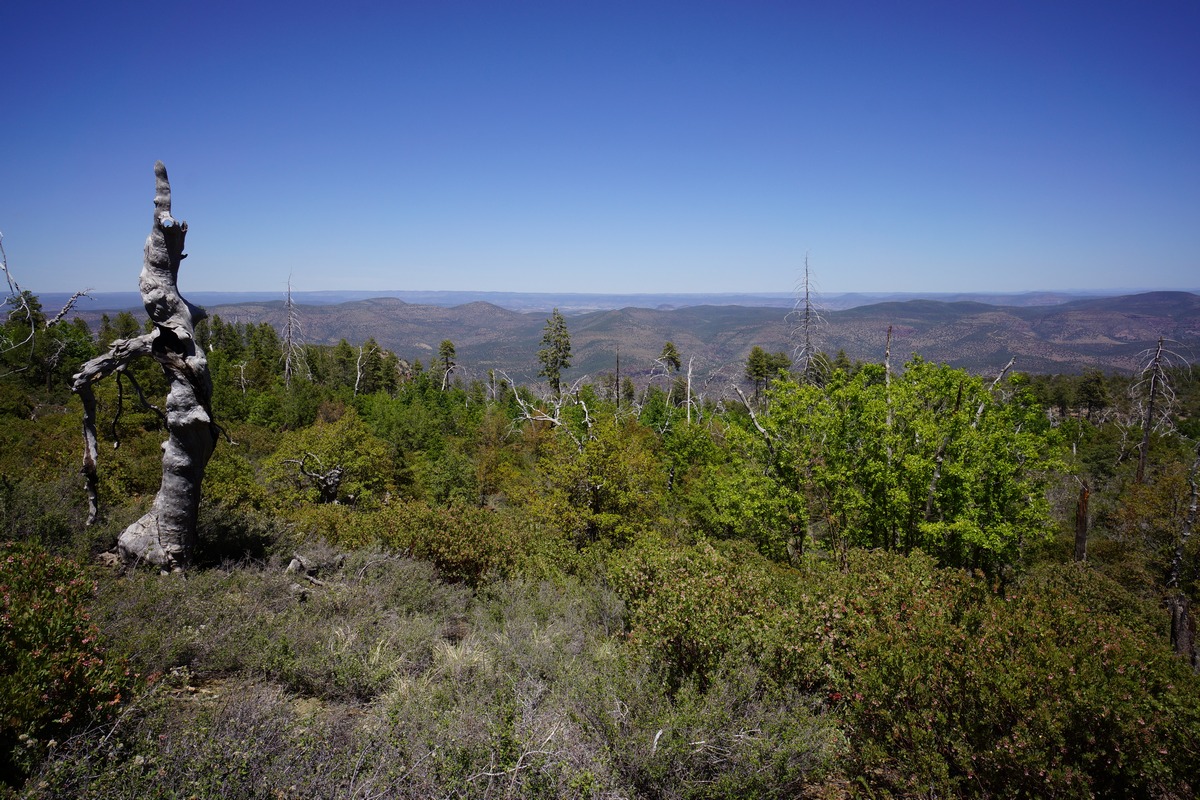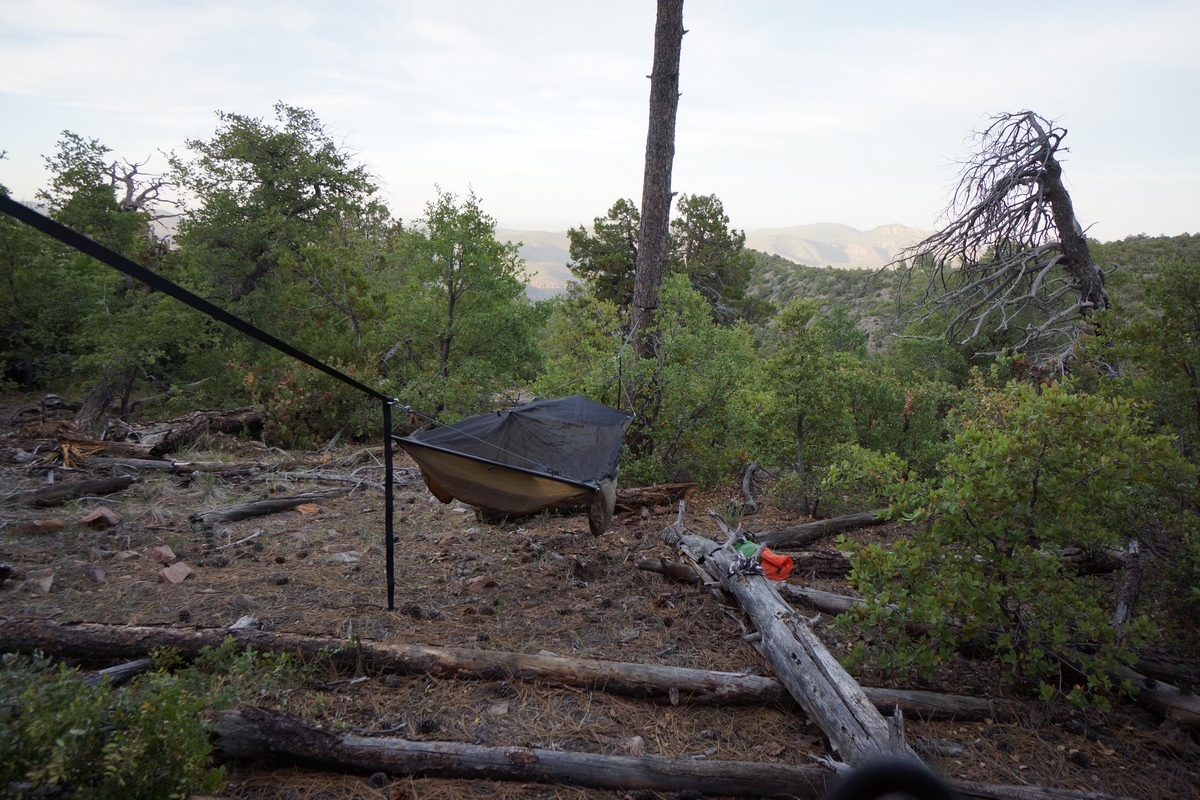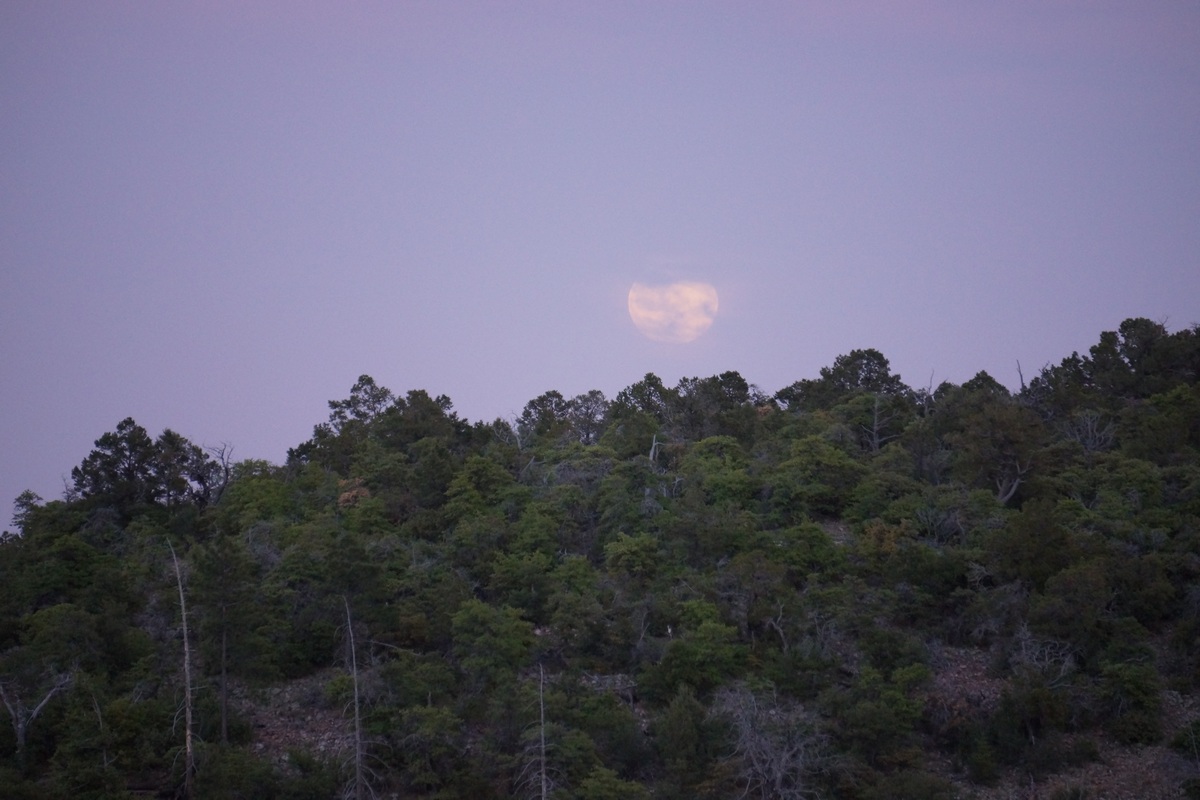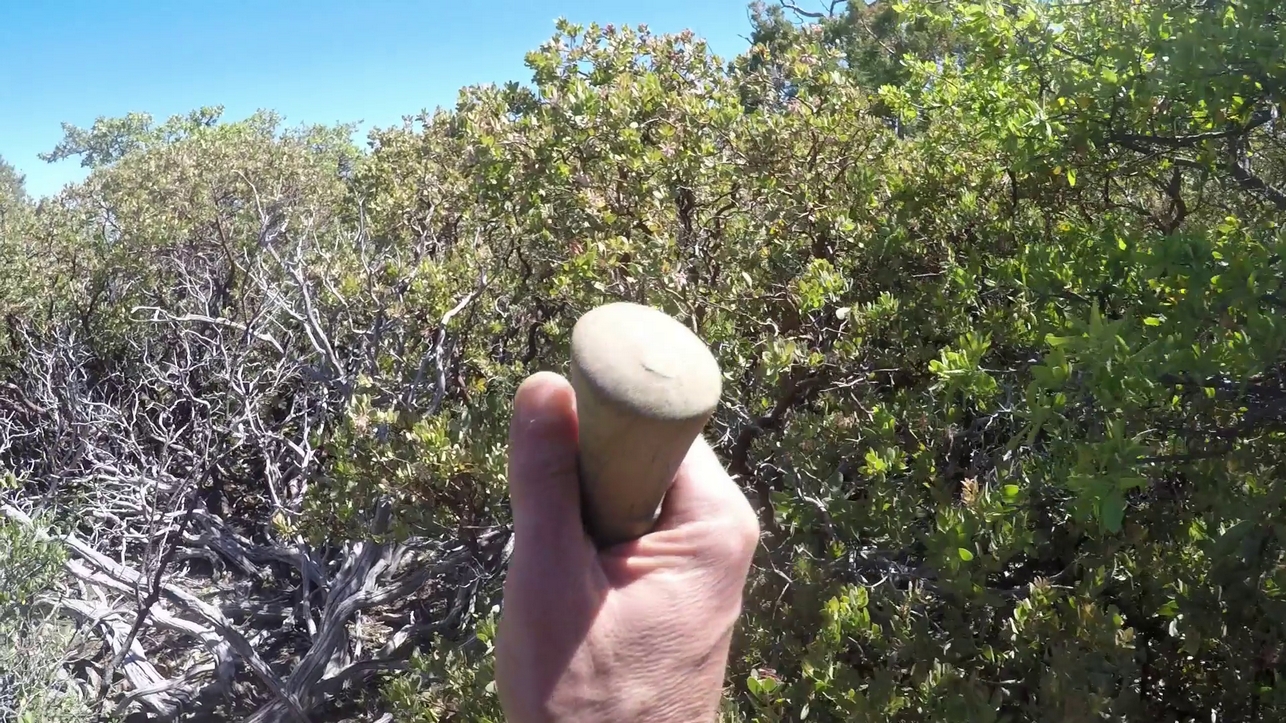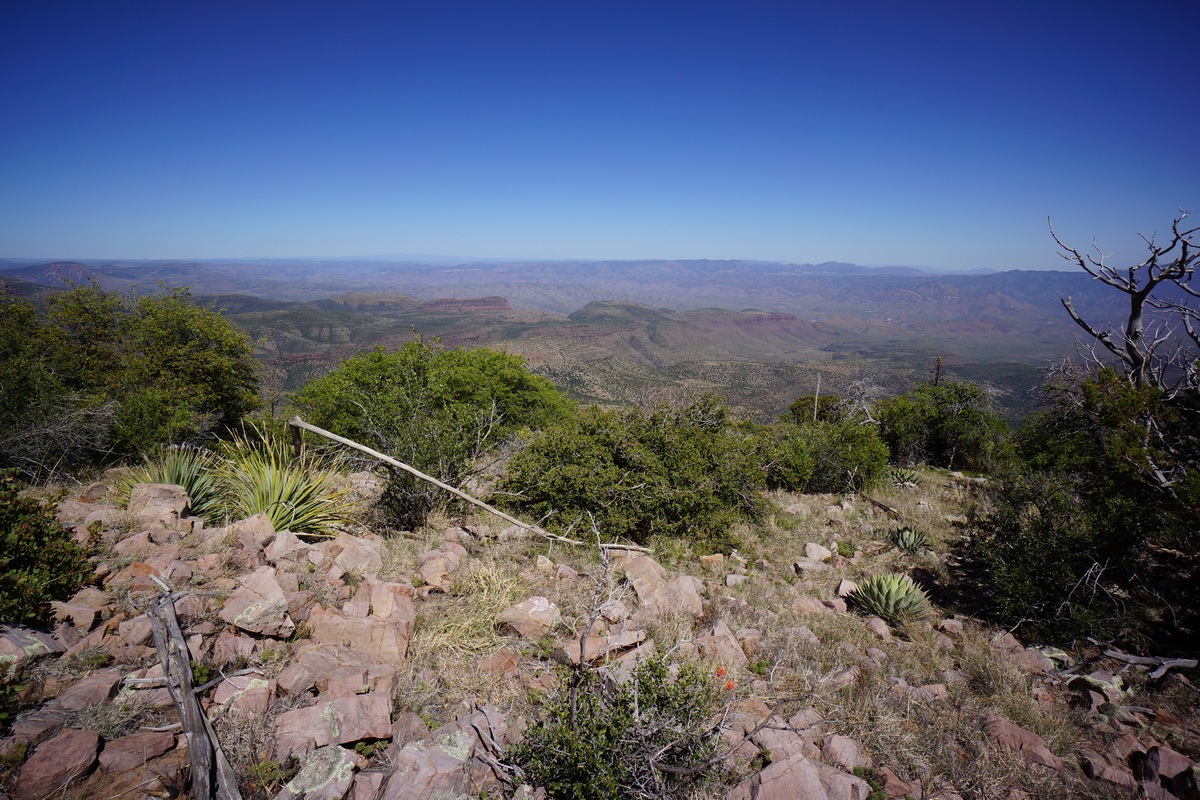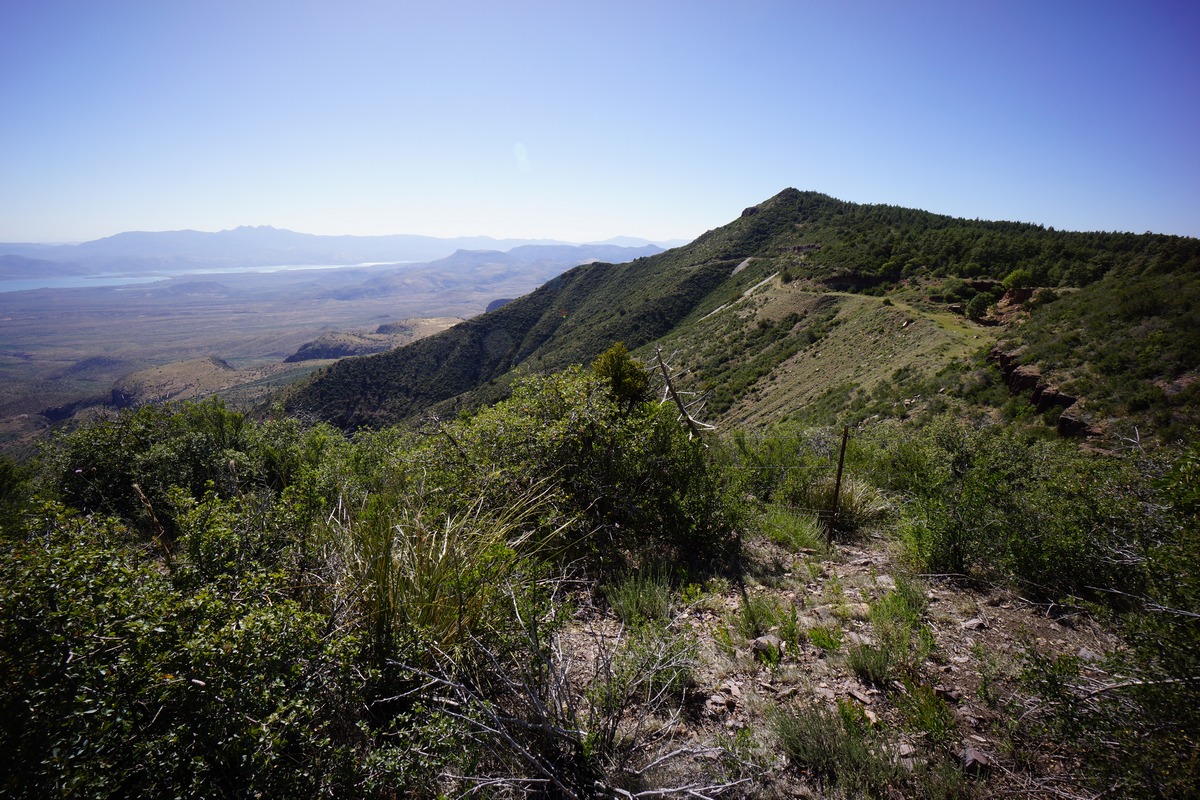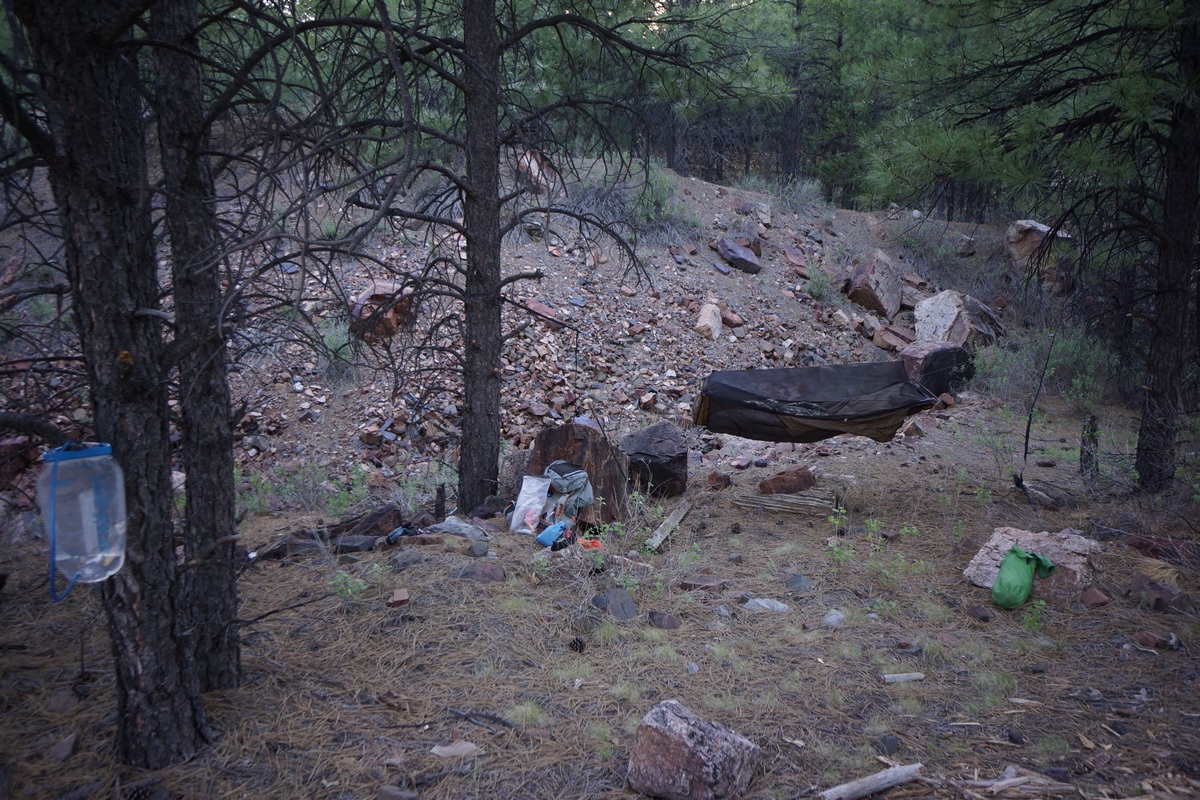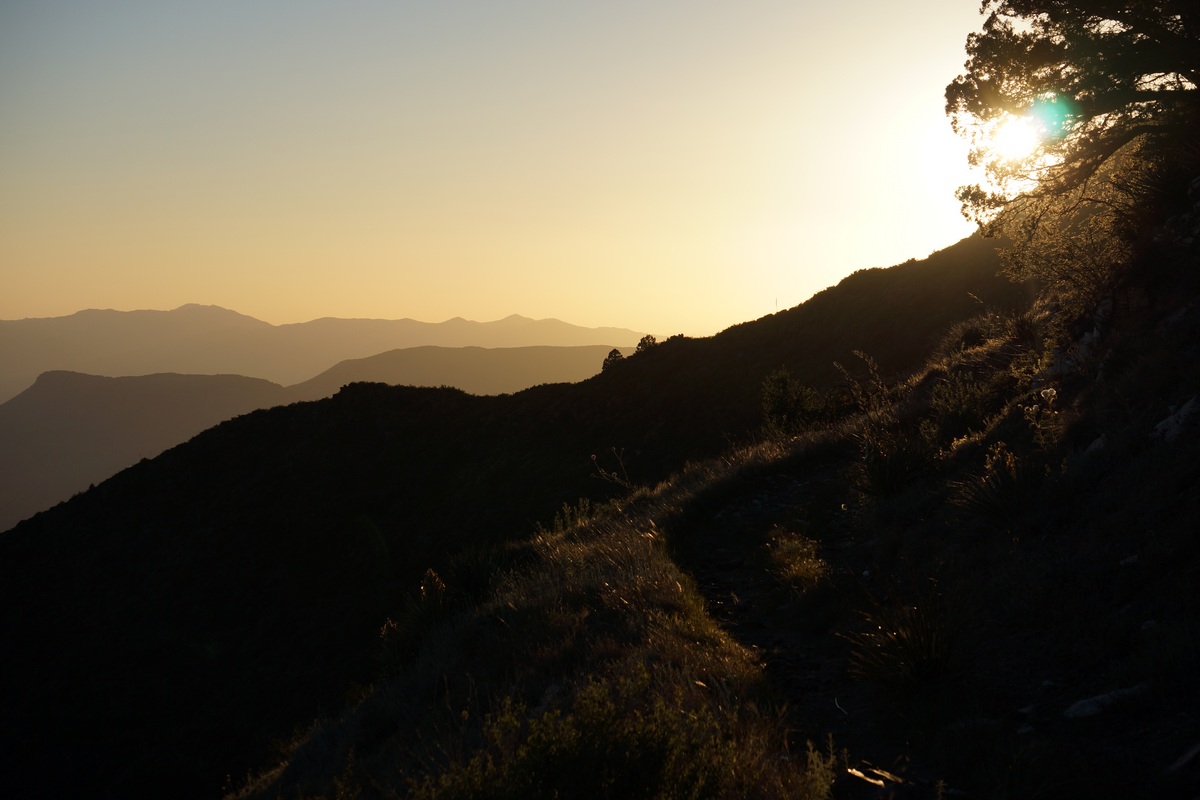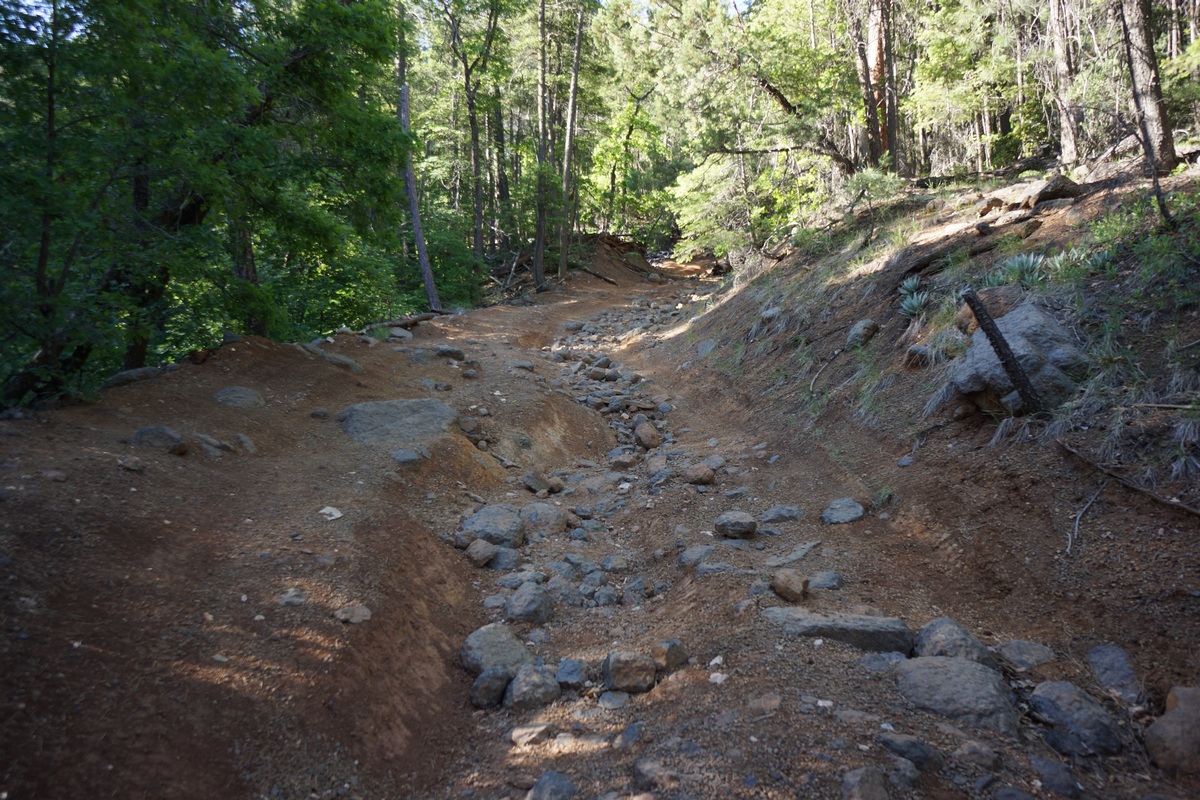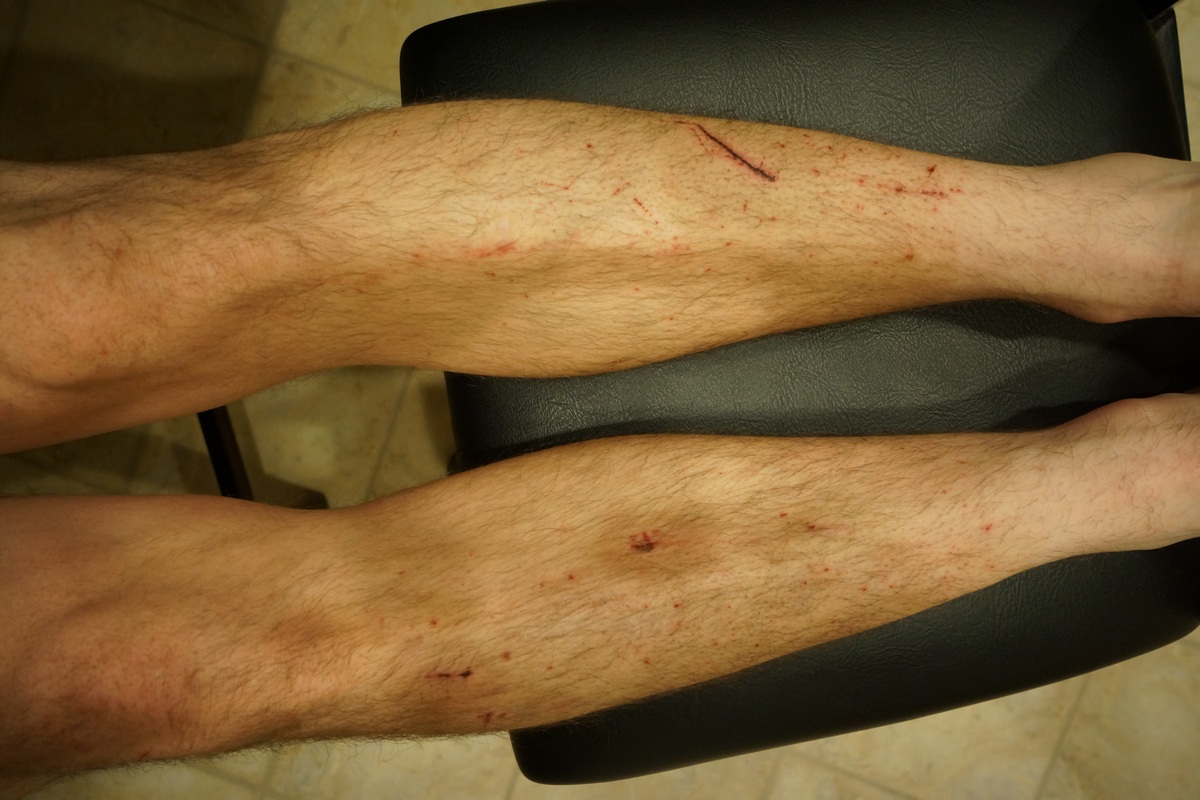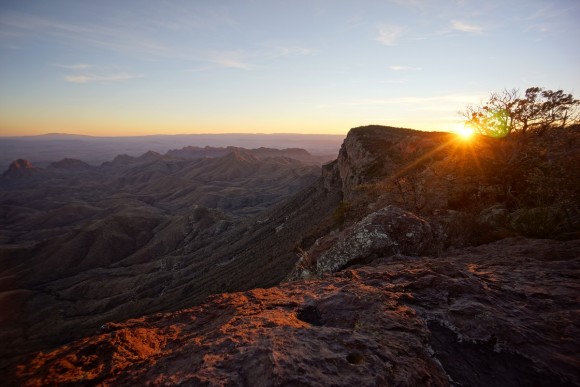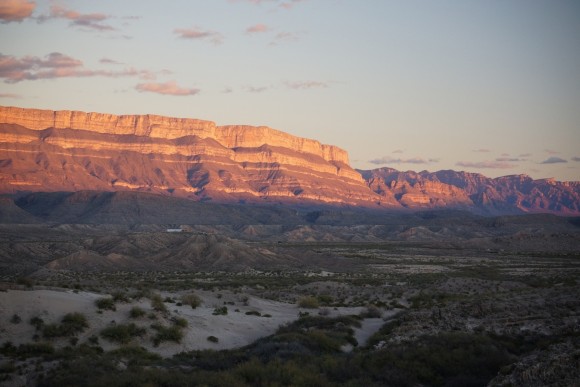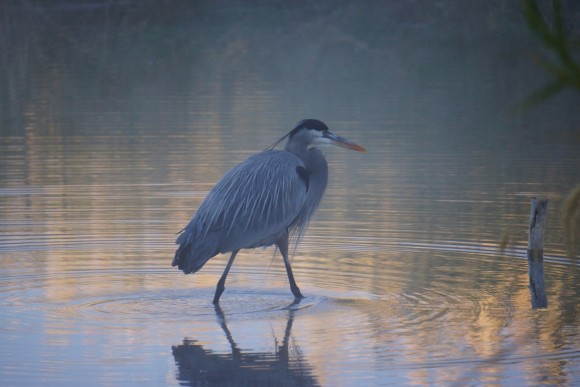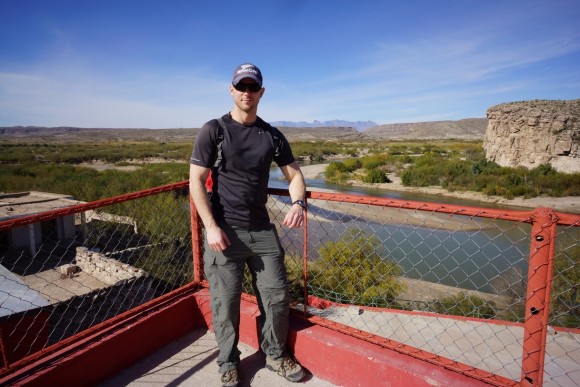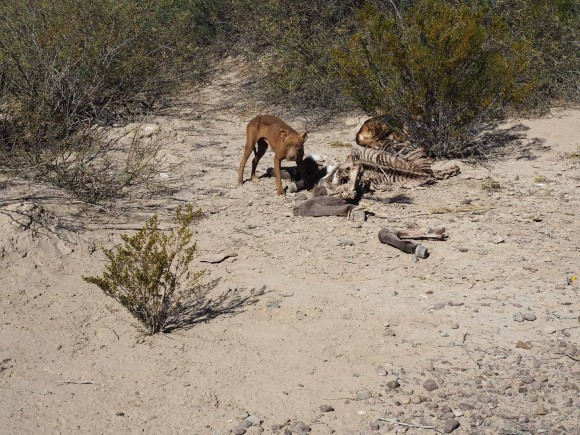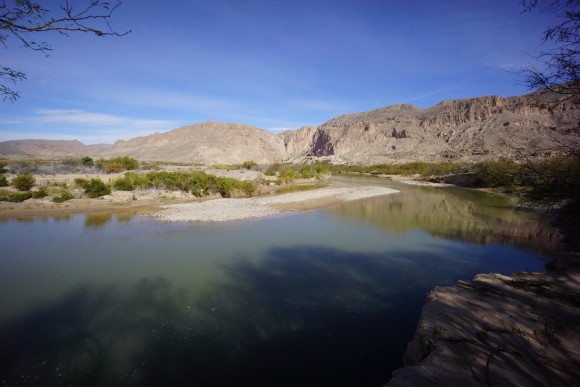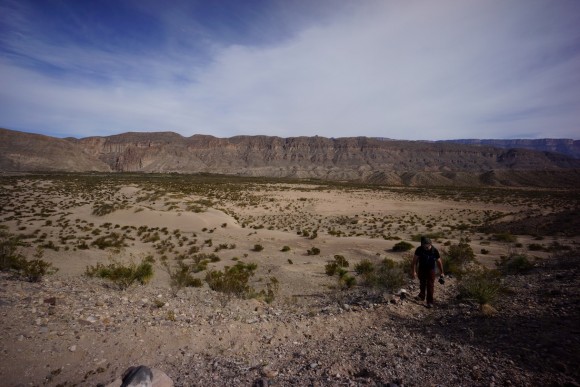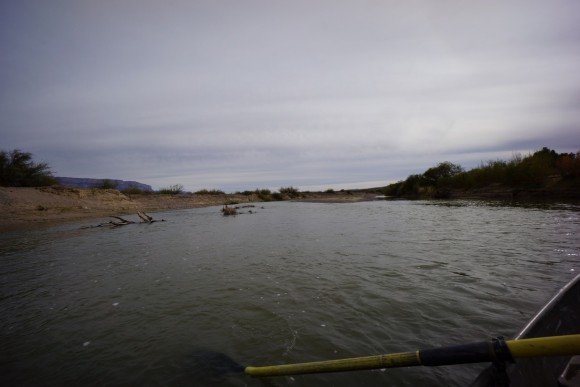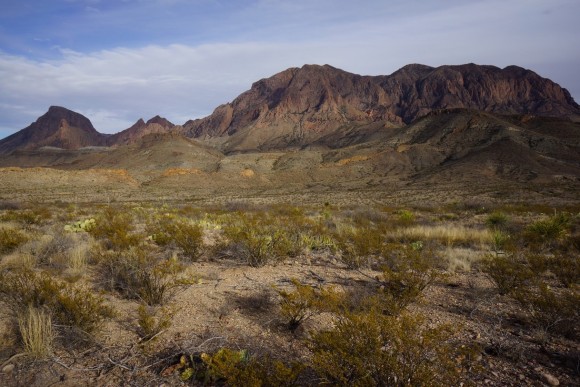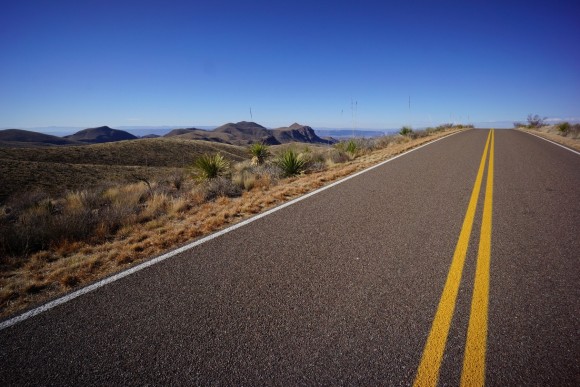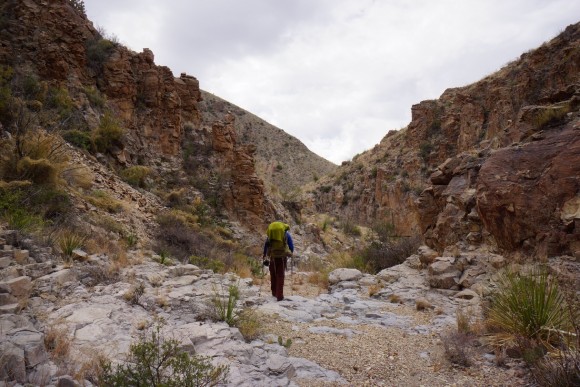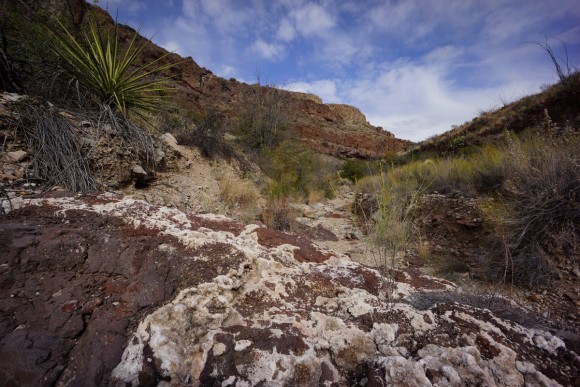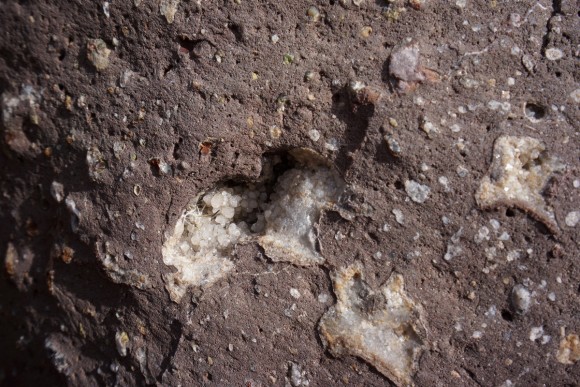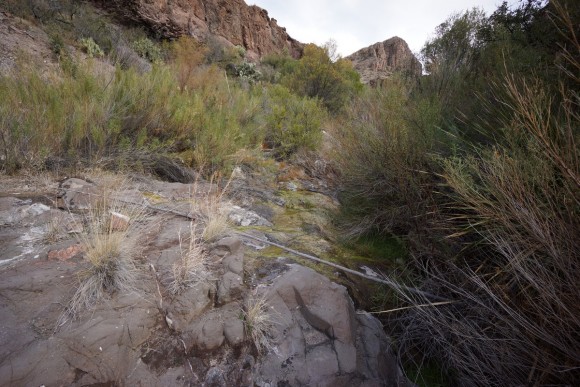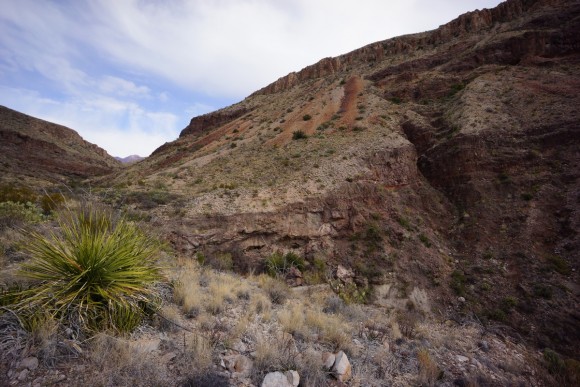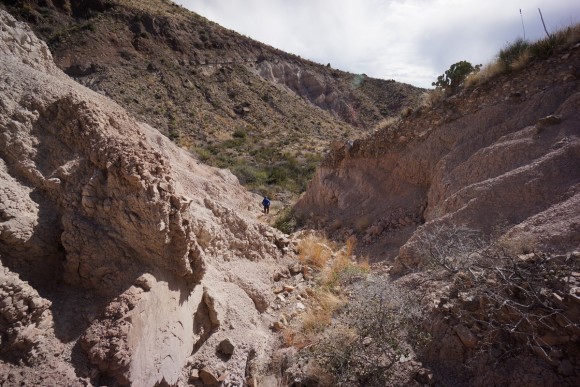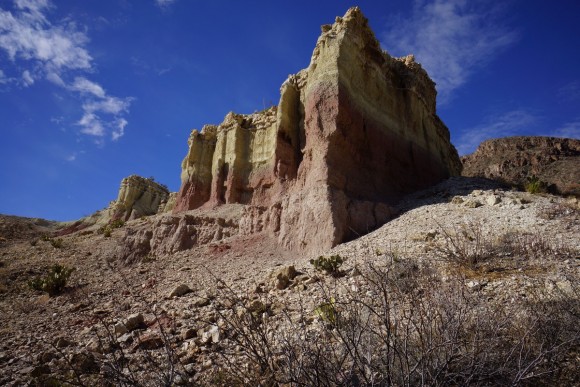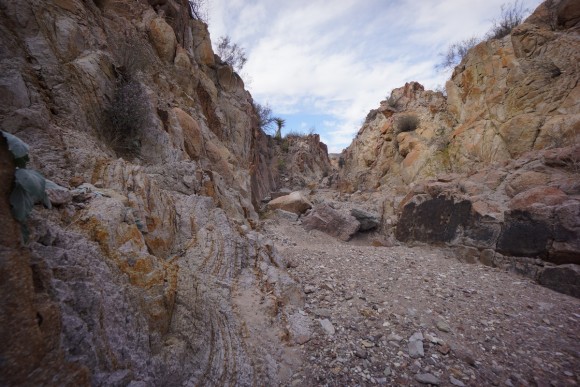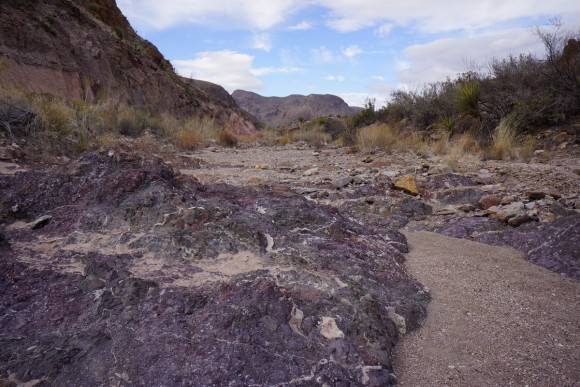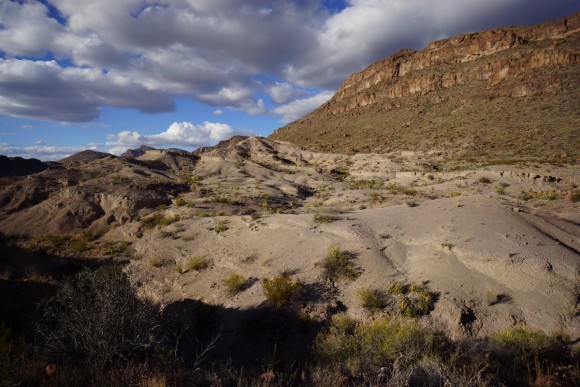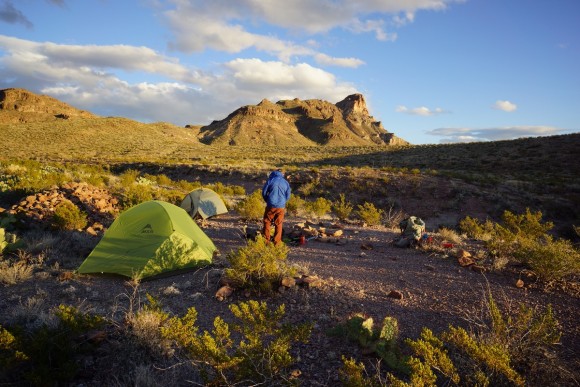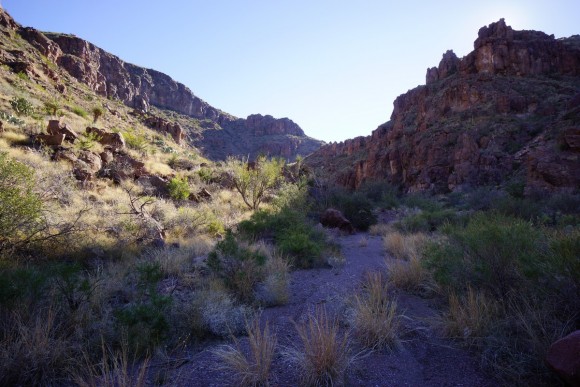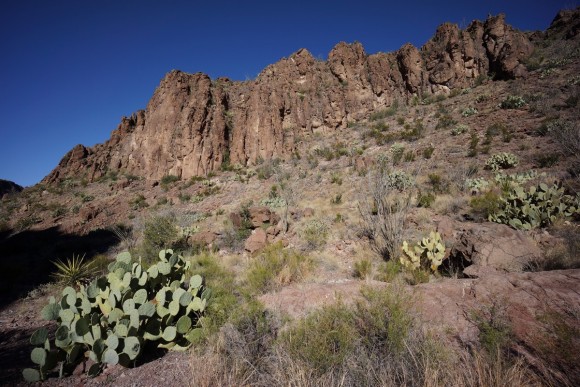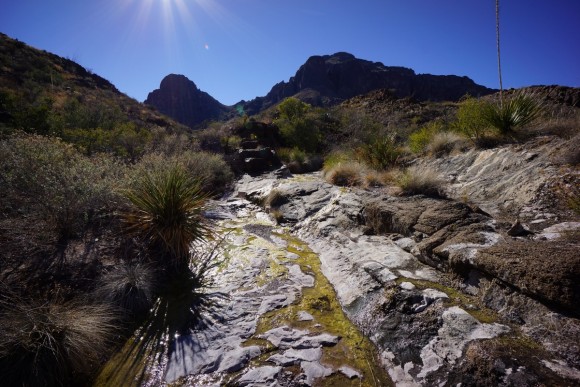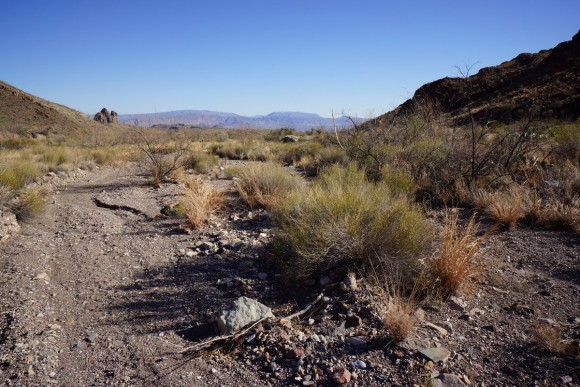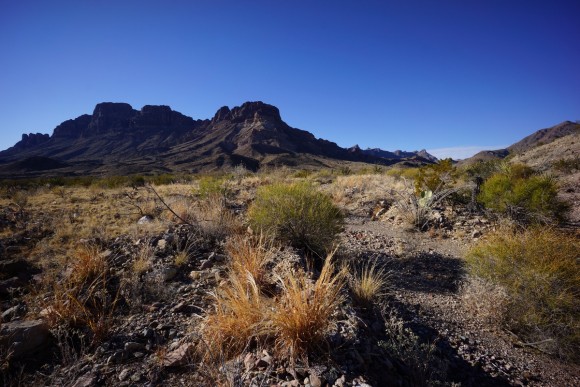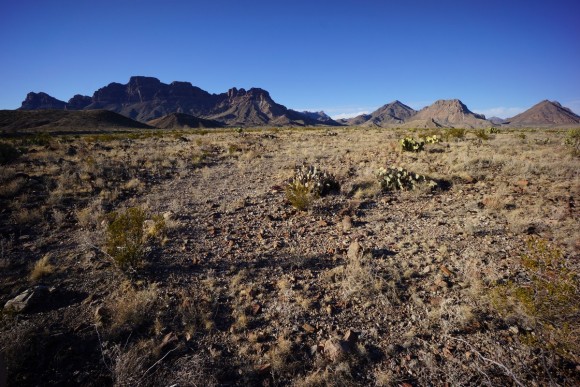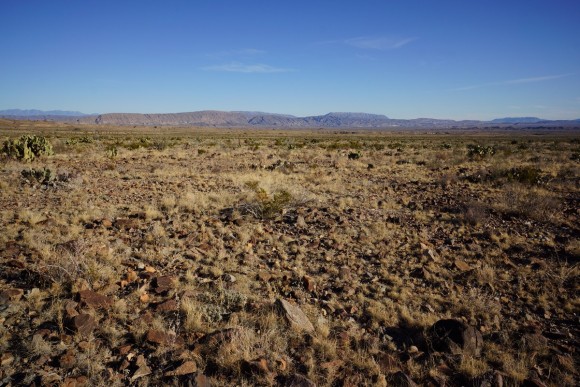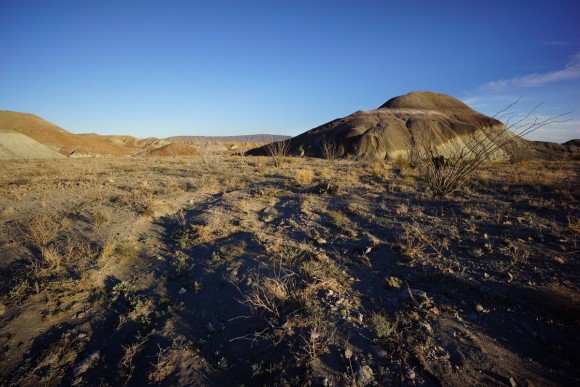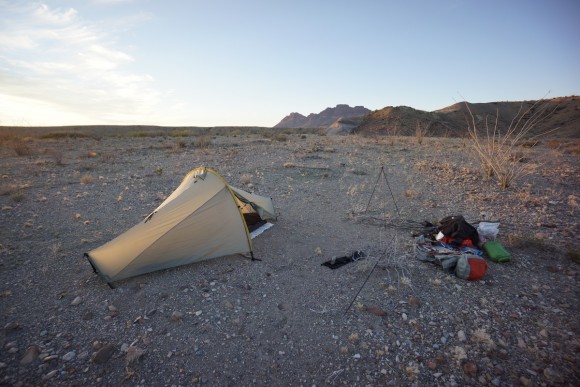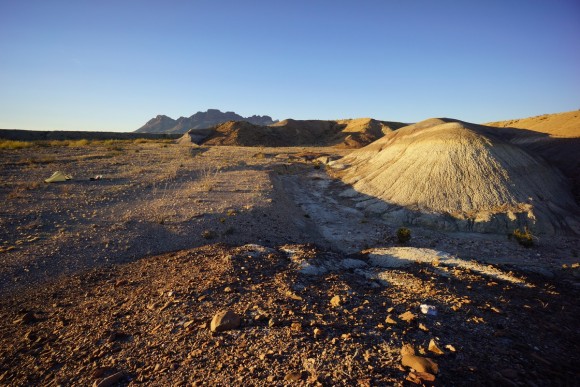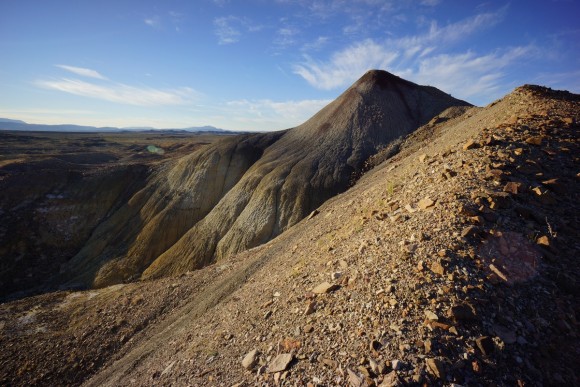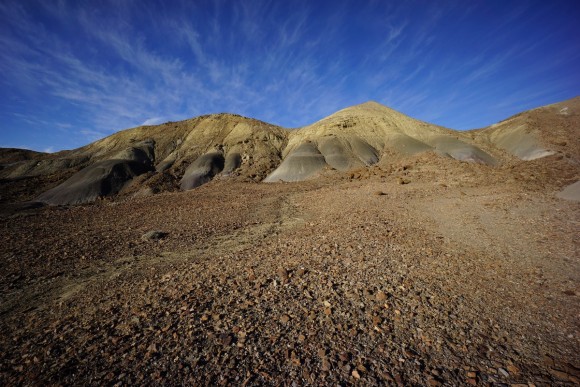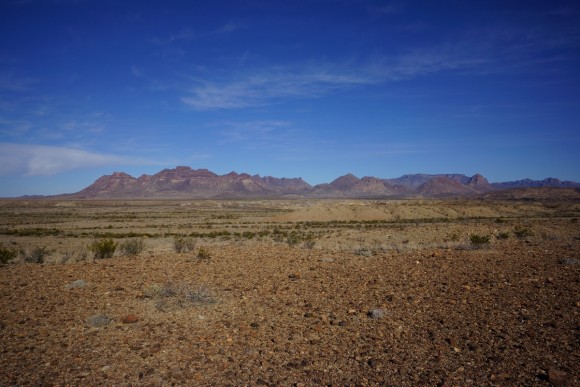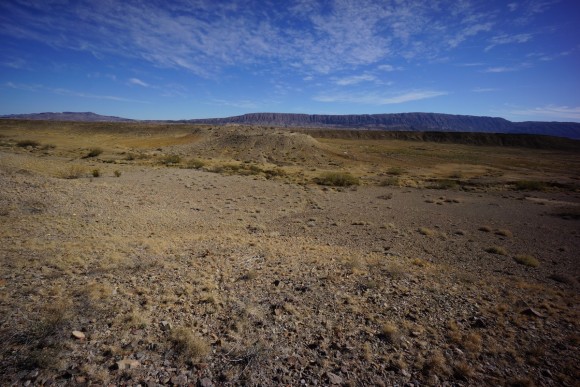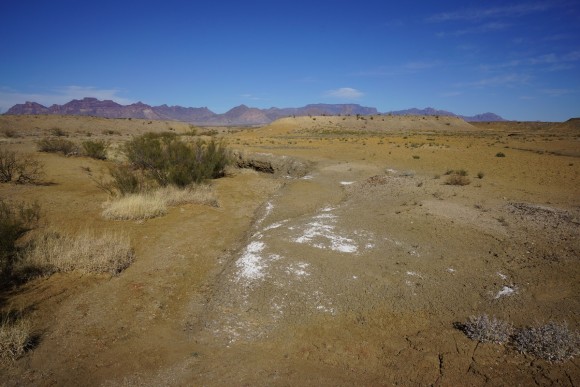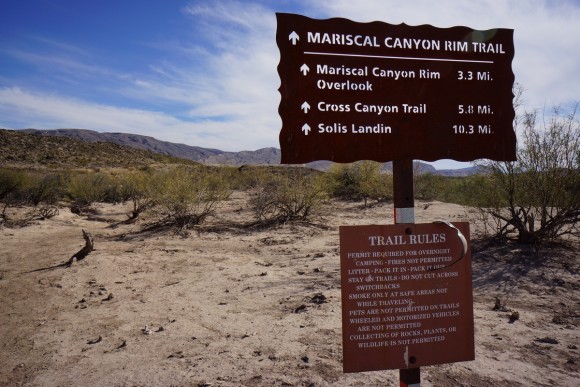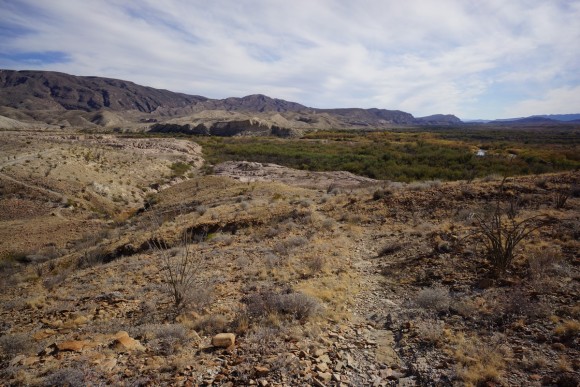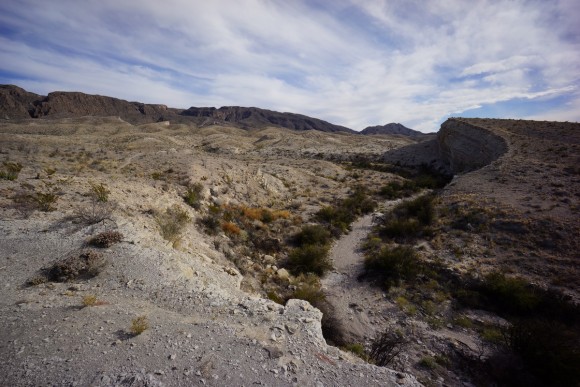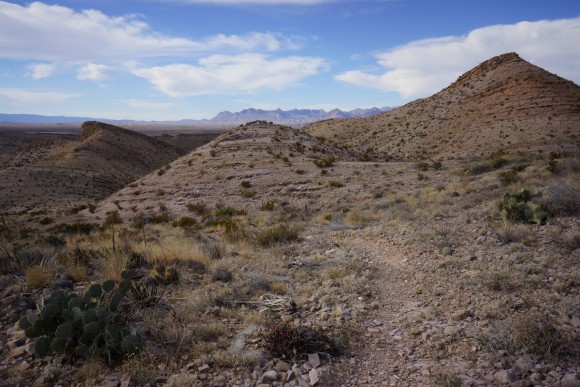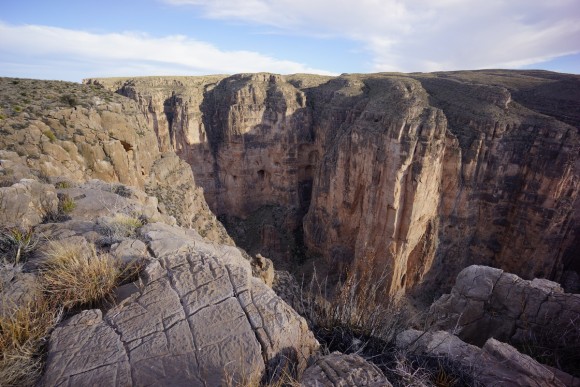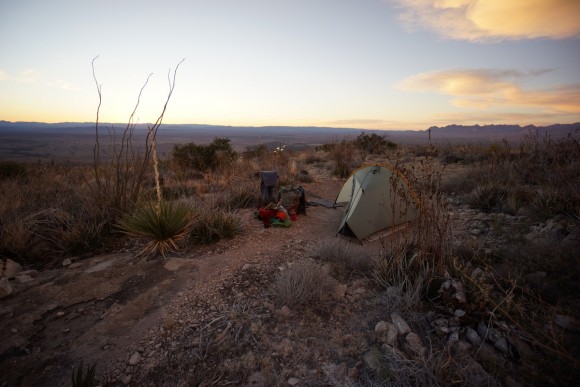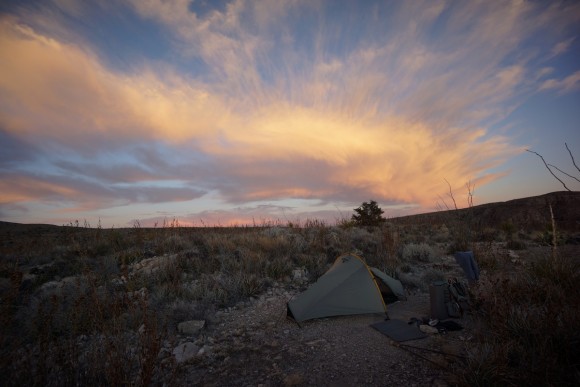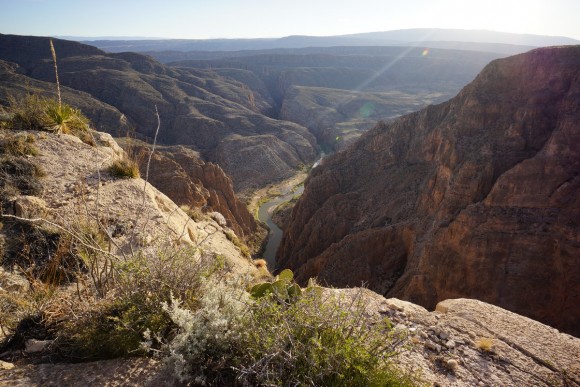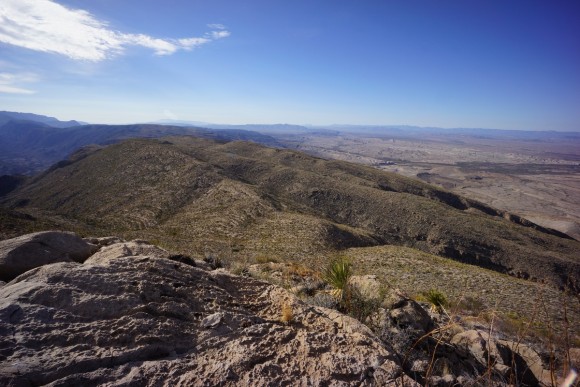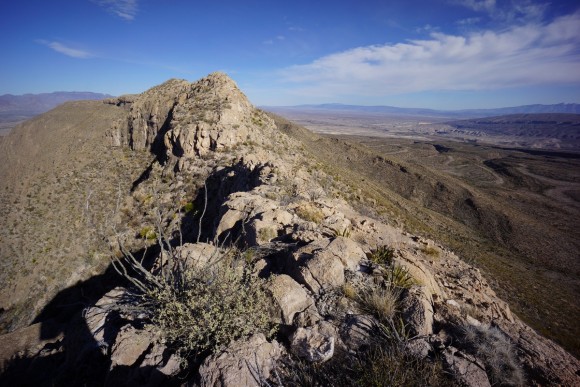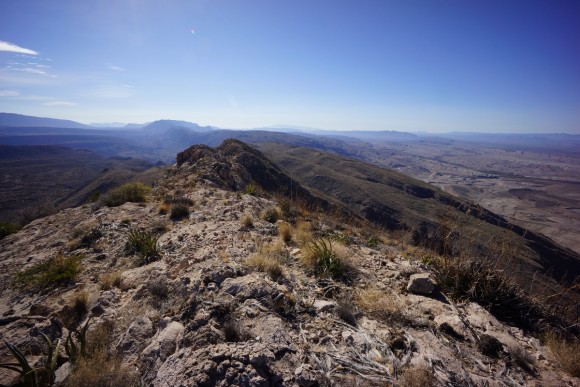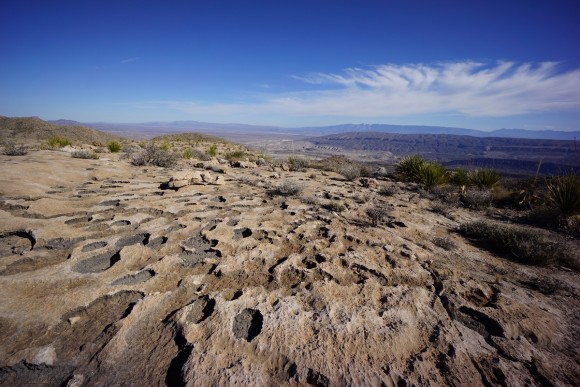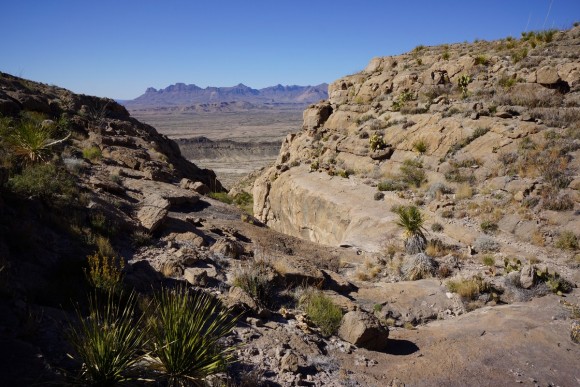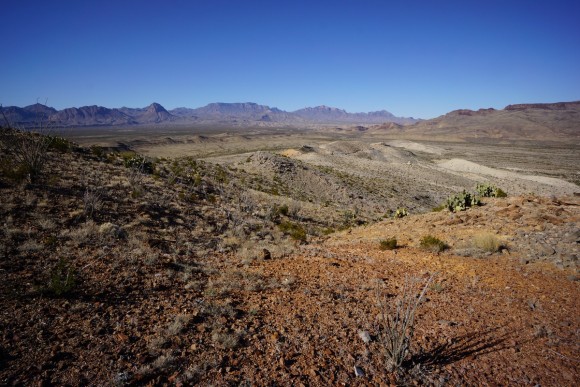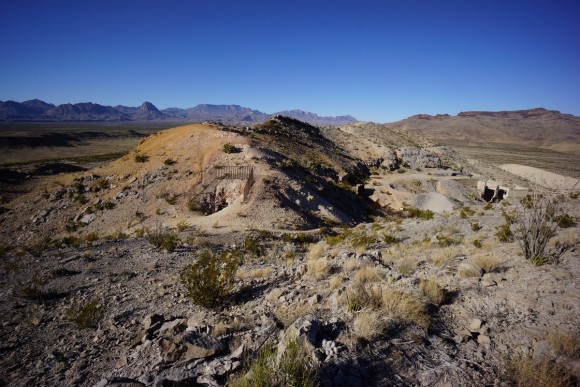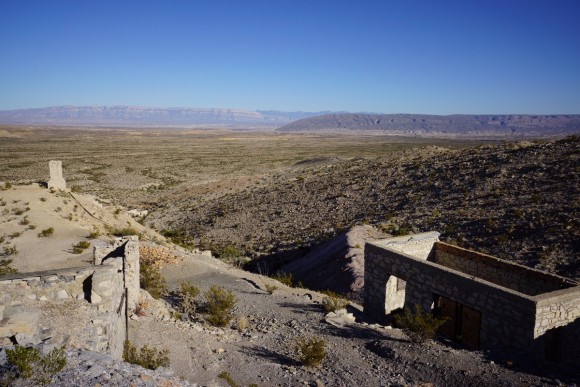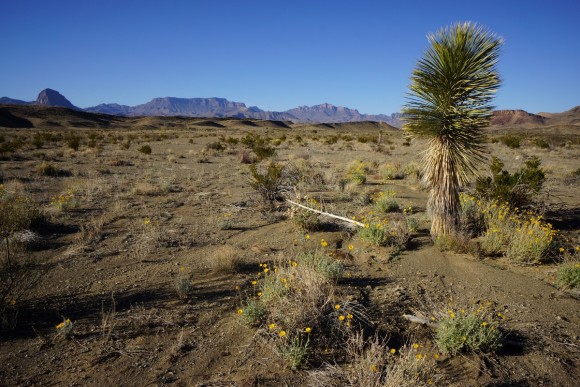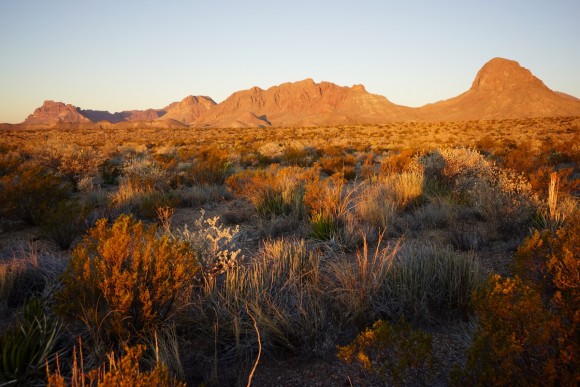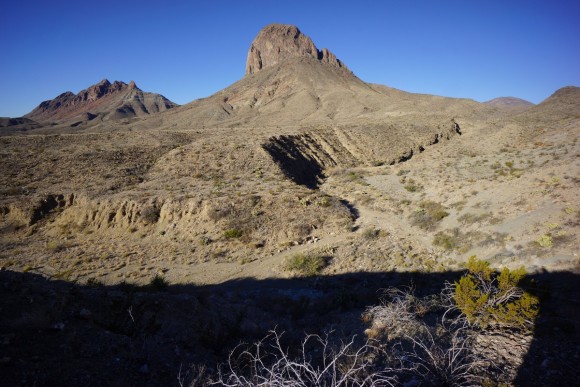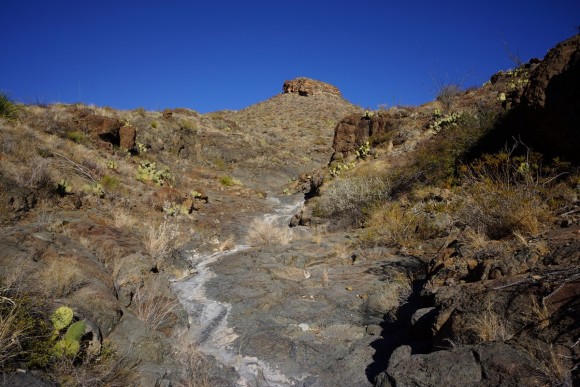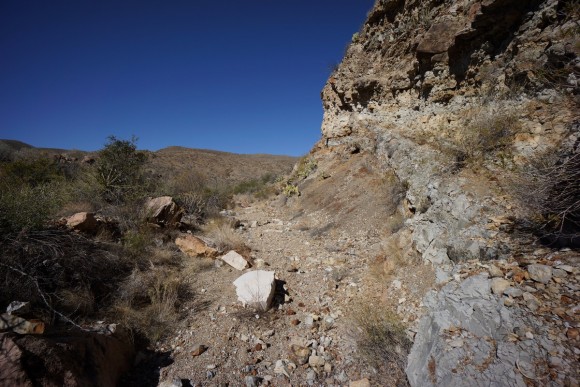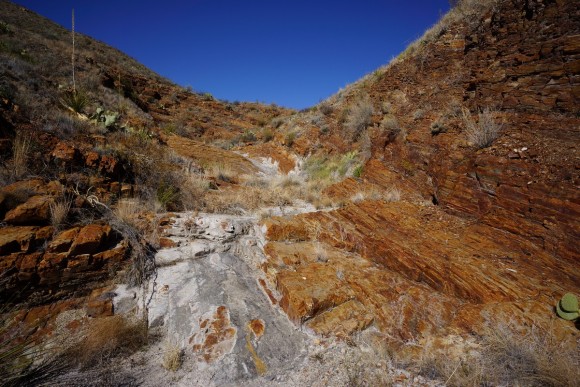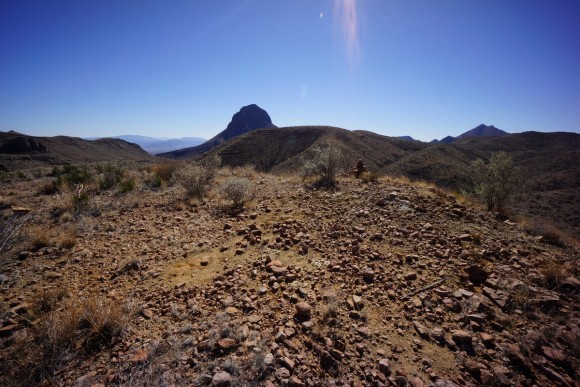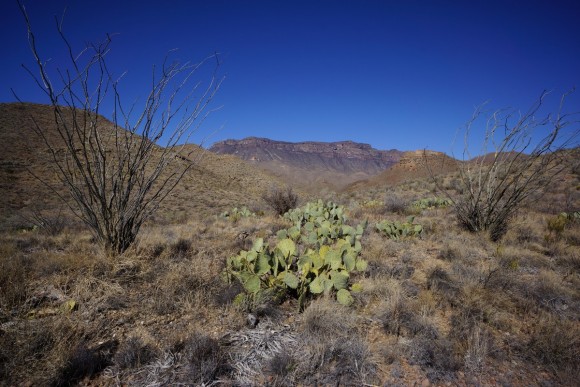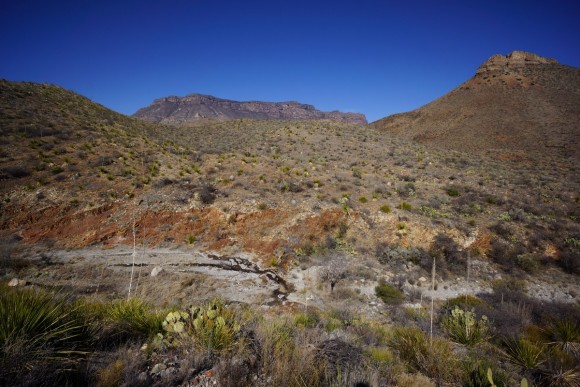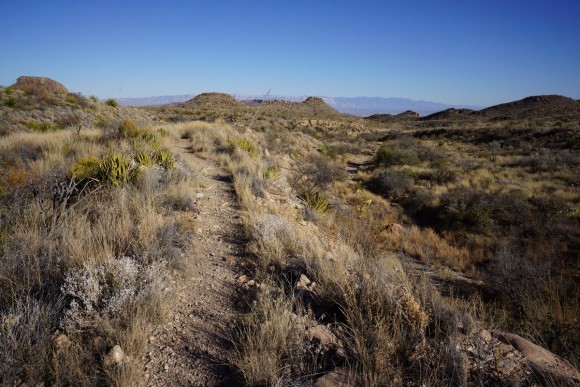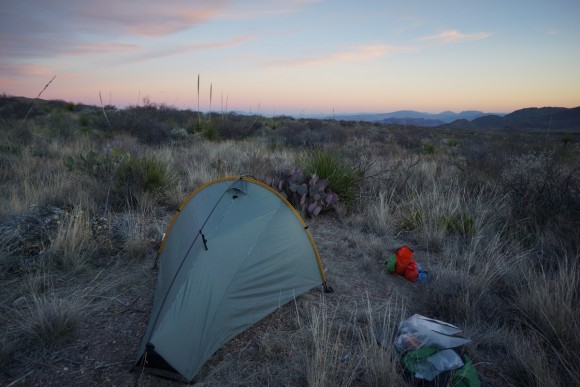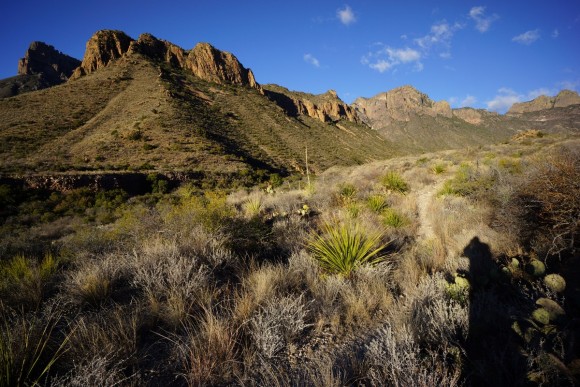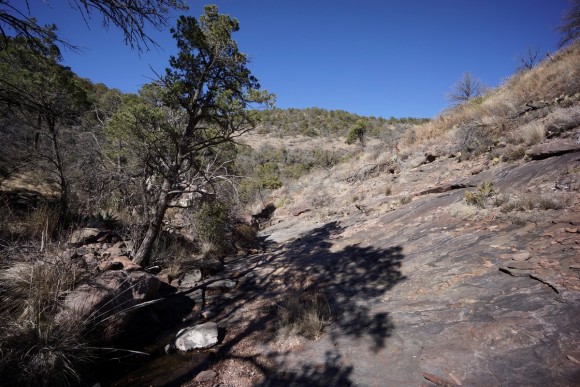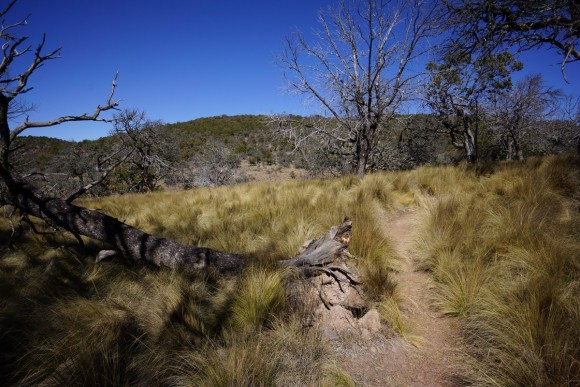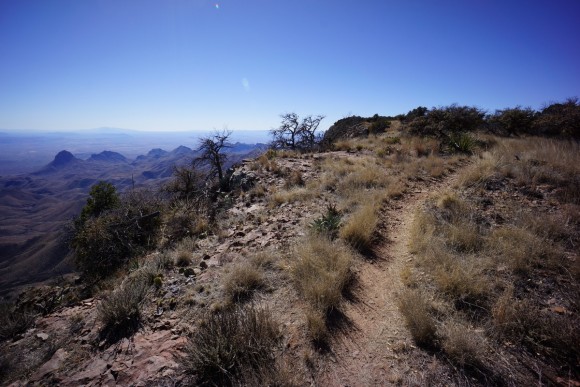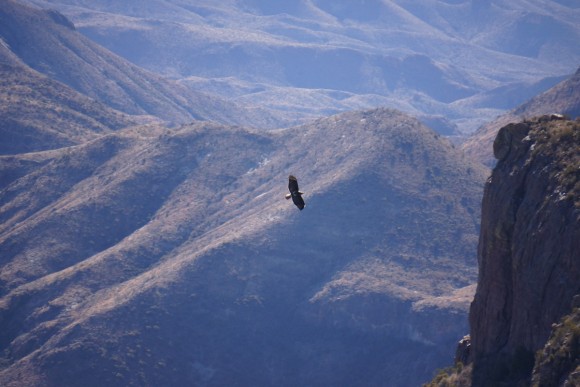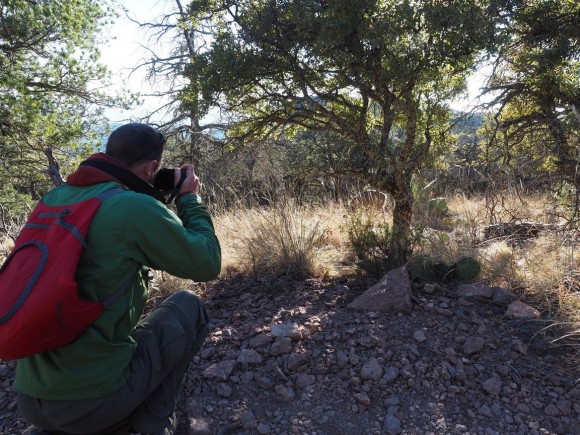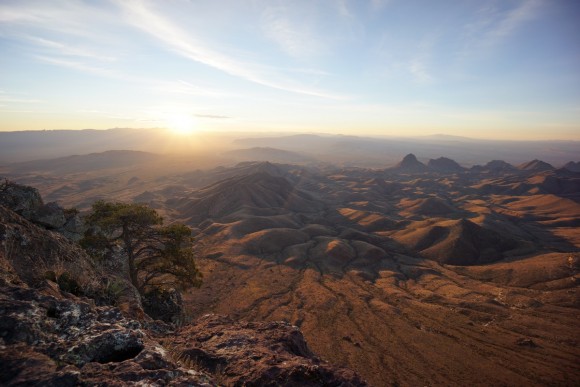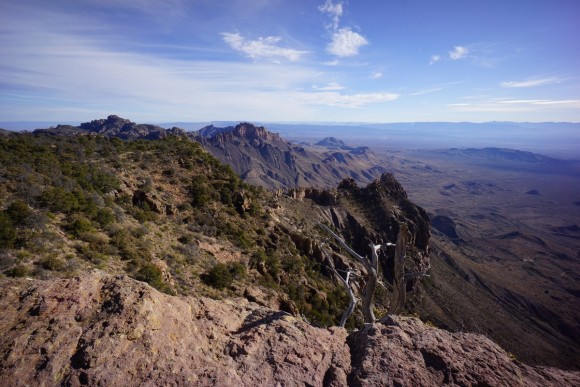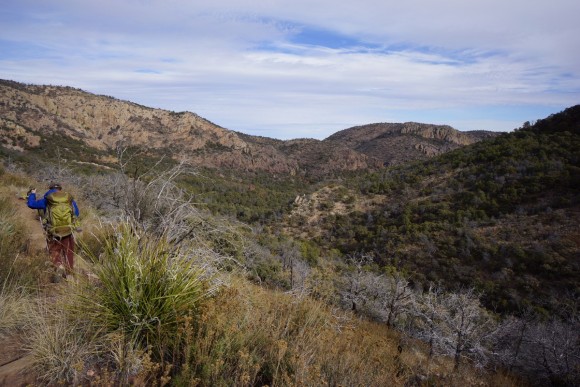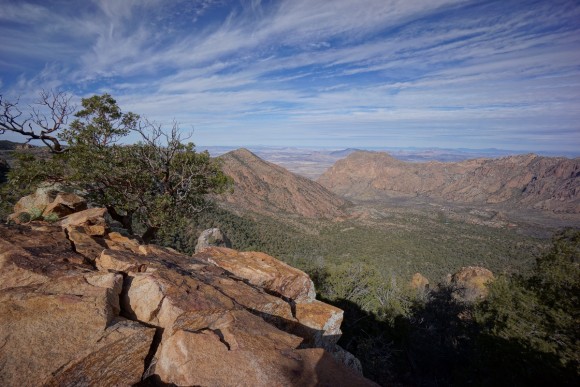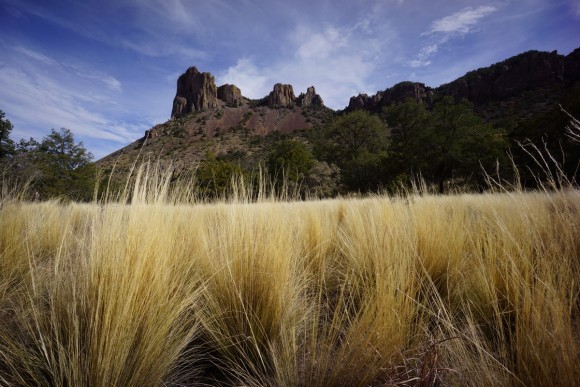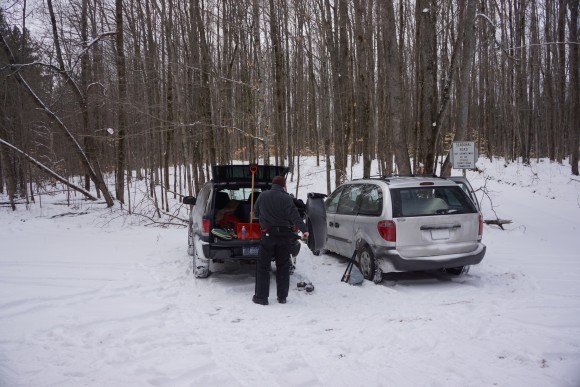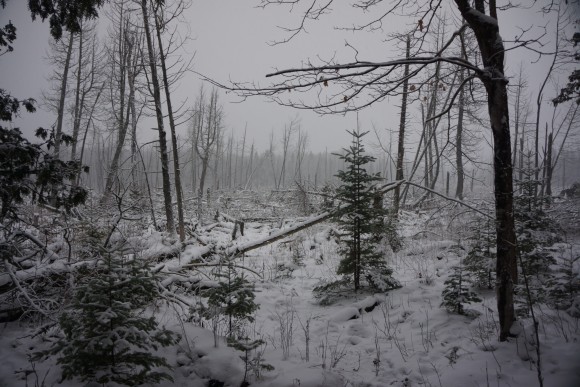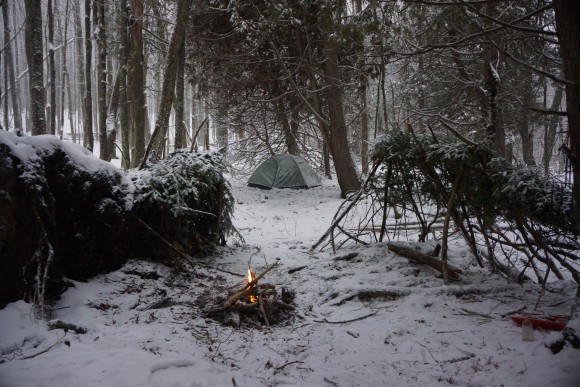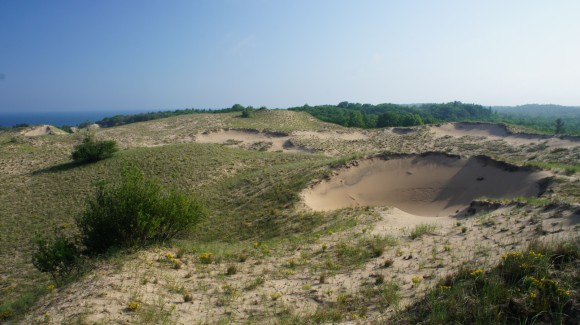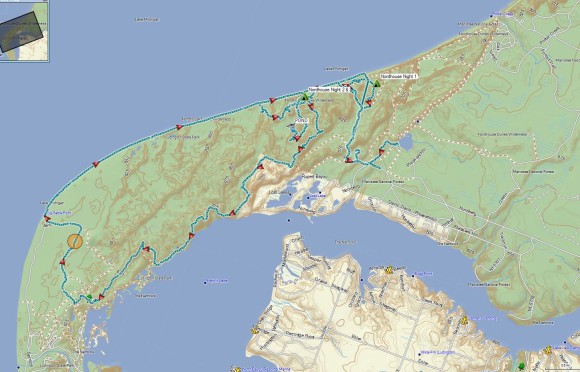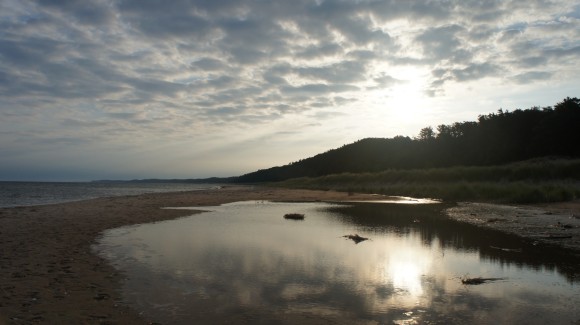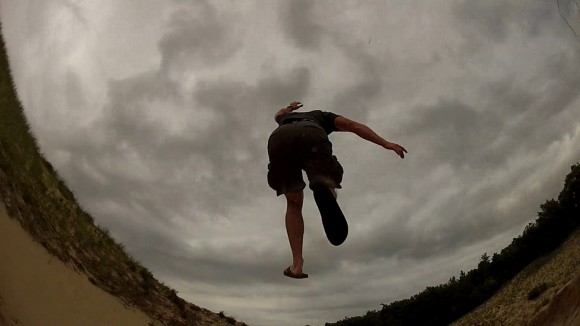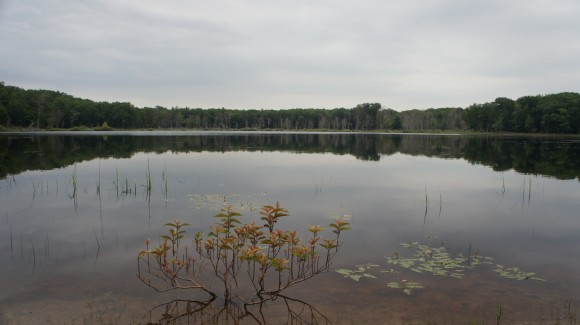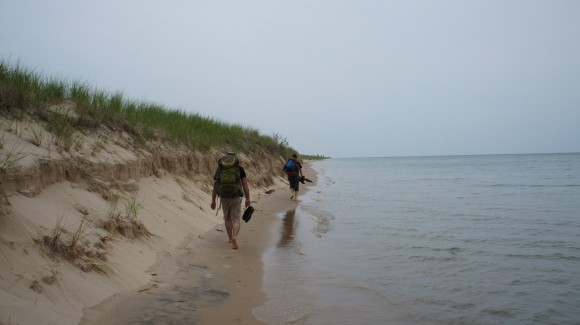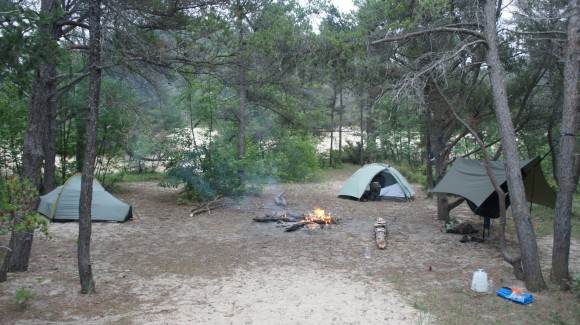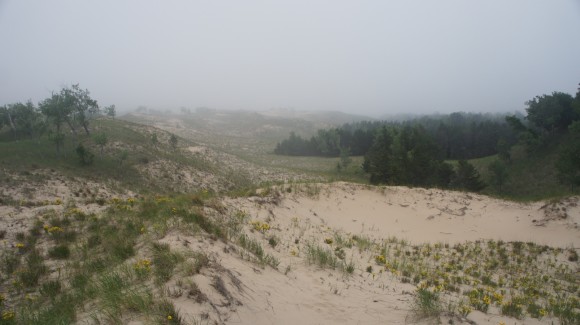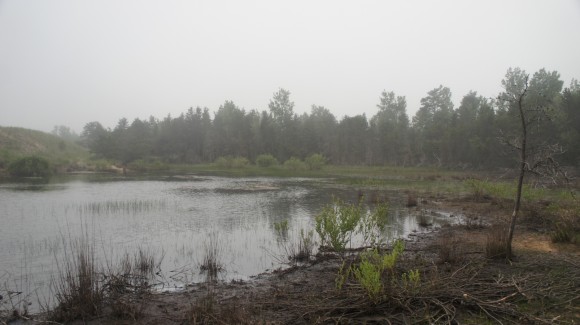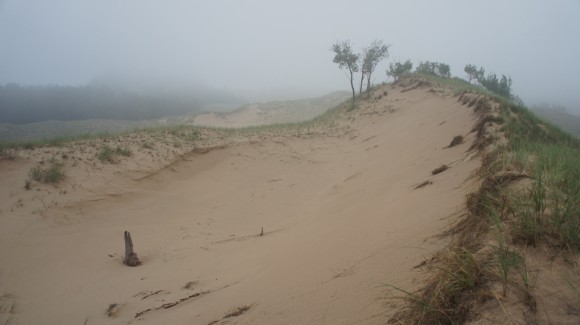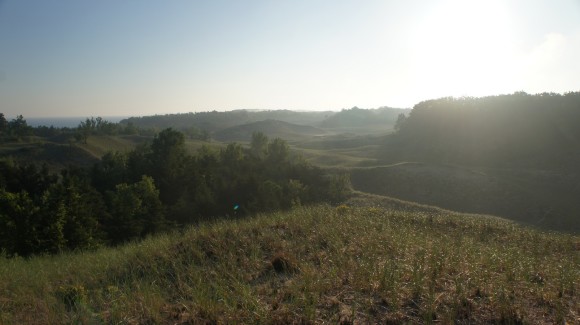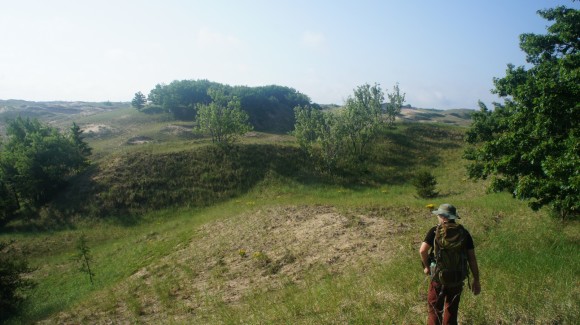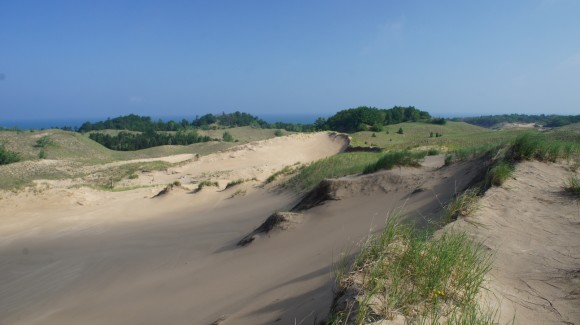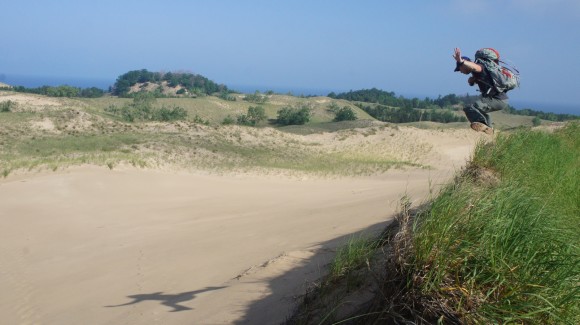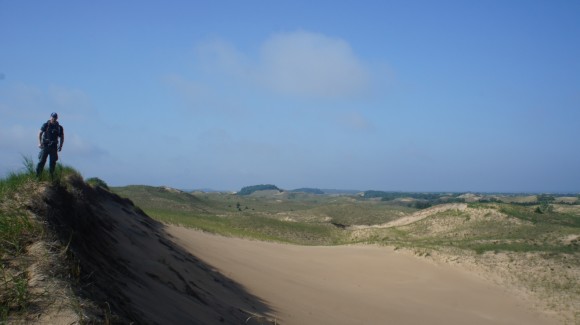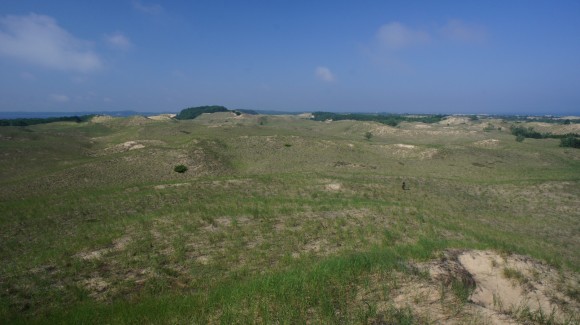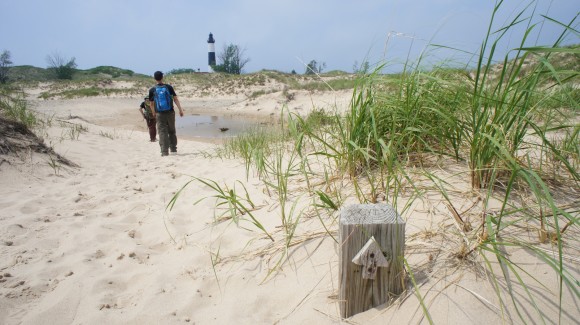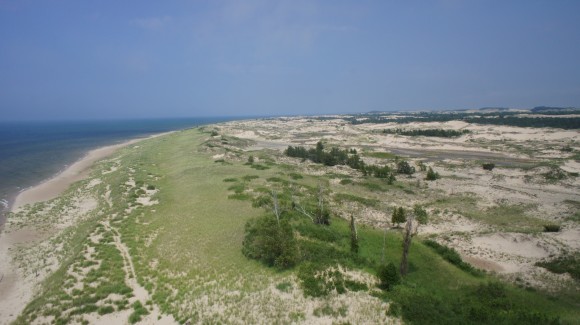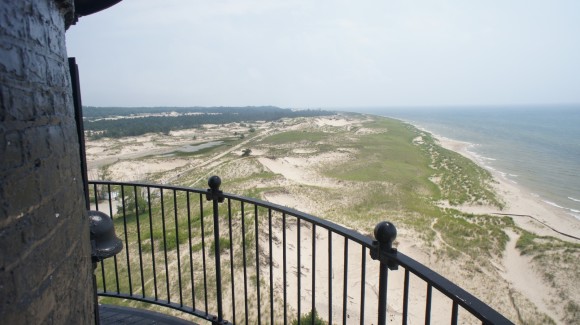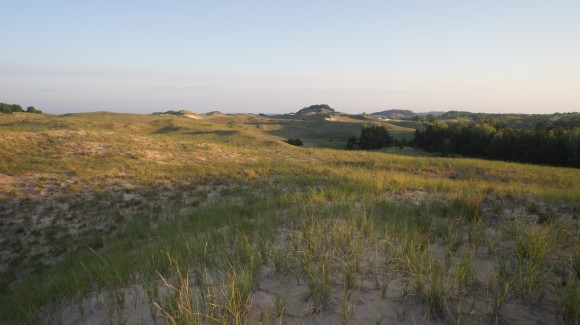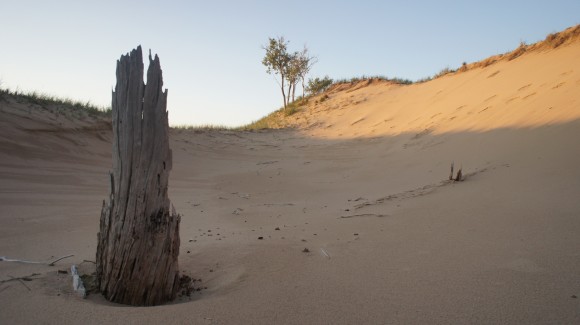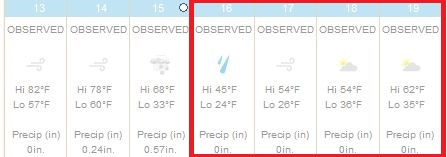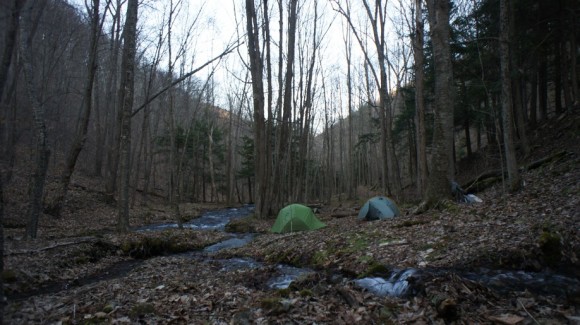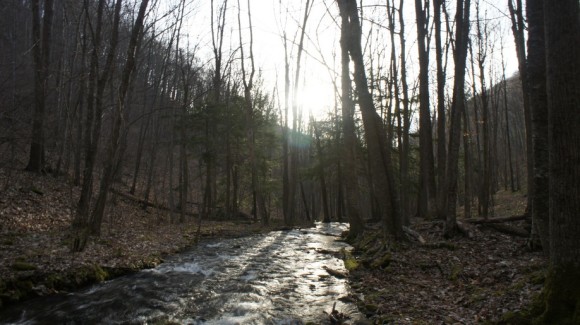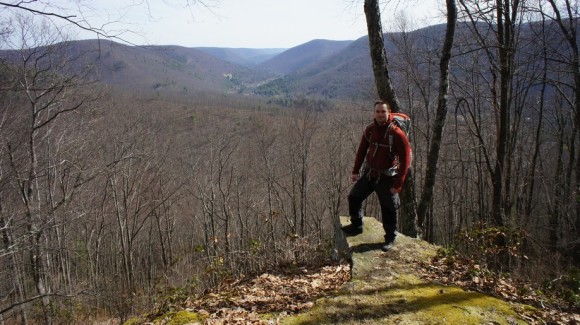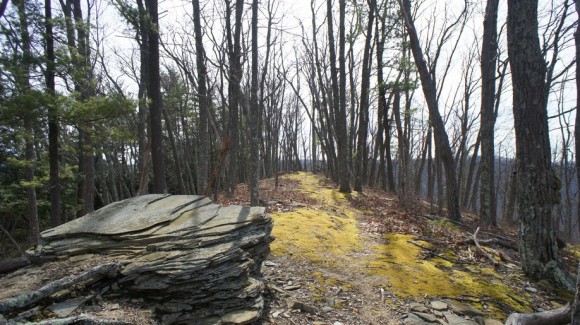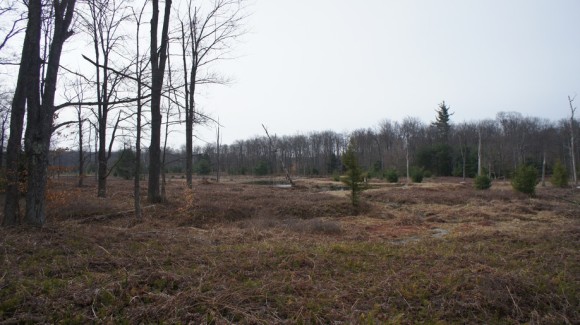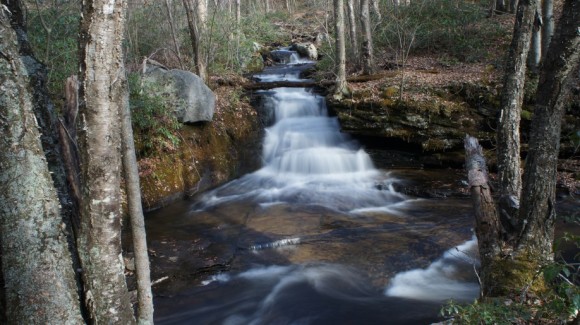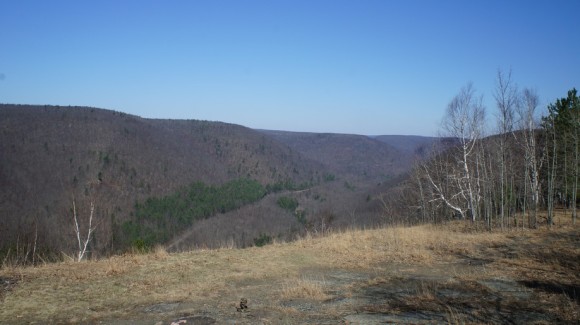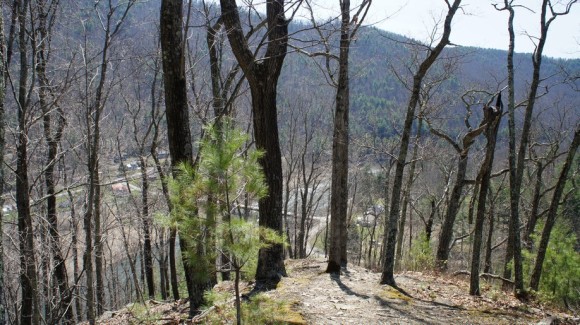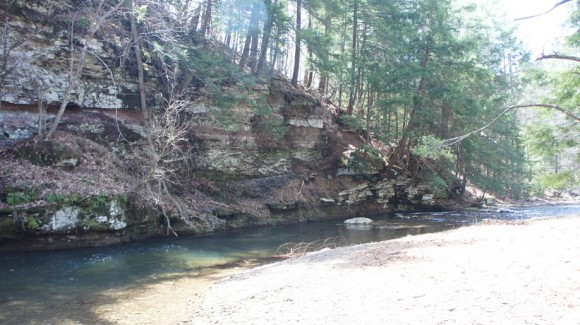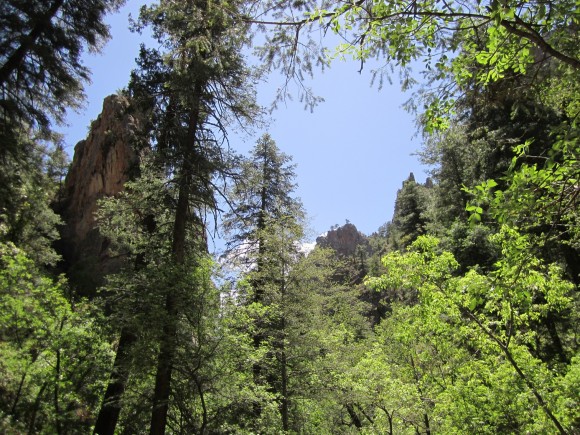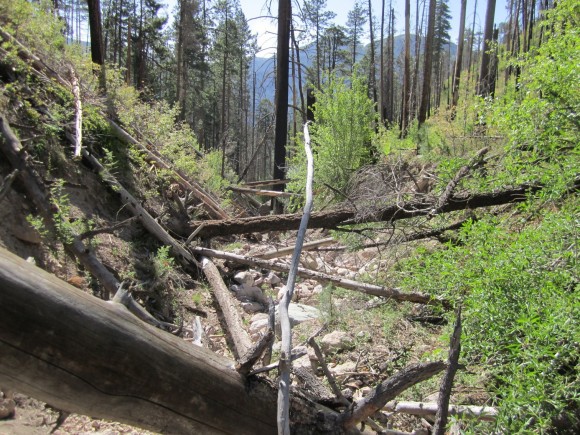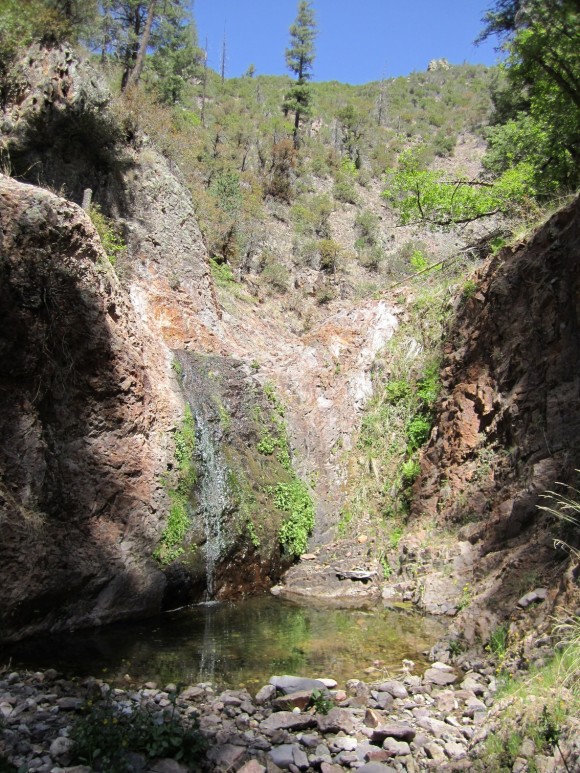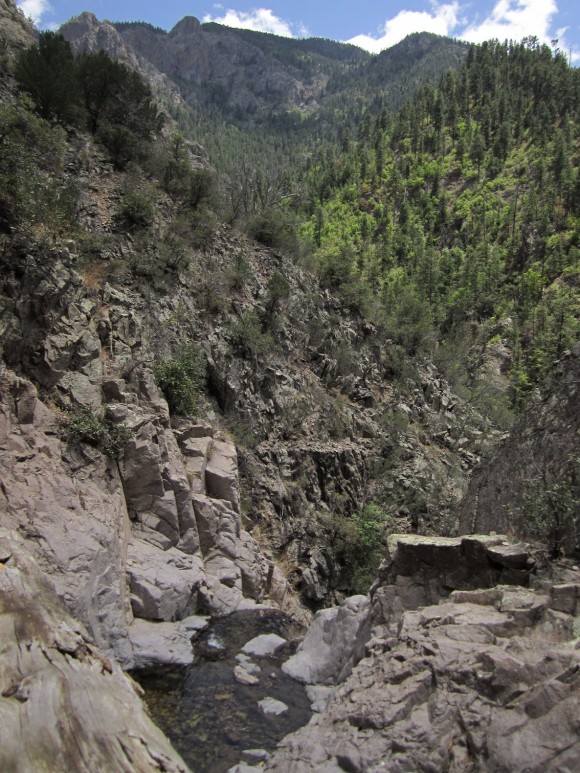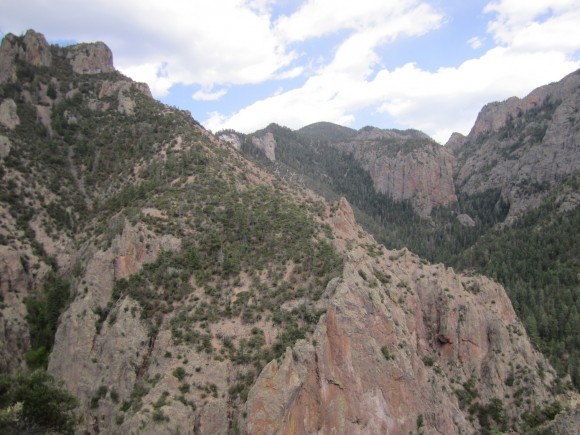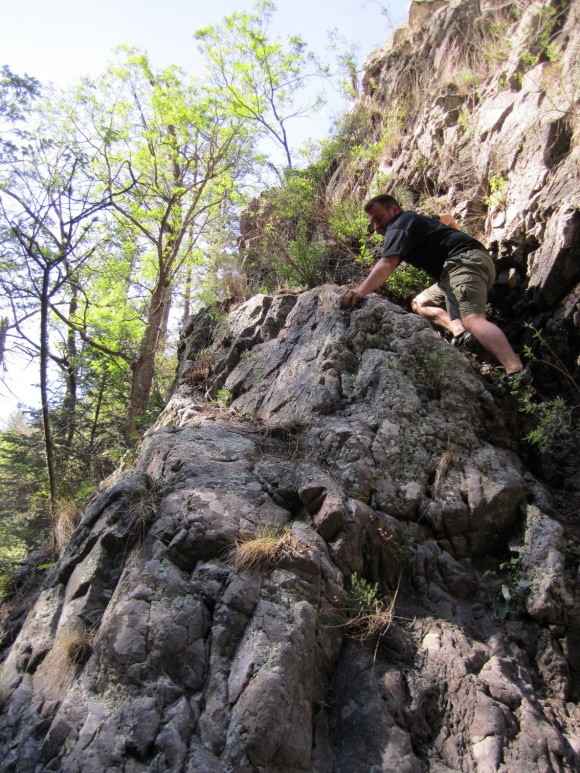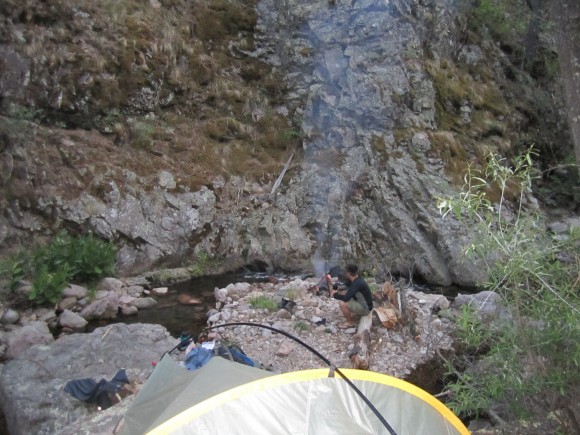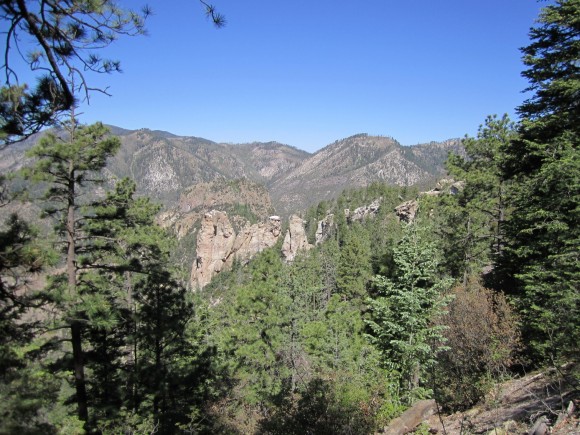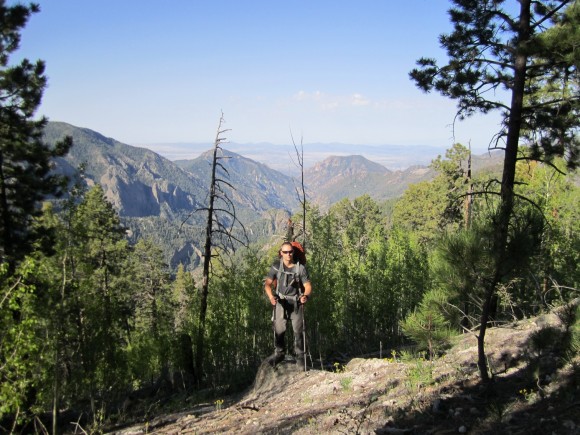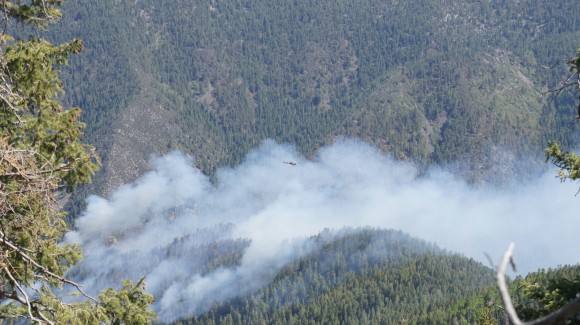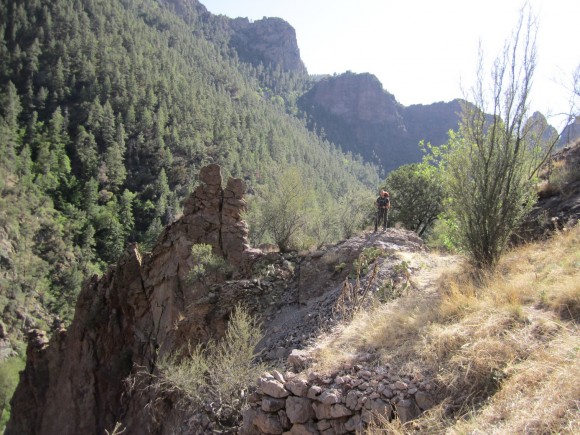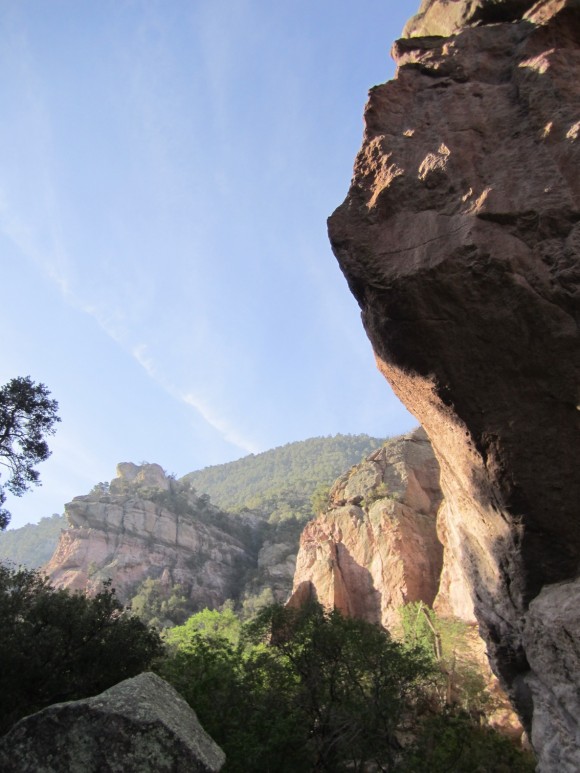Glacier National Park 95 Mile Hike (Sep 2019) – Wateron Lakes CDT Finish
6 day, 95 Mile Hike in Glacier National Park – Glacier Highline Trail (Modified Route)
In 2018 I thru hiked the Continental Divide Trail, and the last section (NOBO) goes through Glacier National Park on the Glacier Highline Trail. It’s one of the best sections of trail on the entire CDT, and a fitting way to end a 3000 mile hike. However, it was the end of September when I reached East Glacier, and heavy snow in the high mountains forced me to bail down to the road and walk the highway to the border of Canada, finishing at the Port of Piegan. Yuk! I still completed the CDT, but not at the monument at Waterton Lakes. This was a bit crushing to end my 5.5 month hike in such a way. So, this year I came back out to Glacier to hike the Highline Trail again, and get the finish I missed last year at Wateron. This is my second chance at a true CDT finish. This is my redemption!
Check out my CDT finish video for the backstory:
Unfortunately we couldn’t get permits for the exact Glacier Highline Trail route. Instead, we started at Cut Bank (already did most of everything south of here anyways last year on the CDT up to Old Man Lake), hiked north to Many Glacier, then had to detour from the Highline Trail by going through the Ptarmigan Tunnel. From here we follow Cosley Lake to Stoney Indian Pass and into Waterton. Finally, some closure to such a long and grand journey!
Sawtooth Wilderness, ID High Route – 8 Day Solo Hike Aug 2017
Sawtooth Wilderness High Route – 8 Day Solo Hike August 2017
View All Sawtooth Wilderness Photos | Watch the Sawtooth Wilderness Hike Video On Youtube
- Park Administration – National Forest Service
- Fees & Permits – No fees to access the Sawtooth Wilderness. You need a permit which is FREE. Permits are available via self-registration at the trailheads.
- Trailhead – Tin Cup Trailhead at Pettit Lake
- Length Of Time Hiked – 8 Days, 7 NIghts
- Miles Hiked – 67
- Route Difficulty – On marked trails, 6. Off trail sections, 9
- Fires Allowed – Yes, on a fire pan or fire blanket. Campfires are not allowed: Off-trail from July 1st through Labor Day. In the following drainages: Alice/Twin Lakes, Toxaway/Farley Lakes, Goat Creek (tributary of the South Fork of the Payette River), or Alpine Creek. Within 200 yards of Sawtooth Lake, Goat Lake and Alpine Lake near Iron Creek, Alpine and Saddleback Lakes in the Redfish drainage, and Scenic Lakes.
- Scenic Beauty – 9
- Solitude – 4 on Trail, 9 Off Trail
Sawtooth Wilderness Pre-Hike Planning Notes
Actually, the route I set out to hike was much longer, closer to 90 miles and over 25k feet of elevation gain. Averaging 8517′ over 89 miles, I called it “The Ultimate Sawtooths High Route”. Over 50 miles of the 89 mile route was off trail. A route like this would have a lot higher chance for successful completion if one had firsthand knowledge of what to expect in key sections. I didn’t have that luxury though, this will be my first visit to the Sawtooths, and first to the sate of Idaho. I will be sharing more info on the Ultimate Sawtooths High Route later on.
My goal with the route was to to stay as high as possible, while hitting as many of the places I could that were on my “must see” list. As far as planning a hike goes in the Sawtooths, you’ll find information from scattered sources online but there is no dedicated forum or “go-to” resource for the Sawtooths. I gathered what info I could about my route between trip reports and pictures, google earth, and studying the topo maps to create the route.
Sawtooth Wilderness Weather Forecasts
For weather in the Sawtooth Wilderness, I was using mountain-forecast.com for Mount Cramer:
https://www.mountain-forecast.com/peaks/Mount-Cramer/forecasts/2500
Sawtooth Wilderness Backpacking Maps & Route Information
Here’s my caltopo map I used to plan my route:
Download GPX file of this hike
Day 1 – Friday August 18th, 2017
Miles Hiked – 6.35
Elevation Gain – 2090′
Route Hiked – Pettit Lake to Alice Lake
The road to Pettit Lake from ID-75 was well graded and in great shape for a dirt road. I was driving a Chevy Cruze, and wouldn’t hesitate to take the smallest car. High clearance not need whatsoever. I arrived at the Tin Cup Trailhead (located at Pettit Lake) around 6pm, and man was it packed. I was able to find a spot, but there were’t many left if any at all. I changed clothes and did my final packing, and was on the trail at 6:30pm.
My destination tonight is Alice Lake, hopefully. I have 2.5 hours of daylight max to work with, better get moving. I quickly passed several groups of hikers, walked past the lake and hit the Wilderness Boundary sign. Here is where you self register for your permit.
The trail is mostly forested for the first few miles. Eventually, it emerges into a couple of open areas where boulders and talus have spilled down the slopes above. Hiking is still easy through these sections because this is such a well traveled trail, and in great shape. Once the first set of switchbacks are encountered, roughly half the way there to Alice, you start to get some nice elevated views. The Sun was already going down fast at this point.
The hike to Alice Lake was pretty nice for a day 1 hike. Normally, the trail taking you to the high country is in a low valley, long and rather uneventful. I would say the trail to Alice Lake is much more interesting, and if nothing else, shorter than many of the approach hikes I’m used to.
Right before I reached Alice Lake is a couple of small ponds, with great views and lots of people already camped there. Farther up the trail, at Alice Lake proper, I was again out of luck finding a campsite in a prime location such as the outlet. With the Sun fading quickly I hurried on farther along the lake. The trail starts to climb above the lake offering no viable campsites.
Towards the center of the lake, at a point where the trail had veered farther from the water, I found a place to hang my hammock. Not the most scenic spot, but who cares, it was already time to bust out the headlamp. Nothin’ to see here tonight. No need to use the tarp over my hammock, skies are looking clear and will remain so for the next couple of days according to the weather forecast.
I arrived at camp around 9pm, and after setting up headed to bed at 10. I’ve got a long week ahead of me!
Eagles Nest Wilderness (Gore Mountains), CO – 4 Day, 25 Mile Hike July 2017
Eagles Nest Wilderness, CO – Gore Mountains 4 Day Backpacking Trip July 2017
View All Eagles Nest Wilderness Photos | Watch the Eagles Nest Wilderness Hike Video On Youtube
- Park Administration – US Forest Service – White River National Forest
- Fees & Permits – No fees to access the Eagles Nest Wilderness. Register at trailhead (although I didn’t see where!)
- Trailhead – Gore Creek Trailhead
- Length Of Time Hiked – 4 days, 3 nights
- Miles Hiked – 25
- Route Difficulty – 7.5
- Fires Allowed – Yes
- Scenic Beauty – 9
- Solitude – 7, less within 4-5 miles of trailhead
Eagles Nest Wilderness Pre-Hike Planning Notes
Gore Mountains Weather Forecast
– https://www.mountain-forecast.com/peaks/Buffalo-Mountain/forecasts/3894
Gore Mountains Road & Trail Condition Reports
– https://www.fs.usda.gov/Internet/FSE_DOCUMENTS/fseprd542981.pdf
The Eagles Nest Wilderness is a 133,496 acre tract of land located within the White River National Forest. The Gore Mountains are the backbone of this wilderness area. It’s right off I-70, giving you the impression that it’s going to be a popular, well known hiking destination, but it’s not. Apparently, this area doesn’t get much use in comparison to other Colorado backpacking hotspots. One reason for this is the fact that there are no 14ers in the Gore Mountains. Don’t let the lack of notoriety fool you, as the Gore Mountains are definitely a hidden gem.
The first thing you need to realize about hiking the Gore Mountains is that it’s a rugged place with a lot of steep terrain. Because of this, many of the valleys are “dead ends” for the average hiker, and some are completely unpassable by all except the most skilled climbers. Stringing together a long hiking route that stays high is pretty difficult here. To make long loops, you either have to be OK with spending a lot of time in the lower valleys or be a really good climber.
Access to the Eagles Nest Wilderness is said to be easier on the west side near Vail. See this map for trailhead locations in the Eagles Nest Wilderness. I parked at the Gore Creek trailhead, 2.3 miles east of Exit #180 off I-70 on Bighorn Road. This road to this trailhead is completely paved, so you can access it in any vehicle. Watch out for all the bikers on the road, there’s a tons of ’em here. Coloradans are probably used to seeing this many cyclists, but here in southeast Michigan the only people riding bicycles on the road are doing so because they have a DUI! The Gore Creek trailhead was pretty packed but many of them were bikers, not hikers.
Nearby towns of Vail, Silverthorne and Frisco should have everything you need for last minute stops. Also note that you can get a shower after your hike for $5 at the Silverthorne Rec Center if needed. The address for the Silverthorne Rec Center is 430 Rainbow Dr, Silverthorne, CO 80498.
Eagles Nest Wilderness Backpacking Maps
[sgpx gpx=”/wp-content/uploads/gpx/EaglesNestWilderenssJuly2017.gpx”]Download GPX file of this hike
Here’s my caltopo map of the route I hiked:
Day 1 – Saturday July 8th, 2017
Miles Hiked – 6.54
Elevation Gain – 3058′
Route Hiked – Gore Creek Trailhead to Gore Lake
I started my hike at the Gore Creek trailhead (8688′ elevation) around 10:15 am, just in time for a few clouds to start brewing. The trail immediately begins to climb after leaving the trailhead. The trail itself is pretty well maintained here. There’s a sign marking the entry to the Eagles Nest Wilderness after about 1 mile. Once you pass the sign, the trail goes over the top of a small hill where you lose sight of I-70. The sound from the road is also gone, and replaced with that of Gore Creek. The trail winds through a few patches of aspens before the evergreens become the dominate tree with increased elevation.
The crowds of people started to thin out about two miles from the trailhead. Most of the people on the trail were older folks, and seemed to be locals coming out to get a few miles in for exercise. I stopped along a slow bend in Gore Creek after an hour to eat a little food. I didn’t see any fish, but it looked like there would be potential if one were to walk the bank looking for deeper holes.
There were few sweeping views of the valley, and the trail only occasionally swings alongside Gore Creek. The trail maintains a pretty manageable incline much of the way to the intersection with Gore Lake trail, with occasional steeper bursts. I passed a guy who said he’d just seen a large bear at the intersection, which I arrived at about 10 minutes later. No bear, fine with me.
At the intersection of Gore Creek trail & Gore Lake trail, the elevation is 10,180′. AT this point, the elevation gain is roughly 1800′ (with the ups and downs of the trail) over 4.15 miles. Now on the Gore Creek trail, I’ll climb 600’+ in about a half mile. There’s a little view of the valley below after gaining a little elevation. The trail then overlooks a creek, although don’t believe it’s the main creek flowing out of Gore Lake. I saw my first patch of snow around 10,700′.
At the top of the 600′ push I was rewarded with a nice meadow. It was flat, open and green, the first of the hike. It sprinkled a little now, but not heavy enough to be a bother. The views were definitely improving now. In the meadow, jagged peaks and snow capped mountain sides loom in the distance. There were some small patches of colorful flowers here and there, still a ways off from peak bloom though.
After passing through the meadow, the trail then climbs another 500′ in .6 mile along the final stretch to Gore Lake. I enjoyed the final approach to the lake, where your view of a nearby peak is hidden and then revealed as you crest the top of the final slope. A somewhat “dramatic” way to arrive at such a beautiful lake!
Pinto Valley Wilderness, NV (LMNRA) – 3 Day 25 Mile Loop Hike March 2017
Backpacking The Pinto Valley Wilderness, Nevada (Lake Mead National Recreation Area)
View All Pinto Valley Wilderness Photos | Watch the Pinto Valley Wilderness Hike Video On Youtube
- Park Administration – National Park Service (Lake Mead National Recreation Area)
- Fees & Permits – No fees or permits to access the Pinto Valley Wilderness, but there IS a fee to enter the Lake Mead National Recreation Area (in which the Pinto Valley Wilderness is located)
- Trailhead – Northshore Summit Trail parking lot off Northshore Rd.
- Length Of Time Hiked – 3 days, 2 nights
- Miles Hiked – 25
- Route Difficulty – 6.5, except where on descent into Pinto Valley near the “choke point” on my GPS file where it’s an 8.5
- Fires Allowed – Yes, but only if you bring your own, or use driftwood below the high water line of Lake Mead (which is not nearby)
- Scenic Beauty – 9
- Solitude – 8
Pinto Valley Wilderness Pre-Hike Planning Notes
The Pinto Valley Wilderness is relatively new, only being designated a wilderness in 2002. Therefore there are not a whole lot of references to this wilderness online. Many people just refer to the area as the Lake Mead National Recreation Area, which is technically also correct since the Pinto Valley Wilderness is located within the LMNRA.
The northern boundary of the Pinto Valley Wilderness is Northshore Rd, and this is pretty much the only place to park unless you have a 4×4. Here, there are several pull-offs along the road where you can park for a day hike. But what about overnight hikes? Well, you aren’t supposed to park in the pull-offs overnight, and even that was OK with the park service, would you want to leave your car there? Probably not. For me, the only real option was parking in the Northshore Summit Trail parking lot. It’s located approximately a half mile east of mile marker 20 on Northshore Rd. The southern boundary of the wilderness is Lake Mead, the western border is Callville Wash Rd and the eastern boundary is Boathouse Cove Rd. Also not that Boathouse Cove Rd separates the Pinto Valley Wilderness (39,173 acres) from the Jimbilnan Wilderness (18,879 acres) to the east. You can access the Pinto Valley Wilderness from the east, west and southern boundaries, but by far the easiest is Northshore Rd.
Water sources in the Pinto Valley Wilderness are limited. While there are likely other water sources located in the Pinto Valley Wilderness, the two most prominent sources (from my pre-hike research) are Sandstone Spring and Cottonwood Spring. I did not make it to Sandstone Spring to check if it was flowing. I passed by Cottonwood Spring, but did not search for the source. I did see that an animal had dug down into the wash near Cottonwood Spring and there was a pool of water about 6 inches down. Neither one of these springs are reliable enough to count on as a easy water source (you might have to dig for water). Pack in all water you will need for this hike and assume you will not find any!
It does not appear that backcountry camping is very popular in the Pinto Valley Wilderness. The lack of trail heads with overnight parking, marked trails and water sources seem to indicate that most people use the area for day hikes. However, the off-trail enthusiast will find that the Pinto Valley Wilderness provides some excellent 2-3 day hikes to those willing to haul their own water.
Pinto Valley Wilderness Backpacking Maps
[sgpx gpx=”/wp-content/uploads/gpx/PintoValleyMar17RouteHiked.gpx”]Download GPX file of this hike
Here’s my caltopo map I used to plan my route:
Day 1 – Saturday March 25th, 2017
Miles Hiked – 8.26
Elevation Gain – 1228′
Route Hiked – Northshore Summit Trail parking lot to Pinto Valley near Sentinel Peak
Dan and I spent the previous day in the nearby Valley of Fire State Park, and camped in the Arch Rock campground. From here, it was about a 30 minute drive to the Northshore Summit trail head. It was cloudy this morning and was sprinkling when we were packing up our gear, but that quickly faded away. The drive along Northshore Rd was very scenic, and worthy of spending some time here by itself. However, we did not have the extra time, and drove directly to the parking lot.
When we arrived at the Northshore Summit Trail parking lot, we were the only ones there. Good sign. Yesterday, Valley of Fire State Park was packed. There’s a bathroom and garbage cans here, but that’s it. We left the parking lot around 9:30am and started walking east on Northshore Rd. While road walks are never ideal, this was the best route I could come up with that fit together a starting point, the destinations I wanted to hit and the time frame. Despite walking this paved road for 2 miles, it was beautiful country. Big views to the north, looking across Bitter Spring Valley.
After 2 miles, we reached a pull-off where another vehicle was parked. Here, we leave the road and head south towards the Pinto Ridge. We hiked up over a small ridge to start the climb up. The terrain is pretty jagged here, with lots of sharp rocks. As we climbed up the ridge, I came across a turtle shell. The turtle itself was long gone, but the shell was an interesting find. A few hundred feet farther and I saw a second shell.
Farther up the ridge, the path narrows as we reached the top of the “pass”. The vegetation was a little greener, thicker, and thornier here. Lots of wildflowers in bloom, and some of the cacti as well. There’s not much of a view form the high point, but this changes as you descend into Pinto Valley.
The descent from the top is pretty gradual at first. We could tell there was a steeper section ahead, which I anticipated. Now the views of Pinto Valley were materializing, and they were impressive. However, the immediate problem was the terrain that lies between us and the valley below. The steepness would have been enough to worry about, but of course, loose rocks and debris compounded the difficulty. The angle was such that you could grip decently walking down slowly, but only just. Any steeper and this would have been questionable. I crab crawled in a few spots after watching Dan fall a couple of times.
It took a good amount of time to safely work our way down this steep slab, only to be led to a choke point… a couple of boulders wedged between the steep, narrow canyon walls. There’s no easy way to climb down it, but there’s a route around it. Backtrack about 50 feet from the boulders and go up a ridge on your left (to the east). Here, there’s a more manageable route down and the rest of the way is less frightening.
Now down off the worst of Pinto Ridge, jumped down into one of the two washes, which merge, and headed out into the valley. It’s a whole new landscape here. In the wash we could see chunk of earth pushed upright, with a variety of layers visible. This isn’t solid rock like granite, though. It’s made up of compacted, crumbly dirt and smaller rocks.
After emerging from the wash, we found ourselves in the expansive Pinto Valley. Sentinel Peak was in front of us, dominating the view with shades of orange and red. We decided to camp here, on the north side of the valley, so we could have a good view of Sentinel.
We found a couple of flati-ish spots and cleared the sharp rocks to make way for our tents. The view was great, but there’s no shade anywhere nearby. After setting up camp, we took a break for lunch. Afterwards, Dan rested while I took some pictures.
After our break, we headed over towards Sentinel in an attempt to climb to it’s summit at around 2:30pm. The path to Sentinel from our camp involved dropping down into and climbing out of several washes along the way, before finding the main wash that runs through Pinto Valley. We took this to the Base of Sentinel where the route I had planned begins. The path up to the top was not very obvious from here, so I was hoping the track I created in Caltopo, based off someone else’s route up Sentinel, was accurate.
We started climbing up Sentinel, and quickly found the most promising route to be blocked by a huge boulder. We moved farther east and started uphill here. Dan wanted to go right up the mountainside whichever place looked easiest from his point of view, while I wanted to try and stick to the GPS route I created ahead of time. We both pursued various route options but keep finding ourselves in tough spots. I ended up breaking one of my Gossamer Gear LT4 trekking poles, again. Looking back, I think I’ve broken more of these poles than I have completed hikes with them. I don’t think I can use those poles anymore, need something beefier.
The climb was a lot harder than we anticipated. While we probably could have made it to the top and back to camp if we continued, we decided that it was getting late in the afternoon and didn’t really want to be getting back right at dark or after if the route continued to be as challenging. We turned around and headed back to camp, somewhat defeated. At least there’s Hamblin Mountain tomorrow, which should have an easier route up.
While we walked back to camp in one of the washes, we saw what looked to be bobcat tracks and poop. We saw lots of similar tracks throughout our hike, but of course, never saw anything.
When we got back to camp we still had no shade. Dan set up his emergency blanket (he was using it as a footprint under his tent) as a lean-to, and we had a nice shaded spot to escape the sun for a while.
There was a TON of plane and helicopter traffic overhead in this region. Commercial planes I understand as we’re not that far from Las Vegas. The helicopter though, I don’t understand why there were so many. Throughout the day we saw a couple per hour. Right before nightfall, I saw 6 in row, flying the same flight path spaced about 1 minute apart. Maybe some sort of training exercise?
Looking to the east, the views of Sentinel and the mountains beyond were colorfully illuminated by the sun now. To the west, the distant landscape looked lush and green as the sun shined on it, although it in reality the vegetation is much more sparse up close. Dan said it looked like Jurassic Park. I watched the sun set and headed to bed shortly after.
Day 2 – Sunday March 26th, 2017
Miles Hiked – 9.88
Elevation Gain – 2173′
Route Hiked – Pinto Valley near Sentinel Peak to Pinto Valley Castle
It was a calm night with no animal sounds or high winds. The only sound I could hear was Dan snoring, as we set up our tents a little too close together. I got up around 6:30 to watch the sunrise, and tried to wake Dan. Of course, Dan continued to sleep and didn’t get up until 7:30 or later.
While Dan wrestled with the agony of leaving his tent, I sat on a small hill near camp and took some pictures. The sunrise was not very impressive from this spot though as it was so high in the sky by the time it peaked out over the top of Sentinel Peak. I was already packed and ready to go by the time the sun rose and Dan finally left his tent.
We broke camp around 8:30, following the nearest wash to the main wash running through Pinto Valley. Walking in the washes is the easiest route through Pinto Valley. This is not because the terrain outside of the washes is difficult, but because the washes are cut steeply and often deep into the surrounding earth. Hiking in and out of them gets old after a while.
Hiking the main wash was very easy. We made good time as we traveled west through Pinto Valley. We passed an outcrop of rocks and boulders that people have been signing their names on for years, dating back to the 1920s. Even though some of the writing is nearly 100 years old, it still looks brand new. Is is really that old then? Surely they would have been weathered somewhat in 100 years, right?
West of the rocks with writing along the main wash, we could start to see the colors of Pinto Valley Castle in the distance. Soon we left the main wash, and headed up another wash towards Pinto Valley Castle. This is a really interesting area, visually and geologically. Lots of upheaval going on, exposing many different layers of sediment. Small patches of “badlands” can be found all over here too.
Pinto Valley Castle was impressive. Erosion has shaped the walls of PVC in an unusual way, with sharp edges and symmetry. The top is made up of some lighter colored sediment, while the bottom is comprised of a contrasting red color.
After heading general north for a while through the Pinto Valley Castle area, we abruptly turned west after passing by PVC. After hiking through a small patch of badlands, we noticed an obvious path up one of the ridges, which led us to the top of a small pass. This is the general area I wanted to camp, since it looked so colorful from the satellite maps I studied before coming out here. It certainly lived up to the hype I had in my mind. Now, we just needed to find a place to set up camp.
Coming down from the little pass, we followed an obvious path down and along the side of the high ground. This path appeared to be an old mining road or something. We followed it a short ways before find a couple of small flat areas for our tents. Excellent views, and enough space to spread out more than we did last night.
After setting up camp and eating lunch, we headed out to climb Hamblin Mountain. From camp, it appeared that there was a high and low path to take. We opted to take the high ground since we were already up here. This path led us generally where we wanted to go, but then started curving south. We backtracked a little and realized we had to go over a ridge to get to where we wanted to go. We should have taken the low ground from camp as it would have gone around this ridge, but I didn’t realize that at the time.
We followed the ridge for a while looking for a weakness. After a short but steep climb over it, we still didn’t see an obvious route to follow. We headed down hill and along the top of a very deep cut wash below. On the other side we could see a trail, but we needed to cross this wash. We found a spot to descend, and even saw a cairn in the wash. We figured we were on the right path now.
The land was changing from red washes and badlands to green, rocky mountainous terrain. We followed our new trail up a ridge and along the mountainside. The path was very narrow and barely cut into the steep slopes. Eventually this path merged with a larger one, and it was much easier to follow from here on out. We hiked a short ways before seeing a path that led down into the wash below, which looked easier and more direct than the route we took up here. We noted this and decided to go this was on the descent.
Next we encountered are first humans of the trip, a couple from Henderson, NV who a had just left the summit of Hamblin Mountain. We chatted for a few minutes and parted ways, knowing they had only been hiking 25 minutes from the top. I was really looking forward to this view!
The hike up was not technically challenging or particularly steep, but there were a few false summits. Really great views as your near the top. Not far from the summit, we passed an older couple from Colorado making their way down. The woman seemed bewildered that we had “large” backpacks on, and asked if we were camping at the top. Ha, nope. Just carrying our water, snacks, camera gear, etc.
We had the summit of Hamblin Mountain to ourselves when we made it up here at 2:30. It had taken us 2 hours from camp. From the top I could see Lake Mead, Bowl of Fire, Sentinel Peak, Pinto Valley and all the other landmarks for many miles. Las Vegas lies hidden from view in a valley, but beyond that the snow-capped peaks of Mt. Charleston can been seen. Several USGS markers dot the summit as well as a summit log/register.
We stayed on the summit for about an hour taking pictures and soaking in the view. However, we were also soaking in quite a bit of sun, and with no shade, it was time to head back to camp.
Dan went ahead of me as I snapped a bunch of pictures on the way down. For some reason, I enjoyed the view better going down than up.
Before we knew it, we reached the path that leads down into the wash that we noted on the way up. We headed down here and found this route to be quite obvious, and in fact, the actual route. The first trail we found on our way up was actually an alternate route the just happened to meet up with this main trail. This was confirmed by passing the same cairn that we passed in the wash on our way up. We originally thought the cairn marked the way to the main path that we took, instead, it marks the main path which we crossed right over without realizing.
Our path in the wash was leading us directly back to camp now. We passed the junction of the old 4×4 road that passes by Cottonwood Spring and heads out to Northshore Rd. This would be the route the day hikers would have taken, parking at a pull-off along the highway. We walked past this junction and the path led us right back to camp in a very direct way, much more so than the way we took up the mountain. We made it back to camp in only 1 hour from the top of Hamblin, half the time it took to reach the top.
Back at camp, we sought out the only shade around and exploited it for a while. Having not eaten anything since noon, which was just some snacks, I devoured my bacon & cheese wrap for dinner. Dan was running lower on water than I, so I gave him a half liter. That’s about all I had left myself when I went to bed.
Dan was whooped and went to bed at 6pm. With another hour and a half of daylight left, I couldn’t do that. I found a decent spot to sit and wait for sundown. Several bats were out at dusk, and flying closely overhead too.
Day 3 – Monday March 27th, 2017
Miles Hiked – 4.99
Elevation Gain – 531′
Route Hiked – Pinto Valley Castle to Northshore Summit Trail parking lot
I woke up at 5:45 this morning. From my tent I yelled, “Hey Dan, time to get up”. To my surprise, he actually did get up without any additional prodding. That’s good, because I have a plane to catch at 12:45pm this afternoon, and we need to hike back to the car, drive back to Vegas, get some food and clean up. Originally I planned to hike an off-trail route back to the car, but worried about time, we opted to take the route the Hamblin Mountain day hikers use to get to Northshore Rd, then road walk a few miles back to the car. This would be the safest route from a time perspective.
We packed up quickly this morning and were moving by 6:30. We took the low ground this time for a direct route to the junction with the old 4×4 road, now called the Cottonwood Wash Trail.
Hiking the Cottonwood Wash trail was easy. Some spots were more narrow than others, and made you wonder how a vehicle passed through. Much of it is wider though. This road would have been in use up until 2002 or prior, when the area was designated as the Pinto Valley Wilderness.
A lone Cottonwood tree stands in the middle of the wash at Cottonwood Spring, hence the name. I did not see an obvious source, but I didn’t look around much either. There were lots of thick, green shrubs and bushes in some areas, an indicator of water, but I had no desire to wade through them looking for water. We did see a small hole dug in the middle of the wash with water about 6 inches down, but no natural emergence of water to the surface.
After leaving Cottonwood Spring, we headed down the home stretch. This was offered the same interesting geological features as others, a variety of rock and sediment layers exposed by upheaval.
When we reached Northshore Rd, we headed east. We still had about 3 miles to cover before getting back to the parking lot. I didn’t even mind walking the road so much since the views were so great. It was a steady incline the rest of the hike back.
We reached the Northshore Summit trailhead at 8:30, plenty of time to take care of my pre-flight needs. Another successful adventure under the belt.
Final Thoughts About Hiking The Pinto Valley Wilderness
This place exceeded my expectations. It’s uniquely colorful, and an all around cool place. Access is tough and some of the off trail segments can be challenging. Lots of aerial traffic remind you of how close this place is to civilization, yet we still felt solitude. Especially at night. The nights were calm and silent, with no animal sounds. We saw few animals the entire trip, just a couple of chipmunks and birds. The vegetation wasn’t too thick or thorny overall, only a few short spots where we encountered that. We saw no snakes or spiders, just a couple of butterflies and a beetle. I was expecting wildlife to be a little more active this time of year.
Camp on our second night was my favorite. You can’t go wrong pitching your tent anywhere near Pinto Valley Castle in my opinion. Hamblin Mountain is an easy hike with a great view, and would make a great day hike (as the two couples we passed had done).
Coxcomb Mountains 3 Day Hike – Joshua Tree NP, CA – Dec 2016
Joshua Tree National Park – Coxcomb Mountains 3 Day Hike
View All Coxcomb Mountains Photos | Watch the Coxcomb Mountains Hike Video On Youtube
- Park Administration – Joshua Tree National Park
- Fees & Permits – Free permit, self register at one of 12 backcountry registration boards (none near the Coxcomb Mountains) or at one of the Joshua Tree national park visitor centers
- Travel Logistics – Flew into Ontario, CA airport, drove (with a local friend) to Joshua Tree NP
- Trailhead – There is no dedicated trailhead to access the Coxcombs. However, you can park along Hwy 62 (TwentyNine Palms Rd) at 34.095135, -115.420799. This is 11.9 miles west of the Hwy 62/Hwy 177 junction. This starting point is recognized by the park though as the main point of access to the Coxcombs. BEWARE of deep sand here at the parking area! We found another place to park (north side of hwy 62) a half mile or so east of the designated spot if you don’t have a 4×4.
- Length Of Time Hiked – 3 days, 2 nights
- Miles Hiked – 25
- Route Difficulty – 7.5
- Fires Allowed – No
- Scenic Beauty – 7
- Solitude – 9.5
Coxcomb Mountains Pre-Hike Planning Notes
The Coxcomb Mountains are situated in the northeast corner of Joshua Tree National Park. This region is seldom visited, and considered the most rugged area of Joshua Tree with many jagged peaks. The highest peak in the Coxcombs is Aqua Peak. Although most maps label the high point as Aqua Peak, Aqua actually refers to 3 separate peaks… Spectre, Tensor and Dyadic. Tensor Peak is the lowest, and Aqua is the tallest at 4,416′.
There are no dedicated campsites in the Coxcomb Mountains.
There are no reliable water sources in the Coxcombs. We hauled our own water in for this 3 day hike.
The Inner Basin and Aqua Peaks are day-use only, but I could not find any official information on this within the Joshua Tree National park website. There’s no signs telling you where you can/can’t camp, and there’s nobody around to enforce it, but still you should try and honor these regulations as the are set in place to protect the local population of Big Horn Sheep. When I arrived at the park to get my permit, I asked the ranger to show me on the map the boundaries of the day use area. His map was a Trails Illustration/Nat Geo map of Joshua Tree National Park, and it the boundary was clearly marked on it. Later at home, I created this image to show the boundary of the day use area in the Inner Basin of the Coxcomb Mountains:
Coxcomb Mountains Hike Maps
Download GPX file of this hike
[sgpx gpx=”/wp-content/uploads/gpx/CoxcombMtnsPostHike.gpx”]
This is the caltopo map of the route I hiked. I’ve highlighted the Inner Basin day use are for your convenience.
Day 1 – Friday December 2nd, 2016
Miles Hiked – 7
Elevation Gain – 1704′
When it came time to park at the trailhead, we tried to drive on some sand that was way too soft for my friend’s Mustang, and the car got stuck. Very stuck. We had to call a tow truck to pull it out, which was a 4 hour ordeal. The only reason we we able to call that tow truck is due to a passing motorist, who stopped and drove Dan to an intersection several miles away that had cell service.
We didn’t start hiking today until around 2pm. I was hoping to make it past the Inner Basin today, but was also considering camping before the Inner Basin if it didn’t look like we could make it before sundown.
We parked about .85 miles east of the “designated” spot. From here, it would be slightly out of the way to walk back towards the standard route. which runs west of the outcrop of small mountains (marked 806T on my caltopo map). Instead, we started hiking south and aimed east of the 806T benchmark. This wash appeared to be easy and take us to the same place, so we felt confident about of choice and headed out into the desert.
The desert floor consisted of soft sand in the washes, and slightly firmer sand elsewhere. Not the hard-packed desert soil I’ve hiked in much of the time in the past, in the Sonoran and Chihuahuan deserts. Vegetation consisted of low brush, much of it very thorny. No Joshua Trees here on this side of the park. We saw an occasional Prickly Pear and even a Sotol plant. Along the washes were some larger trees, at least compared to the rest of the scrub.
Not 10 minutes into the hike, and we saw a tarantula walking around, making it’s way back into it’s hole. This was the first time either Dan or myself had seen one in the wild. It was only about 55 degrees today, and being December I thought most of the snakes and spiders would be laying low somewhere. Cool to see!
I’m not sure it would have been any easier had we taken the standard route, but walking along the wash east of the outcrop was really easy. We made great time through here. Looking back towards the car, we couldn’t see hwy 62 running through the desert. Pretty quickly you feel isolated here. The mountains around us were really rugged looking, especially compared to the rounded boulders of the iconic Joshua Tree landscape.
When we reached the point along our route where it intersects with the standard route, right before it heads uphill to Inner Basin Pass, we had a decision to make: camp here, or push on and hope we make it out of the Inner Basin before dark. We’d made great time so far, so we decided to chance it and keep moving. The terrain here remains easy, hiking up a sandy wash as the canyon narrows. I saw a jackrabbit darting through the wash, just about the only wildlife wee’d see this whole trip.
Eventually, our route in the sandy wash becomes a boulder climb. Not terribly difficult or long, but a bit of a scramble in spots. Once at the top, it’s actually a bit of a flat plateau. Our first views of the Inner Basin were impressive, but the view is best right before the trail drops down in elevation.
After dropping down into Inner Basin, it was back to an easy walk in a sandy wash. There’s a lot of thorny bushes around to snag clothing, but nothing too thick. The sun was really disappearing now, and the entire basin was shaded at this point.
When we reached the end of the Inner Basin, there were cairns leading southwest. I was expecting the route to continue southeast and up hill. I could have taken the route I had marked on the map, but I just followed the cairns. The route winded through some narrow canyons and involved a little more boulders. Eventually, we popped out into the large flat area nestled in the heart of the mountains seen from my map. I originally thought this was the Inner Basin, based on the look of it on the map and the piss-poor descriptions available on the web. To be clear, I am talking about the open area on the map at these coordinates: 34.0195, -115.3733. Since this area is not part of the day use area, we started to look for a campsite. It was really windy, so we walked to several outcrops of rocks to see if they provided ample wind break. Wind always seemed to be hitting us no matter where we stood, so we just picked a spot. I had to use my headlamp to finish setting up my tent. The sandy soil was so soft, I had to weigh down my stakes with rocks to keep the tent from blowing over.
After setting up camp, Dan and I ate dinner. It was 5:30 now and the stars were shining bright already. In fact, we could clearly see the milky way despite competing with the moon’s light. It was also getting pretty cold. Tonight was supposed to get down to near freezing. After shivering in the wind for a while, Dan and I decided to turn in around 6:30. Nights in the desert are long in the winter!
Day 2 – Saturday December 3rd, 2016
Miles Hiked – 10
Elevation Gain – 1671′
I woke up at 5:50 this morning, hoping to get in position for the sunrise. I walked over to Dan’s tent and woke him, but he didn’t get out of his tent by the time I was ready. In fact. he was snoring again. So, I let him sleep while I climbed up rocks behind our camp.
From my spot on top of the rocks, I had a pretty good view of the large flat basin in which we’re camped. I could tell the sun wasn’t going to be directly in view, but I had had a good spot to capture the glow of light in the distance.
I spent a good while up here taking pictures of the sunrise and enjoying the excellent scenery. This was one of the better views of the whole trip.
When I returned to camp, Dan was still snoring. Again, I let him be and continued with my search for some good early morning photo ops. Next, I headed southwest from camp to the edge of this flat open area. Here, the map shows a large drop off down to Pinto Basin below.
Once at my destination, I realized most of it lies within the shade currently. maybe this would be better to return to this evening. I took a few pictures here before moving around some, trying to get to a higher vantage point. I bounced around from spot to spot along the tops of the nearby hills, but eventually I gave up on the area and decided to head back to camp.
Dan still wasn’t up when I returned after 8am now, so I tried waking him again. This time, it worked. After Dan ate breakfast and got ready, we headed out to do some exploring. Today, our plan is to go wherever we feel like going!
First, Dan wanted to check out a small cave we saw last night as we exited the Inner Basin area and entered the flat open area we camped in. The cave was a rounded cavity in a rock face, sitting about 8-10ft above the ground. With some effort, it’s possible to climb into it from below.
After this, we headed south across the open flat area. We hiked up over some boulders and dropped down into a wash below. We followed this was downhill for a ways. I had this marked on my map as a potential spot of interest, as the canyon looks like it narrows further down and is flanked by some cliffs ranging from 400′-1200′ plus. Might be worth checking out.
The hike down this wash was pretty easy at first. There were some occasional boulders that needed to be climbed in order to continue along our path. We had no intentions of following this canyon out into the desert, just to follow it for a ways. We didn’t see much of interest here, so we decided to turn back at our first real obstacle. There was a short drop off along the wash that might have been hard to get back up if we had continued down past it, so we figured this was a good turn around point.
We hiked back uphill and eventually made it back to the spot where we had originally entered the wash. From here, I suggested hiking higher up the same wash. On the satellite maps I saw at home, I saw a sizable patch of green here, which might indicate a spring or seep. Since thee was nothing marked on the map and no info on natural water sources in the Coxcombs online, we decided it might be an interesting destination.

Dan enjoying himself
At first, our hike was again easy, winding through a sandy wash. Soon enough though, it turned into a boulder climb. This was a fairly long and sometimes challenging scramble, too. There were large boulders here, stacked on top of each other creating huge spaces in between them in which to fall. Sometimes, traversing the boulders meant walking along steep faces of the boulder with little or nothing to grip. A slip could result in a slide down the boulder and then a fall of up to 25ft onto various size and shapes of boulders below. Not exactly a high exposure type danger, but a real risk of injury if one step is out of place.
After a tough scramble to the top, there wasn’t much to see. The vegetation was thicker up here, and this meant mostly more thorn bushes. We had already been cut up pretty good during the rest of today’s hike, but the worst of it seemed to be up here. We pushed through the thorn bushes and headed for the spot of green I saw on the satellite map. Once at the spot, we did see a high concentration of some coniferous trees, the exact species, I’m not sure. They were so thick that I couldn’t penetrate them to check for existence of water, either.
We took a break here in the sun and relaxed for a while. We debated taking another route down, but that would require traversing some steep territory. Who knows what that will look like when we get there. It was early afternoon now and we end to start thinking about heading back to camp. We ultimately decided to take the same route back as we know it’s traversable already.
The jagged peaks that surrounded us looked more impressive going down than it did when we went up. It was hard work, but offered up some of the best views of the day. We also saw a big horn sheep skull that we didn’t see on our way up. It had both horns intact.
Coming down was a little easier. Before long we were in the sandy wash again and headed back to the place where we entered this wash. We could go over the little ridge we did this morning, or take another route, running northeast from benchmark 927T. We opted for the second choice. This took us back to camp, where we relaxed and rehydrated.
It wasn’t long before the sun was on it’s way down again, and fast. We decided to head back to the spot I visited this morning, on the southeast corner of the large open area. It was aonly a 10 minute walk to get there, but when we did the sun was just going down over the Pinto Mountains. It wasn’t the best vantage point base don the angle of the sun, but I snapped a few photos I was happy with. We ate dinner here as we watched the glow of the sun disappear.
Back at camp, we pretty much mirrored last night: sit on the rocks, watch the stars and chat. By 7pm we were both in bed again, seeking the relative comfort of the tent and the warm it provides.
Day 3 – Sunday December 4th, 2016
Miles Hiked – 7
Elevation Gain – 375′
I woke at 6am this morning, and Dan even woke on the first try. My original plan for today was to bag Tensor and Spectre peaks today on the way back to the car. However, Dan was not really wanting to do that after the climbing we did yesterday. He’d rather get back to the car early and spend the rest of the day driving through Joshua Tree or other areas nearby. While I was really looking forward to the great views from Aqua Peak (the name for Spectre, Tensor and Didiac Peaks), you really can’t go wrong with his plan either. So, I went along with the idea and started packing up my gear.
We started hiking at 7am. It was a little warmer last night, and so this morning was easier to get moving. He hiked back towards the elevated cave, then down into the narrow wash leading into the Inner Basin.
We were able to follow our tracks back through most of the wash, not that that was necessary. The route is very straight forward, just follow the wash through the canyon. There is one large side canyon running northeast, but it’s obviously not the main path. This is the alternate route that’s marked on my caltopo map. I know nothing about this alternate route though, and skipped it because it looked like it would involve more climbing and steeper terrain that we won’t have to deal with if we continue the way we came.
We made it to the top of Inner Basin pass in good time, and had some nice views of the basin. We continued on down hill through a couple of patches of boulders, but the rest is pretty much sandy wash from here on out.
Back down in the main wash, we followed it out of the canyon and took the same path we took in two days earlier. We followed our own footsteps on and off as we hiked through the small canyon. I saw another jackrabbit through here, and wondered if it was the same one I saw Friday. It was practically the same area.
The landscape looked unfamiliar as we returned, as we now had a huge open desert in front of us. On Friday, all that was at our back and we only saw it as we turned back. It was nice to have this contrast as we left the mountains and now entered the desert.
The final stretch of desert had us talking about our dreams of a hot lunch. It took a while to actually spot hwy 62. The car was parked behind some boulders along side the road where others had clearly camped, and we headed for a graffitied rock that marked the spot. We were relieved to see that the car had not been broken into. The time was just before 10am, so almost a 3 hour hike from our camp.
From here, we headed back into 29 Palms and ate ate the Andreas restaurant. Good burgers, they really hit the spot! After this, we headed into Joshua Tree National Park on Utah Drive road to explore the park by car.
Final Thoughts About Hiking In The Coxcomb Mountains
The Coxcomb Mountains are a great place for a weekend hike, provided you’re OK with hauling in all the water you’ll need. Without a reliable water source though, longer trips aren’t really possible here. It doesn’t look like this place gets much use. The access probably keeps many people away, as well as the day use restriction in what might otherwise be the best camping spot.
As always, questions and comments are welcome!
If you found my trip report useful, please don’t hesitate to leave a comment! Alternatively, if you feel you have any information you’d like to share with others regarding this hike, please feel free to leave that below in a comment as well.
10 Day Sierra Loop Hike – Kings Canyon NP & John Muir Wilderness – Aug 2016
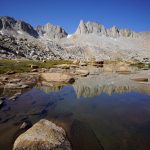
Kings Canyon National Park & John Muir Wilderness 10 Day Loop Hike Starting From Florence Lake
All Photos From This hike | Watch the HD video of my Sierra hike on Youtube
- Location – Sierra-Nevada Mountains, CA
- Park Administration – John Muir Wilderness, Kings Canyon National Park & Inyo National Forest
- Fees & Permits – $5 for a wilderness permit, required for overnight camping
- Travel Logistics – Flew into Fresno, rented a Chevy Sonic for the drive to Florence Lake
- Trailhead – Florence Lake
- Length Of Time Hiked – 10 days, 9 nights
- Miles Hiked – 95
- Trail Type – Loop, 50/50 mix of on and off trail hiking
- Route Difficulty – 8
- Fires Allowed – Only below 10,000ft
- Bear Canister Required? – No, not along my route. See map of where bear canisters are required in the Sierras
- Scenic Beauty – 9
- Solitude – 6
Kings Canyon/John Muir Wilderness Loop Hike Maps & GPS Files
[sgpx gpx=”/wp-content/uploads/gpx/SierrasRouteHiked2016.gpx”]
Pre-Hike Travel Logistics
To access the Sierras, one typically enters on the east of west side. People have mentioned using the town of Bishop as access from the east, but I chose to fly into Fresno, rent a car, and drive in from the west.
There are few direct flights to Fresno, so from Detroit I had to stop in Dallas. The problem was, bad weather in the Dallas area when it was time to leave, lots of red on the radar. We sat on the tarmac in Detroit for an hour before taking off, then we got diverted to a small airport in rural Arkansas to wait on the tarmac there for another 2 hours. Apparently, the entire DFW airport had closed down for a while due to the storm. By the time I landed in Dallas, pretty much all the flights had been cancelled. Great, gotta call the car rental company and change my reservation, as well as try to cancel tonight’s hotel in Fresno.
Now the real “fun” began… dealing with American Airline’s customer service. Calling them is a 2+ hour wait, and they suggest to leave your name and number and be called back later. Meanwhile, I waited in an hour long line to talk to an AA agent at one of the gates. I was given another flight to Fresno tomorrow morning at 10:37am, the earliest they had. I’m still optimistic at this point, thinking I could still get to Fresno, rent the car, get last minute supplies, drive to Florence Lake and hike a few miles in without wasting a whole day.
Now I’m left with the task of finding somewhere to sleep. Since the cancellation is due to weather, American Airlines doesn’t offer any kind of compensation for the delays and you’re basically shit out of luck. All the hotels inside the airport are booked. Sleeping in the chairs was not working for me, and the armrests prevented you from laying down on them as well. They did bring out cots, but at a 1 to 20 person ratio. I didn’t get one. In fact, I spent 4 hours walking all the terminals looking for a decent place to sleep, and eventually found a yoga area that had a few yoga mats. I stacked a few of these up and at least had some cushion for the cement ground. All night people were coming into this little yoga area and I could hear them murmur “ah shit”, as they realized it was taken, just as I did for 4 hours prior.
In the morning, the plane was 5 minutes from boarding and all of the sudden there was a 20 minute delay. Every time I checked back, there was another small delay added. By this time, people were getting upset as there had been no announcement as to the reason. In order to get information, I had to wait in another 1 hour line to speak with someone. The American Airlines agents kept giving me different information and the delays kept getting longer. Finally after a 3.5 hour delay, the plane boarded and I was on my way to Fresno. On the plane, my seat didn’t lean back and the charging plug underneath the seat didn’t work. The flight attendant said “old plane”. American Airlines, you gotta step up your game! Why do I even fly with you?
In Fresno, I got my rental car and headed to my hotel. I did the “name your price” thing with priceline, and got a room nearby. The room ended up being a smoking room, and there were no other rooms available. I had no idea that smoking rooms were on the table when I bid on a room. I had to sit in this ashtray of a room all night before the hike. Disgusting.
Day 1 – Sunday August 21st, 2016
Miles Hiked – 12.49
Elevation Gain – 1976′
Route – Florence Lake to Evolution Valley/Goddard Canyon Junction
Coming from Fresno this morning, I drove to the ranger station in Pranther to pick up my permit. I had called them yesterday morning to let them know that my flight was cancelled and that I could not make my intended start date, and to try and push that date back by one day. The rangers they have working there at that station are great. They accommodated my request and were very nice to deal with all round.
I took hwy 168 to Huntington Lake, where I took Kaiser Pass Rd the remainder of the way to Florence Lake. The road is fine all the way up to Kaiser Pass Rd. From Huntington Lake, it’s about 23 miles to Florence Lake along a one lane road. This road happens to a cliff on one side much of the way, along with blind curves and blind hills every couple hundred yards. Some sections where really rough and had lots of loose gravel. There were few areas to pull off and let opposing traffic through as the non-cliff side of the road was often also a rockface itself. This was a white knuckle drive to say the least. It will take at least 1 hour to drive from Huntington Lake to Florence Lake. But, it’s totally feasible for any small car. My Chevy Sonic rental made it just fine.
The trailhead parking at Florence Lake was much busier than I expected. I was lucky to find what appeared to be the last parking space. I had about 20 minutes before the 10:30am ferry leaves to take me from the northwest side of the lake to the southeast side. This saves about 4 miles of hiking from what I am told. I bought my ticket for one way across the lake, unsure of what I’ll be doing on the way back and what time I’ll be making it to the ferry. As of 2016, the ticket prices are $25 round trip and $13 one way. When picking up my backpack to walk over to the ferry, one of the straps holding the top compartment down broke off. Great, not how I want to start a hike.
The ferry across the lake was on a little boat that fit 8 people, 4 across two rows of benches. The captain of the boat was a skinny kid who looked about 25. He was wearing what looked like a 10 year old girl’s shirt with some home made hearts on it. Interesting thing for a guy to be wearing, but who am I to judge. There were two forest rangers on the boat with us, and they checked our permits during the ride. The boat ride across the lake took no more than 15 minutes or so. The boat lands at slab of rock with a floating dock. It’s a short uphill climb to get a lay of the land in front of you from here. I stopped to readjust my shoes and pack, and realized that I had forgotten my phone in the car. Bummer, no music this hike, but I’ll be fine without it.

South side of Florence Lake looking north. Not sure why this truck is here, but it was gone when I returned 10 days later.
I began hiking around 11:15am today. As always, the first mile is pretty tough. My pack is at it’s heaviest, 56 pounds including 4 liters of water, and I’m not yet acclimated to the elevation. There were a lot of small ups and downs in the beginning as well. Regardless, I was making good time and eager to get out of the rather unimpressive lowlands. There were likely some better views from the meadows, where Muir Ranch and Blaney Hot Springs are for example, but on the trail the views were minimal.
Within the first 2 hours or so, I developed a blister on my heel. Before the hike, I was looking to replace my Inov8 Roclite 315 trail runners, but was disappointed to learn that model was discontinued. I settled for the next closest thing, the Roclite 295. My 315s required no break in, and so besides trying the 295s on to confirm the fit, I did not really test these shoes out. Big mistake! Although I don’t think this was the problem causing the blisters, I also noticed the shoe had a coarser mesh allowing much more debris into the shoe. This trail was pretty sandy so far, and I was getting tons of it in my shoes. These are just not the kind of problems I want to be dealing with, let alone on day one.
The skies had clouded over now, with rain looking very possible later. I’ve been seeing a lot of people on the trail so far, but all going the opposite direction. The trail gets a little more scenic after passing Blaney Hot Springs and Muir Trail Ranch. There’s a steep trail heading up to Seldon Pass just east of Muir Trail Ranch, which I took on my return on day 10. About 1.3 miles east of here is the official JMT/PCT route up to Seldon Pass. These two routes merge together about 600ft up, so either way, you’re going to reach the same place.
The landscape opened up a bit and the super fine dirt and sand on the trail seemed to subside. This was more akin to my style of hiking. Sometime around 2pm, it started to rain. I put on my rain jacket and covered my pack, but it was pretty light and so I left the rain pants off. The rain was very light and intermittent for a couple of hours, and was not too big a deal.
I crossed the bridge over the Piute River and entered Kings Canyon National Park. From here, the canyon narrows and is a nice change of pace. There were few tress in this canyon and the trail was mostly rock now, much better!

When I made it to the point on the map labeled “Aspen Meadows”, I didn’t see any meadows. I did see a campsite, but it didn’t offer much of a view and I decided to keep moving. About a mile and a half further, there was another campsite. While there were multiple sites here, several were taken and I would be camping a little too close to others. I kept moving once again.
The next potential campsite location was at the junction of Evolution Valley and Goddard Canyon, just south of the point where Evolution Creek and the South Fork San Joaquin River intersect. I figured there’d be some people here, and sure enough, I was right. I crossed the bridge over the South Fork San Joaquin River and scouted the east side of the river. More people. I eventually found a spot, but it offered no view and no immediate access to water. This is it, even if I have to walk a little ways to get my water. I saw 2 deer near camp while searching for it.
I set up my tent and got started on water. For this trip I have a new water filtration system, a Platypus GravityWorks setup. The jist of it is, you scoop up your dirty water into this 4L bag, then carry it back to your campsite where you can hang it from a tree or set it on a rock. The bottom of the dirty water bag has a quick connect fitting, where you connect the a hose leading into the filter, which empties out another hose as a clean water via gravity. I can remove the bite valve on my 3L Platypus bladder in my backpack and with a connector fitting, connect the GravityWorks hose to the bladder. No need to remove the bladder anymore from my backpack when filling it, and never have to open it during a hike. Just keep the dirty water bag above the container used to store your clean water and let gravity work for you while you do other stuff. This thing filters fast too. I didn’t time it, but it was about 1L per minute. After filling the bladder, I can then fill my water bottle (32oz gatorade bottle). I keep extra water in the dirty bag by clamping the little shut-off valve closed on the hose below the filter.
After water, it was on to fixing the broken strap on my backpack’s top compartment. The strap is attached by being inserted into a hole in the corner of the top compartment, and then sewed in place. Since I had no needle and thread, I used super glue. I put some glue on both side of the strap, inserted it into the hole it came out of, and used my fingers to clamp it together for a while. Yes, I got super glue all over my fingers. It took a couple of days to wear it all off. The repair seemed to be working well after a few minutes, but I let it sit overnight.
Even though I could have had a fire tonight since I was still below 10,000ft, I didn’t. Instead, I went to bed shortly after sundown. My heels were pretty sore and I was really wondering how I’m going to make it another 9 days without doing too much more damage. Oh well, no choice!
Day 2 – Monday August 22nd, 2016
Miles Hiked – 10.46
Elevation Gain – 2649′
Route – Evolution Valley/Goddard Canyon Junction to McGee Lake
It rained a little bit last night around 3am, so my tent was wet this morning. I was going to be slow at packing up my stuff this morning anyways as it certainly takes a few days to get my routine polished. I put some moleskin over my blisters and covered them with Ace sports tape. I was on the trail by 8:30 this morning.
The skies were pretty clear at this morning and I had high hopes of good weather. The trail starts climbing up some switchbacks immediately after leaving camp, literally within 20ft or so of camp. Nothing like an 800ft climb to get the blood pumping in the morning!
Once near the top, the trail hugs the banks of Evolution Creek on and off as it tumbles over a few waterfalls. There are more people now, and there’s a sense of wonder among them. Hikers are moving slower and taking their time. And, many of them are older. I didn’t see so many people here under 40 it as I somewhat expected and planned, with school starting around this time.
There was a ford of Evolution Creek that required getting wet. Fortunately, the creek was very mellow here and barely knee deep at the max. I stopped on the other side for a snack and talked to a few nice people. Many of the hikers seem to be local Californians, and well familiar with the area. At least, the popular areas. I mentioned my plans to visit Ionian Basin, but many had not heard of it. That tells me I’m going to the right place!
After the water crossing, the trail passes through a mix of forest and meadows. The meadows were pretty nice, and would make a great place to camp. There’s a ranger station in McClure Meadow, right off the trail. I didn’t stop in to see if it was manned, but it looked like it could have been in operation still. I saw some pack llamas on the trail in this section as well.
Eventually, The Hermit came into view. This marks the entrance to McGee Canyon. When I reached the Evolution Creek and McGee Creek, I did not see any time of trail leading into the canyon. I was pretty surprised as this is supposed to be a very popular area (Evolution, not McGee). I just assumed the nearby canyons would all have some sort of use trail at the very least.
I headed off-trail for the first time this trip towards McGee Canyon. After hiking through a small field I was at Evolution Creek at what appeared to be the perfect crossing, despite the lack of trails or tracks here. A tree spanned the width of the creek allowing for a quick and easy crossing. On the south side of Evolution Creek now, the land starts heading uphill into McGee Canyon. I headed towards McGee Creek so I’d have something to follow and started the climb up.
Shortly after my ascent into McGee Canyon, around 12:15pm, it started to rain. A sprinkle at first, then it started picking up. I stopped to don my rain gear, and thought I might wait a few minutes under a couple of pine trees to see if it cleared up. It didn’t. Instead, the storm intensified with a display of hail, thunder and lightning. I decided to abandon my pine trees and head for more solid cover. I found a large boulder with an overhang that allowed me to stand underneath without getting wet. I ended up waiting around until around 2pm until the rain let up. I was getting pretty cold just sitting around, and was glad to get moving.
I continued uphill with grey, dreary skies above. There was no trail still, at least on the east side of McGee Creek. I crossed it for the first time around 10,250ft, but didn’t see a trail here either. The climb up to this was only 450+ feet, but felt like much more. My feet were soaked at this point.
Out of the forest and into the meadows now, the views were more to my liking. I followed the creek upstream through a soggy meadow, with increasingly impressive mountains revealing themselves as I drew closer. Patches of snow remain on Mt. McGee. It was very nice to look at, but the going was a little slow through this area as the best path through here seemed to cross the creek often.
At the south end of the meadow where it starts to climb uphill, I stayed west of the creek(s). There is still no trail visible though here that I’ve seen. After another 450+ft climb, I reached the first lake in the chain. Great views, more scenic than I was anticipating for this area.
After leaving the first lake behind, I noticed a faint trail around the lake, which I followed. I’m fairly close to camp now and done with the hardest part of the day, so it was time to slow down a bit and take some pictures around these lakes. I just wish the sun was out, the grey skies weren’t helping my cause.
I eventually found a place to camp on the little peninsula between upper and lower McGee Lakes. After doing all my camp shores I headed down to the lake to do some fishing. I had seen some small brook trout in here on my way to camp. The sun was out now too, and I was feeling pretty good. I had a couple of bites on my mepps #2. but unfortunately I didn’t catch anything. Oh well, I wasn’t expecting much out of this lake fishing wise. The better-than-expected views and lack of people her more than make up for it. I haven’t seen anyone since leaving Evolution Valley.
The blisters on my heels didn’t get any worse today, and were much less of a problem with the moleskin and sports tape. Without the tape, the moleskin always falls off after a couple of hours as my feet sweat and the moleskin gets rubbed out of place. This is the first time I’ve used it in conjunction with that sports tape and so far, it’s working.
Not much of an appetite yet, even though I was hungry earlier. I ate what I could and headed to bed at sunset.
Day 3 – Tuesday August 23rd, 2016
Miles Hiked – 4.32
Elevation Gain – 1323′
Route – McGee Lake to Lake 11,196
It was an amazingly calm night last night with zero wind. I expected it to be windy out here on this peninsula. But the lack of wind came with a cost… lots of condensation in my tent this morning. It was a nice clear morning, and I took some extra time to let my tent dry out a little.
Today I plan to hike to Ionian Basin. The Davis Lakes side of Pass 11,720 didn’t look like a sane option, so I planned to work my way up towards Davis Lakes Pass from McGee Lakes. It looks a lot easier than Pass 11,720 itself. Then I will hike around Davis Lakes, through Goddard Basin, down to Martha Lake, over Goddard Col and over to Scylla. At least, that’s the plan.
After leaving camp there were some excellent views, with the mountains reflecting in the blue water. Ah, I love the high country! I took my time around the last bit of Upper McGee lake.
When it was time to confront the first uphill battle of the day, it didn’t look so bad at all. A grassy hill with some occasional boulders. Of course, the higher I climbed the less grass there was, and eventually it was almost all boulders.
It was about 400ft up to the next small lake, and another 100ft to yet another lake. The higher lake, at 11,276ft, had a spectacular reflection on it that showcased the puffy while clouds above in contrast to the turquoise blue water. Really beautiful, and basically a “nothing” on the map.
The next section of my route takes me up to the small lake just north of point 12,262. It’s a climb of almost 500ft over boulders and large sections of granite slabs. More excellent views along the way up. I reached the top of the pass, just northeast of point 12,262, at 10:45am. From here, my view was mainly to the east/southeast towards Wanda Lake.
After a 30 minute break I moved on. From here, I had to work my way around some boulders that form a ridgeline running south/southeast from point 12,262. The pass I’m on now isn’t named, but the ridgeline I took drops me down to Davis Lake Pass. This looked like the best way over to Davis Lake from McGee Lake. On the HST map, viewing the cross country passes in the Sierras, there is a pass that more directly connects McGee Lake and Davis Lake directly called Pass 11,720. It’s labeled a class 2 route, but from the looks of the counter lines, I was extremely skeptical.
Along the ridgeline is a series of ups and downs. I didn’t follow the ridgeline far enough south to the low point at Davis Lake Pass, where the route down to Lake 11,1196 is the most gentle. Instead I started heading down sooner, eager to get out of this boulder field. The route I chose down was steep and time consuming. There were many loose boulders and treacherous chutes to traverse. I should have just continued south on the ridge a little farther! The sky was also clouding up fast, I’ll have to keep an eye on that.
Along the way down, I found a balloon that had the following written on it; “Go Dodgers”, “RIP Eddie” and “Miss you bud”, along with a date of 9-23-1993. Wow, these balloons sure do last a long time. So, friend of Eddie, next time you release a balloon into the sky, remember that it might end up somewhere like this.
The route down was long and tiring. To be honest, I felt “off” today. The scenery was great, but I was just having a hard time moving. Sure I was tired, but it was more of a mental thing. I guess I just didn’t feel like kicking my own ass today on this tough terrain. I still had a long way to go to my planned campsite, and it was already going on 1pm. It was around this time when it began to sprinkle. Now I really wanted to get a move on, but of course, there’s no shelter up here.
Now it was time to make some decisions. Strong storms look imminent now, so I’ll be very exposed with little or no shelter all day if I continue. I’ve heard Ionian Basin gets a lot of lightning and is a frightening place to be during a storm. If I do continue, it’s probably going to be pretty slow going, and I might not make it to Scylla tonight. I decided my best bet is to set up my tent for now and see if the storm passes quickly.
I hurried around Lake 11,196 looking for a place to set up my tent, and found a spot on the southwest side. There were a couple of other people camping on the southeast side of the lake as well. After getting my tent up, it rained on and off all afternoon. During this time I tried to do some repairs to my gear. One of the straps broke on my water shoes, so I repaired it with 550 cord. I added some carabiners to the bottom of my backpack on the outside so I had some way to keep my rain fly in place and taught.
Later in the afternoon I took shelter inside the tent for about an hour as heavy rain/hail, thunder and lightning pounded the area. Hail was piling up around the tent after it slid off, and it was starting to accumulate. I had a feeling it was going to storm heavily (as the weather indicated a few days ago), and I think I made the right call by staying put.
At this point I knew I was done hiking for the day. My new plan is to skip Ionian Basin. Instead, tomorrow I’ll go over the same pass I went over today, Davis Lkaes Pass, but will be taking a better route this time. Once at the top, instead of following that ridgeline, I’ll just go right over and drop down to Wanda Lake where I’ll pick up the PCT/JMT. I’ll follow that through Evolution Basin and over to Darwin Bench, where I planned to camp on night 5 anyways. I’ll be there a day early, which gives me wiggle room with the rest of my hike. I’m liking this plan, as I typically create a route and almost never deviate from it. I was disappointed in myself for not completing the route I set out to do, but at the same time, happy that I have some extra time to play with.
After the rain let up, the sky still didn’t clear. Storms loomed in the distance and the weather was still looking rather questionable. It stayed this way until I went to bed. The sunset was nice, with some reds illuminating the storm clouds. I hope this weather moves out by tomorrow.
Day 4- Wednesday August 24th, 2016
Miles Hiked – 7.7
Elevation Gain – 1372′
Route – Lake 11,196 to Darwin Bench
The storm seemed to vanish shortly after bed last night. It was very clam again, and there was a lot of condensation inside my tent again this morning. The sky was clear this morning, and I had a good feeling about today.
After breaking camp I headed around Lake 11,196 towards Davis Lakes Pass. I passed by the other group of hikers at camp who were set up on the southeast side of the lake. The terrain immediately before the route goes uphill is basically a flood plain, with various streams running through it. Combined with the rain yesterday, everything through here was drenched. Gotta love wet feet first thing in the morning.
The route up was much easier here than it was going down yesterday. Not only is the terrain less steep, but the route is a little shorter and doesn’t climb as high. There were still a lot of large boulders to contend with and some hard work, but I made great time going up nonetheless. There was another guy at the top when I arrived, although he was a little farther the ridgeline I traversed yesterday.
I stopped to eat some snacks real quick and kept moving. The path down to Wanda Lake was much easier than the Davis Lake side. The PCT/JMT runs along the east side of Wanda Lake, so I made my way towards the northern end of the lake and picked up the trail near the outlet.
Next, I headed north through Evolution Basin. I started to see a lot of people now. Almost every person I saw today was hiking south. Good views and easy trail to follow. Mostly downhill all the way to Evolution Lake too. I stopped several times to eat along the trail this morning, as I was in no rush today.
I passed by Sapphire Lake which was nice. The trail runs high above the lake though, at least until the northern end of the lake. Here, it drops down to lake level as it rounds the final bend before reaching Evolution Lake.
The first views of Evolution Lake from the south end are nice. I stopped here for a snack. I was actually eating today, at least in small doses. The jagged peaks of Mt. Mendel and Mt. Darwin to the east were impressive.
The middle section of Evolution Lake nice too, but less impressive than the southern side. There weren’t many established campsites in this area. I passed by a couple of rangers, I believe, on horseback with a team of horses in tow, carrying gear. Looked like they were going to do some trail maintenance. Well, my feet could use some maintenance. The blister on my right heel seemed to be getting worse. I’ll deal with that later when I get to camp.
The northern end of Evolution Lake is where it’s at. There were more people here hanging out around the lake as this appeared to be the best view of all. I’m glad I got to see the lake since I didn’t get to see Ionian Basin. This would definitely be the spot to camp, if you can stand camping near a ton of other people. Me, I’m headed up to Darwin Bench today.
After passing the lake, I knew I’d have to start climbing uphill soon. I wasn’t sure what to expect for an existing trail leading up to Darwin Bench, but I figured there had to be something. I was right. At the last moment before the trail starts heading down some switchbacks, there’s a very obvious trail junction with a path leading up to Darwin Bench. It quickly peters out though, and you’re left with a very faint, but super manageable path uphill. There’s probably a couple of different paths up at this point, and it really doesn’t matter which way you take as long as you follow the creek uphill. There’s an occasional cairn marking the way through this section.
Beautiful scenery near the top of the hike up Darwin Bench and all throughout this area. I didn’t see anyone up here once I reached the lower lake, so I decided to set up camp on the east side. There’s a nice spot with some decent cover and good views. It was only about 1:15pm now, so I still had a lot of time left to enjoy the day.
When I went down to the lake to get water, I noticed the bottom had a lot of algae. The lake was shallow around the shoreline here on east side of the lake. I was careful to not stir any up as I filled my bag. On the way back to my campsite, I noticed a backpack hanging over the edge of a rockface by a trekking pole. Huh, I wonder how long that’s been there.
After getting water and doing some other camp chores, I headed off to explore the lake a little. First things first, though. I need a bath! I passed a couple of small waterfall pools along the way up the creek that looked enticing, and that’s where I headed.
At the waterfall pool, a scared away a bunch of small trout as I entered the water. It was cold, but nice to clean off. Definitely one of the most scenic places I’ve ever bathed. No soap in these creeks, of course, just rinsing off. It’s amazing how much better that makes me feel out here. The cold water really gets your blood pumping, even long after getting out of the water.
After cleaning up, I headed up to the lake outlet where I saw some small trout earlier. These guys are really alert though, and they know you’re coming from a mile away. I had a bite, but didn’t catch anything. They mostly ignored everything I threw at them, which was just Mepps spinners and rooster tails. Oh, and a Crickhopper, which normally slays bass here in Michigan. But they ignored that too.
Defeated, I headed off to get some pictures of this beautiful area. There were a couple of small hills and high points near the southerly edge of the bench that I gravitated towards.
After exhausting my stay down by the lake I retreated to my campsite for the evening. Today was a really good day all around. I sat around camp all evening in awe of where I was. When the sun set, I followed suit.
Day 5 – Thursday August 25th, 2016
Miles Hiked – 7
Elevation Gain – 1650′
Route – Darwin Bench to Muriel Lake
I slept pretty poorly for the first few hours last night, but much better the second half. Once again, more condensation in my tent this morning and a very calm night. At least the weather is predictable here.
Today my plan is to go over Alpine Col and over to Tomahawk Lake, if I make it that far. While packing up my gear, I noticed 2 guys climbing up a steep rock chute right above my camp. They were just dots at this point, but I could see them up there and hear the rocks tumble down as they made their way up. I wonder if they were climbing Mt. Mendel?
After leaving camp, the trail follows the lake briefly. There is a trail here around the lower lake on Darwin Bench, but north of the lake there’s a ton of streams that converge here and in this chaos, the trail is lost. I’d bet there’s one leading off into Darwin Canyon and up over Lamarck Col, but I did not see a trail for the rest of the day after this point along my route up and over Alpine Col.

Route up to Lake 11,540
After passing the area where all the streams converge, it was time to find a line up to lake 11,540. It’s a climb of about 250′ up some rocks slabs, choked with a little vegetation. I ended up following the creek flowing out of lake 11,540 up the hill. Near the top though, the path along the creek becomes narrow and was no longer the easiest route up. I skirted the hillside to the east and climbed over some rocks to reach the top and gain my first view of lake 11,540.
While I did not check out the north/west side of lake 11,540, the south/east side appeared to be the best path. However, along the northeast side of the lake I ran into a bit of a snag. The path along the shoreline abruptly stops due to a cliff butting up to the lake itself, with no way around it other than backtracking a bit and climbing up and over it. Without any other option, I reluctantly headed up the steep mountainside looking for a route around the cliff.
The climb around the cliff was not as easy as I’d hoped. It was steep and there was no obvious line around it. I was working my way along a narrow path along a cliff when that dropped down to a lower section, requiring me to remove my pack and lower it down. Then, without my bulky pack on, I was able to maneuver around this obstacle and keep going. Much of the talus was loose here due to the grade of the slope. At one point, I stepped on a rock that moved, causing my foot to slip and my leg then became wedged in between two rocks. I lost my balance and fell over, with my leg pinned between the rocks. This caused a large scrape on my leg, but it could have snapped my leg had I fallen the other way. Whew.
Eventually I made it around the cliff and back down to the lake. Looking back the way I came along the shoreline, it was only a couple hundred feet of cliff along the shore that I had to work my way around, but it took much, much longer than I thought it would. The depth of the lake next to this cliff only appeared to be a couple of feet deep at the max, but there was no avoiding getting in the water. Because of this I chose to go up and around the cliff. Looking back though, I would seriously consider just getting in the damn lake and walking along the cliff. Keep this in mind when moving through this area.
My route now passes in between lake 11,540 and lake 11,546. Good views through this stretch. It may have been possible to setup a one man tent here, but of course, I had more distance to cover today. Just a thought for someone passing through here.
Past the section in between the two lakes, my route then climbs about 400′ up to lake 11,910. This section featured some really large slabs of granite. Higher up, pools of melt water lay in the shadows with small pockets of snow alongside them.
About halfway through the eastern side of lake 11,910 there was a small sandy beach. The water was crystal clear and had a tropical look to it. Stunning, actually. But no time to stop and enjoy this, or those no-see-ums will have chewed my arms and legs down to the bone.
Almost the entire hike from the midway point around lake 11,910 on to lower Goethe Lake consisted of boulder hopping. These boulders were manageable along the lake, but as I’d find out later going over Alpine Col, this was nothing in comparison to the large boulders on the Goethe Lakes side. There were tons of no-see-ums in this stretch too, and they were relentless.
Now on the northern side of lake 11,910, it was finally time to start heading up Alpine Col. I had read some notes about going over this pass before heading out here. Those notes basically said to angle up above some small sections of grass before you’re directly underneath the pass. From there, you’ll see 3 rock faces with sections of talus in between them. Choose the one on the right. From there, the path to the top is relatively straightforward. Those notes seemed to be spot on for me.
On the top of Alpine Col, I rested for a while and took this opportunity to refuel. Awesome views from the top in both directions. From Alpine Col, you can’t help but feel isolated and alone. There were no use trails here and almost no signs of human intervention.
Now it’s time to descend Alpine Col to Goethe Lakes. The path down was a nightmare. Giant boulders everywhere, and steep in several sections. These boulders ranged in size from a beach ball to a large SUV. Imagine the space in between a couple of SUV sized boulders piled up together. Negotiating these boulders required a lot of patience and care with every step. I normally have my camera hanging from my neck when I hike, but I had to put it away going down Alpine Col. I didn’t want it bouncing around and getting in the way, or falling and breaking it. As a result I got few pictures through here. Most of the ones I’m posting through this section are snapshots from my GoPro footage.
The top section was very steep and required some time to find a feasible line down. The best route appears to be one that angles left on the way down, as the right has even larger boulders. Dark clouds were building above the pass and it looked like it could potentially rain. The next section was not as steep as the route I just descended, but the boulders provided no relief in the difficulty of the route. Around the 12,000′ mark, there’s a steeper drop off of about 200′. If you go right, it looks even steeper and the boulders look larger. So naturally, I went left.
Now working my way west along the 12,000′ mark, I began to realize that this route is not very good either. It was more of the same, large boulders and steep slopes. At one point, the only way I could see to continue was to traverse this section of slick rock which happened to be sitting above a rather large drop off. Water was running down a section of rock a couple of feet wide, with algae on it making it very slippery. I didn’t dare walk across it standing up, but I did need to cross this area to keep going. By crab crawling on all fours I was able to cross this slick rock. That worked, but lead me to a steep rock chute shortly after. This was the only way down from where I was, and so I had no choice but to traverse it. Each step knocked rocks down the chute and caused me to slide down hill.
I continued west along my line around the 12,000′ mark for quite a while looking for a feasible route down. I started angling downhill and west, and ended up hiking over the first moraine shown on the map west of Alpine Col, farther than I wanted to go. After that I came to a another steep chute that was very loose. This one was even looser than the last one, and as a result the remaining rocks in the chute were smaller. This allowed me to turn sideways, dig in my heels and just do a controlled slide down. I got a lot of debris in my shoes from this, but it was the only way down. It appeared I was done with the worst of the descent from Alpine Col now, but definitely not done with boulder hopping just yet. I still had a ways to go to the lake, and a sea of boulders was strewn across my route as far as the eye could see.
Finally, I made it to upper Goethe Lake. I let out a loud victory cry, unable to hold back my enthusiasm for being off the pass. Even though I reached a small section of grass, the terrain moving forward appeared to be more of the same large boulders piled around the lake. I stopped and dropped my pack on one of the boulders near the lake and took a break. More of a mental break than a physical one, although I was dog tired too. Think about the mental strain that comes with needing to make sure every step is right for hours on end. That’s one thing you really can’t prepare for. It was really nice to be able to relax my mind for a couple of minutes here. Having just gone through the roughest section of my entire hike, I didn’t seem to mind the no-see-ums as much on this side of the lake as I did by lake 11,910.
I was glad to be done with the worst of it, but looking at the terrain ahead of me, it was clear that I was not out of the woods yet. The general consensus online was to take the west side of Goethe Lakes, as the east side has huge boulders. The east side was still a pain in the ass.
I guess there is no good way down Alpine Col on the Goethe Lakes side, from what I can tell. I think that many who have done Alpine Col and wrote about it online have done it in times when there was more snow, quite possibly making this route easier. Make no mistake, this route is NOT for the faint of heart. I’m not saying this route should be avoided altogether as it’s totally feasible with the right experience and mind set, but do not even think about doing this route if you have any qualms about boulder hopping for several hours on end without any breaks in the terrain. It sucks, but damn is it beautiful.
The boulders didn’t let up until I reached the lower Goethe Lake. Finally, I was walking on dirt and grass. From memory, I want to say I spent a solid 5 hours working my way through that nightmare of a boulder field that people call Alpine Col. However, looking back at upper Goethe Lake and the cirque behind it was breathtaking.
After passing lower Goethe Lake, the landscape really opened up and flatted out before reaching a rock outcrop above Muriel Lake. From here, there was a great view of Humphreys Basin and Muriel Lake to the north, and Goethe Lakes and the cirque with Goethe Glacier to the south. Scenery wise, this would have been an excellent place to camp. However, the dark clouds to the south still threatened rain. Being as exposed as it was, it was windy too. It was quite a walk back to the lower Goethe Lake from here as well, so it wasn’t ideal in terms of proximity to a water source. I kept moving downhill to Muriel Lake, bummed about not being able to stay at this otherwise beautiful place to camp.
On my way down to Muriel Lake, I saw 2 guys crest a ridge coming from Wahoo Lakes. They were headed towards Alpine Col, and so I asked the first guy if that was his plan. He said, “No, the guy I’m with is 84 years old, he’s not going over that. But he did 30 years ago!” I When I passed the 84 year old guy, I was shocked to see how good he looked. If I had to guess I would have said he was 60 years old. He barely had any wrinkles and had no physical impairments. I was tired and worn out from my hike today, but after seeing this guy out here I told myself to shut up and quit whining. I wanted to say to him, “You’re like the Jack LaLanne of hiking!” I’m sure he would have gotten the reference. Oh, and they both made comments about me going over Alpine Col in trail runners, basically saying I’m crazy doing so without the ankle support of boots.
The hike down to Muriel Lake was easy, with a solid trail to follow now. When I arrived at the lake I was a little surprised to see nobody camped here. That’s great news for me though, as I had the entire place to myself. I found a small flat area among some small trees and a few large boulders to set up my tent. From here, I had a pretty good view of Muriel Lake and Mt. Humphreys.
I didn’t eat much today. Not because I wasn’t hungry, but I was so involved in the route over Alpine Col. I mean, who wants to stop in the middle of terrain like that and eat? I just wanted to keep moving and get out of the boulder field before it started raining. But tonight, I was ready for dinner. I had a tortilla with pre-cooked bacon and cheddar cheese, as I did most nights. Simple and delicious, and last forever in my pack even in fairly mild temperatures.
After eating, getting water and doing all my camp chores, it was finally time to relax. There was some small brook trout in the lake but I didn’t bother to throw in my line. Instead, I hung out near camp enjoying the expansive view of Humphreys Basin. At this time of day the light wasn’t great over the basin, but Mt. Humphreys was perfectly illuminated. The view of Mt. Humphreys from Muriel Lake was pretty impressive. While walking around near camp, I spotted another backpack stashed in a little opening below a few boulders. It was an older model pack, and looked like it was full of gear. Why are so many people leaving their backpacks behind out here?
Day 6 – Friday August 26th, 2016
Miles Hiked – 9.31
Elevation Gain – 1226′
Route – Muriel Lake to Elba Lake
This was the first morning that I had no condensation in my tent. Finally, I could put it away dry. I heard some coyotes howling last night in the distance. My legs were a little sore for the first time this trip as well. Not surprising after what I went through yesterday.
The views into Humphreys Basin were not great as it appeared to be filled with a thick haze or smoke. It looked like forest fire smoke to be honest. Huh, hope this doesn’t get worse, and hope there isn’t a fire nearby. Either way, this doesn’t bode well for photography.

There were a couple of trails here in the Muriel Lake area, and I followed one towards Piute Pass. I could have just dropped downhill, cut across the valley west of Summit Lake and head uphill where I could intersect the trail, but I chose to stay on trail. While the terrain was open and grassy in the valley below, it also looked like much of it was wet and marshy. I figured I’d just stay on trail here even if it meant adding a little extra distance.
The trail to Piute Pass was well worn and easy. However, with the haze in the basin, I didn’t take many pictures.
From Piute Pass, I headed northwest into Humphreys Basin. The trail remains solid through this section. Humphreys Basin, which was a massive open area, was mostly grass and dirt with less rocks and boulders than my last few days, a welcome change. I made good time through this area. I started to see more people here too. I ran into a group of people along the trail and it was at this point that I realized I had gone a bit farther than I intended to. I was planning on leaving the trail somewhere south of Lower Desolation Lake, and head towards Tomahawk Lake. I had to backtrack a couple of minutes to avoid going up a steeper slope covered with thick vegetation.
Now back on track, my off trail journey for the day began. Fortunately, this was some of the easier off trail hiking I did on this trip. Huge open fields with little in the way of obstacles. Not necessarily the most spectacular views of the trip, but being alone in the middle of such a vast open area and surrounded by distant peaks like Mt. Humphreys certainly set a different mood. I was enjoying today’s hike, and just felt really good overall!
When I reached Tomahawk Lake, I had a pretty good view of it from the hill around 11,200′ to the south. I had planned on dropping down to the lake and walking along it’s western shore, but instead I chose to stay high above the lake and work my way around the slopes to the east. This saved me some ups and downs. Staying west of the long ridge southwest of Desolation lake near the 11,400′ mark, I made my way towards Mesa Lake.
I took the western shore around Mesa Lake. There was a nice section of sandy beach here along the shore, and the deep blue waters sparkled in the sunlight. Just the kind of place that looks perfect for swimming, until you remember just how cold the water is. I also saw some crap here along the shoreline that looked like it came from a coyote, only bigger. Mountain Lion? There was a lot of hair in it.
Past Mesa Lake, there was a decent trail to follow, at least for a little while. The trail faded as I made my way up the slopes leading to Carol Col, also called Puppet Pass. This section was not too difficult, and it was only a couple hundred feet up to the pass from here.
Up on the last shelf below Carol Col, the landscape consisted of smaller talus strewn about a somewhat soggy field. Carol Col, while not very distinct, can clearly be seen from here. The final approach was super easy.
The view from Carol Col is awesome. Clearly though, going down the Puppet Lake side is going to be much harder. For now, I stopped to eat and take pictures. My favorite views are typically from mountain peaks and passes, although peaks reflecting in a lake of turquoise blue water is right up there too. Enjoy this moment while I can!
When it was time to descend the pass towards Puppet Lake, I ended up taking the wrong path down twice. I didn’t make it too far before realizing this was probably not the right way. The path looked steep, too steep. I backtracked and kept looking. I found the best path down starts from the extreme northeast side of the pass, south of point 12,225′.
Coming down the pass was hardest near the top. The best route follows an obvious rockface down hill, but the rockface isn’t reached until you’ve descended 200′ or so. Also, when taking the path I took from the top, you must angle west a little in order to reach that rockface. Until then, there were some large boulders to negotiate along with some tricky sections, but nothing as bad as Alpine Col.
Once you’ve reached the rockface, it looks like you can take a high or low route. The high route hs you pretty much walking on top of the rockface, and this left me with some uncertainty about getting down from said rockface later on. Therefore I chose the low route, which basically follows the base of the rockface. This is what I recommend. This keeps you out of the worst of the boulders and gives you good landmark to work with.
After working my way past the rockface, the going became a littler easier. From here, it was more boulders to hop downhill. A couple of guys were heading up the pass now, and I stopped to chat with them. They had been fishing too and we exchanged info on our experiences so far. They had camped at Elba Lake, directly north of Puppet Lake, and said the fishing was good near the outlet. They also said there were some good campsites near the outlet. They had a dog with them, and I wasn’t sure how that dog would be able to make it up to the top of the pass considering some of the sections I had to go through.
Instead of just walking down to Puppet Lake directly from here, for some reason I worked my way around the slope east of the lake. This was a mistake as the entire hillside was more big boulders. I would not recommend this. I started dropping down towards the lake as soon as I could, but by this time I had already traversed the worst of it.
Once I got down to the shores of Puppet Lake, I started looking for potential campsites. I wasn’t sure where I wanted to camp exactly, but was considering here or Elba Lake, going on the recommendation of the guys I passed earlier. With no great campsites in sight near Puppet Lake, I kept moving. I’m sure there are plenty of campsites here but I just didn’t see anything that caught my eye. I was kinda bummed about passing by Puppet Lake since I heard the fishing was good here.
Past Puppet Lake, I found a clear trail heading downhill towards Elba Lake. Thankfully the trail was here, as this section was a lot steeper than I was expecting. It started to sprinkle a bit on my way down, but quickly tapered off.
At 10,900′, Elba Lake had more trees around it now than Puppet Lake did. I also found lots more people camped here. There were none at Puppet Lake, actually. I worked my way from the southern shore of Elba Lake east, and then around to the northern side of the lake. There were people camping in the areas the guys I had passed earlier mentioned, so I had to keep moving. There was a clear trail around both sides of the lake which made it easy to hike, but I wasn’t seeing a lot of good campsites near the water. There were a lot of places I could camp, but not a lot of places I wanted to camp. Finally, I just took a spot well off the trail and away from the lake. It was windy and still looking like rain, so I figured the trees here might provide the cover I need.
After setting up camp, I headed down to the lake to do some fishing. Again, no luck. For some reason these trout want nothing to do with my mepps spinners. In my past experiences fishing in alpine lakes, fish bite anything shiny. Hell, they’ll bite a damn hook by itself! Not this trip though. Good thing I didn’t bring all my stuff to clean and cook fish: stove, fuel, frying pan, spatula, scrubbing pad, zatarains fish fry breading, cooking oil, etc. I hike without a stove most of the time actually.
I didn’t really care for this campsite much compared to my others so far. There were much more scenic campsites along the lake, but the best ones had already been taken and I guess I just settled for this one. I didn’t have a great view of anything, there were a lot of people around, I wasn’t close to the water and the fishing was not good here, at least for me. If I could do it again, I would have looked harder for a good spot to camp by Puppet Lake. The skies had been threatening rain for much of the afternoon and evening as well, so tonight I pretty much just waited for darkness so I could go to bed. I looked like some serious rain was moving in, but it avoided my exact locale and I never got wet.
Day 7 – Saturday August 27th, 2016
Miles Hiked – 6.8
Elevation Gain – 1634′
Route – Elba Lake to Granite Park
I awoke to clear blue skies again this morning. The haze and smoke that were plaguing my long distance views yesterday didn’t seem to be a factor today. It ended up being a calm night with no rain, and no condensation this morning. Today, I planned to camp at one of the Royce Lakes, making a somewhat short day and giving myself time to explore and fish.
The trail form Elba Lake to Pine Creek pass was rather uninteresting. From Elba Lake’s outlet, the trail drops down roughly 280′ into the valley below. You’re below tree line now, although it’s still pretty open. Still, you can’t see much.
At around the 10,640′ mark, the trail starts climbing up again. The trail reaches a flat shelf around 11,000′, where the views start to improve.
After another 100′ or so, I was at the top of Pine Creek Pass. I stopped here to take some pictures, and then eat some food. Two other hikers came up Pine Creek Pass and they stopped to chat with me for a while. Martin & Maria were their names, and they had a base camp at French Lake. Nice people, great to talk to. Martin was a former mountain guide with experience all over the world. It turns out they were heading up to Royce Lakes too, and possibly beyond. They planned to return to their base camp later tonight. Martin had a map of the area that was maybe 1:100,000, so I showed him my map of the area that was 1:24,000, and let him take some pictures of it.
My route up to Royce Lakes was off trail from here. Fortunately, this part was pretty easy. There were few large rocks and boulders to deal with, as the terrain was generally just dirt and small rocks. Some sections of granite slabs too.
I hiked up the hillside until I reached a shelf with a small pond. The reflection of Royce and Miriam Peaks in the water was stunning. Such beauty for such a lackluster spot on the map. This is a perfect example of why I like to explore off trail!
Miriam Peak on the left, Royce Peak in the center. Royce Lake #3 center, #4 to the right.
After passing the unnamed lake, I could see Martin and Maria in the distance. Instead of going down to Royce Lake #2 (I believe the lowest lake is #1 and the highest is #5), I stayed high above the lake and just hiked towards Royce Lake #3. Somewhere near Royce Lake #3 I finally caught up to Martin. We stopped to chat again briefly before parting ways again.
I then hiked down to lake level when I got a chance. When I reached the lake, I found myself on the extreme north side. Great views of Miriam Peak from here.
Between Royce Lakes 3 & 4 would be a good place to camp. In fact, there’s a great spot closer to Royce Lake #4. It’s a flat, sandy area free of rocks and perfect for a tent, maybe two. However, it was early in the day and I couldn’t see myself spending the whole day right here, even though it was beautiful. The shoreline wasn’t great for fishing. It was really rocky in general, and didn’t seem to have good access to fish-able waters. To get to the deep water, you’d have to hike over some huge boulders.
I kept moving around Royce Lake #4. The first half of the lake was fairly easy to traverse, with small rocks along a flat shoreline. After the midway point or so, the boulders became larger and they were stacked more steeply. Not the kind of stuff I want to be dealing with all day if I was camping nearby.
At the northeast end of Royce Lake #4 lies Royce Pass. Here, I saw Martin & Maria again eating lunch in the only shade in the area. They mentioned trying for Italy Pass today. I had seen another possible campsite nearby, but this one looked less appealing than the last one I saw in terms of access to the lake. I was also considering checking out Royce Lake #5. With all the large boulders in the area now, I was thinking that I should probably just abandon that idea. I was now thinking of camping in Granite Park tonight instead of Royce Lakes, and considering my route options from here. I didn’t know about Royce Pass before I left as I didn’t have it marked on my map. Instead, I was considering an off trail route from Royce Lake #5 down into Granite Park. This looked roughly equal in terms of steepness on the map, this route would not lose as much elevation. It was tempting, but I decided to head downhill from what I now know to be Royce Pass, which sits between Treasure Peak and point 12,470′. This is also the way Martin chose moments earlier.
Before heading down the pass, I took some pictures. One peak stands out from the rest in the interesting geological area. Marked 12,245′ on the map, this peak is made up of a predominantly dark colored rock, but with veins of lighter colored rock zigzagging through it. Pretty unique looking. Actually, when I look back at the picture I took of this same peak from the Pine Creek Pass area, I can see that the light colored veins are a feature of the entire ridge line all the way up to Bear Creek Spire. I don’t ever remember seeing another mountain quire like this one.
Another interesting thing about Royce Pass is that it offered my first solid view of the eastern Sierras. I could see down into Owens Valley, somewhere around 4,000′ at the floor, from my position here at 11,750′. Mt. Whitney borders Owens Valley too, making it “one of the deepest in the US” according to Wikipedia. Then, what’s deeper?
Descending Royce Pass was easy. There was nothing technical about it, and no large boulders to traverse. I made good time going down.
Following the ridge line down from point 12,470′, there was a tiny pond around the 11,150′ mark. This looked like a viable route over the ridge line, and would save me from dropping down to about the 10,600′ mark. There were even some use trails now leading the way as I approached the pond. It turned out to be another off trail gem, and another one of my favorite photos from the trip. But then again, I have so many favorites!
Past the little pond, I dropped downhill a very short distance and met up with the main trail running through Granite Park. Everything about this area was beautiful. The farther I hiked, the more spectacular it became. I was really enjoying my hike today and definitely glad I made the decision to visit Granite Park instead of camping at Royce Lakes. Around this time, I saw Martin & Maria heading back towards their base camp. They didn’t make it to Italy Pass, but they seemed more than happy about just being in Granite Park.
I took my time hiking through this area, stopping anywhere I could to take pictures. I only hiked about 3/4 mile from the tiny pond earlier before finding a campsite I couldn’t pass up. From the trail, I could see a large flat sandy spot below, perched above a chain of small lakes. I headed down to check it out, and decided to make it home for the night. This was my favorite campsite of the trip.
After getting water and snacking, I headed down to the lake to wash up. It had been a few days now since I’ve got in the water completely, and so it was time to take the plunge once again. Damn it’s cold, but it makes you feel sooo good when you’re done. Not only do I feel cleaner, but it really gets your adrenaline flowing being in that icy water. I sat by the lake afterwards soaking up the sun and drying out. Just another surreal way to spend an afternoon.
I did try fishing the small lakes by camp, but once again, no luck. The fish looked especially small here anyway. While exploring the other side of the lake I was camped alongside, I noticed another couple and their dog near their tent. They were actually very close to my camp, but completely out of sight. I wonder if they saw me change out of my underwear earlier by the lake when I was washing? I really thought I was alone up here. Later, I noticed that another person had set up camp near the outlet of the lowest lake in the chain on this shelf as well.
Back at camp, it was time for dinner. Another tortilla filled with pre-cooked bacon and cheddar cheese. This was probably the best tasting one all week for some reason. I think my appetite was improving, which is always a problem for me on these long hikes. And as luck would have it, I realized that I had an extra bacon/chz wrap, so I ate two of them tonight. Bonus meal!
Today was one of the best days of my hike. Greta scenery, great weather, and a bad ass campsite. What more could I ask for? I went to bed happy tonight, and felt like I was startling to settle in to being out here. It definitely takes a couple of days to adjust physically and mentally.
Day 8 – Sunday August 28th, 2016
Miles Hiked – 7.69
Elevation Gain – 1782′
Route – Granite Park to Vee Lake
The Milky Way was very bright last night once again. I could see it often throughout this hike, something I never see at home due to light pollution. This morning was clear and calm again, with deep blue skies. Another great day to be in the mountains! Today, I’ll hike over Italy Pass, skirt the mountainside to Dancing Bear Pass and drop down into Bear Basin, where I’ll camp at Vee Lake.
I rejoined the trail after packing up camp and headed uphill towards Italy Pass. The trail ascends a series of shelves which contain several small lakes. The landscape continued to impress today, with spectacular reflections of the mountains in almost every pool of water. Jagged peaks dot the horizon in all directions. The hike was not difficult at all through this area either. The trail was well worn and easy to follow, and nothing was too steep.
Above the 11,600′ mark, the trail winds away from the lakes for the last time. I saw a couple of other solo hikers come down Italy Pass and pass by me. Below the final approach to the pass, there was a tiny little creek bed, with just a trickle of water coming down. It was grassy and had fewer rocks alongside it, and led the way to the top. Italy Pass was both beautiful and easy, a rare combination.
On top of Italy Pass, I took a short break. I love cresting the top of a pass and seeing a whole new world open up beneath me. I always found the top of mountain passes interesting. Often times, different rocks can be found up here than at lower elevations. Looking in one direction, the mountain looked as if humans had paved it with some large stones and then weathered over time. Looking towards Mount Julius Ceaser, you can see all of the rocks are aligned in the same direction, pointing towards the sky. Then I picked up a few pieces of trash some thoughtful hikers left behind up here. Come on, people.

Skirting the mountainside towards Dancing Bear Pass, above the long patch of snow on the left. Jumble Lake below
Heading down from Italy Pass wasn’t too bad. I originally planned on dropping down much farther towards Jumble Lake than I actually had to. I was surprised at how easy the route looked going from Italy Pass to Dancing Bear Pass. It looked much easier in person than it did on the map. Usually, the opposite is true.
This section didn’t have much in the way of giant boulders, which was nice. The rocks were smaller in size and there were a few patches of snow here and there. Great views as well. I even passed a campsite up here, a flat spot with no rocks just large enough for a one man tent. It also seemed like there was a use trail here, but it faded away often. It was not really needed though as the terrain was open enough and easy enough to not be a problem regardless.
Below Dancing Bear Pass there was a large patch of snow that remained. I stayed north of the snow, where the route looked easiest. The climb up the pass was short and simple.
Dancing Bear Pass is an interesting one. It’s a long, flat area in between two peaks. Most passes have a bunch of rocks piled up and generally are just more rugged. Towards the middle of the pass, it’s actually very sandy. Since the pass is so long on the top, you can’t really see much from the middle.
Exiting Dancing Bear Pass, I had my first view of Bear Basin. Seven Gables can been seen clearly in the distance. I stopped here to take a food break. While doing so, I heard some yelling in the distance. I scanned the horizon and saw a couple of guys above White Bear Lake. One of them was waving his arms. I waved back, and I think that was the purpose of the yelling… to say hello. Well, hello back, and glad you aren’t injured or something, because that’s what I was thinking at first. I watched them drop down towards White Bear Pass, and eventually they headed down the pass towards Lake Italy.
It was a short hike down Dancing Bear Pass to the knob above White Bear Lake, near the area the guys where yelling from earlier. I hugged the eastern side of the knob as I made my way downhill towards Big Bear Lake. Light use trails exist, but nothing you can count on to take you from one place to another. Most of my hike through the area would be considered off trail.
The hike through Bear Basin was awesome. I thoroughly enjoyed the entire route through the basin. My only regret is not having more time to spend here and explore. I got the impression that few people visit the area, exactly what I was looking for. The terrain wasn’t as tough as other places, with large area of grass and flatlands, along with some occasional boulder fields of course. At least, it was fairly easy along my chosen route. There were only a few sections where I was forced to work my way through large boulders.
Little Bear Lake was particularly appealing to me. Coming from Big Bear Lake, the outlet drains into a narrow little canyon where the stream runs underneath some boulders. After hiking through this short section, Little Bear Lake comes into view with Seven Gables in the distance beyond the west end of the lake. This area looked appealing to camp at, but I had my mind made up already for Vee Lake.
In between Little Bear Lake and Vee Lake lie more tiny, unnamed lakes that offered spectacular views as well. For anyone interested in photography, I would try to fit more time in here as I could not walk very far without finding something to shoot. I also saw a marmot bumbling around in this section, one of a handful I’ve seen this trip.
When I got my first glimpse of Vee Lake, I realized how large it actually was. I dropped down almost 200′ to get to the lake, and quickly realized that there weren’t many good campsites. Not that the view wasn’t good, but there was nowhere to camp that offered any “amenities”, such as places to sit or protection from the wind. And right now, it was really windy.
On the eastern end of the northern spoke of the “V”, there was a large grassy field that I was thinking could be a potential campsite. When I got there though, it was really soft and soggy, not a place you’d want to camp. I kept walking around the lake, towards the inside of the “V”. Again, I saw no previously used campsites, although I did not make it all the way to the inside of the “V”. It was just too windy here to consider it. After having my tent blown over by wind in the middle of the night twice before, I have a strong distaste for windy campsites. I turned around and went back to the northern shore, near where I originally came down to the lake.
I found a flat spot to place my tent here on the northern shore of Vee Lake. It was windy here too, but probably less windy than the little peninsula in the inside of the “V”. I figure the wind will just die down when the sun sets as it has done every day since I’ve been here. After getting my tent set up, I walked the shoreline for a bit taking some pictures. I then noticed another guy camping on the peninsula in the center of the “V”, just past where I was checking earlier. I wonder if he was there when I was over there and I just didn’t see him, or if he moved in right after I left the area. Either way, he can have that constant wind that was coming directly across the lake from the direction of Seven Gables. Plus, less distance for me to cover in the morning tomorrow when leaving from this spot.
Now it was time to try my hand at fishing once again. I headed down to the lake and found a bit of a peninsula that jets out into the water, with deep water alongside it. First cast, bam! Landed a 10″ Golden Trout, my first Golden ever. Caught it on a mepps #2 spinner with a gold blade. Awesome, the fishing is going to pick up, I thought. I got my GoPro out and attached it to my headband, hoping to get some fishing action on tape. After that though, no bites all night. I moved around several times and switched lures, but that was the only fish of the night. Since my 10 day non-resident fishing license cost me a staggering $47, I dubbed this fish the $47 trout.
I try to do the right thing by buying these non resident fishing licences, but I know many people don’t buy them out here and I can understand why. $47 is way too much for a 10 day licence. I firmly believe that states need to lower these prices to encourage more people to buy the licences. Chances are, you’ll never get caught out here, especially in places like this well off the beaten path. But if you expect people to do the right thing, then give them some incentive to do so! Don’t rape us with those insanely overpriced fishing licences, and then wonder why people don’t buy them.
Done with fishing, I headed back to camp to wait for the sun to set. With no fire, I found myself going to be shortly after sunset each day this trip. Thankfully it was summer (the best season!) and there was actually some day light to work with. When I do my annual desert hike in January, the sun sets at 5 something. With no fires, that’s a looong night to spend in the tent. At least this was more manageable.
Day 9 – Monday August 29th, 2016
Miles Hiked – 8.96
Elevation Gain – 1274′
Route – Vee Lake to Marie Lake
Just as I thought it would, the wind died down last night right after the sun set. It was a calm and very cold night, the coldest yet. It was 31°F in my tent when I checked around 4am. Amazingly though, within 15 minutes of the sun rising, I was perfectly comfortable in shorts and a t shirt!
Today my plan is to hike down the outlet of Vee Lake to the Seven Gables Lakes area, then follow that downhill to East Fork Bear Creek. Follow that down to the PCT/JMT junction and then head to Marie Lake for my final night in the Sierras.
After packing up camp and heading out, I took my time hiking around Vee Lake. The water was calm and provided an excellent reflection of Seven Gables.
I hiked towards the outlet of Vee Lake. There was a spotty trail along the shoreline which quickly faded away where outlet starts draining downhill. I saw no trail or cairns to help me navigate down. It wasn’t super hard, but it was slow going. There was a myriad of tiny streams crisscrossing the hillside, with some thicker shrubs along some of these streams too.
Once down into the Seven Gables Lakes area, I was expecting to find a trail. I didn’t. There were some very occasional cairns, but nothing solid to follow the entire way through the valley. At least not that I saw. I stayed west of the creeks and lakes. Not saying that’s the best route, it’s just what I happened to choose based on what I saw.
It was actually a little chaotic down here in the valley. There were tons of little streams flowing from every which way. There were also many small hills and rock outcrops to navigate around, and it made it tough to just look at the terrain and choose the best way through it. It’s obvious which direction I need to go, but which is the best path through the obstacles in front of me? It wasn’t tough terrain, but slightly time consuming from a route finding perspective.
I ended up hiking west of the lowest Seven Gables lake, but later I saw what appeared to be a trail to the east of the creek flowing out of the lake. Later, where the canyon narrows near point 10,851′, I found myself up on a small set of cliffs where I had to backtrack in order to get down. Great view from the cliffs though. It looks lake a lake from above, but the map shows a river.
Down by the water I saw from above, I saw some prints in the muddy shoreline that could have been mountain lion. They were too big to be a coyote and didn’t appear to have claws. Not bear prints either. Despite the fact that these prints were here, it would have been my choice for a campsite if I were to stay in the area overnight. I found this area to be the most scenic of part of this morning’s hike.
I still wasn’t sure if I was on the right or wrong side of the creek when I reached the point where the canyon narrows. There was no easy way across it, so I just kept moving downstream. I took an awkward path over a rocky ridge at the narrowest point of the canyon, and found myself about 40′ above the creek below. The narrow section was only a few hundred yards long, and then the landscape widens again.

Looking west from East Fork Bear Creek
From here on out, the trail was extremely spotting for a while. I know I need to follow the creek downhill,but there wasn’t much in the way of cairns or markers to let you know you’re on the right path. The best route appeared to alternate between the two sides of the creek, requiring semi-frequent crossings. Nothing that you can’t hop rocks across, but without cairns or trail markers, it’s easy to continue on well past an area where you should have crossed. This meant hiking through thick bushes, boulder fields and all sorts of other obstacles when I missed the “right way”. Needless to say, the next couple hours weren’t necessarily fun.
The top section of East Fork Bear Creek was the worst. The middle section got a littler better. I passed a European guy in this section going uphill, and man, I did not envy him at the moment. The long slog uphill alone is enough, but he’s carrying a 65 pound pack. He was headed to Vee Lake, and like Martin 2 days ago, was only carrying a 1:100,000 map. I let him take some pictures of my 1:24,000 map of the route from here to Vee Lake and gave him some info on my hike through the area before we parted ways.
There was a short section where the trail headed uphill again, working it’s way around a hillside. After this section, which is roughly halfway between the PCT/JMT and the point where the canyon narrows at the top, the trail started to become more solid. Finally, something to follow and I can start to cover some miles. The pine trees were getting larger now, and the smell was a refreshing reminder of life below the treeline.
I made great time through the bottom half of East Fork Beak Creek and eventually hit the PCT/JMT. There was an easy water crossing here, with rocks strewn across the creek. The trail seemed massive to me now since I haven’t seen anything this well maintained in several days. Almost like a 4 wheeler path.
I made great time moving along the PCT/JMT. For the first mile or two, there wasn’t much to see. Then, the trail winds through some nice meadows as it nears Marie Lake. I didn’t see a single person the entire way to Marie Lake, which was maybe 3 miles.
I saw a few people at Marie Lake when I got there. They were all basically congregated near the large peninsula in the center of the lake. I kept moving towards Seldon Pass, thinking I could grab a campsite near the pass so I’d have less distance to cover tomorrow morning heading back to Florence Lake. I didn’t see much, but then I found a great spot perched above the extreme southern end of the lake, near the inlet. This was also directly below Seldon Pass, so it was perfect for me. The only downside was that my campsite required a bit of a walk down to the water.
After setting up camp, I set up my GoPro on the tripod to do a time lapse of the clouds moving over Marie Lake. I had tons of GoPro batteries left since my solar charging panel was working so well, and didn’t mind setting it up and just running it til the battery dies.
While the GoPro was doing it’s thing, I went down to the lake to fish. The shoreline was pretty poor for fishing on this side of the lake. The shoreline was soggy and wet, and the water was shallow in many areas. I could see a clear, distinct channel running through the lake coming from the inlet, so I had a closer look at this. The shoreline here was soft and soggy too, but I could see tons of fish sitting in the channel. Following that channel to the inlet itself, there was a pool filled with hundreds of trout! They got spooked as I approached, but hey, they’re here!
I went back to the channel, away from the pool by the inlet and proceeded to cast. Before long, I had caught a couple of 12″ brookies. I’m glad I caught these fish, because I didn’t really want to call that golden I caught last night the $47 fish. I had fun chasing these fish around for a few hours, and I think I ended up with 4 on the night. I caught them all on the same mepps #2 spinner with the gold blade.
Back at camp, it was time to reflect on my hike as sun set on my final night. I was feeling great for being out here for 9 days. I wasn’t overly tired, sore, sunburnt, hungry, anything. I just felt good. Of course, I was really looking forward to a hot meal and a shower.
I was treated to an incredible sunset tonight filled with lots of red and orange, reflecting over Lake Marie. There was also this weird looking “funnel cloud” very nearby that ended up turning red as well. That was interesting. All in all, a great way to end my last night out here.
Day 10 – Tuesday August 30th, 2016
Miles Hiked – 12
Elevation Gain – 780′
Route – Marie Lake to Florence Lake
I woke up at 6am today, much earlier then the the rest of the days on the hike. I want to make it to Florence Lake by 11am so I can catch the Ferry. Otherwise, I’ll have to wait until 1pm for the next one. I was on the trail by 6:55 this morning.
The climb up Seldon Pass wasn’t too tough, but as I’ve said before, there’s nothing like a mountain pass in the morning to get the blood pumping. The view from Seldon Pass was better in the direction of Marie Lake then Sallie Keyes, but at this time of the morning, the lighting wasn’t up to par yet to take many pictures. Besides, I was on a mission to get back to Florence Lake, and since I wasn’t sure exactly how long it was going to take, I had to get moving.
I stopped only briefly along Heart Lake and Sallie Keyes Lakes to take a few pictures, and moved on as quickly as possible.
There were a few people camping neat lower Sallie Keyes lakes, but nowhere else along this morning’s hike. Sallie Keyes Lakes looked so different then the lakes I’ve grown accustomed to in the high country. These lakes were surrounded by tall, thick pines and I thought I could have been at 5,000ft if I didn’t know any better.
After Sallie Keyes Lakes, I really hauled ass. I was already fast walking all morning, and I stepped it up a notch from here on out. I was guessing this hike would be about 12 miles, and I was hoping to do it in 4 hours flat. Fortunately there was a very good trail today all the way from Marie Lake on, and it was all basically downhill. I was keeping a close eye on the time, and it was going to be close.
There was not much to see after passing Sallie Keyes Lakes. There were few meadows, and few distant views. You’re basically in the forest the entire way with nothing super interesting to see. That’s fine with me, since I don’t have time to stop and enjoy the scenery anyways. I’m really glad I didn’t choose to hike up this way in the beginning though. I didn’t even consider it, to be honest. 4,000’+ of elevation gain with a full pack on day one, when you’re not acclimated yet… not my first choice in routes. Still, I saw several people making this slog uphill. I’m just glad I’m going down!
After crossing Senger Creek, the trail heads downhill steeply. Here, there’s a series of switchbacks that wind through an entire mountainside of manzanitas. All I could think about was my hike in the Sierras Ancha Wilderness, AZ in May, and some of the nightmare off trail sections there where I was hiking through thick patches of manzanitas. I have a big scar on my shin from one of them now, and have a new respect for that plant.
I continued to fast walk down the switchbacks until they ended, and it was just s teep trail through the forest again. Coming down, there’s a trail that leads off to the left and the right. The one that heads left is the official PCT/JMT, but heads southeast and away from Florence Lake. The other trail, heading right, is a “shortcut” trail that just runs directly south and joins up with the main trail running through the Blaney Meadows area. I went right as this was the obvious route for someone heading back to Florence Lake.
Now done with the worst of the downhill and on generally flat ground, I started to run a little. I had about an hour left to get back to the lake and it still looked a long ways away. Running with a backpack on is not fun, with the extra weight and having it flop around. Straps tend to come lose on your pack making it even more awkward. To make matters worse, I was running on about 500 calories for the day. I literally had no time to stop and eat, as I was realizing every minute counts.
I alternated between running and fast walking for much of the last hour. It was going to come down to the wire, and so I was running the last section. You can’t see the ferry until the you crest the final hill, and when I did, the boat was halfway across the lake already. I looked down at my watch and saw it turn form 10:59 to 11. So, he must have left at least 5 minutes early. I waved my armed and yelled at the top of my lungs before I realized he either can’t see/hear me, or he doesn’t care. Great, I just busted my ass for 4 hours to get here on time, just so the ferry could leave without me. Now i have to wait another 2 hours for the next one.
I took refuge in the only shade in the area and took a nap. I was too pissed off to do anything else. I had plans to get back to Fresno early and actually have time to do something today, but now that’s not going to happen.
Eventually, other hikers started pouring into the area. We all moved towards the dock before 1pm, waiting for the boat to come. When 1pm rolls around, we still don’t see him coming. 1:30 hits, and still no boat. One of the other guys said there was some sort of phone at the top of the hill that can be used to call them, so he went up there to ask what’s going on. He came back and told us that there was a lot of wind on the other side of the lake and that their dock blew away. They said they would try to send out the boat again later this afternoon, but could not give us a time as to when they would be here to pick us up. Oh man, really? So now, I’m thinking I should just hike around the lake back to the car. It’s another 4 miles or so, but would require a little backtracking form here. Plus, I know as soon as I leave to do that, the boat will come. I considered it but stuck with my instinct to stay and wait for the boat. I pulled out my fishing pole to kill some time, and sure enough, just as I did that, we could see the boat on it’s way.
When the boat arrived, the captain was complaining that someone called and complained that he hadn’t shown up. He said something like, “Alright, who’s the one who called and complained that I wasn’t coming? I’m pissed now, you put me in a bad mood. I was busy chasing our dock that got blown away”. I turned and said to one of the other hikers “Ha, he’s pissed? I was here at 11am and he had already left. I’ve been waiting here for almost 3 hours”. Later on the boat, he admitted to leaving 5 minutes early. He said I was supposed to use the phone to call them before I had crested the hill above the boat docks so they know I’m close. Well, that was never explained to me. If it’s that important, it should be something you mention while everyone is on the boat, not after we’ve docked and people have already walked away. Apparently, that’s when he does the explanation of the phone bit. I mentioned what I went through this morning, doing 13 miles in 4 hours and running with my pack to get here on time, and the captain says “Oh, you must be a really good hiker”. Really? You smug little bastard. Kind of a crappy way to end a great trip.
Final Thoughts
I would not start my hike from Florence Lake again. I’d rather just not deal with the ferry ride, or the long scary drive on Kaiser Pass Rd. I’d rather start somewhere like North Lake where I can start at 9,000’+ instead of 7,000 at Florence. Logistically though, it’s more difficult, but that would be my ideal approach to the area.
Many of my past hikes were ones where I created a route and never wavered from it. It feels good to create a plan and stick to it, but this hike taught me some valuable lessons in flexibility. My 3rd day here forced me to re-evaluate my route when the weather turned bad. I ended up chopping off the Ionian Basin section as well as the Sabrina Basin section. I had a feeling that my exit plan from the Sabrina Basin area was going to be tough, and was unsure of the danger level. I chose a safer route and worked in an extra day to either take as a zero day or to spread out between the remaining days. This layer of flexibility was something I am not used to, but I enjoyed. I supposed I forced myself to do shorter days this hike and focus on enjoying the area instead of just covering ground.

How my feet looked everyday. The Inov8 Roclite 295s do a piss poor job of keeping the fine debris out.
My Inov8 Roclite 295 shoes were a major let down. They let way too much fine debris into the shoe to be viable for most types of terrain. Damn you Inov8, bring back the Roclite 315s! These shoes allowed me the “opportunity” to perfect my blister care methods though. Putting a band aid over the blister and then putting Ace sports tape over the band aid seemed to work wonders for me in terms of preventing the blisters from getting worse and minimizing the pain.
As always, questions and comments are welcome!
If you found my trip report useful, please don’t hesitate to leave a comment! Alternatively, if you feel you have any information you’d like to share with others regarding this hike, please feel free to leave that below in a comment as well.
Alpine Lakes Wilderness, WA – West Fork Foss Lakes Trail Hike June 2016
Hiking The West Fork Foss Lakes Trail In Washington’s Alpine Lake Wilderness
View All Photos | West Fork Foss Lakes Youtube Video
- Location – Alpine Lakes Wilderness, WA
- Park Administration – Mt. Baker-Snoqualmie National Forest
- Trail Name – West Fork Foss Lakes Trail # 1064
- Fees & Permits – Northwest Forest pass required, or can pay $5/day for a day pass. You can get either pass at the US Ranger Station located here: 74920 Stevens Pass Hwy Skykomish, WA 98288. It’s on the north side of HWY 2 right about a half mile west of Foss River Rd, which takes you to the trailhead.
- Travel Logistics – Flew into Seattle, rented a Chevy Cruze
- Length Of Time Hiked – 4 Days, 3 Nights
- Miles Hiked – 20
- Trail Type – Out and back
- Trailhead – West For Foss River Trailhead
- Trail Difficulty – 6.5/10 (not including off-trail segments)
- Fires Allowed – No, not above 4000ft or at any of he lakes I passed
- Solitude – 6.5
- Scenic Beauty – 8
West Fork Foss Lakes Trail Maps
[sgpx gpx=”/wp-content/uploads/gpx/WestForkFossLakesTrailAllDaysOneTrack.gpx”]Pre-Hike
My work sent me out to Seattle for a conference, and I had the option to stay the weekend. This was my first trip to Washington state, and naturally I’m going to use that time to squeeze in a hike. A former co-worker had recently moved back to Seattle, and we planned to do this hike together. However, as with several of my past attempts to hike with a buddy, conflicting schedules and priorities meant I’d once again be hiking solo. While I totally understand and respect his decision to stay behind due to more important issues at hand, the fact remains; another hike with nobody to share the memories with.
Similar to my last hike in Arizona’s Sierra Ancha Wilderness, I’ve done much less research and planning on the are then I normally would. The big difference here is that I felt much more out of my element before the hike. While I have a fair amount of alpine hiking experience in Colorado, Utah and Wyoming, I’ve never been anywhere that had glaciers at 6000 feet. There are no snotel stations nearby at the 5000 foot mark, around the highest elevation this hike will see without any additional off-trail climbs I may decide to take on. Plus, all of my alpine hikes have been in late July or August, not late June. I set off on this adventure without any concrete knowledge of how much snow to expect at what elevation, although I felt pretty confident based on the little research I did that I’d be alright up to around 5000 feet. Still, the unknown awaits me.
Preliminary research showed that there was an avalanche that had blocked the road to the West Fork Foss River trailhead in February, which persisted into early June. A recent trip report on wta.org showed that the road had been cleared, but unfortunately the person who left the report had not actually hiked the trail to report on the snow pack conditions. Only 2 days before my hike, I learned that the avalanche debris had been cleared. Also, I discovered that the road would easily allow passage of a small car, even a Prius, despite the information on the forest service’s website about this road being for high clearance vehicles only.
Day 1 – Friday June 24th, 2106
Miles Hiked – 4.67
Elevation Gain – 2694′
Route – West Fork Foss River Trailhead to Copper Lake
I left the Seattle area in the early afternoon today and headed to the mountains. Once on Hwy 2 and east of Monroe, the drive was pretty scenic. I stopped into the US Ranger station on Hwy 2 in Skykomish to pick up a couple of day passes for parking at the trailhead. $5 bucks a day for anyone who doesn’t have a Northwest Forest Pass, which was $30.
The road to the West Fork Foss Lakes trailhead was cleared and smooth as any dirt road is going to get. It looked like they just left a bunch of the avalanche debris and turned it into a little hill to drive over. There were only a couple of small potholes, not large enough to cause any damage if one were to drive right over them at any speed. At the trailhead, there were about 12 cars. I was expecting there to be fewer cars here, considering the fact that it was raining and the trailhead had only been open a few weeks at most.
I hit the trail at 5pm. The plan for today is to hike to Trout Lake, the first lake and last landmark before the trail begins it’s ascent towards Copper Lake. The trail starts out in a lush looking pine forest with lots of moss growing on the trees. It looked similar to what I envisioned the Olympic Peninsula to look like, but I’m sure it’s quite different.
After a short while I reached the bridge crossing the West Fork Foss River. The water was flowing with some force and was quite loud. Some ways past the bridge I passed a huge pine tree, much larger than the others. This old-growth giant was obviously spared the ax when this area was logged in the past. Really impressive to see a tree of this size.
Next up along the trail was Trout Lake. I went down to the shore line to snap a picture, but with all the clouds, it wasn’t that great. When I turned around I saw a tent in the woods just off the trail. I continued along the trail and saw many more tents, I estimate at least 10-12. So much for camping here tonight. Doesn’t looks like there was an open spot, even if I wanted to camp here. These people seemed not to care that they were camping just 50 feet from each other. It’s one thing if you’re part of a large group, but otherwise, why would you come all the way out here to camp within sight of another person? That’s not my idea of camping.
It was around 6pm now as I pushed on past Trout Lake and headed up towards Copper Lake. While I didn’t really want to make the hike up to Copper Lake tonight, I figure I’d have more time in the high country tomorrow and should be able to snag a good campsite tonight. Not long after leaving Trout Lake behind and starting the climb up the switchbacks, the brush along the trail started to choke the path. It was now impossible to avoid the wet brush lining the path, and before long what little of me was dry became soaking wet. Water was sloshing out of my shoes now. This was pretty crappy and not what I was wanting to get into just 1.5 hours from the car.
There weren’t many views from the trail as it winded up to Malachite and Copper Lake. However, the sound of a waterfall was present much of the way and there were a couple of good views of it towards the top. This waterfall was coming from the Copper Lake outlet. There was a decent campsite that probably would have worked for my hammock too around 3500ft, but why stop here? Just a few hundred feet from the top now, I pushed on.
When I reached Copper Lake, I saw a sign for Toilet and a path leading off into the woods. Didn’t realize they had toilets up here. I’ve only seen them in a handful of places, typically where human impact is large. That must be the case here as well.
I passed two young girls cooking hot dogs in their tent vestibule as I searched the are for a campsite. It was now around 7:45 and I wanted to find a spot to hang before it gets too dark. It took a while to find the right pair of trees. I’m learning that finding good hammock sites can be tougher then tent spots. Let’s face it, all pre-existing campsites are generally flat and will accommodate a tent, but not all pre-existing sites have trees, let alone trees spaced the right distance apart and of the right size. Some of these trees were so large, I couldn’t even fit the hammock webbing around it!
Finally got my hammock and tarp set up just before dark. It’s been a while since I’ve set up the tarp over the hammock and that took me a good while. Just in time though as it did start raining a little bit right after I went to bed. It was a good hang and super comfy, so I had no trouble falling asleep tonight.
Day 2 – Saturday June 25th, 2016
Miles Hiked – 4.81
Elevation Gain – 1788′
Route – Copper Lake to Big Heart Lake
It rained a bit throughout the night but not very hard. Either way, nothing of mine dried out. The trees were drip-drying this morning and I didn’t feel motivated to leave the tent until 9am. Nothing like putting on soaking wet shoes and socks when it’s 45 degrees out! It took a while to break down everything this morning with all my gear being wet, and I didn’t get on the trail this morning til around 10:15.
Unfortunately the weather was still looking crappy this morning. The forecast all week had been calling for rain Friday with it clearing overnight, leaving the rest of the weekend to be rather nice and sunny. So far, just clouds, and looks like it might rain at some point.
I worked my way around Copper Lake, which looked like it would have been much more picturesque under blue skies. I didn’t see many good, obvious campsites the rest of the way around the lake. I was looking because I may decide to camp here again on the way back. After all, I didn’t really get to experience this lake at all since I’ve been here.
The trail winds away from the lake towards the north end, and off into the woods. It was a short hike over to Little Heart Lake from here. The stream outlet was jammed with logs like the others, and provided one of the better views of the lake in the immediate area of the trail.
Moving on past Little Heart Lake, I started to encounter more downed trees. One was particularly large and kinda difficult to get past. After that, the trail continued to climb up over a small ridge. The thick cloud cover prevented any real views from breaks in the trees up here. In this area, I saw the first snow along the trail around the 4400ft mark. The trail along this ridgeline tops out around 4925ft before descending down towards Big Heart Lake. After a few switchbacks, the trail levels out and enters a little meadow littered with fallen rocks from the cliffs above. I ended up camping along a hill above this meadow later tonight, but at this moment I hiked right past it.
After roughly 2 miles from Little Heart Lake, I reached Big Heart Lake. There was a nice campsite sitting just above the lake’s outlet on the north side. At the moment though, it was occupied. I kept moving and made my way down to Big Heart Lake’s outlet. There was a huge logjam here that required crossing in order to continue along the lake. These were huge logs and pretty sturdy, which made for a simple crossing.
Now on the other side, I had a better look at the waterfall that is the result of Big Heart Lake basically pouring off a cliff. After a quick look and a few pictures, I moved on. I figured I’ll be back through here later, and might as well wait until the skies clear up for better pictures.
I continued up the trail along Big Heart Lake and found a couple of spots with sweeping views of the lake. Best views yet during this hike. Tons of mosquitoes up here though, but they’ve been pretty much everywhere.
Further up the trail I started hitting more snow. It wasn’t super deep, but my feet were occasionally punching through hollow spots in the snow. It was tough to keep sight of the trail at this point as well. I intended to try for Chetwoot Lake, but I decided to turn around and head back to Big Heart Lake and just try to dry out and enjoy the day, maybe do some fishing.
I headed back to the outlet area, and noticed that the prime campsite that was occupied earlier was now open. I dropped my pack here and laid claim to it, only to find out shortly after that my hammock would not fit between any of the trees here. Bummer. I spent the next hour at least trying to find another spot to camp. It’s insane to me to come all the way out to a place like this and take a campsite with no view of anything, but that’s what I ended up doing. The trees here make it very hard to hang a hammock since they’re so large. The spot I found was on a little hill at 4675ft overlooking that little meadow I mentioned earlier, on the extreme north end of Big Heart Lake.
My campsite was on a slope, which kind of sucks for a campsite, but it works when you have a hammock. After getting camp squared away, I headed down to the lake to do some fishing. From my campsite, there was a boulder field leading downhill towards a protected cove on the very northern tip of the lake. I worked my way around the west side of the cove and found a couple of nice boulders to sit on and fish from.
I didn’t see any fish in this corner of the lake. I’m sure there would be more by the logjam at the outlet, but it also looked pretty snaggy. The color of the water was that deep, vibrant blue which happened to be clear as glass at the moment. Visibility in the water was high, and there was a nice reflection of the mountains on other portions of the water.
After heading back up to camp, I grabbed my camera gear and headed back down towards the waterfall. There now was a couple camped at the prime spot. The downside of this campsite is that the trail runs right through it. Not my problem now I guess.
Now down at Big Heart Lake, I crossed the outlet and worked my way down the waterfall some more. It was pretty steep here, but I ended up descending more ground than I thought I could. This provided some cool views of the waterfall, although the grey sky was still washing out my photos.
I climbed back up to the lake outlet and continued up hill to some good vantage points I encountered earlier. However, all of these spots were now occupied with other campers, so I just headed back to camp for the night. I was getting tired of having soaking wet feet anyways.
For dinner I had a 100% whole wheat tortilla with cheddar cheese and pepperoni. I scarfed that, and was glad to have an appetite this time unlike some of my other hikes.
The sky started clearing up a little just as the sun set, through the trees and out of my direct sight. The sky was red and pink, it looked like an awesome sunset for someone else. For me, with no campfires allowed up here to keep the mosquitoes away or dry my wet shoes and clothes, I just headed to bed.
Day 3 – Saturday June 26th, 2016
Miles Hiked – 6.59
Elevation Gain – 2158′
Route – Big Heart Lake to Malachite Lake
I woke up at 2am to pee, and the stars were out and shining bright. When I got out of my hammock at 7, the sky was completely blue without a cloud in the sky. Finally! I was excited to have a day with some good weather to finally take full advantage of this beautiful area.
After packing up camp, I decided to head back up the ridgeline above Big Heart Lake towards Chetwoot Lake. I didn’t really intend to hike all the way to Chetwoot at this point, but I did want to get high enough to get a proper view. Up on this ridgeline, overlooking Angeline and Big Heart Lakes, should provide some of the best views of the hike.
On my way up the ridgeline towards Chetwoot, I passed a group of guys I talked to yesterday. They said they went up the ridge and descended halfway down to Angeline Lake. Well, I’m gonna check it out. Point 5359 seemed like a good destination, where I should find ample views.
I continued up the trail until it hit some snow patches and petered out. There were sets of footprints to follow though, so that helped. There was a faint footpath to follow much of the way from here on out, but it’d be real easy to lose it in some spots. It’s obviously not a maintained trail anymore.
The path I followed had me working my way over a smaller ridge at around 5000′. On the other side, the path became very faint and I wasn’t sure if I was following an old game trail at one point, but as I made my way down a steep section the path reappeared. The path descends downhill a bit in the direction of Delta Lake, going as low as 4840′ or so before swinging back uphill. There were some cairns here and there to follow, but not everywhere they were needed. The path lead me to a cliff overlooking Angeline Lake, my first glimpse. Nice!
The final push up to point 5359 had more snow. Even up here, the mosquitoes were relentless. I battled them up to the top, where I stopped at a small saddle before the actual summit. Great view, but still some trees in the way.
The climb up to the top of point 5359 was short and easy from here. This is a better vantage point, with less trees obstructing my view. I would have taken more pictures and stayed up here a while, but damn, those mosquitoes! I had to take multiple pictures of the same scene since they kept getting in front of my shot and showing up as a blurry spec. Alright, time to head down.
I was satisfied with making it this far. I could keep going towards Chetwoot, but it’s just going to be further out of the way of my destination tonight, which is Malachite Lake. Hopefully, there’ll be nobody up there.
Going down the patches of snow was harder than going up. Not bad, but slippery at times in my trail runners. I was able to dig in a heel as needed, the snow was pretty soft. Going back down through this area was a lot quicker than getting up here, it seemed. I was getting really warm now, and the mosquitoes were getting old. I was hiking with my headnet on now, which I don’t normally do unless absolutely necessary. And it was one of those times.
Nobody camping at Big Heart Lake now. I took a break at the prime campsite and ate a bit, but not much. I snapped a couple of nice pictures here at the lake now that the sun is up and the skies are blue. My goal now is to push on to Malachite Lake without any breaks (not dropping my pack).
The trail heads up some switchbacks now in between Big and Little Heart lakes. At the top of the ridge, there’s an overlook area just off the trail that I walked past yesterday, since there was no view of anything. Today though, I went to check it out. Here, there was a good view of Delta and Angeline Lakes, as well as the waterfall below Big Heart Lake’s outlet. The only problem is that I could not fit them all in the picture without falling off the cliff, as I was already leaning towards it to get the ones I did manage.
I kept on towards Little Heart Lake. The fallen trees I encountered yesterday seemed a bit easier to manager today, moving downhill. I moved on past Little Heart Lake and towards Copper Lake, where I saw a guy fishing with his dog. He said he hadn’t had any luck, and that the fish weren’t rising at all. I thought about camping along Copper Lake too if the right campsite presented itself, but it didn’t. I did see a few more groups of people along the lake and figured it would be best to just keep moving and shoot for Malachite Lake. After all, it’s only about a half mile away now from the outlet of Copper Lake.
After crossing Copper Lake’s outlet, I started looking for a way to get up to Malachite Lake. I wasn’t sure what kind of trail there would be leading to the lake, but I was pretty certain there would be some type of blazed path somewhere. So far, the terrain looked pretty steep and didn’t see any signs of anything. Just when I was about to think that there was no trail, I saw a sign on a tree pointing towards the path to Malachite Lake. I didn’t see this on my way up.
The trail up to the lake was actually the steepest trail of the whole trip. Even though it was short, I was whopped by the time I got to the top. With that said, I was also very hot, hungry and thirsty which certainly were factors at play. The trail lead to the lake’s outlet, where I scouted the area for potential campsites. I followed the shoreline south and eventually found a pretty sweet spot to hang my hammock. And the best news is, I had this lake all to myself! Not another person in sight.
Since it wasn’t going to rain (at least I hope not) tonight, I just set up the hammock without the tarp. It was tough finding a spot to hang, and the spot I chose just barely worked. I had less than 6 inches of play left on my hammock straps. The view from the hammock was really good though, just what I was hoping for.
After getting it all set up I went down to the lake to filter some water. I chugged a liter and filtered another. It was still fairly early in the afternoon, and so I decided to take a quick nap to recharge.
After waking up, I went and found the toilet that was near the lake’s outlet. There was a toilet at every lake up here, even Malachite. So, these toilets… it’s a wood box with no toilet seat. No way I’m sitting on that nasty wood. Hovering over this thing is not easy easy due to it’s shape. Fun stuff.
Now, on to the REAL fun stuff… fishing! Along the shoreline below my camp, the water was pretty shallow and had some downed logs, but fishable. I did see a couple of 6 or 7 inchers in there, but there wasn’t much action. This fish were hitting bugs on top of the water, but I didn’t have a fly rod with me. The few fish I did see were cruising the shallows. I didn’t have any luck farther out near the drop off.
I had only one bite this whole trip, and it was here at Malachite Lake on a Rebel Crickhopper, a grasshopper lure. I have used the brown color and the brown and fire tiger colors, and prefer the brown. Sounds goofy, but I’ve had lots of success with this lure in the past with bass, sunfish and trout and it’s one of only 5 or so lures I bring with me hiking. I ended up snagging my crickhopper on a log later and lost it. Gotta get another one!
After fishing I filtered more water and headed back to camp to seek shade. I had a pretty good view of the lake from camp, in the shade which was nice. I relaxed the rest of the day, alternating between the shoreline and my camp. I’m really grateful for the clear weather today as it really made this trip worth while.
I was running pretty low on food now, but fortunately had one more tortilla with cheese and pepperoni waiting for me in my bag. I went to bed just after the sunset, since I plan to get up early and get back to my car in the morning.
Day 4 – Saturday June 27th, 2016
Miles Hiked – 4.13
Elevation Gain – 320′
Route – Malachite Lake to West Fork Foss River Trailhead
I woke up at 5:30 this morning to a great view of Malachite Lake from my hammock. The night was clear and calm, and I slept well. This was a really nice way to end my hike here in the Alpine Lakes Wilderness! Without the tarp to put away, no need to filter water and no wet gear to contend with, leaving camp was quick this morning.
The reflection on the lake was incredible, I just had to stop at the outlet to admire it a little longer. Sadly, I’ll be on a plane in a few hours heading back home.
I made quick time down the Malachite Lake trail down to the West Fork Foss Lakes trail and didn’t stop there. I stopped a couple of times near the top where views of the waterfall presented itself, but the lighting wasn’t great yet at this hour of the day. I just kept moving down as soon as possible, ready to get back to the car at this point.
Much of the brush along the trail was wet still from the morning dew, and I was pretty drenched by the time I made it down to Trout Lake. There was nobody camping here this time. I continued on towards the trailhead, with clean clothes, food and water my motivation.
After leaving Trout Lake, I made great time getting back to the trailhead, arriving just after 8am. For reference, it took me about 1 hour 50 minutes to get down to West Fork Foss River trailhead from Malachite Lake. There were about 5 cars in the parking lot now.
Final Thoughts
The drive in to this area along Hwy 2 was beautiful. Looks like an awesome area to spend more time and explore, but it does seem to be very popular. I wasn’t expecting as many people, even though it wasn’t too insane.
I wish I brought mosquitoes repellent. Definitely bring a mosquito head net!
Think twice about bringing your hammock out here. It was a pain in the ass finding a place to hang from here due to the large tree sizes. Consider bringing longer straps if you insist on sleeping in a hammock. I don’t blame you, that’s my preference too.
The fishing was slow here. Maybe it’s the time of year? First time to Washington state, I have no idea. Either way, these lakes are hard to fish because lots of the shoreline is inaccessible. Cliffs and steep slopes butt up against deep water in many parts of these lakes. Oh and the cost of that damn fishing license was $28 bucks for 2 days for an out-of-stater like me. That’s why a lot of people choose not to buy them and take their chances. I try to do the right thing but damn, that’s the cost of an annual fishing license in Michigan, for 2 days of lousy fishing!
I’d like to come back here again, but probably in July or August. Maybe the mosquitoes aren’t so bad then. Plus, it would make traversing some of this terrain easier with less snow and mud.
Sierra Ancha Wilderness, AZ – 30 Mile Loop Hike May 2016
Overview
View All Photos | Sierra Ancha Wilderness Video on Youtube
- Location – Sierra Ancha Wilderness, AZ
- Park Administration – Tonto National Forest
- Fees & Permits – None
- Travel Logistics – Flew into Phoenix, rented a Toyoa Yaris
- Length Of Time Hiked – 3 Days, 2 Nights
- Miles Hiked – 30
- Trail Type – Loop
- Trailhead – Parker Creek
- Trail Difficulty – 6.5/10 (not including off-trail segments)
- Fires Allowed – Yes
- Solitude – 7.5
- Scenic Beauty – 8
Notes
This trip was a bit different for me. I had about a week to plan it, and hadn’t had a chance to do any training. I’ve only been lifting weights since my return from Big Bend in January, and hadn’t even had the time to do that during the previous month. The week leading up to the hike, I got in about 4 hikes of around 6 miles with a 45 pound pack and did stair climbs one day with a 45 pound pack.
The route I planned out winds in and out of the Sierra Ancha Wilderness, within the Tonto National Forest. It was somewhat difficult planning loop hike through. The geology of the area and way the trails are laid out make it better suited for day hikes or point to point hikes instead of loops, unless you don’t mind either hiking large parts of the same trail twice, road walks, or huge elevation gains/losses. I identified a lot of areas I wanted to see here but in the end, it was impossible to make a loop out of them.
Sierra Ancha Wilderness 30 Mile Loop Hike – Map & GPX Files
[sgpx gpx=”/wp-content/uploads/gpx/Sierra_Ancha_Route_Hiked.gpx”]
Getting There
I flew out to Phoenix after work on Friday. The plane left Detroit around 4:15 EST and I landed around 5:50 PST. After picking up my backpack from baggage claim and the rental car, I headed out. The car was a little Toyota Yaris, only $57 out the door for Friday-Monday. I stopped at a gas station and picked up a couple gallons of water, and stopped at a Culvers to grab my last hot meal for a couple of days.
Now, I headed east on 60 towards Globe. This is my second trip to Phoenix since hiking a big 92 mile route in the Supes in 2014, and I can really appreciate the view of the Superstition Mountains after hiking the entire ridgeline on my last day of that hike. Driving along 60 provides great views of the Superstition Mountains and has access to the Peralta trailhead, which I still have yet to visit. I hear it’s one of the busiest trailheads in Arizona.
The drive along 60, 188 and 288 is very scenic. Unfortunately it was getting dark quick and by the time I hit 188, I couldn’t see anything. I turned onto 288, crossed the Salt River and started heading uphill again. Even though it says the pavement ends, the surface is just as good as the pavement elsewhere on the road, and it wasn’t rough anywhere. I made it to the Parker Creek trailhead, right off hwy 288, around 8:45pm.
I decided to sleep in the car tonight. Big mistake. The Toyota Yaris drivers seat is almost impossible to sleep in. The stupid headrest is tilted forward at a ridiculous angle, preventing you from leaning your head back at all. It was a long night, and always, part of the adventure. That’s what I tell myself, anyways.
Day 1 – Saturday May 21st, 2016
Miles Hiked – 11.49
Route – Parker Creek Trailhead to Edward Spring
I couldn’t sleep and just woke up at 5am when the sun rose. I filled my water bladder, water bottles, ate breakfast, etc and finally got on the trail around 6:30am. The sun would barely have risen yet back home.
The Parker Creek trail starts climbing immediately after leaving the parking lot. The trail skirts the highway for a little while before the road turns west and the trail turns east up South Fork Park Creek. The trail here is a steady incline and runs alongside the creek, which appeared to be dry. Then, I came across a small dam which was channeling water somewhere. Above the little dam, there were small pools of water. Little did I know, this would be the most water I’d come across the rest of this hike.
Past the dam is where the trail really starts to climb. But with the climb comes my first elevated views of the surrounding mountains. The trail crosses a scree slope for a few hundred feet, which provided some good views as well. In the distance, I could see the Four Peaks and Theodore Roosevelt Lake.
There’s a couple of good views up along the Parker Creek trail, but once up on top of the saddle, there really isn’t much to see except trees. There’s a couple of campsites up here, but nothing special. I kept moving and dipped down into the next valley. Lots of green here, unlike my other Arizona hikes which have been at lower elevations. Very cool.
From here, I’m headed up Aztec Peak. The trail loses a bit of elevation as it makes it’s way past Mud Spring, which appeared to be dry. The trail splits off to Carr Trailhead or the Rim Trail. I’m headed towards Carr TH. The trail gains 400ft elevation and emerges into an even greener environment, full of lush grasses and trees.
It’s a short road walk along a FR 487, a 4×4 road, before passing the Peterson trailhead. Eventually the trail heads back into the forest. It wasn’t long before the trail passes through a large open meadow that looked like it could have been Michigan, with grass that green. I was not expecting this in Arizona.
Next the trail passes through an area ravaged by fire and downed trees. There were a lot of large trees that requires maneuvering to get over. It looks like it’s been a while since this trail has seen any maintenance. But I could say the same thing about several stretches of trail in the Sierra Ancha Wilderness.
As the trail nears the top of Aztec Peak, the lack of trees make for some pretty good views. The last couple hundred feet up Aztec Peak were really nice.
On top of Aztec Peak, it was pretty windy and much cooler. I went up the fire tower only to find that the top level was inaccessible due to the hatch being locked. It was extremely windy up here, maybe 50-60 mph, so I only took a couple of pictures and headed down.
After that I went to check out the red rock cliff edges along the southeast side. This area was really cool. Long, distant views from a variety of comfortable seats on the rocks provided a great place to stop and eat lunch. At 7748′, this is the tallest point along my hike. I had 4G service up here too. If it weren’t so damn windy, it’d be a great place to camp too if it weren’t for the road that runs up here. FR 487 runs up to the top here and it looks like Aztec Peak gets a fair amount of use. There were two different vehicles that came and went while I was up here, along with a pack of ATV riders.
After finishing my food I headed down Aztec Peak along FR 487 for a short ways before jetting off onto the ridge that heads towards Murphy Peak. While hiking along FR 487, I was an object in the road. It was an iphone, 65% charged, with a cracked screen and very dusty. I bet it fell out of the pocket of one of those ATV riders that just passed through here only 10 minutes ago. I set the phone alongside the road, propped up against a rock, so it could be seen more easily if they come back to look for it.
FR 487 takes s sharp, hairpin turn right where the ridge to Murphy Peak looked the most accessible. Judging by the beaten path out onto this ridge, I’m going the right way. I left the road behind and started my off trail adventure. The trail quickly faded away, but the terrain was pretty open and not to difficult to traverse besides some downed trees.
Next my route has me going up point 7662′. The approach from south/southeast is cliffs, so I worked my way around the more gentle southwest slope. Once on top, I had a pretty good view of Murphy Ranch from some interesting rocks. Some rocks were pitted, others looks like they had warts. Another section had light colored veins running through it. Really great views to the east from these cliffs.
I continue my hike north to Murphy Peak, the second tallest point on the hike at 7732′. It was pretty easy going up to the top, but trees obstructed the view. From here I headed down a ridgeline that will intersect trail 150. This section was steep but pretty manageable, then levels out. Before long I found trail 150 and was on my way down hill along the north side of Murphy Ranch.
I followed trail 150 a ways before leaving the trail and continuing in a straight line towards my destination, Edward Spring. This next off-trail section was among the two toughest challenges on this hike. The vegetation was thick and often thorny most of the way down, with steep slopes near the top.
Just as the trail was getting steep, the vegetation was becoming impenetrable. I had to backtrack a little and find a way around the thick patches of trees, shrubs and bushes. I found a game trail that got me past one of the thickest spots, but quickly lost it. I found the best strategy to be to follow the faint little game trails where you can and just do your best in between the game trails, through the thick stuff. While dipping down into a small drainage along the way, I scared up an what I believe to be a bull elk, judging by the overall size of the animal and the size of it’s antlers. It wasn’t that far away, maybe 150 ft, but he bolted before I got a good look at him.
There were a lot of Manzanitas through some stretches, and along with the other plants they did some damage on me. My arms fared alright since I had a longsleeve shirt on, but my shins took the brunt of the damage despite having pants on. I wouldn’t recommend anyone following this route, unless you’re slightly crazy like me. It took me about 1.5 hours to go 1.6 miles off-trail.
I was hot, hungry, thirsty and tired by the time I made it to trail 141, just a short distance from Edward Spring and some amazing overlooks above Pueblo Canyon. I first went to check out the views from the cliffs, and see where I could camp in close proximity to said views. I couldn’t find the proper pair of trees to hang my hammock from near the cliff’s edge, but only a short 2 minute walk back to my campsite closer to trail 141 will suffice. I found Edward Spring to be completely dry.
After getting my hammock set up around 2:15pm, I took, a 45 min nap. Today was only supposed to be 8.9 miles or so, but ended up being 11.5 miles and 4000 feet of elevation gain. The route I draw out on the map, no matter how detailed I think it is, always seems to fall way short of the actual distance hiked that day.
After my nap I headed over to the cliff’s edge with some food and my camera. I explored along the edges for a while, looking for that perfect shot of Pueblo Canyon. I spent most of the afternoon just lounging around on the cliffs, enjoying the beautiful scenery and silence. It was cool to have such an amazing place all to myself, during what seemed like prime hiking weather. From what I can tell, this place doesn’t get a ton of backpackers.
After watching the sunset to complete an enjoyable evening I headed back to camp. I didn’t set up my tarp above the hammock since there’s no rain in the forecast for the foreseeable future, so tonight’s full moon lit up the sky throughout the night. I went to bed at 8pm, right after it got dark.
Day 2 – Sunday May 22nd, 2016
Miles Hiked – 13.19
Route – Edward Spring to Asbestos Point
I woke up at 5am today, and just barely caught the sunrise. I headed over to the cliffs overlooking Pueblo Canyon just as the sun peaked over the horizon. Really nice sunrise from this spot.
After getting my fill of pictures, I headed back to camp to finish packing. I snacked on a few items this morning, but didn’t want to eat a full breakfast until I know for sure I’ll have water from Cold Spring. I’m running low on water, having drank more than I expected yesterday.
Trail 141 was a little overgrown in spots but overall pretty easy to negotiate. The hike to Cold Spring was about 1.2 miles of easy walking.
When I reached the spring, I saw a pile of bones from a large animal a few feet from the water. As for the spring, I was pretty disappointed. It was a pool maybe 18″ in diameter and about 2 inches deep. I really should have brought my MSR Miniworks water filter so I could have filtered out the mud and debris a littler better. I brought my SteriPen Opti and Gatorade bottles instead. I ended up digging the pool out a little deeper to get my bottle mostly submerged, but of course, had to let the water settle first. It took a long time to filter this water. I chugging a liter now and filtered 5 more to finish out the hike, unless I come across more.
I left Cold Spring Canyon after getting my fill of water and continued on towards trail 139, the Rim Trail. My maps show the trail climbing out of Cold Spring Canyon more abruptly, but the trail I followed skirted the contour lines a little more. This stretch had been burnt in the past so maybe the trail was re-routed. It eventually intersects the Rim Trail which I continued south on.
There were occasional vistas along the Rim Trail but usually only where the trail traverses around the edges of canyons like Cold Spring Canyon, Devil’s Chasm, and some unnamed canyons. Of course, if you have the time and are willing it looked like there’d be some killer views from some of the ridges above these canyons but that would be all off-trail. Since I know I’ll be doing some serious bushwhacking this afternoon to get to Zimmerman Peak, I had to pass.
Sometimes the trail was well beaten and others it was practically non-existent. There were a couple spots along the Rim Trail where it got so faint that I lost it. I saw a couple of piles of bear crap through this area, and some were pretty large.
The landscape changes a bit when the trail turns the corner into Coon Creek Canyon as it’s a south facing slope. Here, there’s more cacti and shrubs vs pine trees. At least the trail now skirts the edge of the cliffs more and there is more to see. The last couple of miles were a little dull to be honest.
With the new environment come new dangers. I came within 3 feet of stepping on a rattlesnake. It was in the sunlight in the middle of the trail, but just beyond a small patch of shrubs obstructing my view of the ground. 2 minutes ago, I was just thinking about how I had somehow never seen a rattlesnake yet on any of my hikes, no joke! And now here I am looking at one. There was cliffs on one side and dense shrubs and thorn bushes on the other wise, so it was hard to get around him. I quickly moved past when he had his head turned the other way, as he tried to move aside as well. I made it past him, but coming so close prompted the tell-tall rattle sound. Cool, but now I need to really watch out for those guys.
Eventually I hit the Parker Creek Trail (160) where i had passed through yesterday, but went up to Carr TH from here. This next .65 mile section to the top of Carr Ridge is the only part of trail I’ll be repeating along this figure 8 style loop. It was almost noon now and I was getting warm in the sun.
Soon enough I was at the top and took a break in the shade. I ate a little food too but not much. Like I often complain about, I wasn’t hungry when I really should have been.
After lunch, from here on out it’s all off-trail. I heading in a southerly general direction down the Carr Ridgeline to Zimmerman Peak. I’ve been told there’s some wicked patches of Manzanitas near Zimmerman, but so far the terrain is pretty open with only large, well spaced pines to worry about. As I go farther south, the pines thin out a little and there’s other types of vegetation to contend with, but it’s still easy going. The first 1.5 miles or so was not an issue at all. There’s remnants of a barbed wire fence that runs along the very top of this ridgeline, which just so happens to follow almost the exact path of the route I drew at home based on the topography. How convenient, this made a great marker to follow when needed. Between this and the game trails that weave around the pockets of vegetation, it’s not too hard to make your way through here.
The closer I get to Zimmerman, the more difficult it becomes. There’s beginning to be some really great views as well. I didn’t take as many pictures as I’d like’d to have through here.
Near point 6936 is where the going got really tough. The manzanitas were so thick it was crazy. Instead of going up the ridgeline and over the summit of point 6936 I found it easier to skirt the western hillside. However, once I emerged south of point 6936 the manzanitas became even worse. There was a sea of them all down this ridgeline as far as I could see, and no game trails running through them. Also, they were swarming with bees on the little flowers, so I had to wade through bees as well. This was one of the most difficult sections of the hike. My legs and shins were taking a a real beating.
After much effort and lots of cuts and scrapes I made it down the ridgeline below point 6936. It was a little easier going up this next hill, the last one before Zimmerman Peak. Closer to the top of this hill, I saw another rattlesnake. I spotted this one a little farther away, but it was essentially head level since I was going uphill. Not a good place to be. I gave this one some room and went around it.
When I reached Zimmerman Peak I was rewarded with some really awesome views. I stopped for a while to rest, take pictures and look for a spot to camp, if that was even going to be possible.
After a little searching I determined that it was probably not possible to hang my hammock up here. Bummer I guess, but I didn’t really want to have to do any more off-trail hiking tomorrow morning if I can get it out of the way today. So, down to Asbestos Point.
The first bit of trail down Zimmerman Peak was the steepest. This part leads down to Zimmerman Point, then down the final ridge to Asbestos Point. That same barbed wire fence is still running down the center of this ridgeline and continues to be a good marker to follow. Eventually I hit FR-489, the 4×4 road that runs up here to Asbestos Point. After what I just hiked through it’s hard to believe there’s a road near here. I followed it a few hundred yards up to the top of the ridgeline leading up to Asbestos Point.
Now I could look for a place to camp. There’s more pine trees here to hang from, but I’m not seeing the right trees that will give me a view from my hammock. That’s alright though, because it’s still pretty windy and I’d rather have some cover. I found a spot that fit my needs not too far away, and just a short walk from some great views to the south. It was about 4pm now.
After getting camp setup, I hopped in the hammock to relax for 20 minutes. Afterwards I headed over to the area where they used to mine for asbestos along the cliff’s edge. There were a lot of mosquitoes out though and I had to put on my headnet. There was an old bulldozer sitting at the end of the road near the edge of the cliff, as well as numerous other mining artifacts laying around.
The sides of the cliffs had several mine entrances exposed and uncovered. They probably figured that the fact that it’s an asbestos mine will keep people out. Wrong! I went in a couple of them a short ways, just to get a peek. I was careful not to kick up any dust, took a few pictures and headed out. Check that one of the bucket list.
After making my way around the mountain and it’s mines, I headed back to camp to finally eat some dinner. It would have been really nice to have a fire and heat up my bacon cheese pita sandwich thing, but I didn’t want to go through the trouble just for this sandwich, when it’s windy and dry out and I don’t even need the warmth. I ate almost two of those but didn’t have a great deal of water left. Now it’s ration mode until I get back to the car in about 15 hours. I think I had about a half liter left by the time I went to bed later tonight.
After dinner I headed back towards the cliffs edge for the sunset. It would have been much better up on Zimmerman, but that wasn’t in the cards. I took some pictures and enjoyed the sunset as my final night here comes to an end. Dead tired, I headed back to camp to get some rest.
Day 3 – Monday May 23rd, 2016
Miles Hiked – 4.51
Route – Asbestos Point to Parker Creek Trailhead
The wind died down last night and it ended up being pretty calm. I slept pretty good. Once again, I was up at 5am to catch the sunrise.
After packing up camp and barely eating anything for breakfast I headed out. Today should be an easy hike, mostly downhill along FR-489 and then a short road walk back to my car at Parker Creek Trailhead.
At first, the road looks alright. Eventually though, this thing had ruts like 3 feet deep. I mean, no problem for me, I can just walk around them. But driving up this road seems insane. I wonder how much use this road gets. I know people make it up to Asbestos Point and camp, there’s plenty of toilet paper up there to prove it unfortunately.
Going down this road was uneventful and fast. Fine with me a I have a plane to catch this afternoon. I passed Pocket Spring on the way down which I could hear running water from, but I didn’t go to check it out. Farther down, Parker Creek was flowing closer to hwy 288.
When I did finally reach hwy 288, I had a 1.33 mile road walk north to my car. The first thing I did when I got into my car was chug water from the extra 1.5 gallons I had sitting in there. After changing clothes I was on my way back to Phoenix to catch my plane.
Final Thoughts
It was great to get out and do this hike, I really needed to get away. I’m hoping this will be just the start of a busy summer, my favorite time of year. It was awesome to visit Arizona when things are in bloom and a little greener. This was my 4th trip to Arizona but my first outside of January and March when things are a little more brown.
I was pretty tired from this hike but on the other hand, I only had 1 week to prepare for it. Considering that, I think I did pretty good physically. The first day had 4000 feet of elevation gain, but it wasn’t as bad as I thought it would be. I did lose 7 pounds on this hike in just 4 days, but I’m kinda getting used to that. I am going to look into appetite stimulants and see if that’s something that can help me get more food in my body during these hikes.
The Sierra Ancha Wilderness, and surrounding Tonto National Forest, has some awesome views. In my situation, being solo, only a loop hike would work for me. I could have put together a much better route if a point-to-point was an option.
The off-trail sections of this hike were pretty tough at times. Sometimes I wonder why I choose to do this stuff, when I’m poked, cut, bruised and battered from bushwhacking through all that madness. Somehow, the harder a hike is for me the more rewarding it feels I guess. And that’s one of the things that can be hard about hiking solo sometimes. Nobody else will ever truly know what you went through, what you saw and how you felt, despite your best efforts to describe it with words or pictures. It can be a powerfully motivating experience though, revitalizing the mind and soul. I’m ready for my big summer hike… I just need to figure out where!
As always, questions and comments are welcome!
If you found my trip report useful, please don’t hesitate to leave a comment! Alternatively, if you feel you have any information you’d like to share with others regarding this hike, please feel free to leave that below in a comment as well.
[tcb_comment_count]Big Bend National Park 7 Day Hike – Jan 2016
View All Big Bend National Park Photos | Big Bend Hike HD Video on Youtube
- Location – Big Bend National Park, Texas
- Fees and Permits: $12 for backcountry permits. $25 to enter the park. $14/night in the developed campgrounds.
- Length Of Time Hiked – 7 days, 6 nights (plus 2 days in the park before the hike)
- Miles Hiked – 85
- Trail Type – Point-to-point
- Starting Trailhead – Sotol Overlook (parking near Homer Wilson Ranch Overlook)
- Ending Trailhead – Chisos Mountain Lodge
- Route Difficulty – 7.5/10
- Fires Allowed – No
- Solitude – 9.5 everywhere but near the Chisos Mountains, where solitude is a 2
- Scenic Beauty – 8.5
Maps For Big Bend National Park
My main navigation tool is my Garmin Oregon 450 GPS. I am using the Garmin 24k National Parks Central map set. I also carried a printed 24k topo map for each individual day of hiking from my maps on caltopo.com, which are shown below. From those caltopo maps, if you follow the link to the full map in the upper right corner, you can print out the maps for yourself.
Below is a caltopo map showing my completed hike with my waypoints(click the link in the upper right corner to go to the full map):
Below is a caltopo map I created to plan this hike(click the link in the upper right corner to go to the full map):
About Big bend National Park
Big Bend National Park covers over 800,000 acres, making it the largest protected area of the Chihuahuan Desert in the US. It contains more than 1,200 species of plants, more than 450 species of birds, 56 species of reptiles, and 75 species of mammals. The park, particularly the Chisos Mountains region, is home to a small but very active population of mountain lions and black bears. It is estimated that there are only around two dozen mountain lions and 25-30 black bears in the park, but sightings are somewhat common.
Before 1535, there was evidence of several Indian groups inhabiting the region. The Chisos Indians and the Jumana Indians were two of the prominent tribes in the area, and records indicate they may have been enemies. Early in the 18th century, the Mescalero Apaches had overtaken the area and displaced the Chisos. One of the last Native American tribes to use the region was the Comanches, as part of their periodic raids into the interior of Mexico until the mid 19th century.
In 1933, the Texas Legislature passed legislation to establish Texas Canyons State Park. Later that year, the park was redesignated Big Bend State Park. In 1935, the United States Congress passed legislation that would enable the acquisition of the land for a national park. The State of Texas deeded the land that it had acquired to the federal government, and on June 12, 1944, Big Bend National Park became a reality. The park opened to visitors on July 1, 1944.
The geology of Big Bend National Park is really interesting. Here, you have mountains next to desert, next to a river. Much of the landscape as we know it today was formed only recently in geological terms due to volcanic activity, erosion and a variety of fault lines. However, at one point the entire region was the bottom of an ancient sea. The NPS site says it best… “The abundance, diversity and complexity of visible rock outcrops is staggering, especially to first-time observers”. How true. It seems around almost any corner you turn in Big Bend, things look completely different.
Travel Day/Pre Hike Day 1 – Saturday January 9th, 2016
My buddy Ryan and I flew into Midland/Odessa airport on Saturday January 9th. From there, we rented a car and hit up a local grocery store for food and supplies for the next day and a half before we start the hike, as well as some last minute food items for the hike itself. We then stopped at a sporting goods store to get fuel for Ran’s stove, and then we were off towards Big Bend National Park, roughly a 3 hour drive to the park’s entrance.
As we left Midland, we saw a sign for a Meteor Crater impact site. Wow, that’ sounds cool, we thought. I remember seeing the sign now from the last time I went to Big Bend, but we didn’t have time to stop. Well, this time we went for it. And it was only a 5 minute drive off the main highway! But our excitement quickly faded when we arrived. There was a small building that acted like a museum for the meteor beside the impact area, which was rather small and unimpressive. Neither Ryan or myself took a picture. We walked into the little building and immediately the guy behind the counter literally shouted “Please sign in!”, then went back to whatever he was doing. The actual meteor was sitting there in a case, which was sort of neat. I believe it was something like 195 pounds, and the size of maybe 2 basketballs. We got out of there pretty quick and made some jokes about how we should just skip the Big Bend trip and stay here at the meteor crater site the whole time.
We made the drive through Ft Stockton and then continued down hwy 385 to Marathon. Last gas station til we hit the park. A few miles south of the city of Marathon is the border patrol checkpoint. But they only stop you going north, so we just drove right through. We had our first javalina sighting after passing the checkpoint but before reaching the park as it ran across the road.
Once you hit the park entrance, it’s still a really long drive to get anywhere in Big Bend. Your GPS might tell you it’s a 3+ hour drive, and with the 75 and 80 mph speed limits most of the way, that’s really feasible. But After entering the park, it’s 26 miles just to Panther Junction. From Panther Junction to Rio Grande Village, where we’ll be staying for the night, it’s another 20 miles. At the posted speed limit of 45 throughout the park, that would take quite a while. However, most people seem to drive a bit faster which just makes sense given the open land here.
We arrived in Rio Grande Village with just enough time to set up our tents before the sun started setting. We walked around the campground for a bit before finding the Nature Trail. We followed this out to a bend in the river with a good sized hill in the middle for a view of the surrounding area. During sunset, the Sierra del Carmen mountains behind the town of Boquillas, Mexico are illuminated quite nicely.
We came back to camp and settled in for a cold night. Lows were in the 20s this evening. We did cook a couple of steaks over the charcoal grill though, so there was at least some warmth there.
Pre-hike Day 2 – Sunday January 10th, 2016
It was a cold night, and we both had some frost to contend with inside our tents this morning. As soon as I awoke I hurried over to the spot we watched the sunset from last night to catch the sunrise. There was a low mist over the Rio Grande which made for some nice photos. There were a few javalinas rooting around near the banks of the river as well.
After we packed up our camp and had some breakfast, we headed down to the border crossing at Boquillas. The town of Boquillas lies on the other side of the Rio Grande across from the Rio Grande Village area. The crossing was closed after 9/11 and just now reopen a few years ago. Here, you can cross the Rio by row boat into Mexico for $5, or you can literally walk across. When we visited though, the water was chest high and 40°F so the row boat sounded like the more sane option. Under the right conditions it would have been cool to just walk across back into the US. To secure the row boat ride, you just flag down one of the guys on the other wide of the river and they’ll row across and pick you up. Once in Mexico, you can rent a donkey or get a truck ride into town, hire a guide, or just go it alone on foot as we did. It’s only about a 10 minute walk to town.
Once in town, we stopped at the immigration office (a white trailer) to get our passports stamped and fill out a form. When leaving to go back to the US, we must remember to come back here and return the stub that came with the form we just filled out. After leaving the immigration office we saw a couple of soldiers (who just looked like young kids) walking down the street with automatic weapons in camouflage. They were talking with the towns people and seemed friendly, but we didn’t get too clsoe. We popped into Falcon’s restaurant for a bit and inquired about getting to Boquillas Canyon, and returning for lunch later. The lady there spoke good english and gave us good information on how best to get to the canyon and what we can do with a half day here.
After leaving Boquillas and headed towards the canyon, we saw a couple of dogs eating a mule(?) carcass along side the road. Mmm, that’s all you buddy.
We pretty much just followed the river there. The walk was nice but a bit longer than we were expecting. Once we got to Boquillas Canyon, there were a couple of older guys sitting around by the bank, probably waiting for tourists like us. He asked if we wanted to see the crystal cave, which the lady at Falcon’s told us about. We said sure and let him take us to it. It’s a good thing too because we probably wouldn’t have found it on our own. It was cool to see but we were both expecting something a bit larger, like something you can walk inside. This was more like a big crystal pocket exposed on the outside of a huge boulder.
We got a few pictures down by the river in the canyon before heading back to town. We were told there is a road to follow that is quicker than taking the river back and we did locate that road. After a while though, the road started veering off and looking like it was going out of the way. At this point we just needed to cross some open desert and a sand dunes area to get back to the main road out of town, which we did.
Back in town, we stopped at Falcon’s for lunch. After that we headed down to the immigration office to return our stubs and then back down to the Rio. We got our row boat ride back onto American soil and then it’s back through the US border crossing facility. The process for reentry was basically this: go to this booth, scan your passport, pick up the phone (there is a camera on you recording), talk to the immigration officer on the phone and answer questions. For me, they asked “Are you an American citizen”? Yes. “Are you declaring anything”? No. “Have a good day sir.” And we were on our way.
Now mid afternoon, we headed to Panther Junction visitor center to get our backcountry permits for the hike. After some printing errors we were issued a permit and now had a couple of hours to kill before sundown. Tonight we’ll be camping in the Chisos Basin, but for now we decided to hit the road and drive around the park a bit. From Panther Junction, we headed towards Study Butte. We drove about 13 miles before turning onto the Ross Maxwell Scenic Drive. Lots to see through here and a great way to spend some time.
Once the sun started to dip we headed back to the Chisos Basin. By the time we got to camp it was dark, and we still had to set up our tents and get some gear together for the hike tomorrow. After getting the tents up we decided to just get dinner at the Chisos Mountain Lodge restaurant. Neither one of us wanted to sit around forever cooking food in the dark over the charcoal like we did last night, and this was probably the best decision we made today. After coming back from dinner we started topping off our camera batteries before heading too bed. Tomorrow, we hike!
Day 1 – Monday January 11th, 2016
Miles Hiked – 9.37
Route – Sotol Overlook to Smoky Spring
I always have great intentions for the first day but somehow it always seems impossible to stay on schedule. We got up around 7am and proceeded to cook breakfast while getting a jump on the rest of our food preparation and gear packing. I still had to make my dinners and lunches for the hike; since I’ll be eating salami and pepperoni wraps for dinners, I figured I’d wait until this morning to make them.
The plan for today is to drop down into the Blue Creek wash from our starting point and hike off trail through a canyon east of Goat Mountain towards Mule Ears, over to Mule Ears Spring and then over to Smoky Spring to camp for the evening.
We finally got to our starting point at Sotol Overlook and started hiking at 10:30am. We had planned on starting from the Homer Wilson ranch, but it just has parking along side the road here. Only a few hundred yards down the road (south) of Homer Wilson is the Sotol Overlook which has a better parking area and a bathroom. We chose to park here and just head down the hillside here to get into the wash below. After all, today’s hike will all be off trail for the most part anyways, might as well just start now instead of walking down to Homer Wilson.
After descending the first hill from the road, we found ourselves in a wash. We followed this wash to another hill, over that and down into another wash. Already it was a bit difficult to tell which hill we needed to be on which side of as we searched for the right drainage to follow. And to make matters worse, there were a lot of thorn bushes to contend with here. I slipped and fell fairly early on into the hike and cut a small cut on the knee. Ryan also had a fall early on but without any major damage done.
It wasn’t long before we were certain we had found the right wash to follow. Eventually our route led us to a point at which our path narrows and we enter a canyon. Our route today has us walking through the wash running between Goat Mountain and point 4358, which seems to have no official name or trails on any of the maps. Then we hit our first pour off, and had to drop our packs for an 8ft down climb.
Sometimes the wash we be really easy to follow, with nice fine pebbles to walk on, and other times we found ourselves fighting with thick thorn bushes and climbing down small pouroffs. For now, the going was not bad overall. The geology of this area is really interesting and gave us much to look at as we passed through this canyon. The one thing we noticed pretty quickly is that there is a lot more signs of animals here than human. There were piles of bear crap every 50ft or so along much of this wash.
We took a break around noon. That’s one thing I know I don’t do enough of is stop, take my pack off, and have some food and re-hydrate. For me, I am always wanting to get to the destination as soon as possible for some reason. So, it’s nice to have someone with me to make me stop more. I know it’ll be best for me at the end of the day.
The walls of the canyon were becoming more varied now. Sometimes they were red, white or a dark blue/purple color with a quartz veins running through them. Really cool Stuff.
There was another pouroff not too much farther up but this one we were able to find a walking route down without dropping our packs. Soon after we hit our first spring. Honestly, I don’t know the name of it, but there was some water here. There was even an old pipe running from the spring downstream, although the pipe was broken in half several feet away. I didn’t see any large pools for filtering though, and since we were pretty well stocked on water at the moment I didn’t look very hard either. This spring is located directly west of point 4358 and just southeast of Goat Mountain. There was an old dam here at one point.
Not much farther downstream from the spring we hit our first major obstacle, a huge pouroff of about 100+ ft. There was no way to down climb this one. Instead, we worked our way around the top of the high ground to our west. From here it looked like our route down was going down a ridge, but as we got closer it appeared a bit too steep and crumbly. Next we thought we’d follow the gully alongside this ridge down. This too was steep and treacherous. Eventually we stopped about midway down while Ryan dropped his pack to recon the lower portions of this gully. Near the bottom, he encountered another drop off of about 30ft making this way a no-go. Meanwhile, I started climbing up the crumbly ridge. Even though it was only a short ways up, it was precarious and gave up on the notion of using the ridge for a route down. Ryan then worked his way up the hillside from below. He spots a route out from the top, and he comes down to pick up his pack.
After what seemed like a good amount of time, we finally found our way down off this high ground and back into the more manageable wash below. Now, it’s like we’re in the Badlands. Big Bend actually has a lot of Badlands areas scattered throughout the park, but I hadn’t really planned on encountering them here. I find these areas really interesting and very good for photography. Too bad the sun was straight ahead much of the afternoon, washing out many of my photos.
We passed one interesting rock formation we dubbed “Camel Rock”. Pretty clearly a Camel, and to me as distinct if not more so than Boot Rock.
By mid/late afternoon, Ryan’s pace had slowed considerably. He had tore his planters tendon last year and the rough, rocky terrain of today’s off trail hike was beginning to aggravate his foot. As we made our way through this badlands area, we had a hard time telling which way to go to reach Mule Ears Spring. We didn’t see any real trails running through here, although I did see my one and only footprint for the day (the next 3 days actually) in this area. Since we were good on water at the moment and had Dominguez Spring coming up tomorrow, we decided not to go to Mule Ears Spring and just head straight to our campsite near Smoky Spring.
There was a network of washes running through the flatlands here as we had made it to the general Mule Ears area. However, the two trails on the map running through these washes don’t really help us now in terms of reaching our campsite near Smoky Spring, so we must walk a direct line across the open desert here towards Smoky. In the distance was a rock formation we thought looked like a marmot, and we headed for that as it was pretty much in the direction we needed to travel. Soon we were approaching the trail on the map running towards Smoky Spring. When we reached the area where the trail should be, it was so faint it might as well not even be considered a trail at all.

Hiking through a wash between Mule Ears and Smoky Spring. This may have been the Smoky Creek “trail”, which we were only on for a short ways. You’d never even know you were on a trail at all, as there were no cairns or signs. I did see ONE footprint somewhere near here.
We set up camp in the general vicinity of Smoky Spring. We could see some water down in the gully containing the spring, but there was no easy way down from where we were, and since we were in no need of water tonight, neither of us made it down there for a closer look. There were some ruins nearby as well, above Smoky Spring and nearing the point where the canyon really starts narrowing.
Sun set quickly after we reached camp and soon the stars were out and shining brightly. We were only a couple days into a new moon now so the sky was extremely dark after the moon dipped below the horizon. We saw a couple of shooting stars as we sat outside chatting. Around 7:30pm, we heard a raspy growl a few hundred yards away near the base of the mountains. I’ve never heard anything like that before. We both agreed it was a cat of some sort… bobcat or mountain lion. Great! We tossed a few rocks in that direction and continued to have our conversation, a bit more loudly now.
We discussed the state of Ryan’s feet, and ultimately he decided that tomorrow morning he’ll hike back to the road near the Mule Ears Overlook and hitch back to our car. Our first day was really rough on his feet and he decided that he did not want to find himself many miles from a road if anything really bad were to happen, such as tearing the planters tendon again. At this point we estimated that it would be about a 5 mile hike back to the Mule Ears Overlook tomorrow, if he could find the trail that we missed earlier today. We then made some plans for the remainder of our trip. I would be continuing on solo, and Ryan is going to try to meet me up on the South Rim for our last night. The thinking is that he’ll be rested by then and we would be closer to help if need be as well as have a more well maintained(less rocky) trail up into the Chisos.
Well that’s a bummer that I will have to hike the rest of this alone, but I am prepared to do so. Still, I can’t help but think of the overwhelming feeling of deja vu… my Wind River Range hike in 2014 where my buddy backed out on the morning of day 2 and said he’d join me on our last night. Hopefully this works out and he is able to join as planned, that would be a great way to finish out this hike.
After going to bed around 9:30 we heard that raspy growl again. Later that night, I heard something moving around in camp and I started making some noise. Ryan heard it too, in fact he said he heard something brush up against his tent as he awoke from my shouting. More than likely it was that mountain lion coming into our camp to check us out. We talked and made some noise for a while before finally falling back to sleep.
Day 2 – Tuesday January 12th, 2016
Miles Hiked – 13.39
Route – Smoky Spring to badlands north of Y Spring
After we heard the animal in camp last night, the remainder of the night was calm. It was a clear day when the sun rose over Mule Ears this morning. We packed up camp and by 9:15am we had said our goodbyes and parted ways. This, of course, is a very odd feeling given all the planning and preparation that we had put into this trip, but being flexible is the key to salvaging a hike like this. Ryan will have plenty to do around the park with the car, and should have no problem entertaining himself.
The plan for today is to go up Jack’s Pass, down to Dominguez Spring, and follow the Dominguez Spring Trail out into the open desert. At some point I will leave the trail and head southeast into the open desert towards a patch of badlands to camp for the evening.
After I left camp behind, the trail descended from the high ground into the wash below as the canyon narrowed further. At first, there were some patches of thorn bushes to work through, then the going was clear for a while. It started out sandy and not too rocky.
As I made my way through this new canyon I began to see more signs of bear once again, with more crap littering the trail. And when I say trail, really I just mean the wash. There is no clear trail through here, nor was there anywhere yesterday.
The hike through here wasn’t terribly hard, but the ground was no longer small rocks and pebbles. Instead, I found larger rocks and thicker, thorny plants choking the walkway. It wasn’t a bad hike through here but at the same time it wasn’t as scenic as I was expecting. There were no cairns through this area, and so a couple of times I took the wrong wash before realizing my mistake and backtracking to the main wash.
Once I found myself at the base of the final push up Jack’s Pass, I could see an old fence line running up the mountainside. This fence line appeared to follow the best line up to the pass, and so I naturally followed said fence line. While not very technical, the climb up to Jack Pass from here was a little steep. Combined with all the cacti and thorn bushes, it was not a necessarily fun climb.
I reached the top of Jack’s Pass around noon. First thing I did was stop and have a break. After getting my fill of food and water, I had to think about climbing up point 5168 or not. From the pass, everything but the first section is hidden from view. All I can see is a really steep path up the next hill.
After some debate I headed up to the top of that first steep hill to check things out. I decided not to go any further for a few reasons. Mainly, I wasn’t sure how much time I was going to have to get to camp later before sunset if I do this. I had to get water from Dominguez Spring below which was going to take some time, as well as just finding the spring. That, and the climb down Jack’s Pass looked really steep. I got some pictures from this point while I was here and decided to skip the summit of point 5168.
After returning to Jack’s Pass and retrieving my backpack, I headed down towards Dominguez Spring. This is one of those passes where you really can’t see the route down yet from the top because it’s just so damn steep. As I approach the edge, the landscape below slowly comes into view. Although there is a path to follow near the top, it quickly fades away leaving me to climb down any which way I see fit. This took quite a while getting down due to the steepness of the terrain and the cacti everywhere.
Once I was finally down off Jack’s Pass, I found myself in another wash. This is much easier to manage and heading in the direction of the spring. Although I was expecting to have to search a little harder for it, after a bit of walking I reached Dominguez Spring. Here there were several areas of water running over rocks and a couple of pools here and there. Lots and lots of bees buzzing around too.
I have no idea about the flow rate of the spring, but I was able to filter 5L from here without any impact in the size of the pool. I left the spring around 3:15 or 3:30 after getting what I need. My map shows that the Dominguez Spring trail starts here (if you’re heading south like me), and it basically follows the wash out of the Dominguez Spring area and into the open desert. There were several washes flowing through here so it was hard to stay in the main one where the trail actually is, but they all run in the same basic direction.
I was making great time now through these washes as I head south into the flatlands. I could see more bear crap again and even saw a nice distinct bear print.
The sun was going to set soon and I needed to cover some miles while the moving is easy. There were less cacti here and the plant life was spread apart much more, making cross country travel a lot easier. As I walked through desert, I scared up several jack rabbits. Most of the time they take off long before you get near, other times you practically step on them before they decide it’s time to flee.
I had picked a spot on the map before heading out here to camp for the night, and now I could see that spot in the distance. Although it looked like a fine spot to camp, another area sparked my interest just south of that. It was another patch of Badlands, and it appeared to be a good spot to camp on the edge of. So, that’s where I’m heading. I reached that spot at around 5:30, just enough time to settle in before sundown.
I really like the area I chose to camp. While there’s not much time to explore now, tomorrow morning is shaping up to be quite interesting as I make my way through this unique and colorful area. The ground here was pretty flat and mostly free of large rocks. I did notice some rodent holes in the area but less animal tracks overall. With no wind, it was also ridiculously quiet here.
Right before I was going to get into my tent and go to sleep, I scanned the nearby area with my headlamp. At about 100yds, down in the nearest wash, I saw 2 eyes staring at me. I chucked a rock in that direction and the animal moved a little bit. I figure it was a coyote by the way it walked. Whatever it is, I didn’t want it hanging around camp tonight. I yelled at it and threw a few more rocks, and eventually chased it away from sight. With all the rodent holes in the area though, this is probably prime hunting ground for them.
Looking back at the day, and the hike as a whole for that matter, I wish I had chosen to hike through Fisk Canyon instead of going up over Jack’s Pass. I had debated about this for a while while planning this hike, and chose Jack’s Pass in favor of the high ground. Oh well, Fisk Canyon will have to be on another adventure.
Day 3 – Wednesday January 13th, 2016
Miles Hiked – 13.42
Route – Badlands north of Y Spring to Mariscal Canyon overlook
I did hear some coyotes howling last night but they were pretty far off in the distance. Otherwise I slept alright. It was 39° in my tent this morning, but each night has been getting a few degrees warmer since I’ve been here.
The plan for today is to head for the Rio Grande to the southeast, refill my water there, then head up the Mariscal Canyon Rim Trail to the Mariscal Canyon Overlook where I’ll camp for the night.
I broke camp around 8:15 this morning, heading off into the badlands. As the sun rose, the beautiful colors here began to show themselves. What an awesome and amazing place to find myself, and alone at that. This area is truly desolate looking and yet so intriguing. How could people not want to hike through here?
I quickly became keen to the idea of walking the spine of one of these ridges, and so I climbed up one. I walked along the ridge for a while, taking my time as I played with my camera and GoPro. I wish I had more time to spend here, but I also wanted to make sure I reach the Mariscal Canyon Overlook early enough so that there’s enough sunlight for some decent pictures there. And so, the need to move compels me to get a move on. I worked my way down the side of the ridge and down into the lowlands below.
More interesting landscapes in the lowlands below the ridge I was just walking along for a while. Eventually though, these formations end and the land transitions into open desert. Some of this is sandy, and other times it’s small rocks. Either way, very easy to move through compared to the mountains and canyons of the first day and a half.
Now that mandatory contact with cacti and thorn bushes is a thing of the past, for now, I decided to zip my pants off into shorts. This felt great as it was getting rather warm today. Soon I was overlooking Y Spring, and as I was expecting there was no water in sight. There was a lot more green vegetation here though.
Later in the morning, I was walking along some ground which suddenly dropped away, leaving me standing at the top of a small plateau overlooking the wash in the lowlands below. Down in this wash I saw a coyote, right out in the open. He clearly saw and heard me. As quickly as I could, I swapped on my zoom lens. unfortunately, by the time I got it on and looked up, he was gone. I took a quick food break while I had my pack off and continued on my southeasterly path.
Not much of interest between the coyote and the Rio Grande along my route. I saw a bunch of horse tracks through this stretch, and a bunch more jack rabbits. After a couple miles of that I reached the dirt road that runs down to the Rio Grande at Talley around noon. I followed that road the rest of the way there and reached the Rio by around 1pm.
There was nobody in sight at the Rio Grande. I kinda thought I’d see someone here. The banks are pretty high up above the river, and at Talley there is really only one spot where you can step down the bank and get to the water’s edge. I filtered 8L of water, and I had a liter already so I have 9L to get me though today, tomorrow, and late morning day 5. After filtering the water, I rinsed off in the river. I know it’s January, but for some reason I expected the water to be a little warmer. It was cold! But, it felt great to get clean. No chance of doing this again for the rest of the hike so I better take advantage of this now.
By 2:30 I was leaving the Rio and heading back up the dirt road 1/3 mile to the trailhead for the Mariscal Canyon Rim Trail. The trail starts off refreshingly well marked and very easy to follow. Something I hadn’t seen so far this trip.
The landscape was very interesting through here, but unfortunately the sun washed out many of the good photo ops. The trail was relatively easy much of the way up, not too steep, until the last 700ft.
The last push was the hardest, but then I found myself on the “top” of the canyon over looking the Rio. Wows, this was truly incredible! I was looking forward to this campsite tonight and the views did not disappoint.
After setting up my tent, I gathered my camera gear and headed off to the edges of the canyon to soak in the hard earned views. As soon as I reached the edge I noticed some Aoudads, or also known as Barbary sheep. These guys were introduced to the US(parts of Texas, New Mexico, California) sometime after WWII from Africa. And I’m actually looking at several of them now, moving along the steep cliff side below. This time, I was able to get my zoom lens on in time to snap a couple of photos before they scampered off out of sight.
After the Aoudads left, I put the wide angle lens back on and tried my luck at photography here. Really though, this is one of those areas that’s just hard to accurately depict with a camera. You see what’s there, you can tell it’s pretty impressive, but you just can’t grasp the immensity of the landscape without being there. Plus, lighting is really tough here at this time of day.
I watched the sun set over Mexico and illuminate the Rio Grande. The entire landscape looks golden just as the sun sets. The rest of the evening was uneventful. It was very calm up here with no wind, thankfully, as it’s very exposed.
Day 4- Thursday January 14th, 2016
Miles Hiked – 17.07
Route – Mariscal Canyon Overlook to campsite southeast of Elephant Tusk
I woke up at 7 this morning. I got some pretty crappy sleep last night for some reason, even though it wasn’t too cold or windy or anything. I just didn’t sleep well.
The plan for today is to hike the Mariscal Canyon Rim trail to the point where it meets the Cross Canyon trail. From here, I’ll continue north along the spine of the Mariscal Mountain range to the Mariscal Mine, and then head northwest towards the Elephant Tusk trail. I will follow the Elephant Tusk trail about 1.5 miles and make camp for the night.
I left camp around 8:15 this morning. As I continued along the Mariscal Canyon Rim trail I quickly realized there were no more views of the canyon. Before the trail leaves any hint of a view behind, I jumped off trail and over to the canyon’s edge for one last view. I’m glad I did because this picture might be my favorite from this area.
Back on the trail now, it was easy to follow and well marked with cairns. The trail continues to climb in elevation steadily for a while. Finally, I get to the top of the ridge and the rest of the ridgeline is coming into view.
After a couple of ups and downs I’m at the point where the Cross Canyon Trail wants to take me down off the Mariscal Mountains. From here, I’m on my own picking a route up this steep hillside to continue the walk along the spine of this range.
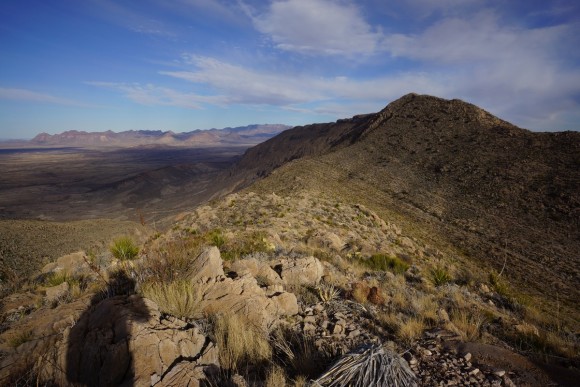
You can see the Cross Canyon trail running down the mountain side on the right. That’s where I’ll climb up that mountain to continue my route along the spine
After the initial climb up from the Cross Canyon trail, I was more or less on the spine now. The first section, before reaching the high point of Mariscal Mountain (3932′), was probably the most technical, but also probably the coolest part of the hike today. There’s a few areas that involved a little bit of scrambling, but nothing difficult at all and nothing that risky besides one or two steps along a knife edge section. There were a lot of false summits though on the way up to Mariscal Mountain, since it’s barely higher than the other points along this area of the ridge line. There is a USGS marker up here marking the summit. Fun fact… Mariscal Mountain is the southernmost peak in the Rockies.
Up on the spine of the Mariscal Mountains, the rocks were often extremely sharp. I did not want to fall on these rocks for fear of getting sliced up. On the flipside, they were great for gripping with my shoes. There were also a lot of interesting rocks along the way up here. Often times the ground just sparkled like crazy, and there’s piles of white/clearish crystals. Some had a tint of blue or green. Ah if I could only remember more from Geology class, I could put a name on them.
North of the Mariscal Mountain “summit”, it’s fairly easy going for a while while the elevation remains fairly flat, yet sloping downhill now. Around this time I got my first and only cactus thorn in the foot during my entire weeklong hike. I was wearing my Merrill Moab Ventilators for footwear, and had even considered wearing my Inov8 Roclite 315s. In the end, I chose the Moab Ventilators due to the extra beefiness of the shoe and figured that would be preferable in this rocky and stabby terrain. So far they have been pretty good for this hike. I removed my shoe to pull out the thorn and kept going.

Probably about 2/3 of the way through the Mariscal Mountains. The trail drops off this high ridge and transitions into a series of rolling hills and drainages
After a while the terrain started to become less of a knife ridge and there were more side canyons running down the sides of the mountain. This makes for slightly harder route finding. Occasionally I’d find myself following the wrong gully and needed to either backtrack or just head up the nearest hill in order to maintain my bearing. I was also getting a little tired now as the direct sunlight was taking it’s toll. Not getting sunburnt, just a little tiring. There was no more than a few patches of shade all day today.
Right before reaching the first views of the Mariscal Mine, there was one good sized hill I needed to traverse. I ran out of water in my bladder around this time. I had another 2L left but this needed to last me this evening and tomorrow morning until I reached the spring near Elephant Tusk. So basically, no more water until I reach camp tonight, unless I really need it.
After getting to the top of this hill, I dropped my pack in the shade. Finally, shade! After a few minutes I was on my way again. However, right after I started moving I slipped and fell on the loose rock, and cut my finger. Not terribly bad but I dropped my pack again to clean and bandage the wound.
Now I made my way through the Mariscal Mine area. All of the mine shafts have been closed off with grates to prevent entry. There were several buildings still standing, but I was running short on time and so I only snapped a few quick pictures and kept moving. Looks like an interesting area to explore more thoroughly.
The old road up to the mine petered out as I walked my last few steps on the Mariscal Mountain Range. Now on the desert floor again, I followed a road (I believe it was the River Road) for a very short ways while it was heading west. Once it turned south, I jumped off and headed north through the Fresno Creek wash. Once I get through the gap in the mountains ahead, I can start heading northwest towards Elephant Tusk.
This next section was a huge network of washes. At first the going was easy. The terrain was open and vegetation was fairly sparse. Eventually, moving anywhere outside of the washes became a chore due to the thorn bushes, and yet, the washes themselves where lined with thick shrubbery as well. At one point I had a thorn bush blocking my path. I used my trekking pole to break one of the branches, and continued to whack at a second branch based on my initial success. However, this proved to be a mistake as my trekking pole simply snapped in half. I’m using Gossamer Gear LT4 poles, which are super light but this is now the second time I have broken one. Clearly, I was using the poles for another purpose they weren’t meant for, but I wasn’t hitting those branches that hard. Ah well, I can buy another replacement section for this pole but really, I am beginning to question the ability to use these poles on longer hikes due to their frailty.
Eventually I made my way through the wash and I could see a white truck parked in the distance. That’s the trailhead for Elephant Tusk I was looking for alongside Black Gap Road. At first I didn’t see anyone alongside the truck and figured they were out in the desert camping somewhere. But as I got closer, 3 guys stood up from behind the truck, startled by my presence. By this time it was 5:15, and they were probably not expecting to see anyone out here. “Hi, don’t mind me, random guy popping out of the desert” I said. They laughed, and we chatted for a few minutes. One guy seemed pretty knowledgeable about the park as he recognized just about everything along my route, and had possibly hiked through the same canyon west of Goat Mountain as I had on my first day. Before leaving, I asked if they had a liter of water they could spare, which they gladly supplied. That really helped and lifted my spirits a bit.
After leaving the ET trailhead behind, it was time to cover some distance before dark. There was a a defined trail to follow here, although faint in many spots. The landscape was pretty flat with small rocks and scrub, so walking was the easiest it had been all day. I covered another 1.5 miles before calling it quits for the day. I had about 15 minutes of daylight left to work with, and quickly got my tent up and situated around camp.
I was pretty whooped by the end of today. Not much to do out here without a fire or anyone to talk to, so I was off to bed around 8:30.
Day 5 – Friday January 15th, 2016
Miles Hiked – 14.99
Route – Campsite southeast of Elephant Tusk to Juniper Canyon
I slept pretty good last night, which was a relief after the subpar sleep the night before. I probably heard more coyotes throughout the night here than anywhere else on this hike. Some were pretty far and others were closer, but none really close. It was a little warmer last night, around 45° when I woke up this morning at 7.
Today’s plan is to hike to the spring just east of Elephant Tusk and get water, then continue north on Elephant Tusk trail towards the Dodson trail. I will take the canyon northwest of Tortuga Mountain to the Dodson trail from the Elephant Tusk trail to shave off a little distance, and check out Adler Spring. Take the Dodson trail east to Juniper Canyon trail and head north, where I’ll camp in Juniper Canyon for the night.
After leaving camp, I found the trail to the base of Elephant Tusk to be pretty good. Easy to walk on, easy to follow.
As I near Elephant Tusk, the trail stays high up above the wash below. The spring isn’t that far away now but the trail is still high, and left me wondering if/when it will ever dip down into the canyon to meet this spring. The trail goes up and over a hill or two before crossing a side canyon that pours into the main wash below. I thought this side canyon was the trail now, since I saw no cairns or obvious route on the other side. So, I followed it down to the wash.
There was some really dense shrubbery through here and of course, it was pretty thorny. Once down in the main wash I was pretty sure this was not the correct route, but at the same time there was some water here and I knew the spring was in this area so it must be right. I kept walking upstream and saw some Cottonwood trees growing in the middle of the wash and knew this was Elephant Tusk spring.
Despite all the flourishing trees and greenery here, there were very little pools to actually filter from. In fact, the one I used was the only one I saw that was barely deep enough to dip a bottle into. It had a rocky bottom and so you couldn’t trench it deeper either. Downstream there were some larger pools but they looked more stagnant, and so I opted to draw my water from a spot nearest to the source. I chugged a liter and filtered 6 more. As I filtered my water, a small plane flew overhead. It was pretty low and seemed to come closer when it saw me, but didn’t make a second pass. I wonder if they were searching for a lost hiker or if it was an aerial tour or something. I tried to filter my water as quickly as possible as it was really cold in the shade.
Once I was ready to go, I headed north in the wash and just past the spring I saw some cairns heading uphill. I figured that must be the way out of here, and followed this trail. It went up a short ways before heading back south again, where I came from. I thought, maybe it’s taking me around an obstacle, let’s just see where it goes. Well, it went back to that side canyon I took down to the main wash. I had simply missed the cairn in the side canyon that marked the trail through here, and around all that terrible vegetation below in the wash. It’s all making sense now.
Now I’m back on the Elephant Tusk trail again, which is in the wash now. The trail winds through several canyons as it makes it way north. Sometimes the trail has you down in the wash, and other times it’s going up over a small hill to avoid obstacles. There are some cairns through here, but they aren’t huge and obvious sometimes, and so you really need to keep an eye out for them. I missed them a few times and had to go through some thick vegetation or climb up/down something to keep going forward.
The most interesting feature of the Elephant Tusk trail for me was the some of the red rock in the washes and canyons. While not huge or anything, they were really colorful and just plain cool looking.
Father north along the ET trail, the route has you out of the wash now and going up and over some larger hills. Here, I saw a couple of deer, my first on the hike. When I got up to the top of this first hill it was hard to find the trail again. It was on and off for a while, and rather annoying. I was expecting this trail to be pretty good since it was so well marked on the maps.
When it was time to leave the Elephant Tusk “trail” for the canyon with Adler spring, I wasn’t sure this was going to save me any time. It looked like it too had a lot of thick, thorny plants and I wondered if this was the right choice. I made the decision to go for it, trying to stick to my original plan where possible.
At first, this wash was not hard to walk though. After a little ways I began to see water. Lots of water, more than any other location I saw in the desert on this hike. I followed the water for a ways before reaching the spring itself.
Upstream of the spring, the vegetation became really thick and once again, a nightmare to walk through. Fortunately for me I was pretty close to the Dodson now, and only had to go another half mile or so. I fought with the thorn bushes for a while before just going up over some small hills to get me out of the wash.
Finally, I reached the Dodson at a rather nondescript junction around 3:15. This basically means that the rest of my hike will be on a legitimate trail system and will make covering ground that much easier.
This section of the Dodson trail, heading east towards Juniper Canyon, goes up and down a bunch of hills and doesn’t offer much for a view at first. No matter, I need to get some miles in today and this highway of a trail I had here was working great. After making it past a couple of hills, the peaks of Hayes Ridge and Crown Mountain begin to show themselves, marking the entrance to Juniper Canyon. That’s still a ways off in the distance though. I continued to haul ass.
When I reached the end of the Dodson trail, where the Juniper Canyon trail starts and Juniper Road ends, there was one guy there camping. He was facing the other way, sitting in a chair reading a book. I said a quick “Hi” and kept going. A few minutes later, I saw another lone hiker coming down Juniper Canyon and out towards the Dodson trail. We exchanged a few words and moved on. Like me, he was probably more concerned with getting to and setting up camp tonight. Oh, and there’s more bear crap on the ground now, and it’s in much bigger piles. Bigger bears in the Chisos area due to the increased food supply.
I made it to camp tonight around 5:15. Although there were a few sites right along the trail, I chose to go up over a small embankment alongside the trail and back a ways. The vegetation was pretty thick here but I found a spot that someone else had clearly used in the past, as there were some grasses matted down just big enough for a tent. Nice view too!
While setting up my tent I saw a deer about 100yds away, and scared him off pretty quickly. The sunset was nice tonight with a lot of reds in the sky.
The wind started picking up a little after dark but I didn’t think too much of it. After midnight though, it could no longer be ignored. The tent shook wildly with every gust. Not ridiculous speeds, but probably 30+ mph. The sound of the wind howling as it approached was really loud and intimidating. For a couple of hours, the winds were much heavier and consistent. After about 5am, they died down a little and I was able to get some rest.
Day 6 – Saturday January 16th, 2016
Miles Hiked – 8+
Route – Juniper Canyon to South Sim, campsite SE2
I was really glad to get out of the tent this morning after a long night. It was still really windy this morning and very cold. The wind added some difficulty to packing up the tent and gear this morning.
My plan for today is to continue the hike up Juniper Canyon, over the pass and down into Boot Canyon. Here I will find and filter water, and then continue on up to the South Rim via the Northeast Rim trail. From here I will make my way around the rim to my reserved campsite at SE2. Hopefully, Ryan will make it out here today as we agreed to do back on the morning of day 2. However, the one thing we didn’t discuss is what the plan is if he does not show up at SE2. Tomorrow, would I hike back into the Chisos Basin as we planned to do if we did meet up today, or do I finish the hike as planned at the Homer Wilson Ranch/Sotol Overlook? Hopefully, he shows up and we don’t even have to cross that bridge.
It was really nice to start moving this morning. Mainly because I wanted to get out of the wind, and that I was cold from said wind. There were a few more campsites, and some pretty nice ones, along the way up in Juniper Canyon. Here, the trail is well groomed and really nice compared to what I had to work with the last few days. Down in the wash to the west, there’s tons of green trees now, and the trail is lined with tall grasses. Along with cacti, those never go away. But the point is, the landscape was changing.
I made good time going up Juniper Canyon. I stopped for one break along he way up for some food and water, although I was running a little short now. Just over a liter left, but that’ll get me to the pools in Boot Canyon no problem. After passing Upper Juniper Spring, I entered the switchbacks. Not as hard as I was expecting today to be but still quite a climb. I made it to the top of the little “pass” down into Boot Canyon at around 11:15, and was disappointed with the lack of view. Oh well, many awesome views to be had from the South Rim later today and tomorrow.
Heading down into Boot Canyon was an abrupt change from windy, exposed side of the mountains in Juniper Canyon. Here, the trees were heartier and the grasses flourished. And yes, tons of cacti. It certainly had a different feel to it, and it was nice.
It’s a half mile hike down to the bottom of Boot Canyon where the hunt for water can begin. At the bottom, there’s a pool of some green water with a bunch of leaves in it. I’ll pass for now. I looked downstream a bit and didn’t see much, so I headed upstream. Here I saw my first person of the day, and person number 6 for the entire hike. But, that number was about to increase dramatically as my stay on the South Rim gets underway.
There was some pools of so-so looking water lower in the canyon, and some better looking water farther up. The problem is, the best looking water was frozen. I keep searching upstream and found some pools that got a little more sunlight then the others, and was able to get my water. I filtered 6L to last the remainder of the hike. Oh, and there was this rock with some moss growing in the shape of a heart. I can’t imagine that grew naturally like that, but maybe?
At this point I had traversed far enough up Boot Canyon where I should just continue this way up to the South Rim versus heading back down Boot Canyon and catching the Northeast Rim trail. Once you near the top of Boot Canyon and the South Rim appears, it’s an awesome feeling. For me, being up here last time on my Outer Mountain Loop hike in 2012, was the highlight of the trip. I walked up to the edge of the rim, and slowly the landscape below comes into view. So amazing.
As much as I want to mess around by the rim’s edge, I hurried to camp. SE2 was empty and Ryan was not here. It’s 1pm now, so he’s still got some time. He ended up arriving at 1:30 and so the timing was pretty good. Of course, we had a lot to discuss as we got caught up with the happenings of each other’s week.
On the day we split up, Ryan ended up making it back to the road near Mule Ears Overlook without any foot issues, although he said the “trail” up and over Mule Ears to the spring was basically non existent. He thought he saw a faint trail but it was not worn enough to actually help him. He did not have the luxury of a GPS as I did, but I gave him the National Geographic Big Bend topo map so he had something, as well as the 24k topo map I printed that shows the Mule Ears and spring area from our first day. Once back at the road he hitched a ride back to our car at the Sotol Overlook.
Ryan camped at Cottonwood for a night or two while he explored the west side of the park. He visited Santa Elena Canyon, Tuff Canyon, Study Butte, and other areas. After this he moved over to the Chisos Basin campground where he explored the popular spots like The Window and the Lost Mine Trail. His feet were feeling better and so he was also able to climb Emory Peak one day as well.
After catching up a bit, we gathered our photography equipment and headed down to the edge of the rim to enjoy the rest of the afternoon. Having the time to simply mosey around the rim’s edge, climbing and exploring while taking pictures, was a real treat. The short days in the winter mean almost no time for anything else other than hiking unless you are willing to keep your miles down, which I typically have a hard time doing. So the fact that I had a couple of hours to kill up here in full day light and with the best view in the park meant I couldn’t be happier.
The downside to being up here on the rim is all the people. We passed a boy scout troop of 30+ people, all in one group. That’s crazy to me that the park allows that. Good for those kids for getting out here but they had several adults with them and so I feel like they should be in groups no larger than 8. I’ve been other places where in terms of camping, group sizes were limited to the 8-10 range. Passing a group of 30+ kids makes me feel like I’m part of a school field trip and not a hike in the “wilderness”. I hope you are reading this, NPS. Besides the boy scout troop, there were tons and tons of people up here, but they were in normal groups of 1-3.
Not far from our campsite at SE2, we found a nice ledge near the edge of the rim to sit on and relax. We continued to talk about our experiences of the last few days as we photographed the vast landscape below. The rim drops off 200oft at the minimum compared to the high points below, and 3000ft relative to the desert floor. There’s nothing obstructing your view here and so the effect is quite dramatic.
After getting all the pictures possible from this spot, we moved east along the rim’s edge towards Juniper Canyon. There are many points along the edge of the rim that we stopped at for pictures. There were many rocky outcrops that were fun to climb along for photo ops as well. Another interesting feature of this area is all the bright green and orange lichen on the rocks.
We kept making our way east down the rim until we realized the sun is going to start dropping pretty quickly. We headed back to the SE2 general area. There were a couple of mule deer on the trail now and they did not seem to care at all that we were only feet away, talking softly and taking pictures of them. They all appeared to be bucks, and the largest was on the tail in front of us. He quickly left, probably to start flanking us, we laughed. The others continued to eat their grasses and roots , occasionally looking up at us as they did so. After getting a few pictures we moved on and let them be. However, around the corner was that boy scout troop again, and surely the deer will be scared away by the sound of all those people.
We watched a nice sunset from the rim’s edge and reflected upon the events of the past week. Our last night in Big Bend was finally upon us and thoughts of a hot meal, shower and real bed were starting to sound really good. After the last bit of sunlight faded away for the evening we headed back to camp.
We returned to the edge of the rim later in the evening to eat, away from camp. For my last dinner of the trip, I had a tortilla with pre-cooked bacon and shredded cheddar cheese. That was delicious, and I wished I had another one. But when can one ever get enough bacon? We stayed here watching the stars for a while before the rocks below zapped away our body heat, and it was time to return back to camp for the night.
Day 7 – Sunday January 17th, 2106
Miles Hiked – 7+
Route – SE2 to Chisos Basin Lodge
Last night the wind was howling like crazy, just as it did the night before. I believe it was hitting the south face of the South Rim and getting pushed up over us. Because of that, the wind never actually hit my tent, but damn was it loud as it whizzed overhead. I was relieved to not have to face those winds again tonight. A guy I passed yesterday said he camped at SE3 the night before and the wind blew his rain fly off his tent a couple of times. Been there, don’t want to do that again. Also, it was interesting to note that we did not hear any animals or have any encounters at all last night. This is where I was expecting to have animal encounters, not in the desert below as I had all week.
The plan for today is was originally to hike up Emory Peak and then back down into the basin, but since Ryan had already climbed it a few days ago, and I had in 2012, for time purposed we decided to skip that. Therefore today’s itinerary is to hike the Northeast Rim trail down to Boot Canyon, follow that up to the base of Emory Peak where we’ll take the Pinnacles trail down to the Chisos Basin. This is where Ryan left the rental car yesterday before heading up to the South Rim to meet me.
After getting out of the tent, we headed down to the same spot along the rim from last night in order to catch the sunrise. I set up my GoPro on my Flow-Mow panning timer to get some time lapse shots while I did my stills from another location.
It was another cold morning as we hit the trail at 9:20. Our motivating factors today were numerous, and we had no problem getting going after leaving camp. We worked our way east along the rim until we reached SE3, the campsite I stayed at in 2012. The campsite itself looks more exposed to the wind, but I think this site offers the best view from SE1 eastwards. On this hike I didn’t venture west of SE1, into the SW sites, so I can’t recall the view for those sites for comparison. Just as we were enjoying the view from the edge of the rim near SE3, the huge group of boy scouts were up and at ’em, and invaded our spot. That prompted us to keep moving and get some space in between us and them.
The trail continues to follow the edge of the rim as it curves northward. Here, there’s a few nice overlooks of Juniper Canyon below. After this though, the trail veers away from the rim’s edge and becomes less interesting as it approaches Boot Canyon.
After reaching Boot Canyon, we headed north along the Boot Canyon trail towards the Pinnacles trail. We saw a lot of people here in the canyon passing through, and many looked like day hikers. The Boot in Boot Canyon was pretty distinct now as we could see it poking up from the mountainside in the distance.
Now at the base of Emory Peak, I climbed up some boulders to get a few pictures of the Chisos Basin below. I remember climbing these same rocks in 2012 when I camped here at the Toll Mountain campsite. Great views, but very windy up here at the moment.
Next we headed down the Pinnacles trail. We passed probably close to 100 people going up this trail on our way down, many of them were part of another over-sized boy scout troop of 30-40 people. Again, is that necessary? Why would anyone want to travel in a group that large anyways? It must take all day just to cover 5 miles with a group of that size. As it turns out, this page on the NPS site states that a group of backpackers cannot exceed 15 people. Well, someone dropped the ball there, or these boy scouts are just ignoring those rules. Not cool.
The Pinnacles trail down to the basin starts off with a lot of switchbacks. The trail itself is well groomed and easy to hike. Many of the best views are obstructed by trees but there are a couple spots with some great vistas.
After passing the steep section with switchbacks, the trail levels out some and you find yourself in the grasslands of the basin. Only a couple of miles now to the end. After passing the last few campsites, we began to see signs that the trail was coming to an end, such as the water tank for the basin. Our knees were aching a bit from the long descent as we finally set foot on pavement in the Chisos Basin Lodge parking lot somewhere after noon.
We ordered carry out from the Lodge while we changed clothes and cleaned ourselves up. For me, getting out of my hiking clothes and into my regular, clean clothes and washing up in the bathroom of the lodge felt amazing. However, I forgot to bring a pair of flip flops and so I had to put on my regular tennis shoes now. After a weeklong hike, my feet were swollen and did not fit very well in my regular shoes. But, no blisters!
After getting our food from the Lodge we got in the car and headed back to Midland. I can not emphasize enough how awesome it is to have a normal, comfortable seat to sit in. This is one of those little pleasures you take for granted after a hike of this length.
On our way through the border patrol checkpoint south of Marathon, they asked us to pull over and get out of the car. They said the dog alerted to our car. We got out of the car and almost immediately, without even checking inside, they said ok you guys are good to go, have a good day. But, I thought the dog alerted to the car? Probably them doing their typical “false alerts”. Ugh, whatever.
Back in Marathon, we saw about 20 border patrol vehicles. Actually, I don’t think I saw one vehicle driving down the road in Marathon that wasn’t border patrol. It’s pretty clear what this town’s economy is based off of. We fueled up and headed north towards Ft Stockton, where we stopped at Dairy Queen for a Blizzard. Back in Midland, we checked in at our hotel and got some food later at the Tilted Kilt next door. Back at the hotel, we made use of the hot tub and relaxed for the rest of the evening. Finally, well deserved rest and comfort. Tomorrow morning, we fly back home.
Final Thoughts
Another successful hike in the books. I was worried about my ankle on this trip since I had sprained it(moderately) 3 months ago, and it still felt a little funny. Lots of clicking and popping in the ankle before the hike but everything was fine, no problems at all this trip.
This is one of the trips that taught me a little lesson, although I’m sure I will have to be reminded of it often in the future. That lesson is that no matter what the terrain looks like from the satellite, and no matter what the topo maps look like, hiking off trail is never as easy as I think it’s going to be. I was not expecting the washes to be lined so heavily with thorn bushes, which proved to be more of an obstacle than cacti for the most part. I only got hit by a couple of cacti the whole trip, but avoiding those thorn bushes is not possible.
The animal life here was much more active than I remember from my hike last time. Having that mountain lion so close at night, and actually coming into camp, was a real shock. I had never heard of a mountain lion attacking anyone while in a tent, and so I figured we were more or less safe. But still! When I returned home, I google searched “mountain lion attacked man in tent” and did find a story about a guy who was attacked through his tent in the middle of the night by a lion in California in 2012. Apparently though, this was unheard of and in fact possibly the first recorded instance of such an attack. I’m glad we didn’t become the second. Also, the amount of coyotes here was much more than I was expecting.
I really wish I would have chosen the Fisk Canyon route instead of my route over Jack’s Pass for my first 2 days. That will be a route for next time. I chose the route over Jack’s Pass because of the high ground which i am typically drawn to, but hiking through some of the canyons was just as interesting.
The geology of this place is amazing. The variety in land formations, rock types and environments I passed through were pretty incredible. I really need to brush up on my rocks and minerals again, as it would have been really cool to be able to identify more of what I saw here.
The hike along the Mariscal Mountain range was cool, but it would have been much more enjoyable with another person I think. The topo map made some of my route look harder than it actually was. The steepest part was the climb up from the junction with the Cross Canyon trail. After that only a few knife edge sections were technical.
I was expecting the Elephant Tusk area to have a better trail than it did, more like the Dodson. The trail was faint where it was not in the wash, going up over hills, and the cairns were small and easy to miss. Give yourself a little more time in here. Also, I found Adler spring near the Dodson to have much more water than the spring east of Elephant Tusk.
I was really surprised by how few people I saw outside of the Chisos area. Having covered over 50 miles by the end of day 4 when I saw my first humans, that would be the longest stretch of both time and miles that I have gone without seeing anyone while backpacking. Day 5 I saw 2 people and didn’t see another person until I reached Boot Canyon midday of day 6. So, 5 people in 5.5 days, and all of those 5 within the last 36 hours… not bad!
Of course, I was really bummed that Ryan couldn’t join me for the entire hike. I have done several solo hikes of this length in the past and would not hesitate to do so again, but having someone to share the experience with is preferable. It’s nice to have someone to talk to and laugh with along the way, and to get a second opinion for interpreting what I see along the way. I’m glad Ryan’s feet healed up and he was able to not only enjoy his solo adventures throughout the week but also that he was able to join me on the South Rim for our last night.
I’ll be going back to Big Bend, along with the Superstition Wilderness in Arizona, for years to come in the winter. I just need a few more “go-to” hiking destinations to round out my selection of warm weather winter hikes.
As always, questions and comments are welcome!
If you found my trip report useful, please don’t hesitate to leave a comment! Alternatively, if you feel you have any information you’d like to share with others regarding this hike, please feel free to leave that below in a comment as well.
[tcb_comment_count]
Pigeon River Country State Forest, MI – January 2015 (Trip Report)
Overview
- Location – Pigeon River Country State Forest, MI
- Park Type – State Forest
- Miles Driven To Destination – 500 miles Round trip
- Length Of Time Hiked – 4 days, 3 nights
- Miles Hiked – 11
- Trail Type – Basecamp, off trail
- Trail Difficulty – 5/10
- Fires Allowed – Yes
- Solitude – 7.5
Notes
If you plan on camping in the backcountry (on State Forest land, but outside of a state forest campground), the Michigan DNR (Department of Natural Resources) requires you to fill out a camp registration card. You need to fill it out in PENCIL and leave this card where you camped, tied to a tree or secured in some other way. This system is pretty dumb if you ask me. You need to carry a card for each camp you stay at, and a pencil… who brings a pencil backpacking? And why on Earth do they want you to leave it in the woods where it will likely be destroyed by the weather long before any DNR officer ever finds it? Regardless, you can print out your camp registration card (they are free) by opening the link below:
http://www.michigan.gov/dnr/0,1607,7-153-30301_30505_30731-31303–,00.html
Getting There
Many of the “roads” on the map in the Pigeon River Country State Forest aren’t really roads that you can drive on. These roads may have been old logging roads, but now are only passable by 4×4 vehicles with a high clearance. Many of these roads have downed trees blocking the path, or even new trees growing in the road. Some of the roads on the map simply weren’t there as well. Google earth showed roads on the map that were not there when reached that area.
From I-75, Sturgeon Valley Rd. coming from Vanderbilt is the main access road for the southern portion of the state forest, and Webb Rd through Wolverine is the main access road for the northern section.
Day 1 – January 2nd, 2015
Miles Hiked – 1.5
Route – Parking spot at Chaffe Rd & Osmun Rd to camp near Little McMasters Creek
We arrived at our parking spot at the intersection of Osmun Rd and Chaffe Rd later than anticipated due to my car GPS taking us down some ridiculous route down non-existent roads. There was no parking area, but the intersection was very large and provided enough room to park two vehicles without being in the way of anyone driving down the road. Since we saw no tire tracks in the snow on any roads for the last 30+ minutes, we figured this spot would be acceptable. Actually, we tried driving east on Chaffe a ways first to see if we could park farther down, but quickly found that this would not be possible with one of the vehicles in our convoy due to huge ruts, downed trees and steep hills.
We loaded up our gear and started walking around 2:30, much later than I hoped. Fortunately, this trip is not about hiking a ton of miles and moving from camp to camp, but instead we planned on setting up a basecamp and just exploring the area. Before leaving home, I used Garmin Basecamp and Google Earth to pick an area that would be suitable for camp. From our parking spot, camp was mostly a straight shot down Chaffe Rd, and then off trail a short ways.
We saw elk tracks almost immediately after leaving the car behind. In addition, we also saw coyote and rabbit prints in the snow along Chaffe Rd. This section was hilly, and would be very hard to drive up in all but the beefiest 4x4s. Right now there was about 2 inches of snow on the ground, but we were expecting a few more inches this weekend. The walk was pretty quick and eventually the road ended. From here, we cut a path through the forest towards the area I had picked for camp. After a short distance, we reached a large clearing. The area had clearly been logged, but also seemed to have a lot of downed trees. Little McMasters Creek flowed through here, originating from this marshy area according to the map. We saw cattails and other signs that told us the ground we were walking on wasn’t completely solid. We headed towards the treeline once we had the chance.
As soon as we exited the logging area, we found ourselves in a thin stretch of cedar swamp lining the edges of the marsh. In the summer this probably wouldn’t have been a great place to camp, but right now it looked pretty decent as soggy areas were mostly frozen and there were obviously no bugs that typically plague these areas. There was a flat spot with good cover from the trees for Bryan’s tent, good space between the trees to hang my hammock (first time using one!), and an uprooted tree that would provide a good wind block for our fire. Most importantly, the close proximity to water. The creek was about 100 yards from camp which was very convenient. Yup, this is it, home for the next 3 nights.
Now about 3:30, it was time to start setting up camp. Daylight is scare this time of year, and we had about 2 hours of light left to work with. Marc didn’t have to worry about setting up a tent, since he planned to hike back to the parking spot each night and sleep in the back of his minivan. Instead, he went to town on gathering firewood. He brought a hand saw and loppers which proved invaluable throughout the trip.
I mentioned that I would be sleeping in a hammock. I have been dying to try one for the last 2 years and finally have the chance to after receiving one for Christmas. The Grand Trunk brand hammock has no mesh bug liner or anything fancy about it, but for this trip it should suffice. I had ordered the Grand Trunk Funky Forest tarp to use with this hammock a few days earlier, but apparently UPS doesn’t deliver on New Year’s Eve or New Year’s Day, only air mail. Needless to say, I didn’t receive it in time. I had to use some lightweight blue tarps I bought at REI. The largest tarp I had was a little too short for the hammock but I had multiple tarps with me. For the first night, I just used one tarp overhead and one below me to set my gear on.
Bryan and I decided to go out for a short walk after setting up camp. We headed through the cedar swamp towards the east end of the marsh. Not far from camp, we picked up some coyote tracks that led right where we were already going, so we followed them. At the end of the marshy area the tracks ran along the top of a small burm or levee, separating this area from another large open marshy area to the east, which had a very thin line of trees blocking the view. The creek flowed from one open area to the other through a gap in the burm.
Once the sun went down it was time to get a fire going. I tried lighting the fire with some cattails and a spark from my firesteel, but that was a no go. Most of the wood was a little wet and snow covered, so the fire took some effort to get going. Finally, I was successful using a lighter and the stalks of the cattails, constantly feeding the fire with stalks since they go out fairly quickly. Now it was time to cook some italian sausages for dinner. How could they possibly be any better? Try eating them on cheesebread with shredded cheddar cheese sprinkled on top. No noodles in a bag for me!
After eating dinner and hanging out for a while, Marc headed back to his van. He was hesitant about sleeping in a tent this weekend since the temps were forecast to be in the low single digits on night 3. To each his own I guess.
The moon was nearly full and illuminated the marsh by our camp. The crisp air, dead silence and stillness of the night was very peaceful. I actually had the feeling of being in a remote location despite this being the lower peninsula of Michigan. There was a good chance we were the only ones sleeping out here tonight, as this place isn’t all that crowded with hikers and backpackers in the summer either. In May of 2013, I hiked the High Country Pathway, an 80 mile loop trail that runs through this area, and I didn’t see a single hiker. I highly doubt there will be anyone out here now.
When I went to brush my teeth tonight, my toothpaste was almost frozen. I had been trying to keep my water and any food that I planned on eating soon warm by putting it in my pockets, but I guess I’ll have to do the same for toothpaste and contact lens solution.
Tonight was going to be interesting. First night in a hammock, and I have never slept in temps this low (around 13 tonight). I gave my 0 degree bag to Bryan, and I took the 20 degree bag. I planned on sleeping in my clothes for extra warmth. I don’t have an underquilt to use under the hammock, so I used two inflatable sleeping pads (Thermarest ProLite and Klymit Inertia X-Frame) instead to block heat loss from below. We’ll see how the night turns out.
Day 2 – January 3rd, 2015
Miles Hiked – 4.1
Route – Logging roads, off trail
My first night in the hammock wasn’t the greatest. I had to get up once to put some more slack in the straps for the hammock so it wasn’t so tipsy. The extra slack helped a lot. My feet were cold but I was only wearing 1 pair of sock liners and one pair of smartwool socks. Tonight I will add another pair of smartwool socks, that ought to help. Also, as I had anticipated, not being able to turn over and lay on my stomach or sides was annoying.
There was a dusting of snow overnight, which was on my gear below me. Not too much so no big deal, but I’ll have to address that later. Right now I had to concentrate on warming up my feet, they were very cold! I ran up the hill behind camp and did a bunch of jumping jacks at the top and ran back down. That wasn’t enough so I used my hands to massage the feeling back to my toes. Definitely going to need to have wood ready for a fire tomorrow morning.
After Bryan got up and we both ate, we started gathering more firewood. Then we realized that the snow coming later today and tomorrow is just going to bury our wood, so we decided to make a bit of a shelter for the firewood to keep it dry. There was a ton of great wood around as there were many downed trees near camp, so finding all the materials needed was easy.
After building a storage area for our firewood, I decided to beef up my tarp system to keep me and my gear protected from the snow. I repositioned the tarp over the hammock to be closer to one tree than the other, then added a second tarp on the exposed end. Also, I placed another small tarp over my gear below. This was a pretty ghetto solution but functional, and the best I could come up with on short notice. After all, I started planned this trip only 5 days earlier.
Marc finally made his way back to camp by late morning. My MSR Miniworks water filter wasn’t pumping water, so when Marc returned with his Katadyn filter we were finally able to fill our water bottles. I’m not sure what the problem was with mine, other than the fact that it was cold out, and I have never used it in temps this low yet. I have been using my SteriPen Opti for the last 2 years due to it’s smaller size and weight.
We were anticipating several inches of snow over the next few days and thought it would be nice to have a bit of shelter overhead while we sat in front of the fire, so we made a quick lean-to. There weren’t many downed pine or cedar trees around though so we were short on roofing materials. Still, it will act as a wind block and provide at least some protection from the snow.
Once we were done with improvements to basecamp, we headed out for a day hike. We didn’t have any set location to head to, we were just out wandering around for the most part, following anything we thought may be interesting. We headed south from camp, which took us up hill and into a large clearing with a single huge pine in the open. There were a few sets of coyote prints here, which we followed through the field. At the other end of the field was a huge pine tree, alone out in the open. We then entered the woods again, following a faint pathway between the trees.
Eventually we ran into an old logging road, which we followed until it dead ended into another logging road. This road actually showed up on my GPS and was Little McMasters Creek Trail. The road had tons of animal prints on it, including coyote, deer, and elk. We took a right and followed the road a ways until we came across a field to the west. On the other side of the field, the land looked more hilly, and we decide to head that way.
There was no trail or road to follow now, so we cut a path trough into the woods through unbroken snow. There was maybe 3 inches on the ground, so it wasn’t too difficult to walk through. It was slippery in spots, especially going up and down hills. It was nice walking through here but with three guys, I am pretty sure we scared off any animals that were around. Several times we came upon some extremely fresh tracks, deer mostly.
The temperature was warming up today and was forecast to be around 32 for the high, which would be the high for the entire trip as well. We were pretty warm from climbing up the hills with all our layers on, so we took a break to cool off before breaking too much of a sweat.
After our break, we started heading in the direction of camp. The GPS showed a nice loop forming as we cut a direct path back. There were occasionally some logging roads the we crossed but eventually stopped following them as they would often curve and lead us away from camp. The woods weren’t extremely thick but there were a lot of smaller trees that were perfect for eye poking. It was nice to finally make it out of the woods and back into the large field with the lone pine tree near camp. From here we followed our tracks back. Today’s hike was 2.5 hours and about 4.5 miles.
For dinner tonight I had some bacon, sausage and flatbread with olive oil drizzled on it, among other snacks. I cooked the bacon and sausage in aluminum foil over the fire. After losing 15+ pounds in 8 days on my hike in the Wind River Range this summer, I was determined not to lose any weight this trip. It took me 3 months to gain that weight back in the gym. This time, I brought 9 pounds of food for 2 full days and 2 half days, and was not having any problem chowing down like a madman. One of my favorite things about hiking is eating a bunch of good food (fatty animal meats for instance) I normally wouldn’t get to eat at home because I try to eat healthy. Out here, I need all the calories I can get!
We were getting some flurries this evening but nothing serious. I weren’t sure exactly when the bulk of the snow was coming but knew it was sometime tonight or tomorrow. Our firewood storage structure was full of wood and ready to fuel the fire tonight and tomorrow morning. After waking up with freezing feet this morning, I wanted to make sure I could get a fire going in the morning asap.
While sitting by the fire we heard several coyotes howling in the distance. Between breaks in the clouds we could see that moon was now almost full too. Now, it was time for Marc to hike back to the van for the evening. I’m sure glad I didn’t have to do that every night, especially after dinner. Speaking of after dinner, it was time for more food… chocolate to warm me up before bed!
Day 3 – January 4th, 2015
Miles Hiked – 3.7
Route – Logging roads, off trail
I slept much better last night. I was more used to the hammock and was more comfortable in it. I added an extra pair of smartwool socks to keep my feet warm, and put my feet and legs into the arms of my rain jacket. Sounds silly but this has worked for me in the past on cold nights. Actually though, last night wasn’t that cold, it was the warmest while we were out here, with lows in the mid 20s or so. This morning was much more bearable.
About 2 inches of snow fell over night. Good thing I added the extra tarps to my setup, that helped keep the snow out. I was getting some condensation buildup on the inside of the tarp though. This freezes and falls on my sleeping bag throughout the night, especially when I would shake the tarp to knock off snow that has accumulated on the outside. Even so, I was dry all night so I can’t complain.
Our 3 sided firewood storage area allowed some snow in but not nearly as much as without it. I got a fire going and started cooking some bacon bacon for breakfast. Afterwards, Bryan and I filtered some water from the creek.
Marc showed up a little earlier this morning, and we then proceeded to gather firewood for tonight and tomorrow morning, which we anticipate to be the coldest of the trip.

Little McMasters Creek flowing through a large open area. Much of this was soggy and partially frozen.
We headed out for another day hike around noon. This time we thought we would follow the marsh east. We hiked through the woods along the marsh for a while before trying to venture out into the open area, which looked more like a normal field now than a marsh. However, it wasn’t long before my foot went through a soft spot on the ground and some water got into my boot. We headed back into the woods where the ground should be more solid. This was true for a short while, but eventually we reached an area where there was pools of water pretty much everywhere as we were basically still in a cedar swamp. We decided that it wasn’t worth walking through this area and headed back towards the way we came.
On our way back towards camp we hit Little McMasters Creek Trail again, north of where we hiked it yesterday. We walked south on this road for a short while before heading east through a field. We saw some human footprints in this field that were probably a day or two old, as the prints were visible but had new snowfall on them. I figured they led into the Canada Creek Ranch which was not far from here. We decided to follow them and see where they went. The footprints led us down a series of logging roads, fields, and pathways in the woods before we reached an area that had been logged. Since the Canada Creek Ranch is private property, we figured this would be a good place to turn around since we were pretty close to it now.
The hike up to this point was very pretty with lots of huge, snow-covered pines. This was what I was envisioning for a winter hike. The snow was coming down a little bit here and there all day long, never very heavy at any time though.
We returned back to camp in mid afternoon. The temperature was really starting to drop. A few minutes of sitting and I was cold. It was hard to stay warm now since we weren’t moving. After eating some food and relaxing for a while, we headed out for another short hike. This time, we wanted to head north, which meant crossing the marsh. We didn’t want to cut through it near camp, so we headed west a ways before turning north, hoping to go around any wet areas. However, this area was looking pretty thick and we decided that it wasn’t worth the effort. Instead we just headed back to camp again, this time for the night.
We got the fire going early tonight since it was so cold now. There was intermittent wind in addition to on and off flurries. We hovered by the fire for warmth all night while we cooked dinner and waited for bedtime. This was definitely one of those times when you didn’t want to leave the fire. It’s easy to forget how cold it is just a few feet away. My watch can read the temperature, but apparently not when it’s this cold. Everything else on the watch was functioning properly, but when I left the watch out in the cold for a few minutes the temperature wouldn’t register. After warming it up with my hands for a few seconds it read 14 degrees, so I know it was colder than that. It was only going to get colder as the night goes on.
Day 4- January 5th, 2015
Miles Hiked – 1.6
Route – Camp near Little McMasters Creek to parking spot at Osmun Rd. & Chaffe Rd.
I did everything I did the night before to stay warm, but my feet were cold again tonight. My body was mostly warm despite a few shivers throughout the night. All in all, the night was pretty tolerable though considering it was likely several degrees below 0 with the wind chill. We got a few more inches of snow overnight bringing the total up to 6-8 inches.
The worst thing about today was that my boots were frozen. I had shoved my gloves into the boots and put them under a tarp, but they were quite solid when I attempted to put my feet in them. I had to piss so bad after being in the hammock for 10 hours, so I just forced my feet in there so I could get out of bed. I immediately lit a fire and began thawing out my boots, and my feet. It’s amazing how quickly those boots sucked out any remaining heat that was left in my feet. I spent a good 15 minutes regaining feeling in my toes before moving on to other chores.
Bryan had to be back downstate by 6pm for work tonight, so we tried to pack up camp as quickly as possible this morning. He wasn’t feeling good from something he ate yesterday so he didn’t cook any breakfast. I was going to cook some sausage links but decided to save time and just eat a Metrx bar.
Packing up camp was a pain because every time the wind blew, huge clumps of snow would fall on me and my gear. Once I packed the tarps I had no protection from the falling snow, which got inside my backpack and over other things. The good news is that it was so cold that the snow wasn’t wet at all, and it was easy to shake out. The fire was essential for warming my hands every so often.
We left camp around 10:30 this morning. Marc was sleeping in his van, so there was no need for him to come to camp this morning. Instead, we would hike back to him and our vehicles. This was a lot easier a few days ago when there was less snow. Now, there was a good 8 inches in spots, and the hike back was rather hilly. Bryan was worn out from not eating any food over the past day due to his stomach, so he was having trouble with the walk back. Good thing it’s only 1.5 miles. Felt like 5 miles though.
Once we reached our vehicles, Marc was there to greet us. He had to jump start his van this morning with Bryan’s truck. It sure was nice having two vehicle here this time. Bryan’s truck read 3 degrees outside, and this was at 11:30. I wonder how cold it was at 6am?
We took a different route back to Sturgeon Valley Rd, the main road leading back to Vanderbilt and I-75. I was concerned about Marc’s minivan making through the unplowed roads but we made it out without issues. Woohoo, first winter camping trip under my belt!
Final Thoughts
This trip was more of a learning experience for me than anything else. I wanted to see what it was like and what it takes to camp in cold weather. Specifically, what gear I found useful and which I could do without. The first thing I would leave behind next time is the shovel. I was envisioning more snow and the need to dig out an area for the tent, near the campfire, etc. Unless there was at least a foot of snow on the ground or the snow was hard and icy, I don’t see a need for it in this area. Maybe in the mountains but not Michigan’s Lower Peninsula. I definitely need to get a longer rain jacket too as mine is shorter than my insulation jacket below it. It’s a tight fit with all those layers on.
Sleeping in the hammock was comfortable overall, much more than sleeping on the ground. When sleeping on the ground I felt like I was waking up every 20-30 minutes when my arm or leg would go numb from laying on it. Coming up with a rainfly setup for the hammock is my next challenge.
The Pigeon River Country State Forest is, in my opinion, the most wild area in Michigan’s Lower Peninsula. We didn’t see anyone else out here, not even tire tracks in the snow on any state forest road. Lots of animal tracks as expected but with three guys traveling together I didn’t expect to see much. It was kind of discouraging seeing all the “roads” that criss cross through this area on the map, but in reality, many of these roads aren’t used at all, since they are impassible by car or simply non existent. I have been through this area twice before in the summer, and never saw any hikers either time. This time was no different, didn’t see a soul. Not surprising given the weather.
As always, questions and comments are welcome!
If you found my trip report useful, please don’t hesitate to leave a comment! Alternatively, if you feel you have any information you’d like to share with others regarding this hike, please feel free to leave that below in a comment as well.
Nordhouse Dunes Wilderness, MI – July 2014 (Backpacking Trip Report)
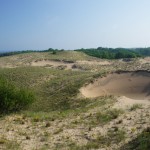
Hiking & Camping In Nordhouse Dunes Wilderness, MI
View all of my Nordhouse Dunes Wilderness pictures | Nordhouse Dunes Wilderness HD video on Youtube
- Location – Nordhouse Dunes Wilderness, Michigan
- Trail – Varied, and mostly off trail
- Trailhead – Nurnberg Trailhead
- Park Type – National Forest, Wilderness Area
- Fees & Permits – There is no fee to camp, but at the Nurnberg trailhead there is a $5/night fee per car, or $15 for a week
- Length Of Time Hiked – 4 days, 3 nights
- Trail Type – Off trail
- Miles Hiked – ~30
- Trail Difficulty – 4/10
- Solitude – 1 on beach and popular trails, 5 in the interior of the park
- Fires Allowed – Yes
Nordhouse Dunes Wilderness Notes
Nordhouse Dunes is the only federally designated Wilderness Area in Michigan’s lower peninsula. This isn’t really too surprising as Michigan’s lower peninsula is about as far from wilderness as you can get. I don’t believe I have ever been more than 1.5 miles from a road anywhere in the lower peninsula. Another interesting fact is that Ludington State Park, which borders Nordhouse Dunes Wilderness to the south, has the largest area of fresh water interdunal ponds in the world.
Nordhouse Dunes Wilderness Maps
http://www.fs.usda.gov/Internet/FSE_DOCUMENTS/stelprdb5151641.pdf
[sgpx gpx=”/wp-content/uploads/gpx/Nordhouse Dunes Route Hiked with Waypoints.gpx”]Day 1 – Friday July 11th, 2014
Miles Hiked – 2.1
We arrived at the Nurnberg trailhead around 6:30pm, and it was packed. The car after us took the last spot, and people now had to park down the road, past a sign saying “no parking beyond this point”. This is where Ryan had to park when he arrived about an hour later.
There where a lot of people coming and going, and it really looked the like the party crowd. One guy was carrying a cooler full of beer. I wasn’t really sure what to expect, but this was not what I was wanting to see. Regardless, we left the trailhead around 8:30pm or so.
The Nurnburg trailhead parking lot actually has a trail passing through both sides of it. On the north side, near the outhouse, the trail heads towards Nordhouse Lake. On the south side, the trail heads straight for Lake Michigan, which is the route we chose. We hiked past one or two small ponds and a marshy area before reaching our first dune outcrop about 20-30 minutes later. Once over one or two small dunes we had our first view of the lake.
The sun was going down quick, and we started scouting for campsites at this point. We started heading north along the dunes paralleling the shoreline. We saw a lot of people scattered around here and there, and as expected, it took a while to find a decent site. We settled on a spot tucked in a bit of a bowl just a few yards into the first patch of trees butting up to the dunes. Bryan and I were in tents, while Ryan brought his hammock. I’ve never slept in one, let alone laid in one (the kind for overnight camping anyway). asked if I could test out the hammock, and it was pretty comfortable. Maybe someday I’ll buy one for myself.
We didn’t have much time for anything tonight after setting up camp as the sun had pretty much set. We hung out down by the water for a while before calling it a night.
Day 2 – Saturday July 12th, 2014
Miles Hiked – 10.1
After waking up I headed down to the beach for a while. Ryan joined me a while later, and finally Bryan emerged from his tent and made his way to the water. We didn’t have a set plan for today, just to explore.
After getting back to camp and eating breakfast, we set off on a hike to Nordhouse Lake. It wasn’t long before we came across some dunes that looked inviting. One in particular caught my eye, with its large bowl shaped pit. We had some fun jumping into the pit from the top and taking some pictures before moving on.
The trail to Nordhouse Lake from where we were camped required heading back to the trailhead, since the trail we were looking for passes through the other side of the parking lot. It was just as packed, if not moreso today. We passed through the lot and continued on the trail to the lake. There were less people around now, but we weren’t alone by any means. Once we arrived at the lake, it started sprinkling. Fortunately it was light and short lived. We were rather unimpressed with the lake itself and since there didn’t appear to be anywhere that would be easy to fish (and worthwhile to do so) from on the shore, we moved on. At this point, we decided to head back to camp and explore the dunes some more.
Once we arrived back at camp, we were shocked to find another group of people setting up camp extremely close to us. Probably about 40ft separating out campsites. It was a group of about 12 or so people, some boyscouts and their scout leader(s). I consider this to be rude and bad hiking etiquette. There are plenty of campsites scattered throughout the park, and therefore unnecessary to be that close to us. Especially with such a large group of young kids. We immediately began to pack up our stuff to move somewhere else. Ugh, the nerve of some people.
We headed south down the beach, scoping the area for someplace more secluded to camp. Walking along the shore was easy and nice. After covering a little ground, we had to start heading inland to look for campsites. Every time we thought we found somewhere good, there were already people there. So all we could do was keep heading south.

This is the ridgeline we used to travel from our campsite up and over to the “interior” of the park.
After a while we left the beach altogether for a more accurate lay of the land. From the high ground we could see a few spots worth checking out, however, they were farther to the north. No big deal, we just back tracked a little. It turns out that we passed right by a great campsite earlier because we couldn’t see it from the beach.
After setting up camp, we took a quick swim in Lake Michigan. It was pretty cool at first, but not bad after a few minutes. However, a few minutes was good enough for me, I’m nice and cool now. The weather was starting to look pretty crappy now as the skies grew increasingly foggy. Back at camp, Ryan was taking a nap in his hammock. Bryan and I decided to head out further into the interior of the dune field and away from the lake. We figured there would be nobody out there, especially with the weather looking the way it was.
We headed up a ridgeline in the dune up to a high point, which we could not see past all day. Now, we could see on the other side of this ridge, sort of. The fog was getting thick and hindered our views greatly. Still, being in a place like this with heavy fog cover was pretty cool.
We saw some water in the distance, so we headed for that. We still had not yet seen any of those interdunal ponds. From a distance, I was thinking this could be a potential campsite. Once we were up close, I could see that it was a dirty, muddy looking pond of stagnant water. Nothing like what I was expecting.
Next, we headed farther inland and up an even higher ridgeline. The top of the ridge was a knife point edge in spots and again, not what I was expecting for sand dunes. This was much more interesting to me than the beach.
We wandered around through the dunes for about an hour and a half before heading back to camp. Hopefully the weather will cooperate tomorrow.
Day 3 – Sunday July 13th, 2014
Miles Hiked – 12.5
I awoke before the others again today, and headed off into the interior of the dune field shortly after sunrise. I saw some deer as I made it to the top of the ridge. Actually, we had seen a lot of deer this whole trip. It was kind of nice to be up here alone this morning.
Once I was back at camp, everyone was up and ready to go for the day. We decided to use this camp as a basecamp and just day hike from here. Bryan and I both suggested further exploration of the dune’s interior. Ryan agreed, having not yet seen it.
We took a different route into the dune field this time as Ryan mostly led the way. It was really sunny now and shaping up to be a hot day. Still, I can’t complain about clear blue skies! The views were excellent now with proper visibility. It looked like we were hiking on an abandoned golf course with enormous over-sized sand traps. I’m sure a more skilled photographer would have a field day out here, but we still had fun taking pictures along the way nonetheless.
Much of the morning was spent off trail, on grassy dunes and sometimes just sand, although there were sections of trail here and there. There were a lot of ups and downs but nothing very strenuous. We saw shotgun shells here and there, reminding us that this area is open to hunting when in season.
By late morning, we were approaching a large open sand area north of Hamlin Lake. The southern boundary line of the Nordhouse Dunes Wilderness lies in this area. Continuing on our southerly path, we entered Ludington State Park land. Along the edges of this long sandy area, Bryan spotted a Hognosed snake. It looks a lot like a rattlesnake, and has a king cobra-like hood, but it’s non venomous. Bryan got some “up close” footage with his GoPro and then we left it alone.
We took our time wandering towards Hamlin Lake. It was actually farther than it looked.
Once we got to the shore of the lake, we could see all sorts of people and activity on the lake. Several boats were out and many were docking on the northern shore of the lake and hanging out on the state park land, swimming and drinking beer. The scenery along the lake was very nice. Lots of soft sand dunes to hike up and down around the lake though.
Our plan now was to take the lighthouse trail back to the beach, and hike that north back to camp. We had to leave the shore of Hamlin lake and heard west inland in order to hook up with the lighthouse trail. We saw lots of people along the way and there were plenty of easy trails to follow. The lighthouse trail was pretty boring though, not much worth noting at all.
At the end of the lighthouse trail lies Big Sable Point Lighthouse. I’ll bet you never saw that coming. This was more of a tourist attraction than anything, with a gift shop and a fee to go up to the top. We went up to the top, which offered a great view of the surrounding area. Finally, we could see some of those interdunal ponds! However, it was not quite as extensive as I thought it would be. There were some small ponds in the dune areas, but certainly not what I was expecting for “world’s largest”.
We hung out outside the lighthouse for a while after we got back down, sitting in the shade beside the building. It was a pretty warm day, and quite sunny, so it was nice to take off the boots and relax for a few minutes. One of the ladies inside gave us some leftover pizza they had, so we had a tasty lunch as well. Then, she tossed down a few apples from the window above as we headed off. Thanks for the hospitality, lighthouse ladies!
The hike back to camp was a couple mile stretch of shoreline. The hiking here was very easy and straight forward. At some point we came across some fenced off areas on the beach, closed for Piping Plover nesting. The Piping Plover is an an endangered and protected bird. The feet on these little guys move fast, and they almost looked cartoonish. Or maybe cartoony? You get the point.
Once back at camp, we were eager to jump in the lake and cool off. After that, we hung out at camp for a while and relaxed before having dinner.
Once the sun had dropped a little, we hiked back to the same area Bryan and I had explored last night. We figured this would be a more interesting place to watch the sunset, with all the shadows on the dunes and whatnot. Ryan didn’t venture too far out, while Bryan and I were both in search of interesting photo opportunities that took us a bit farther out.
I found a spot to set up on a dune perched above the interdunal pond we found the night before, with Lake Michigan beyond that in the background. I hung out here as the sunset and took some pictures. What a great way to end a great day.
Day 4- Monday July 14th, 2014
Miles Hiked – 2.1
It was another nice morning when we woke up today. After a leisurely start to the morning we packed up camp and hit the trail, headed back to the trailhead. It was only a few miles at most back to the car, and there isn’t much to say about today really. I didn’t bother to take any pictures. We had already walked the trail we hiked back, so that wasn’t new. I will say that there were almost no people out here now, being Monday. It cleared out yesterday afternoon, actually. We made great time back to the parking lot which had cleared out considerably since we arrived.
Want to see ALL of my pictures from Nordhouse Dunes? Check them out here: Nordhouse Dunes Wilderness Pictures
Final Thoughts About Nordhouse Dunes Wilderness
Nordhouse Dunes is one of the better hikes in Michigan’s lower peninsula in my opinion. I’m very glad I did this hike and would love to go back, but only during the week. There are just too many people here on the weekend. The fact that this wilderness butts up to Ludington State Park is nice because it extends the area in which you can hike. Even if you want to camp out in the wilderness, hiking through Ludington State Park during the day and returning to the wilderness at night is very feasible.
DO NOT plan on hiking with flip flops here! I made this mistake of wearing them on day two much of the day as we hiked along the beach and later, through the grassy dune interior. By the end of the day, the top of my feet were swollen and tender. By day 3 (now wearing boots again), you could actually feel the tendonitis in the tendons on the top of my feet. My feet hurt for 7-10 days afterwards, preventing me from running or doing stair climbs. I recommend either a sandal with a strap of the back of the heel if you must wear a sandal, but really I liked wearing my full grain leather boots (Zamberlan Vioz GT). They provide the necessary foot support for sand and also kept all of the sand out of my feet, when used with long pants. That was part of the reason why I chose to hike in sandals on day 2, so that I could wear shorts. Without long pants, sand can easily get into the boot.
I didn’t explore the northern or western parts of the park at all, we ended up staying on the east on south side. So, next time I could check that out if returning. Those sections seem to be heavily wooded though, and even swampy in the western section.
As always, questions and comments are welcome!
If you found my trip report useful, please don’t hesitate to leave a comment! Alternatively, if you feel you have any information you’d like to share with others regarding this hike, please feel free to leave that below in a comment as well.
[tcb_comment_count]Black Forest Trail, PA – April 2014 (Backpacking Trip Report)
Black Forest Trail Backpacking Overview
View all of my Black Forest Trail pictures
- Location – Tiadaghton State Forest, Pennsylvania
- Trail – Black Forest Trail
- Trailhead – On Slate Run Rd about 1 mile northwest of Hotel Manor in the town of Slate Run
- Fees & Permits – None needed (Backpackers only need permits to camp along Pine Creek or Slate Run)
- Length Of Time Hiked – 4 Days, 3 Nights
- Trail Type – Loop
- Miles Hiked – 39.3 Miles
- Trail Difficulty – 6.5
- Solitude – 3
- Fires Allowed – Yes

Getting There
I left home around 6am after meeting up with my buddy Ryan. It’s about a 7.5 hour drive (440 miles) to Slate Run, PA. We escaped rush hour traffic and where soon into Ohio. Ryan was set on Chick-Fil-A, so we made sure to stop at the first one we found. We don’t have them in Michigan.
On the way into Slate Run, coming heading north on 414 from 80, we passed a Tiadaghton State Forest building. Although they did have some maps, they did not have any for the Black Forest Trail.
Day 1 – Wednesday April 16th, 2014
Miles Hiked – 6.8
Route – Slate Run Trailhead to campsite near Little Slate Run along the BFT
We arrived in Slate Run around 2pm as anticipated. The trailhead is located on Slate Run Rd, less than one mile north of Hotel Manor. It’s marked by a brown sign for the Black Forest Trail, and the road has pull off spaces for parking along side it. There was a large “church van” parked here, but that was it. We weren’t expecting to see many people out here.
Heading down to the trail from the trailhead, almost instantly you are faced with a choice: left or right? We planned on hiking clockwise, but we actually had to make a left. It makes more sense when you are looking at the map. The first 1.5 miles parallels Slate Run Rd. The trail was well maintained here, with lots of logs that looked somewhat freshly cut. The trail also parallels the river (Slate Run) here, but just out of sight mostly.
Once on the trail, it took 20-30 minutes for my GPS to find satellites and get a proper signal. It often takes a while when it’s first turned on somewhere far away from the last time it was turned on. Also, even though I had cleared all the previous trip data, my current trip odometer stated 404 miles from the start. There must have been remnants of a previous trip that didn’t get erased somehow.
After about 1.5 miles, the trail turns northwest and crosses Slate Run Rd and heads uphill. It’s a 1,000ft climb out of the gorge in less than a mile. As soon as we started heading up hill, we lost sight of the trail. We didn’t notice for a few minutes since there was a path up the drainage, but soon it faded. Rather than backtracking, we bushwhacked our way up the hill until we crossed the trail. This was pretty strenuous, especially since we were less than an hour into the first day of the hike after a 7 hour drive. On top of that, I was throwing up only 48 hours earlier from a 24 hour bug, and still not feeling 100%.
Once at the top of the gorge, we had our first view. Being mid April, everything was still bare and brown, and has a way of looking rather plain. In forested areas, I personally prefer to hike when things are in bloom, when everything that lush green color. Not that I am a big fan of the heat of the summer, but that’s when I find everything to be the most beautiful. It’s funny though, because I was reading through some Black Forest Trail trip reports before this hike and came across someone who has the opposite view on this as I do… he actually prefers to hike when the trees have shed all their leaves, because of the ability to see farther. I wasn’t able to find it again after the trip to get his exact words, but it was something along the lines of “I’ve got to get out there and hike more before everything turns into monotone green”. Monotone green? What about monotone brown, that’s better? While I can see the appeal of being able to see farther, it doesn’t make up for the lack of beauty compared to late spring/summer/early fall hiking in my mind. Ryan and I got a bit of a chuckle out of this every time we came across a vista, commenting on the monotone brown landscape. Laughs aside, we were just glad to be out here regardless of the season.
We walked by a white cabin not long after hiking out of the gorge. There was nobody here, but looked like it was maintained fairly well and still in use. Farther down the trail we ran into a group of maybe 7-10 people camping. We spoke with one of the guys for a few minutes and found out that it was his van that was parked at the trailhead. He ran a group that takes “troubled boys” out on hikes instead of them going to juvenile detention. He mentioned that he had lost his map somewhere along the trail earlier near a specific mile marker (which are only printed on the map he had). I had a GPS track of the trail to follow, but having a physical map to refer to is always nice. Especially with those mile markers.
It was now early evening and time to start looking for a campsite. Today’s high was only 45 to begin with, and the temps were starting to drop. We found a decent campsite along Little Slate Run shortly thereafter. This area had received some rain and snow in the last 48 hours, and the ground was still pretty damp in spots. There was also not a great deal of level ground for tents, but we were able to find room for two one man tents.
Getting a fire going was a pain tonight due to all the damp wood around, but we made it happen. Good thing too, because it was really cold. However, the fire never got very big and required constant attention. No cooking over the fire tonight. After eating some food and huddling around the fire for a while, it was time for bed around 9pm.
Day 2 – Thursday April 17th, 2014
Miles Hiked – 13.9
Route – Little Slate Run campsite to Blackberry Trail campsite
Last night was a calm night. The sound of Little Slate Run trickling nearby was soothing, but the bitterly cold temperatures could not be ignored. The overnight low was 24°F, well below the comfort level of my sleeping bag. I still use a cheap 30°F bag, the Silver City by Eureka. I had all my extra clothes on inside the bag last night and was still cold, mainly my feet. I really need to get a better bag, just putting it off due to the $400+ price tag of the one I want.

I didn’t eat much for breakfast, all I wanted to do was get moving and warm up. Immediately after leaving camp, the trail climbs about 900ft to the top of a ridgeline that we would follow for a while. There were a few clearings here and there with some good views of monotone brown. At one of the vistas, I found the map that belonged to the guy we spoke with last night. Man, this thing was great compared to our map! Of course, we had no way of getting this map back to the guy we saw yesterday, so we kept it for the remainder of our hike.
The trail on the ridgeline is actually a two tracker road for a while before heading back into the woods. The trail then starts dropping in elevation and passes through an area with a lot of downed trees. We lost the trail here for a moment, our fault by not watching for the orange blazes on the trees like we should have. We had to backtrack a little way, uphill of course. Thankfully, it was only a few minute detour and we were now descending into the right valley.

After hiking the switchbacks down to Naval Run, trail crosses the stream. We decided to stop here for a food break as this was the nicest spot we’d seen in a while. Still not having much appetite, I just grazed a little. There was a small waterfall here, maybe 6 feet high.
The next section was one of the toughest climbs on the trip at around 1100ft in a mile. Although the grade may have been steep at times, the trail was always maintained well and easy to traverse. This was true for the entire length of the Black Forest Trail. Having eaten only about 25% of my normal calorie intake over the last several days, I was feeling really weak. I just couldn’t eat anything, and that’s frustrating. Ryan was also not feeling like himself, as had a more serious sickness about a week before me and was still sort of recovering. We made good time up out of the gorge but it was tiring. Fortunately, that was the last big climb of the day. Now up on another ridgeline, there were a couple of good views of the Pine Creek Gorge. This is what they call “Pennsylvania’s Grand Canyon”. Impressive, but still monotone brown!
The Black Forest Trail now follows the ridgeline west towards 44. Looking at our map, we discussed our route options. We had a campsite in mind already based on mileage. But we had 2 options: hike along 44 north and then head west on the Blackberry Trail to our intended campsite, or hike the route as normal. The normal route would have us crossing 44 and continue west, in and out of the Baldwin Branch drainage, and looked longer. We figured a road walk would be much faster than our alternative, and that’s what we chose.
The ridgeline dumped us out onto Big Trail Rd, then Trout Run Rd before hitting 44. After an uneventful 2.5 mile road walk, we hit the Blackberry Trail. After following the trail west for a short distance, the trail emerges from the woods and into an open, soggy area. Our map showed the campsite along the trail as it starts to descend into a drainage just past this field. As we headed down into the drainage we heard some voices and eventually saw a group of people camping in the distance, through the trees. This was the campsite we were looking for, but it’s taken. I was a little surprised to see another group of people out here. We scouted around and found another decent site nearby. Good thing, because we were both pretty tired, and there were no more campsites in this area on the map.

The campsite was situated at the fork of two small streams, on the inner portion of the “V”. It featured an elaborate stone structure, a firepit/bench/dining area thing. I don’t know why I didn’t take a picture of it, as I have never seen a campsite with something as elaborate as this for a firepit.
Ryan took a nap for an hour after setting up his tent, while I relaxed by the creek under a tree and filtered water. I grazed more heavily on my food now, which was about the only time of day I could actually eat anything.
For dinner, I cooked some italian sausages over the fire. The wood was dry enough tonight to allow a larger fire. Last night, the wood was too damp, and there was no way I would have been able to cook them then. Our stone structure kept the wind out of the fire, mostly, and gave us somewhere to sit and put our stuff.
Day 3 – Friday April 18th, 2014
Miles Hiked – 11.3
Route – Blackberry trail campsite to Red Run campsite
Last night was another cold night, with a low of 28°F. I did a lot better job of keeping warm last night by filling the area around my feet with spare clothing, that was a big help.
Instead of following the BFT down to County Line Branch up up that drainage, we backtracked .7 miles to a trail (don’t recall the name) that heads north, and runs in between 44 and County Line Branch. After hiking about a mile and passing Grade Rd, we ran into a local and his daughter out for a walk. He was a nice guy, gave us some history on the area and info on the trails. We passed several cabins as the trail paralleled a road at times. Other times the trail followed an old railway. South of 44, we saw a deer near a logging area.
The next section of trail was rather boring. After crossing 44 again on the northern side of the loop, the trail follows close to roads and passes by many more cabins, and there isn’t much to see. There was one or two good views of the gorge but for the most part, like most of the trail, the view is obstructed by trees.
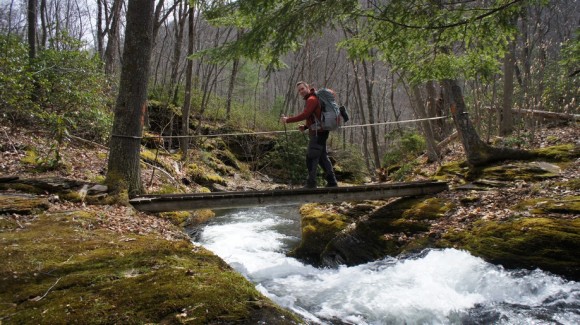
After being teased with views just out of sight for a while, the trail descends into another gorge. At the bottom is Slate Run (the creek, not the town). This was a pretty cool little area, with a few drive in campsites along the road. We took our time hiking through here, and ultimately stopped for a while near a small waterfall. Ryan wanted to jump in the water but had second thoughts after feeling the temperature. It was a nice day out now, with the sun shining and all, but still only in the low 50’s.
We were thinking about campsites now at this point but were still a mile or two away from our intended site. Our map shows a campsite at the junction of Red Run and an unnamed creek at the last possible point before the trail starts heading out of the gorge again. We were starting to see more people on the trail now so we were worried about the site being available, but we found the area to be empty. However, several other groups of hikers came down the trail after we set up camp, so we may have lucked out.

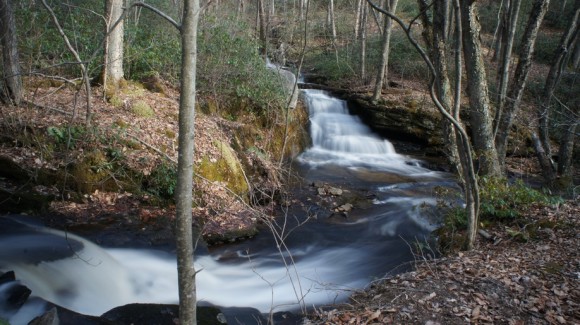
There were two smaller, but still photographable, waterfalls next to the campsite which was pretty cool. We got to camp a bit earlier today than previous days, and actually had time to hang out and relax. The sun was hitting one of the waterfalls just right and I decided to take out my tripod and play around with manual mode on my camera. Ryan was off doing much of the same on his own, and that’s how we spent the afternoon/evening.
Day 4- Saturday April 19th, 2014
Miles Hiked – 7.3
Route – Red Run campsite to Slate Run trialhead
Like day 2, as soon as we hit the trail in the morning we were faced with a big climb. This one is the last of the trip, but always hard in the morning. At least it warms up the body quickly!
After reaching the top of the 600’+ climb, we were presented with a nice view of the gorge below. After marveling at the monotone brown for a while we moved on.
Much of the trail up here today was rather boring. There were only a few scenic vistas, the majority of the trail just passed through nondescript woods. Ryan had mentioned a mine that was alongside the trail coming up, but that proved to be uninteresting as well. There was no evidence of any opening, and even the dump around the mine was just the same slate rock as everywhere else along the trail.
The trail then proceeds to head downhill and towards the town of Slate Run. The trail here was an old road at one point, probably leading to the mine above. Then we passed an interesting outcrop of rocks marked by one of the most elaborate cairns I’ve ever seen. This thing was neatly constructed and huge. We dropped out packs and hung out in this area for a while, checking out the various areas tucked away behind a multitude of rock formations.

After leaving the rocky area behind, we saw a snake on the trail. Not sure what kind but he slithered away and we let him be. Thankfully we saw that snake because otherwise, we didn’t see crap for wildlife besides the deer yesterday. As the trail dropped in elevation even more, Pine Creek and the town of Slate Run is visible through the trees. I wish the trees would clear for a view at some point but they didn’t.
Once we got down off the hill, we had one more obstacle to face before reaching the car. We still needed to ford Slate Run, which was a decent sized creek due to the recent rains. There is no bridge here which is surprising given the popularity and condition of the rest of the trail. However, I found it to be knee deep at the most, without scouting for a better crossing location.

After crossing the stream, we passed some really beautiful sections of water before the trail heads up the banks. Definitely some good looking fishing holes right here, but there were also signs for fly fishing only and I believe catch and release only in one spot as well. When we made it back to the car, there were at least 10 other vehicles parked here. We saw a few guys with fly fishing gear, not sure if the rest were here to hike or what. Either way, we were glad to be back at the car and ready for some hot food!
Final Thoughts
I liked this hike, but it would have been a whole lot nicer if we had done it when everything was in bloom. I’m glad I didn’t bring my fishing gear, there really wasn’t any good spots along much of the streams except where the trail intersects Slate Run. Those spots were near the bridge on the northern crossing and where we forded the creek right before making it back to the car. There were a lot of roads, cabins, and other signs of human activity here and there along large portions of the trail. However, there were a couple of views when up on top of the gorge where I couldn’t see anything but trees.
It was nice to be able to get away for a few days and do this hike, even if it wasn’t on par with my trips out west. I was dealing with a lot of stress at the time and getting my mind off things for a few days was nice. Hiking really is great for that. No matter what I am dealing with “back in the world”, none of it matters out here.
As always, questions and comments are welcome!
If you found my trip report useful, please don’t hesitate to leave a comment! Alternatively, if you feel you have any information you’d like to share with others regarding this hike, please feel free to leave that below in a comment as well.
[tcb_comment_count]Elk Park/Needleton Loop – Weminuche Wilderness, CO Aug 2013 (Backpacking Trip Report)
Weminuche Wilderness, CO – Elk Park/Needleton Loop Hike
Complete Weminuche Wilderness Photo Gallery | Weminuche HD Video
- Trail Name – Elk Park/Needleton Loop
- Location – Weminuche Wilderness in the San Juan National Forest, CO
- Park Type – National Forest, Wilderness Area
- Fees & Permits – None
- Length Of Time Hiked – 6 days, 5 nights
- Trail Type – Semi loop – Train drops you off and picks you up
- Miles Hiked – 48
- Trail Difficulty – 8
- Fires Allowed – Yes (No fires in Chicago Basin or Needleton drainage)
[sgpx gpx=”/wp-content/uploads/gpx/WeminucheRouteHiked.gpx”]
Elk Park to Needleton Loop Hike Map – Weminuche Wilderness Maps
Here’s an overview map of the Weminuche Wilderness, which includes trailhead locations.
Here’s my caltopo map of the Elk Park/Needleton hike:
Fees & Permits
There are no fees or permits needed to hike or camp in the Weminuche Wilderness. However, to hike this trail as I did, you will need to secure a train reservation through the Durango & Silverton Narrow Gauge Railroad. This was $90 each person for a round trip ticket, plus $10 to each to haul your backpack. Not cheap by any means, but it was a cool way to enter and leave the wilderness.
Day 1 – Monday August 5th, 2013
Miles Hiked – 5.4
Route – Elk Park train stop to camp along Elk Creek at ~10,300ft
Finally, it was time to start this hike. We’d been in Colorado a week now, doing other cool stuff like the Colorado National Monument, Mesa Verde National Park, Denver & Boulder, Rocky Mountain National Park, Telluride, etc. This time, we were sure to be acclimated to the elevation. Lisa had a bit of trouble last year in the Maroon Bells when we hiked the Four Pass Loop, and I may have had a slight headache that first day as well. Not this time though! (more…)
Mogollon Mountains Backpacking – Gila Wilderness, NM – May 2012
Gila Wilderness, NM – Mogollon Mountains Backpacking Overview
Complete Gila Wilderness Photo Gallery | Gila Wilderness HD Video
- Location – Mogollon Mountains in the Gila Wilderness, New Mexico
- Park – Gila National Forest
- Trail Hiked – Custom Route
- Miles Driven To Destination – 3700 miles roundtrip
- Length Of Time Hiked – 6 days, 5 nights
- Trail Type – Loop
- Miles Hiked – 45
- Trail Difficulty – 8/10
- Fires Allowed – Yes
When I went to order topographical maps to use in the Gila Wilderness, I realized that I’d actually need to buy 6 maps to cover all the quads that my route was passing through. Instead, I ordered a custom printed map that covers only the area I will be hiking in, allowing you to pick sections of quads and print them. This is what I ordered for this trip:
If you plan on hiking the same route as me, you can order the map I bought here: Mogollon Mountains Topo Map
Here’s another map of my route, showing you where I camped and where the forest fire was (read about that later):

Soon after getting back from my hike in Big Bend National Park, TX I started planning a spring trip. I had my hopes set on somewhere mountainous, like Colorado or Northern New Mexico, specifically The Pecos Wilderness. However, the weather in May just doesn’t allow for snow-free access in those regions this time of year, so I either had to move farther south, or lower in elevation. The Truchas peaks, at 13,000 feet, would have been awesome… but I after checking snotel and word of mouth from those who’ve hiked it this time of year, I realized that early June is the earliest access to that region. However, I was told about the Gila Wilderness in Southwestern New Mexico. After a little research, I concluded that the Gila (pronounced hee-la) would be a perfect place for me to go at this time of the year.
The Gila Wilderness is part of the Gila National Forest, which is only separated from the Aldo Leopold Wilderness by one small 4×4 road. Combined, the two areas cover around 750,000 acres. I chose the Mogollon Mountains region of the Gila Wilderness, which is on the extreme West side of the park, close to Arizona. The temperature was forecast to be anywhere from 50-80 degrees during the day, depending on elevation, and around 35-65 at night. Temperature wise, I figured this would be perfect. May is also the driest time of year here, so I also figured that rain wouldn’t be a problem. The rivers should also be lower, making stream crossings easier. And, campfires are allowed as long is there is not an alert in place… check the Forest Service website here http://www.fs.usda.gov/alerts/gila/alerts-notices. There was no alert or fire ban in place when I went, however, lightning caused 2 fires in the Mogollon Mountains while I was in the park. This fire has now grown to be the largest wildfire in New Mexico’s history! We had some excellent views of the fire from the top of Grouse Mountain, of which I have some nice pictures and video, but I’ll get into that later.
Getting There
With an 1,850 mile drive ahead of me, I left home in southeastern Michigan at 7:30am on Friday, May 11th and headed for Springfield, IL to pick up my hiking partner. I made it all the way to Springfield around 2:30pm on one tank of gas, 462 miles. We promptly ran out of gas looking for a gas station, but luckily I plan ahead for most things, and it was as simple as getting the gas can out of the trunk which I filled ahead of time, just in case. This got us to the next gas station, and we drove until 11:30pm. We stopped at a crappy Budget Inn type of motel in Pratt, Kansas and got the best room $55 could buy.
The next morning we got on the road at 7:30am, and began the long boring drive through Kansas. At this point, we figured we’d arrive at the trailhead at around 6pm today. We were making such good time that we had a decision to make: stop in the last town that has a hotel (which looked like Socorro on the map, which was a 3 hour drive from our destination) and head to the trailhead in the morning, or camp at/near the trailhead somewhere and leave early morning to hit the trail. We choose to drive all the way to the trailhead, and ended up making it there around 7pm. We camped in a small campground on highway 180, literally right across the street from the entrance to the Whitewater Picnic Area. There is NO CAMPING at the Whitewater Picnic Area, it’s day use only. This is where you park your car, which will run you a whopping $3/day. Not bad since there are no other fees or permits required to hike or camp in the Gila Wilderness. Just park your car and go.
Notes
There are 2 main trailheads in the Gila Wilderness and several smaller ones. For the Mogollon Mountains region, the Whitewater Picnic Area is the most popular. The other is the Gila Wilderness visitor center on the East side of the park, which is at the end of State Hwy 527 (also called Hwy 15), which is near the Cliff Dwellings. There are several other trailheads along Bursum Rd on the North side of the park, and many more. These are usually marked on a topographical map, which you should have if you are hiking here anyways.
Day 1 – May 13th, 2012
We hit the trail around 8:30am on Sunday May 13th.The first mile of our hike was on the Catwalk trail, a developed area with paved trails and a metal catwalk that allows you to walk over the rugged terrain without getting your feet wet. This area was pretty cool and easy to see why it was a popular day hike. At the terminus of the Catwalk trail, we thought we’d be at the junction of the Whitewater Trail #207 and the South Fork Trail #212. Instead, the end of the Catwalk Trail becomes the beginning of the Whitewater Trail, and we had about another mile to go before we reach the above junction.
Our plan was pretty loosely formed at this point… I had picked a point on my topographic map that we determined to be about 10.5 miles away where the Golden Link Trail crosses Big Dry Creek. We would hike the Catwalk trail to the Whitewater trail, to the South Fork Trail, which later becomes the Golden link trail after you pass Camp Creek Saddle. Our plan was to hike to this point today, set up a basecamp, and spend the next 1-2 days exploring Big Dry Creek, Spider Creek, and Spruce Creek as there are numerous waterfalls in this area. I found an awesome site that tells you about all of the waterfalls in New Mexico, including many in the Gila Wilderness. It has pictures, descriptions and even GPS coordinates of the falls. It’s http://www.dougscottart.com/hobbies/waterfalls.htm and the falls in the Gila Wilderness are numbered K4 – L3, just to save you some time plotting them on the map. After this, we had no plan… to be determined as we go!
After leaving the Catwalk trail behind, we saw a handful of other hikers, maybe 4 between 2 groups before hitting the South Fork Trail. At this point, my hiking partner, Dan, began to slow down quite a bit. It got got to the point where we’d hike for 3 or 4 minutes and then take a 2 minute break. I was getting agitated with the stop and go pace we had adopted, and I told Dan we need to pick up the pace. His response was “What’s the rush? We have until 9pm.” This was Dan’s 2nd hike ever, and he thinks it’s not going to be a big deal hiking until complete darkness and then trying to find a campsite. He was totally fine with this. Well, not me. “I’d rather cover my mileage in as few hours as possible, and have the rest of the day to explore and relax as I see fit,” I said. Dan snapped, “Well, I don’t want to be rushed. Go ahead and get to the campsite then, I’ll get there.” Even though I know I shouldn’t have, I left Dan behind and continued on the trail at my own pace. We both had a map and knew where to meet, and as long as he followed the trail, we’d meet up. That was my thinking at that point.
Hiking solo, I pushed on for another hour and a half before stopping for lunch. A pastrami and cheese sandwich was on the menu, which I ate as I air dried my feet near the creek. They were already soaking wet with sweat, but were dry after 25 minutes. I figured after 25 minutes, maybe Dan would have caught up to me, but he didn’t. I hit the trail again, and was really enjoying the hike along he South Fork Whitewater Creek. The canyons were very steep on both sides, and the trail criss-crossed the river many times. It was easy to hop rocks across the river in nearly every crossing because the water level was lower, so that made it easier. It was about 30 minutes after eating lunch that I began to feel like crap. I think t was a combination of dehydration and maybe that sandwich. I know I didn’t drink enough during the car ride, didn’t want to stop every hour to take a piss. So, I found a comfortable spot on the rocks beside the South Fork Whitewater Creek and laid down for 45 minutes. I hit the trail again once I felt a little better, but still no sign of Dan. At this point I thought he may have turned around and went back to the car, and planned on camping across the street at the campground we stayed at the night before. Or, he’s just incredibly slow!
I now realized that I was not going to make it to our planned destination today. My new plan was to continue hiking the South Fork Trail until I passed the junction of the Little Whitewater Trail/East Fork Trail, and start looking for a campsite. After passing the above junction, I found a campsite a few hundred yards down the trail. It was within view of the trail, so if Dan was hiking by here, he’d definitely see me. By nightfall, I still hasn’t seen him. Now, I though for sure he’d turned around. My dilemma was to continue without him or to turn around and make sure he was ok. Knowing he had everything he needed to get by on his own, I decided that I’ve driven too far to call off the hike. I really enjoyed my only prior solo hike, a 25 mile loop through the Porcupine Mountains in the Upper Peninsula of Michigan in October of 2011 and did not mind at all doing another 5 days here by myself if need be. With that in mind, I started a fire and cooked some italian sausages that I kept frozen (well, partially frozen) in my cooler on the car ride here. I always opt for something good my first night such as a burger or brats, since they keep just fine for 1-2 days if kept frozen until you hit the trail… and DAMN, were they delicious!
Day 2 – May 14th, 2012
After filtering some water and refilling my water supply, a 2L Osprey hydration bladder and a 1L water bottle, I hit the trail at 8am. I was making good time and made it to Camp Creek Saddle about 1.5 hours later. I stopped and dropped my pack to climb a small hill to get a view of my surroundings and snap some pictures, then proceeded down the Golden Link Trail towards yesterday’s original destination at the junction of the Golden Link Trail and Big Dry Creek. Little did I know that this was going to be an all day adventure… what was supposed to only be a hike of 3 miles max ended up taking me the entire day! The Golden Link Trail was very difficult to follow in the section Southeast of Camp Creek Saddle, and I was constantly losing the trail and trying to find it again. If the trail was on one of the hillsides next to Camp Creek, I didn’t see it. They were pretty steep anyways, so I opted to hop down into Camp Creek and hike through the river bed. This was very slow going due to huge boulders, flash flood debris, and tons of downed trees. I knew the trail followed the creek, so I wasn’t too worried about finding it again, which I eventually did.
Where the Golden Link Trail crosses Spider Creek, I dropped my pack to air out my feet and have a snack. Knowing that there are a few waterfalls farther up Spider Creek, I hiked upstream for about 15 minutes. I had planned on exploring Big Dry Creek and Spruce Creek the next day, without my pack, so I decided to turn around and cover more ground today. Now, this is where things began to get really interesting for me. After crossing Spider Creek, I could not find the Golden Link Trail for the life of me. There were cairns stacked on the other side of Spider Creek, so I hopped up there to look for the trail but simply could not find it. I followed several little foot paths on this steep hillside, only to find dead ends and dense shrubbery. I spent about an hour looking for this trail with no luck.I decided to follow Spider Creek downstream to the point where it meets Big Dry Creek, and this point was only a half mile or so from where I was planning on meeting up with Dan.
I really enjoyed following Spider Creek as it felt very remote. There was no trail here, just following the river. Actually, hiking through it in spots. The canyon walls around me got steeper as I progressed downstream until eventually I was stopped in my tracks by a waterfall that appeared to be 40-60 feet. This was Lower Spider Falls. From my topographical map, I could see this as a potential problem before I began hiking this way, but couldn’t be sure if it was passable of not. Well, it was definitely not passable as sheer cliffs came together in one small point for the water to flow over the edge. I had no choice but to backtrack the way I came. I hiked about halfway back to the Golden Link Trail before finding an area that seemed to have the “least steep” slope, and decided to just hike to the top of the hill that towers over Spider Creek, as I knew the Golden Link Trail was on top of that hill somewhere. If I hike straight up this thing, I have to hit the trail. This was a bitch… having a 50lb pack and hiking through dense vegetation was not helping. I don’t remember how long this took, maybe 45 minutes or an hour, but it was a 700 ft elevation gain. I tried to follow little game trails where I could, but no matter which way I went I was getting scratched up by all the thorn bushes. Finally, near the top of the ridge I hit the Golden Link Trail and was back on track.
By this time, it was mid to late afternoon. The trail was now descending into Big Dry Canyon via steep switchbacks. This section of the trail was very beautiful, with excellent views of sheer canyon walls all around. I eventually made my way down to Big Dry Creek, which is where Dan and I planned on meeting up the night before. I was planning on camping here tonight regardless, but to my surprise, Dan was already there and had set up his camp just a few minutes earlier. Honestly, we were both surprised to see each other, as he thought I was way ahead of him, and I thought he’d gone back to the car. Although Dan had reached our destination before I had, he did not lose the trail as I did and was hiking the whole day to get to this point.
From the topographical map, this area looked like it would be a good place to camp as the banks of the river looked wide. In reality though, like everywhere else in the Mogollon Mountains, there were no flat areas to camp, at least not like I had expected. Dan found a small area on the hillside that was just large enough to fit his tent, while I set mine up on a large, semi-flat rock that sat about 8 feet above Big Dry Creek. However, it was not as flat as it looked and no matter which way I positioned the tent, it was pretty slanted. I found some flat rocks to put underneath my tent to level it out, and it was almost comfortable. Good enough, now it’s time to start thinking about a fire. There was a bit of an “island” in the center of the creek with just rocks and gravel, and this is where we made our fire.
We began to plan out our next move on the map as we ate and enjoyed the fire. Tomorrow, we’d stick to our original plan, which was to have our 3rd day as an “exploration day”. The plan was to follow Big Dry Creek and find some waterfalls, and explore off trail.
Day 3 – May 15th, 2012
We woke up around 7am, ate breakfast, and headed up the Big Dry Creek by 8am. I chose to wear my hiking boots while exploring upstream over my water shoes. Most of the time we were hoping rocks and hiking right through the creek itself because the banks were either too steep or covered with thick vegetation. As rocky as this creek was, my feet were sore as hell from trekking a 1/4 mile in them the night before, so I opted for comfort. I’m glad I did, because I don’t think my feet could have taken that kind of beating for an entire day. Sure, my boots got soaked as they were occasionally dunked in the water halfway up my shins, but at the end of the day it was a good decision. Dan chose to wear his Vibram FiveFinger shoes, which were a lot more sturdy than my water shoes. Although his feet were sore at the end of the day, I know they provided a lot more protection than my cheapo Walmart water shoes would have. Maybe I’ll pick up a pair before my next trip.
Hiking up Big Dry Creek was awesome. We encountered several smaller sized waterfalls, with the largest being around 15 feet or so. The farther we went upstream, the more rugged the terrain became. Every so often, we’d run into something we weren’t sure we’d be able to get around, such as some extremely large boulders or steep canyon walls. At one point we had to squeeze through a narrow opening at the end of a small cave to continue up river. We took our time and enjoyed this relaxing day, because tomorrow we’ll have to hike up to Black Mountain, a 4,000 ft elevation gain from our current campsite.
We turned around sometime in the early afternoon and headed back. We stopped at one of the waterfalls we passed earlier in the day and were tempted to swim in the pool at it’s base. We were both filthy from 3 days of backcountry travel, and although the water was freezing, the warm weather and beauty of the waterfall proved to be irresistible. Dan jumped first after taking a few minutes to build up the courage. As soon as he resurfaced, he quickly swam ashore. I laughed at his reaction to the icy water, but it was my turn next. My feet hit bottom, and I guessed it was around 8 feet deep. I lasted no longer than Dan, and instantly got out. That water was numbingly cold, but it felt great to be somewhat “clean” again.
We got back to camp in the late afternoon, and after a quick break, we headed downstream on the Big Dry Creek. I wanted to get to the bottom of Lower Spider Falls, the waterfall that stopped me in my tracks the day earlier. I had scouted this area earlier, and only made it a few hundred feet from our camp before the canyon walls narrowed and the water dumped into a pool that appeared to be 6 feet deep or so, even at the edges. We found an area on the hillside that looked manageable to climb up and go over the canyon wall, but it was steep. We made it over and only a few hundred feet downstream, we were again stopped by a similar situation. Another deep pool with no way around it. I found another way around, but this hill was steeper and much taller than the last. It was maybe 200ft up, and it was getting a bit hairy. I used a stick as an improvised “ice axe” to keep from sliding down which really helped. After making it to the top of this ridge, we could see Lower Spider Falls. However, the ridge we were on appeared to get very steep and we didn’t see an easy way down to the river again. It was around 6:30 at this point and we decided to turn around.
For dinner I thought I’d try one of those freeze-dried meals. It was the Natural High brand, honey lime chicken. After pouring boiling into the bag, it says to wait 10-12 minutes or so. Mine was in there for a half hour or so, next to the fire keeping it warm, and it never absorbed all the water. Yuk. Dan, however, was really impressed with his Mountain House meals, especially the lasagna. We sat by the fire and ate some sour patch kids and watched the stars for a while before turning in around 10:30.
Day 4 – May 16th, 2012
Today is the day Dan has been dreading. A 4,000ft elevation gain up to Black Mountain on the Golden Link Trail, and then we’ll push on to Spruce Creek Saddle via the Holt Apache Trail. After hiking for about a half hour, we passed an older man with his dogs camping alongside the trail. This was the only person we saw out here our entire trip, beside people near the trailhead and along the Whitewater Trail. A little farther down the trail we passed the Golden Link Cabin. It’s always amazing to me seeing something like this in such a remote place. The next section of the trail offered some great views, but the switchback were relentless! We also found a old mine which was not blocked off, so we decided to explore inside. We dropped our packs and with our headlamps on, entered the mine and were only able to make it a few hundred feet in before it dead ended. There was nothing of interest to see in here so we hit the trail again.
By late morning, we made it to the point where the Golden Link Trail crosses Big Dry Creek. We had hoped to filter water here, but at this altitude, the creek was nothing more than a trickle. We were almost out of water and there wasn’t going to be any water for quite a while, so it as imperative to fill up here. We followed it “downstream” a ways and found a small pool that was suitable for drawing water from. After loading up on H2O and eating lunch, we headed for the top of Black Mountain. On our way up, we noticed a fire not far in the distance, over the next ridge. We did not see any flames, but plenty of white smoke billowing up from the forest and staying somewhat low in the valley. Because of it’s small size, I thought it may have been a controlled burn. We moved on eventually made it to the summit, but we were sorely disappointed to find that there was no view as it was blocked by thick tree cover. Nothing to do now but push on to Spruce Creek Saddle. Now on the Holt Apache Trail, the terrain was not as steep which was a nice break. We hiked another hour or so before reaching our destination. Camp Creek Saddle is a large open meadow, a welcome sight in the Gila. Everywhere we’ve been so far was steep, rocky, and covered with thick fauna. Although we were not near a water source, there was a large fire pit area and plenty of firewood at hand.
Although we were a good ways away from the fire we saw earlier, it was still on my mind. I turned on my cell phone and was surprised to have signal, albeit only one bar. FYI, I have Sprint. I was able to search google for “gila fire” and the first result was from the forest service’s website, and in the description it mentioned a prescribed burn scheduled for May 9th that was postponed. I tried to click on it to read more but apparently I did not have “enough signal”, as the page would not load. So, I optimistically assumed that this fire was a controlled burn. This was comforting and helped us sleep a little better.
Day 5 – May 17th, 2012
Today we will hike the Holt Apache Trail to Spider Saddle, then take the Deloche Trail through Winn Canyon and finally to the Whitewater Creek Trail. This day was going to be almost all downhill, which was a relief after a hard day yesterday. We would also cover more ground than any other day, 13.8 miles.
I woke up at 6am as I have been doing most days on this trip. Like every morning, I walk over to Dan’s tent and wake him up since he doesn’t have a watch with an alarm. And, like every morning, he says “Ok, I’m up”, but continues to sleep until I wake him again in a half hour. Eventually, we get moving and hike the Holt Apache towards Grouse Mountain. The topo shows a clearing near the summit, and we were hellbent on getting some mountaintop views one way or another. We dropped our packs on the trail, put on our Camelbaks, and hiked the 1 mile trail to the summit. The trail was difficult to follow after a certain point, and we ended up just bushwacking our way to the top. Even up here, there were remnants of an old cabin or mining operation. Pieces of metal bed frames and other objects littered the summit .
When we got to the top, we found ourselves on the edge of a cliff with a spectacular view of the Mogollon Mountains. We saw another forest fire burning in the valley below, which appeared to be in Lipsey canyon near Redstone Park along the Whitewater Trail. We spent a good hour up here scrambling down to various ledges to get pictures of ourselves and the fire below, eating lunch and relaxing. We even saw a helicopter flying through the smoke surveying the fire. Little did we know that this fire would grow into the largest fire in New Mexico state history! It’s still burning as of June 10th 2012 and is now 278,000 acres, or 434 square miles.
With a lot of ground to cover, we descended Grouse Mountain and jumped back on the Holt Apache. Shortly thereafter, we made a wrong turn and headed down a side trail to Nabours Spring instead of staying on the main trail. We were going down steep switchbacks for a while and eventually the trail just ended. We found ourselves on the side of a steep slop with a long way to go to the top. We stopped and I consulted my GPS and topo, and discovered our mistake. If we continue to head down, this will put us in a canyon with no trails and difficult terrain. Our only choice was to head back up the way we came. This probably set us back an hour, but it happens.
Back on track, we found the Deloche Trail and hiked towards Whitewater Creek. Somewhere along this trail, we both ran out of water. We didn’t have much farther until we reached the creek so we kept a good pace all the way there. Once we hit Whitewater, we began to see a steady flow of other hikers in the area. We passed a group of guys who had just left Redstone Park the day earlier, and asked us if we saw any rattlesnakes. We hadn’t but he said he’d seen three. With all the climbing we did, we were surprised to hear that, and lucky we hadn’t. We stopped along the creek to filter water and cool off. Down in the bottom of the canyons was much hotter than it was a day earlier at 10,000+ feet.
We were worn out now, but needed to cover a few more miles today so that our hike back to the car tomorrow morning is a short one. We hiked another 4.3 miles until we reached a campsite at the junction of the Whitewater Trail and South Fork Trail. After making camp, we filtered more water and tried to rehydrate. I had been pissing dark yellow for a while now and chugged a few liters over the course of the night. We had a fire going, but it was pretty warm out and we were too tired to keep it going. Our last night in the Gila Wilderness was pretty low key. We both passed out around 9:30 or so, maybe earlier.
Day 6 – May 18th, 2012
I don’t think it matters where you are, but for me, I am ready to go home on my last day anywhere. Today was no different, and our car was only a 2.8 mile hike away. I ate the last of my food for breakfast, something I’ve never done before. Usually, I pack a little too much food. In all fairness though, I did plan this trip for 5 days, but since we made such good time driving we were able to get a sixth day in. Now foodless, we hit the trail and embarked on what seemed like a much longer trek than when we hiked this stretch on our first day.
I hadn’t noticed hiking through here a few days earlier, but the the two sides of the canyon seemed to have very different types of ecosystems. One side was dry and looked like a desert, complete with cacti, while the other was forested and more lush looking. Looking back the way we came, we could see the smoke from the fire we saw earlier over the mountains.
Now on the Catwalk Trail, we passed an older couple on a day hike. They asked if that was my “small black car” in the parking lot, and I said yes. Apparently we were now the only ones here. When we finally reached the car, there was a forest ranger there who told us they had just sent in rangers on horseback to look for any hikers still out there, as they have closed all the trails in this area due to the fire. He told us that lightning caused the fires and that it was around 400 acres as of this morning.
After changing out of our dirty clothes and packing our gear into the car, we left the Whitewater Picnic area around 10:30am. On our way back home, we thought it might be cool to check out the Mogollon Ghost Town nearby. Supposedly the town was abandoned in the 1940’s when WWII broke out. After the price of silver plummeted, the town went under and it was abandoned. Heading north on hwy 180, make a right on Bursum Rd and go down about 10 miles. The drive in was more impressive than the ghost town though. The road was steep and had no guard rails, and had great views of the land below. There were farms that butt upp to this road that had no fences, and there were cows wandering in the road at times. Once we got into the “ghost town”, we saw at least 3 houses the were inhabited. One guy had his sprinkler on and had a green lawn. There was a small museum and some other types of shops here, among a few old buildings like a saloon. From what I had read though, it was supposed to be abandoned, but clearly it was not. We turned around and headed back to hwy 180 and began the long drive back home.
Final Thoughts
The Gila Wilderness is an ass-kicker! The terrain is rocky and rough everywhere you go. The trails can be difficult to follow, and it would be easy to get lost here without a GPS or a topographic map (and knowing how to use it). It’s a very rugged place with a real feeling of solitude everywhere except for the Catwalk and Whitewater Trails, as this is where all but one of the people we encountered were. There are opportunities abound for those wishing to explore off trail, but in doing so you will find that the terrain can be a real challenge. Although we were able to hop rocks across every stream we encountered, other times of the year you would certainly need water shoes for stream crossings.
All in all, it was an excellent trip and I would love to visit another area of the park someday. Hopefully the forest fire doesn’t destroy the entire park, as it would be a shame to see this beautiful place scarred on such a massive level. I’m glad I got to see it before (and during) the fire, and I hope they are able to contain it soon so that others can enjoy it in the future.
Complete Gila Wilderness Photo Gallery
As always, questions and comments are welcome!
If you found my trip report useful, please don’t hesitate to leave a comment! Alternatively, if you feel you have any information you’d like to share with others regarding this hike, please feel free to leave that below in a comment as well.
[tcb_comment_count]







